This time we're carrying a lot of luggage with us. We've been collecting all the necessary items throughout the year. At the last moment, we bought a cart, which greatly facilitated transporting this clutter "to the end of the world".
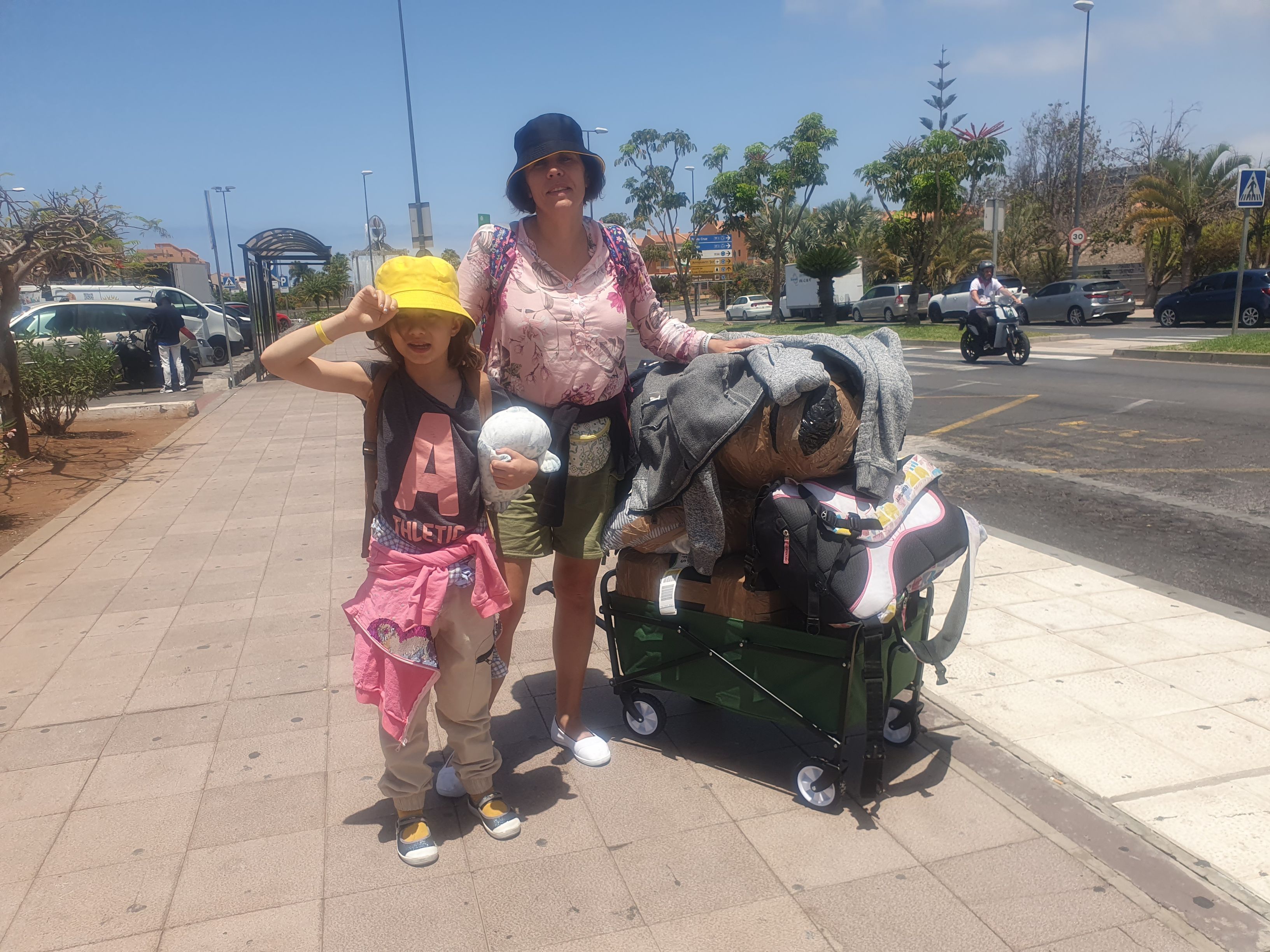
Mosquito nets, DEET-based repellents, some food items not available locally, emergency food rations, medicines, ropes, dehumidifiers, electronic equipment, comfortable carabiners and harness tapes, grab bag for the liferaft, and more.
Among other things, we finally acquired bedside lamps. In 2018, we sailed with Kamil's parents, who, as a thank you gift for the joint trip, decided to fund them for us. However, it turned out that in no country could we find any that we liked. The matter became urgent as we anticipated that on long Atlantic evenings, it would be pleasant to read something before sleep, so we brought suitable ones from Poland.
At the last moment, purchased a Yeti brand thermos from a pawnshop. New ones are expensive, but recommended. Later we have also learned that Esbit thermoses are good, but haven't tested them. All others we've tried leak after just one season from impacts when carried in the cockpit (even when secured in the locker). Perhaps, if we had a special holder for the thermos... This time, we will test a used Yeti.
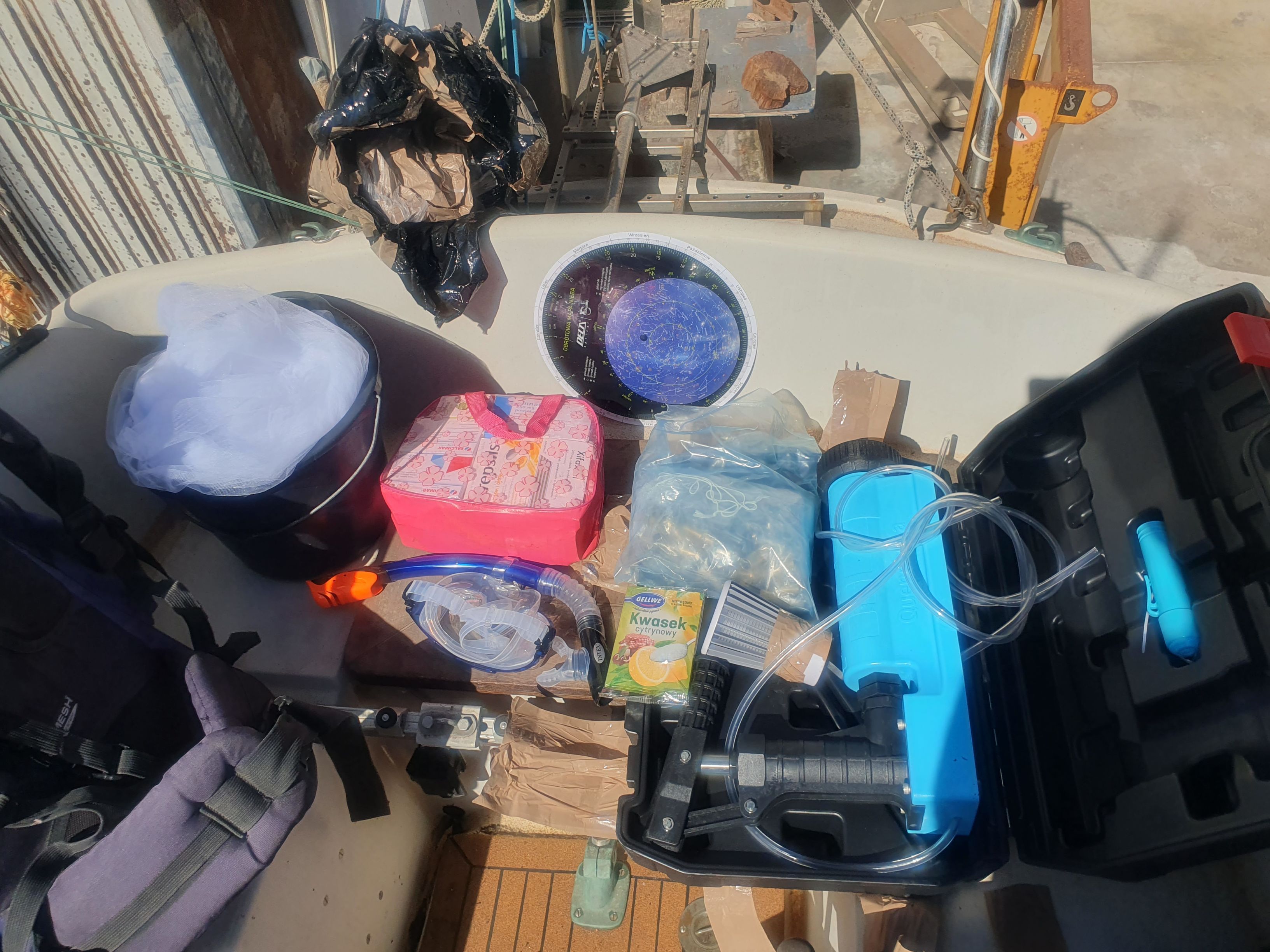

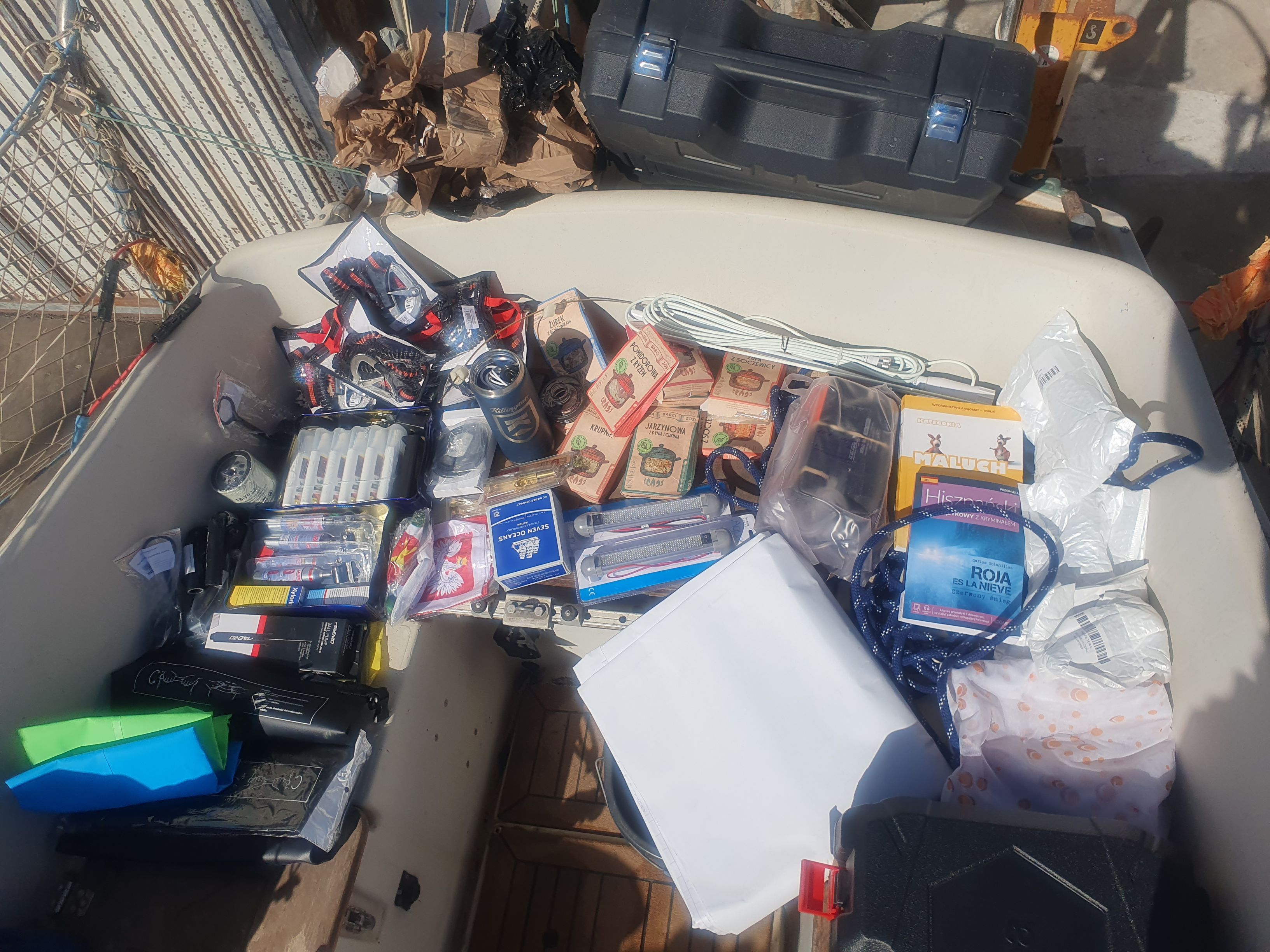
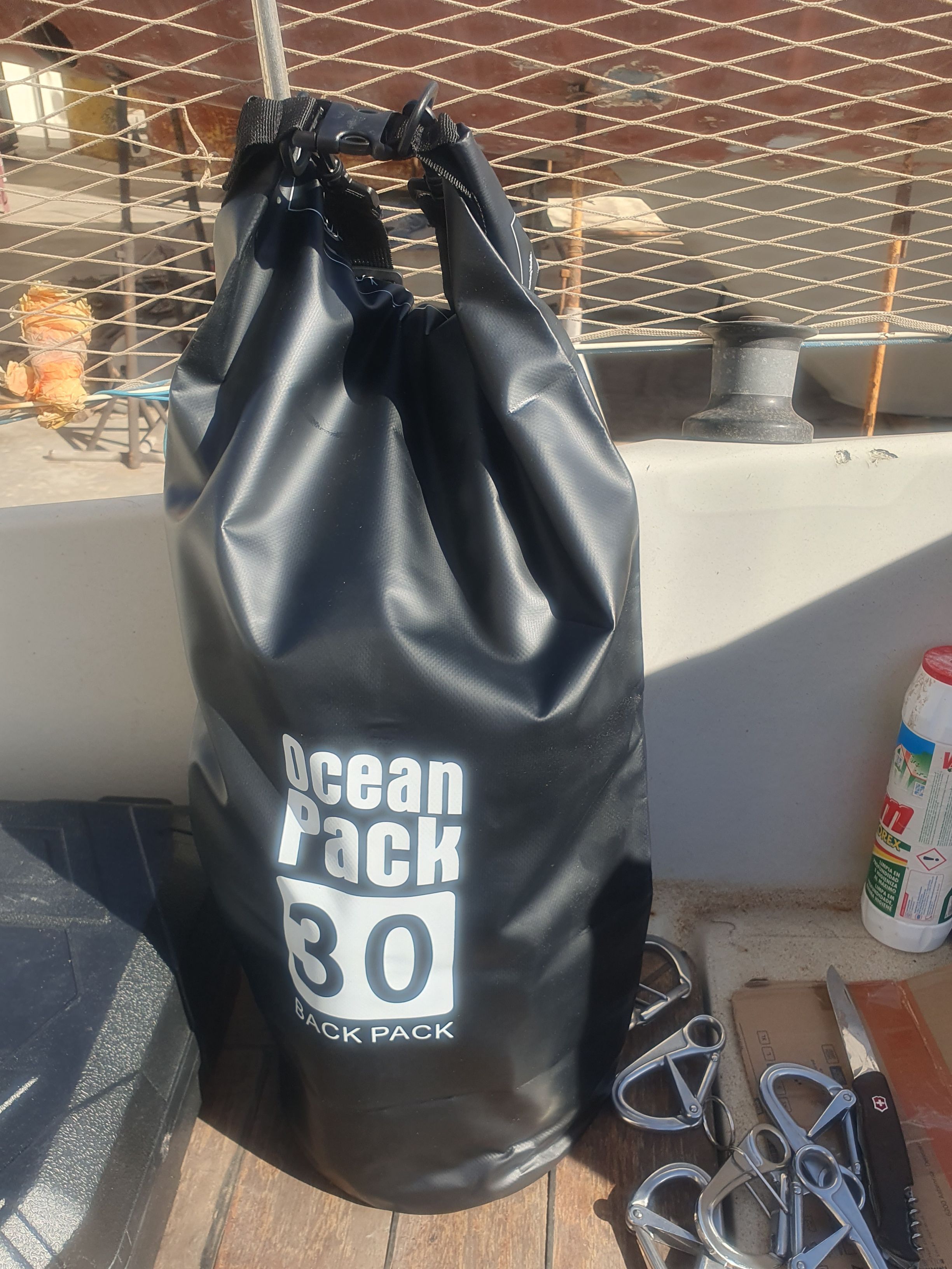
Of course, for such a long voyage, we make sauerkraut. There will be "classic Polish" cabbage, similarly prepared red cabbage, as well as "our version of kimchi." For kimchi, we can't blend a sauce with ginger, onion, and garlic, but it tastes similar when we mix all the ingredients finely chopped.
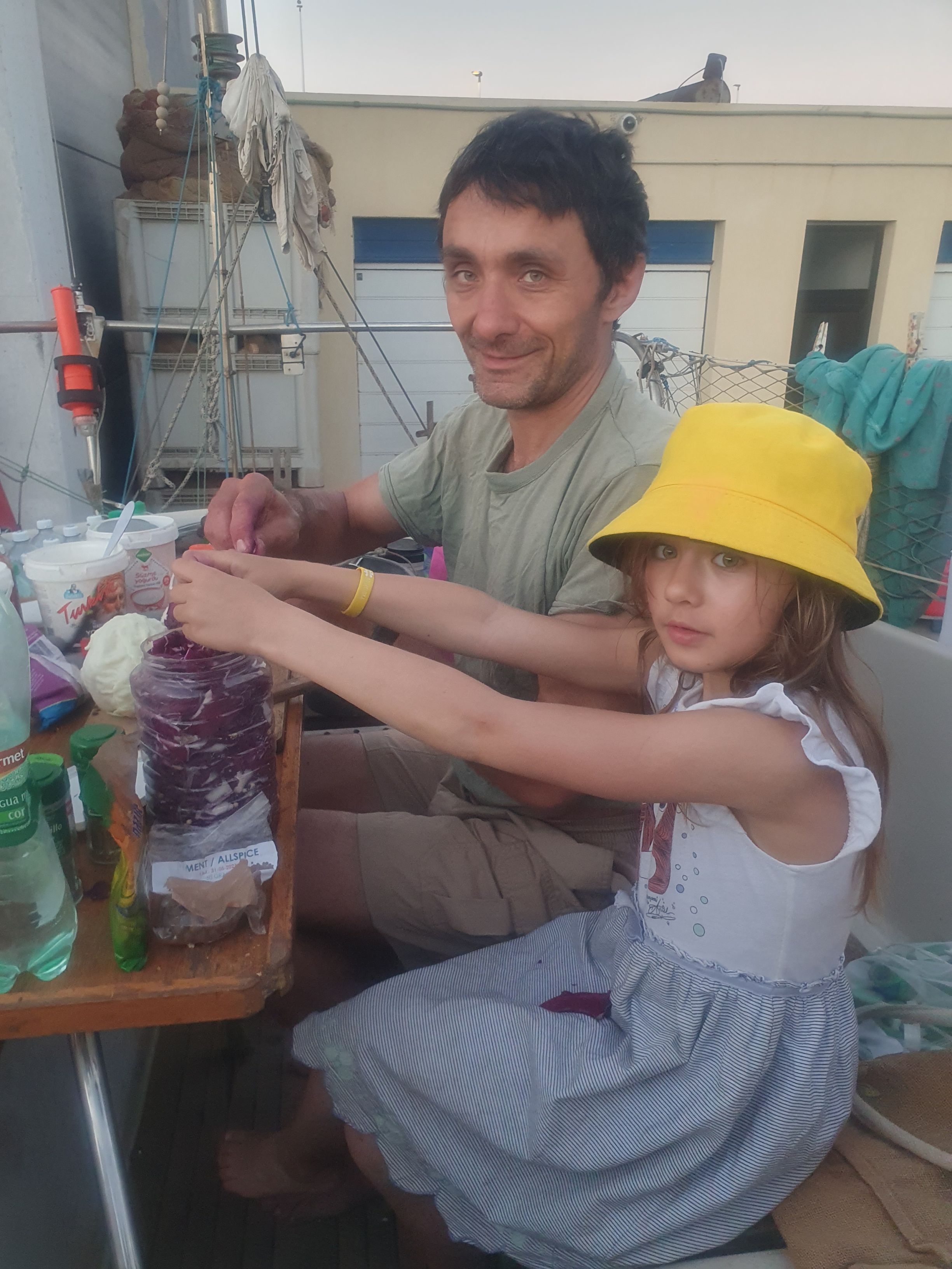
This year we bought colorful sheets from street vendors in Tenerife (we liked them already the year before). In the tropics, they should be more useful than our old sleeping bags from Denmark. They allow, among other things, to cover oneself from the sun.
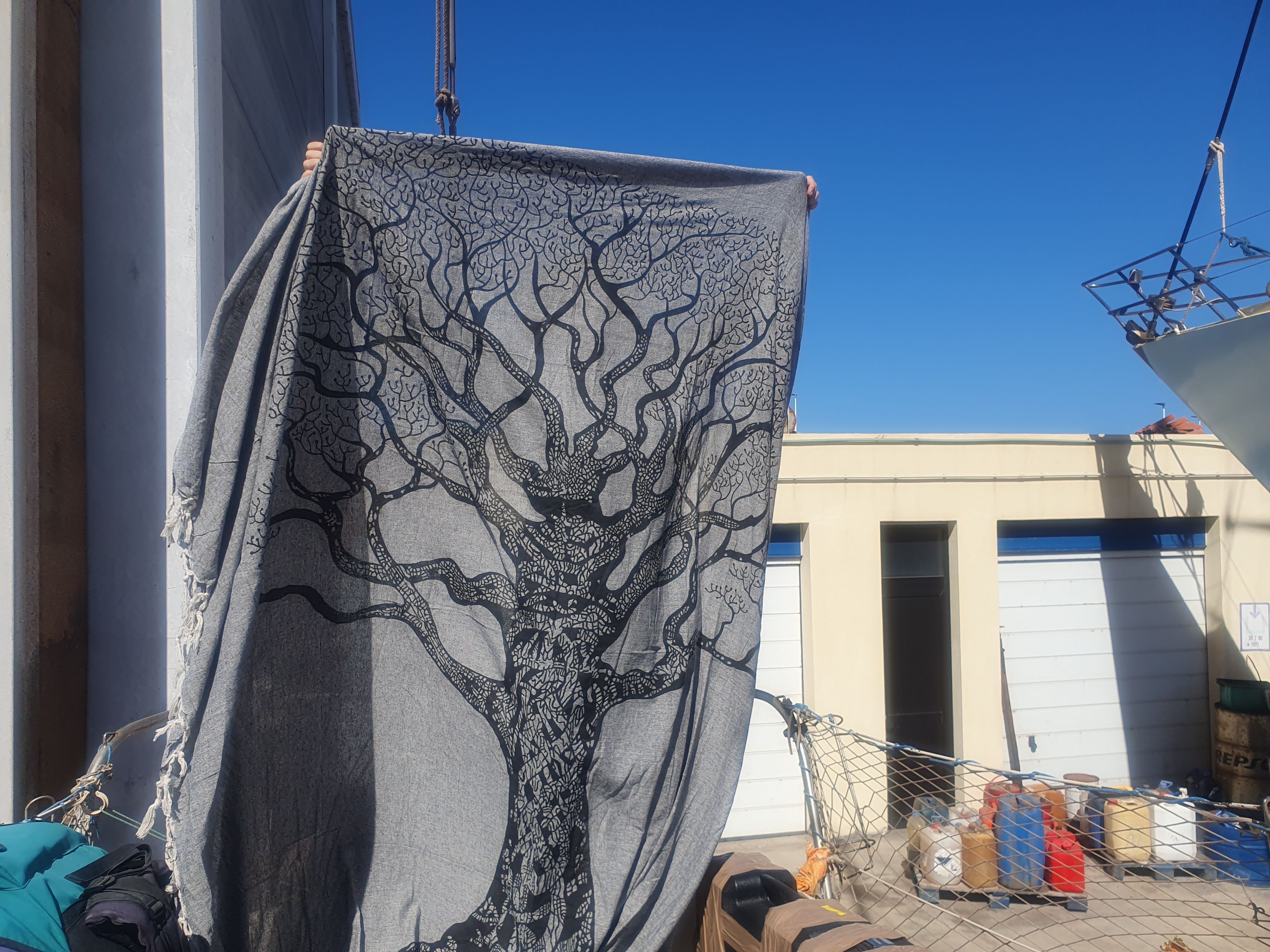

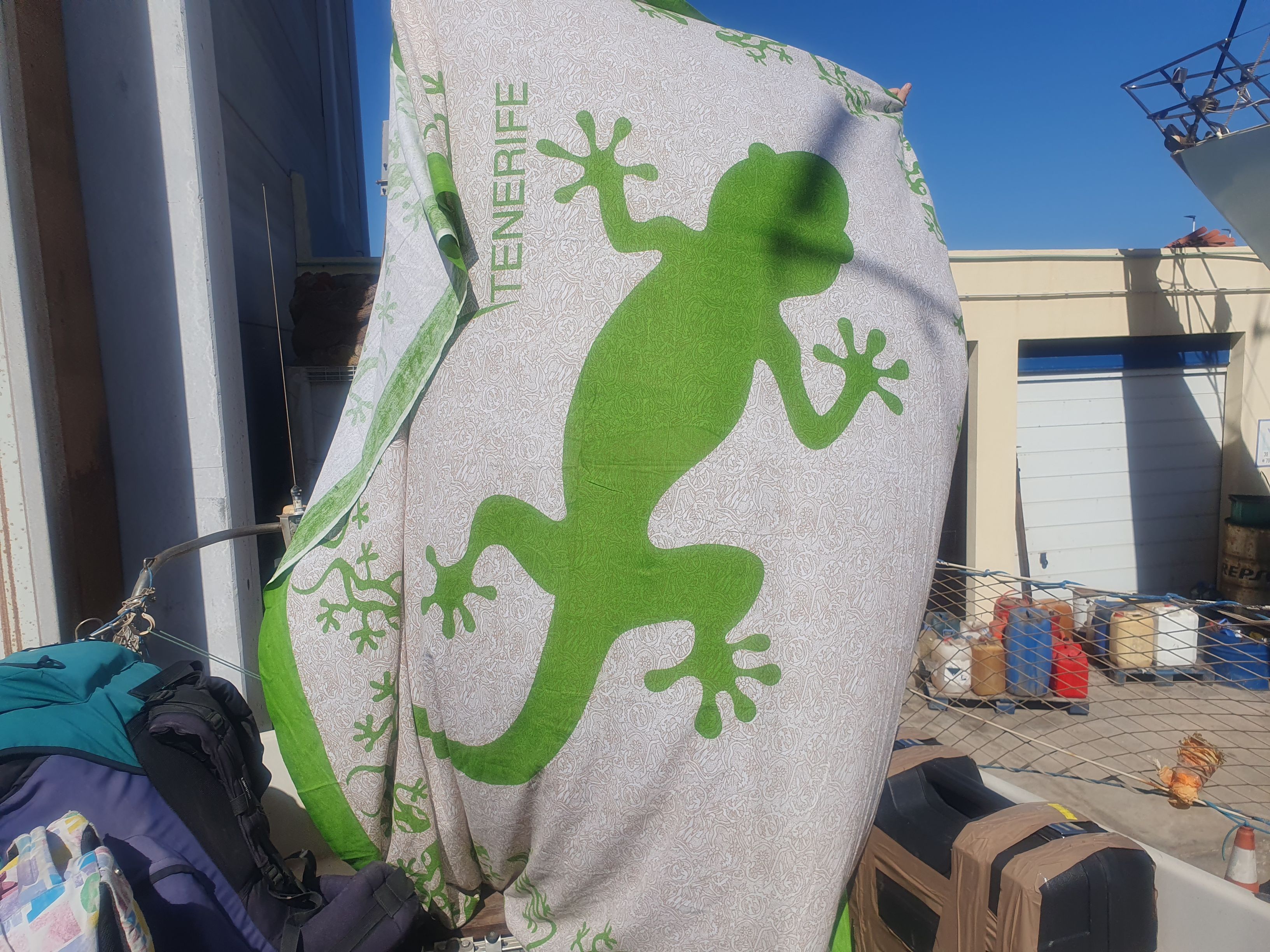
Finally, we launch and wash the yacht. A year earlier, we bought a stainless steel chain at a "ferrateria" in Valverde. It could potentially be useful for securing the yacht for a longer period on a buoy in Suriname. However, it is already proving very useful here, as we can park for a few days in the crane basin, where the sharp quay, tides, and constant water movement greatly damage the moorings.
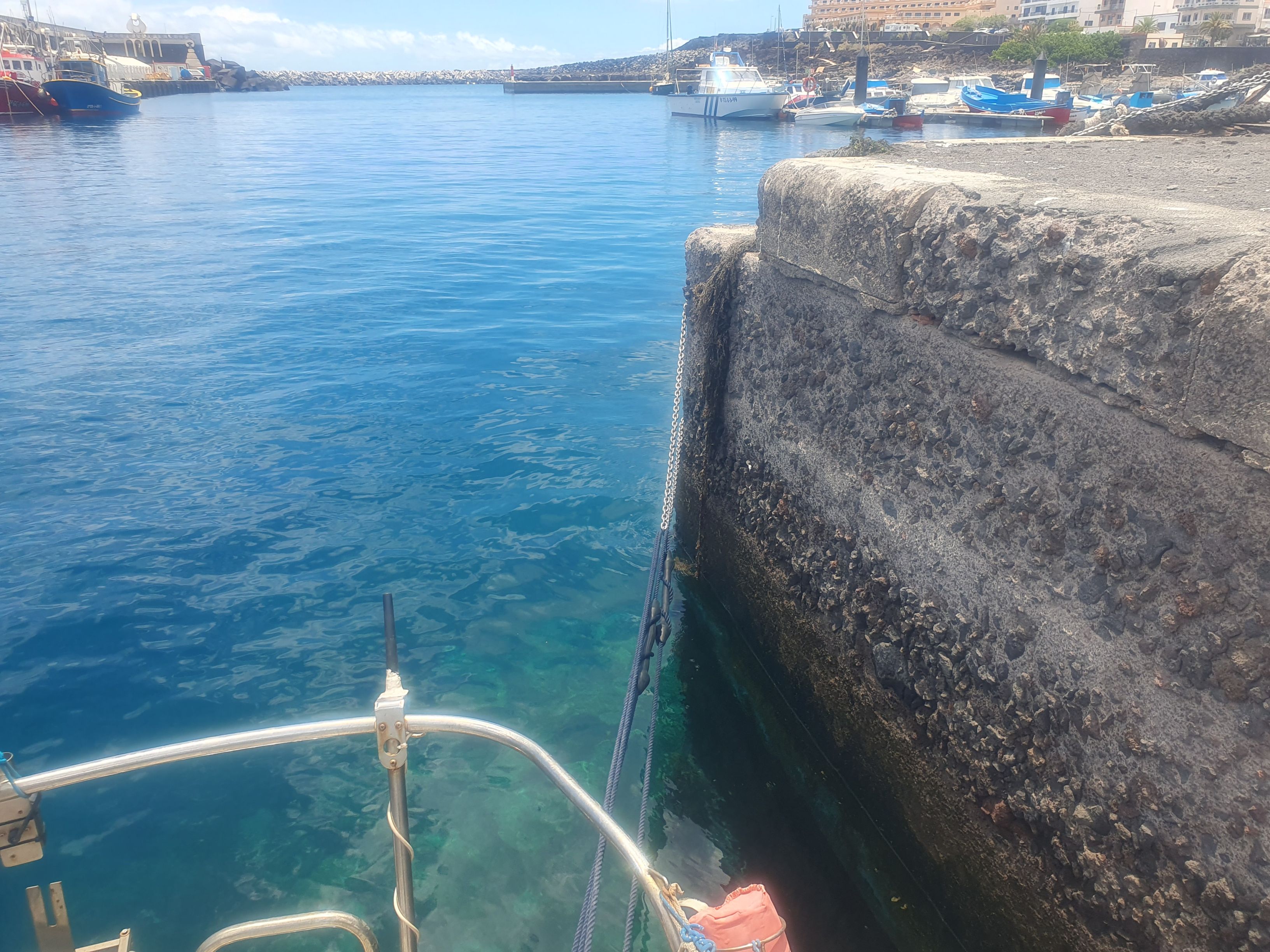
Then we bring in more supplies from the local store. Once again, our new luggage cart makes everything much easier.
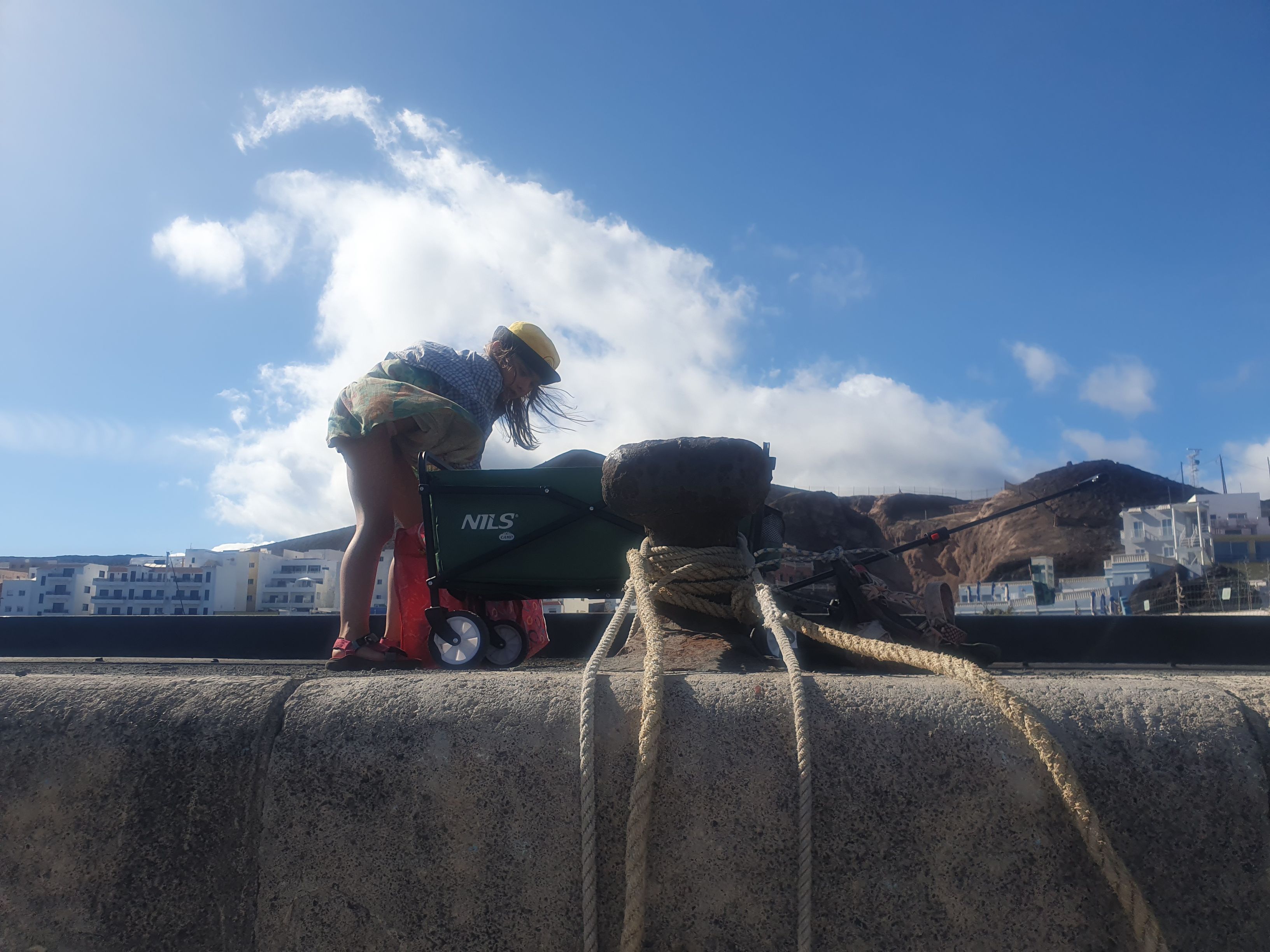

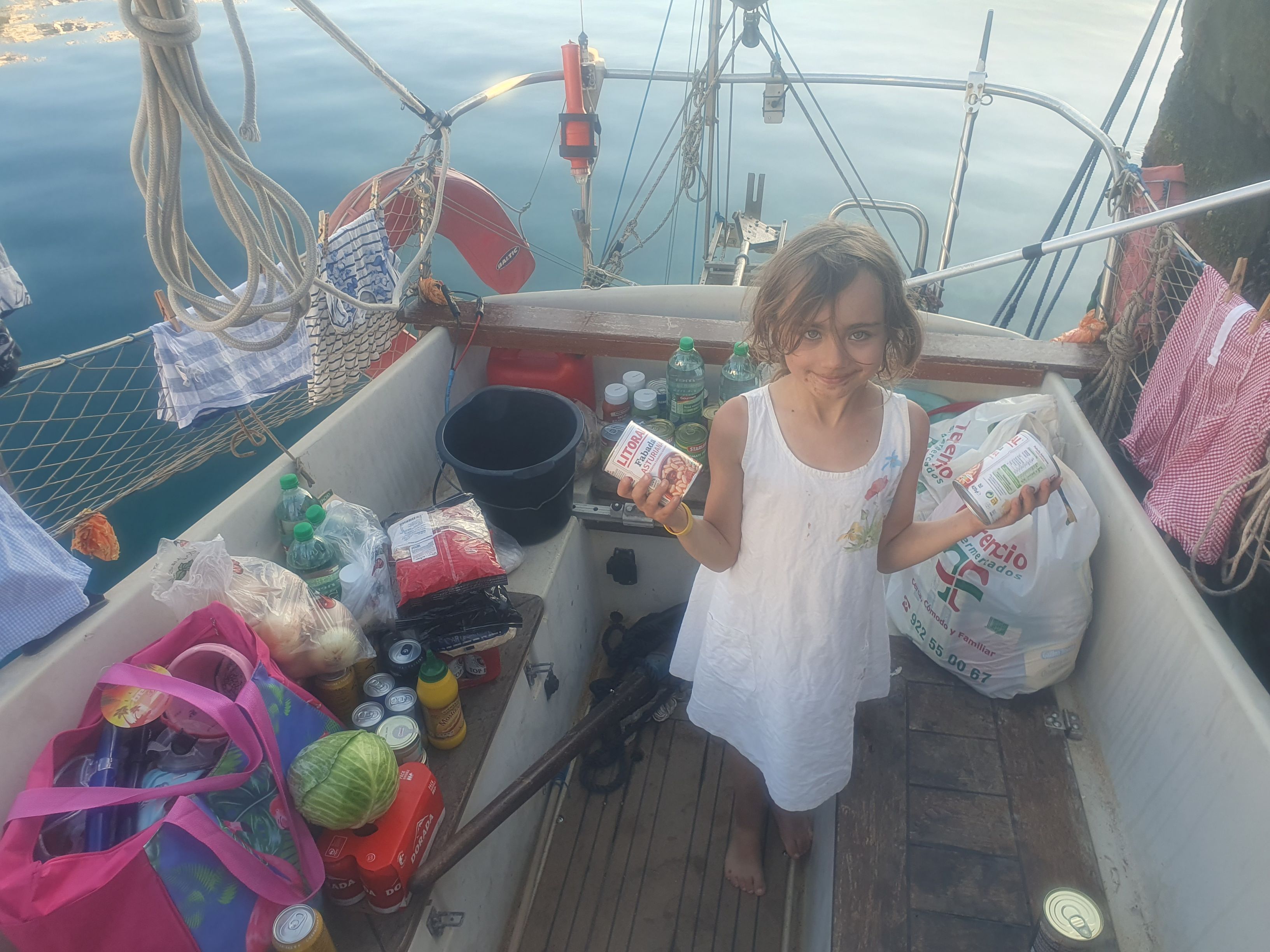
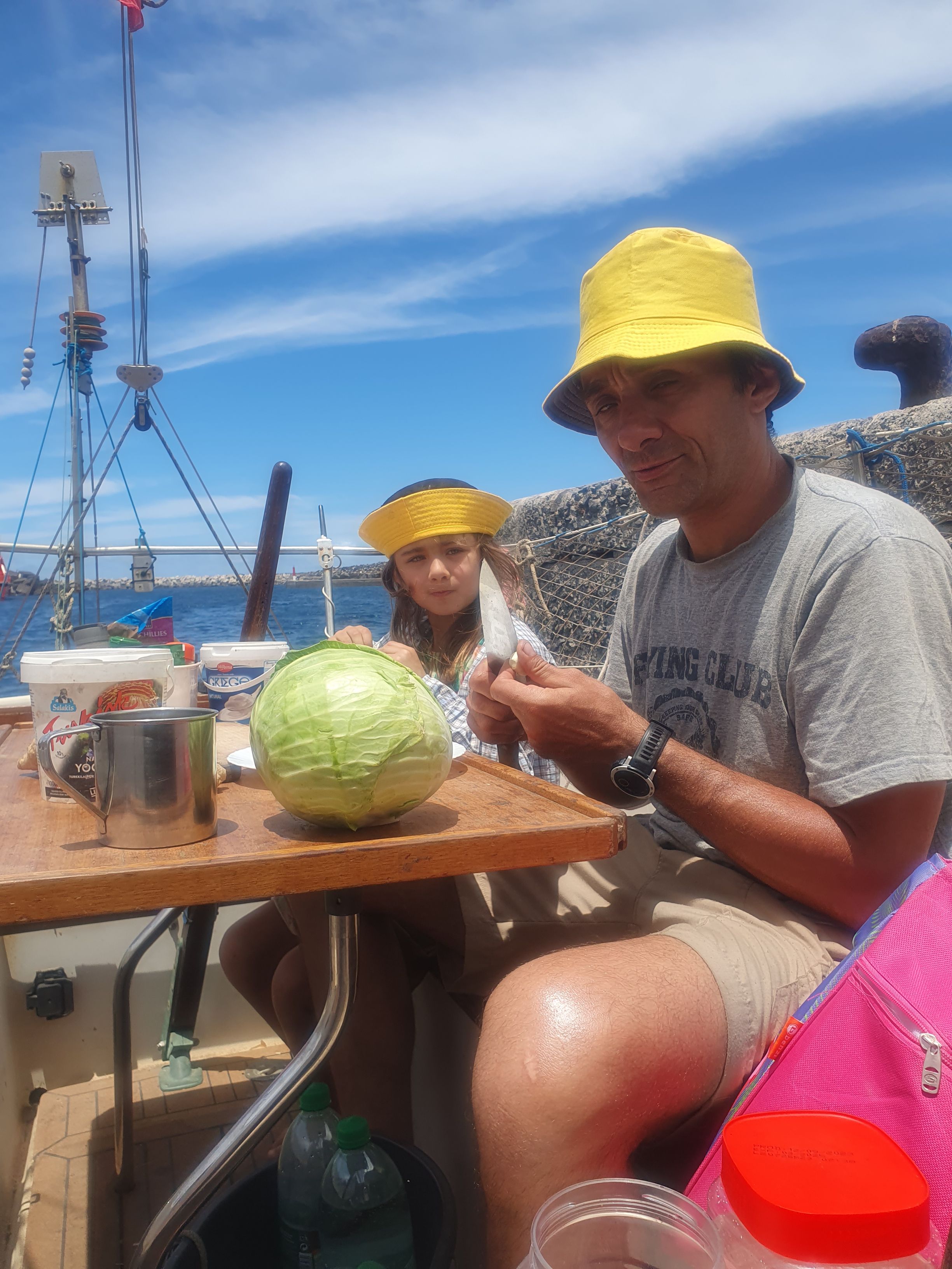

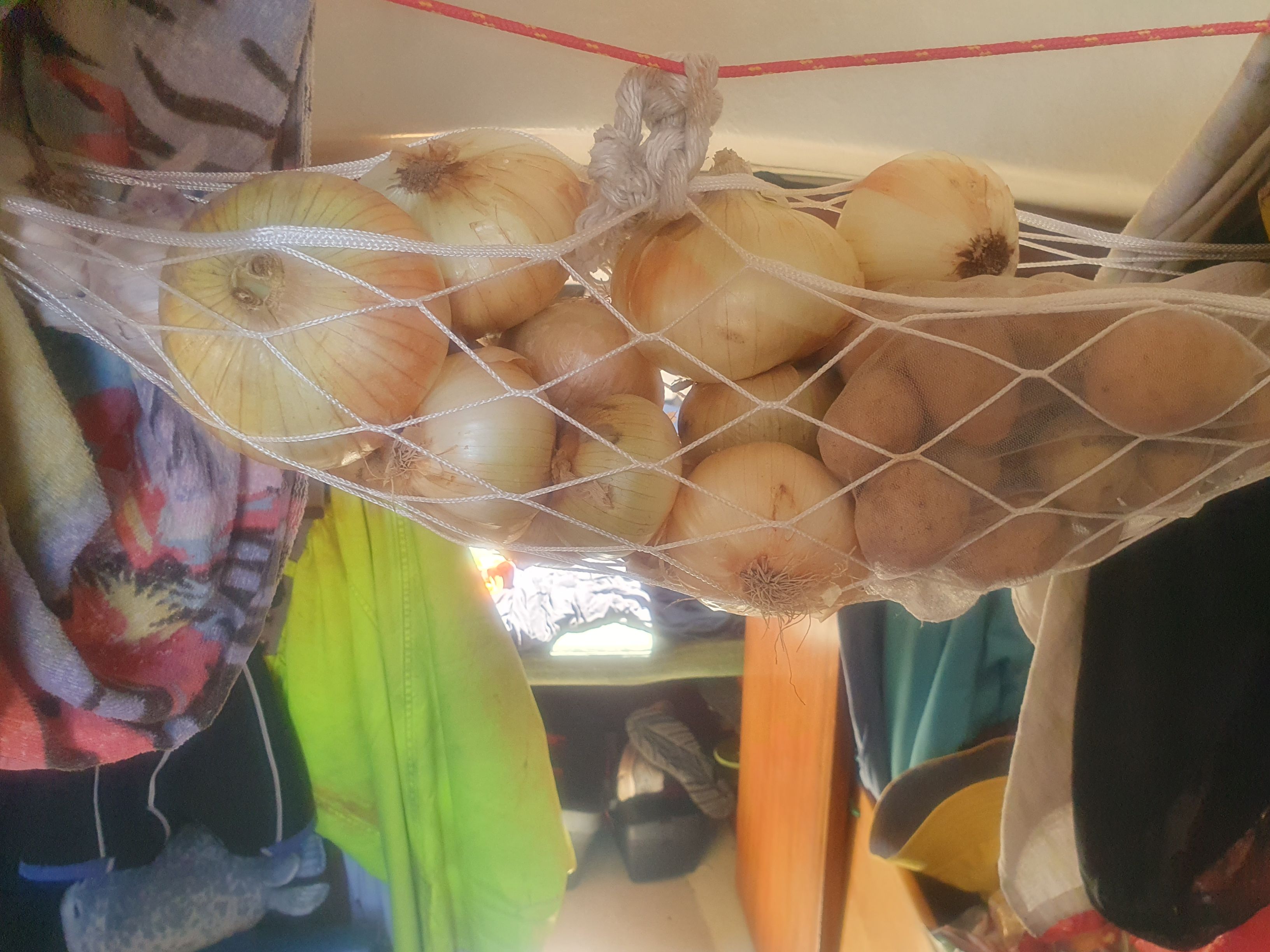
The biggest problem is loading the planned amount of water. We have 3 liters in bottles for all of us per day, so not much. An additional 60 liters in the tank at the bow, but we are not sure if that water won’t spoil in the heat (we did not take purification tablets). Besides, we are counting on the new desalinator, but a supply is necessary.
We are afraid to load such a weight on the bow, remembering the sharp descents from the waves on the way to the Canaries. So, we will load light things on the bow (we will limit our living space to two bunks in the saloon, as one person will not be sleeping anyway). We load the water closer to the stern. There's also 100 liters of fuel for the engine, which we plan to use while sailing through the calm zones near the equator.

Then, after the last walks around the area, we set off on a long journey.
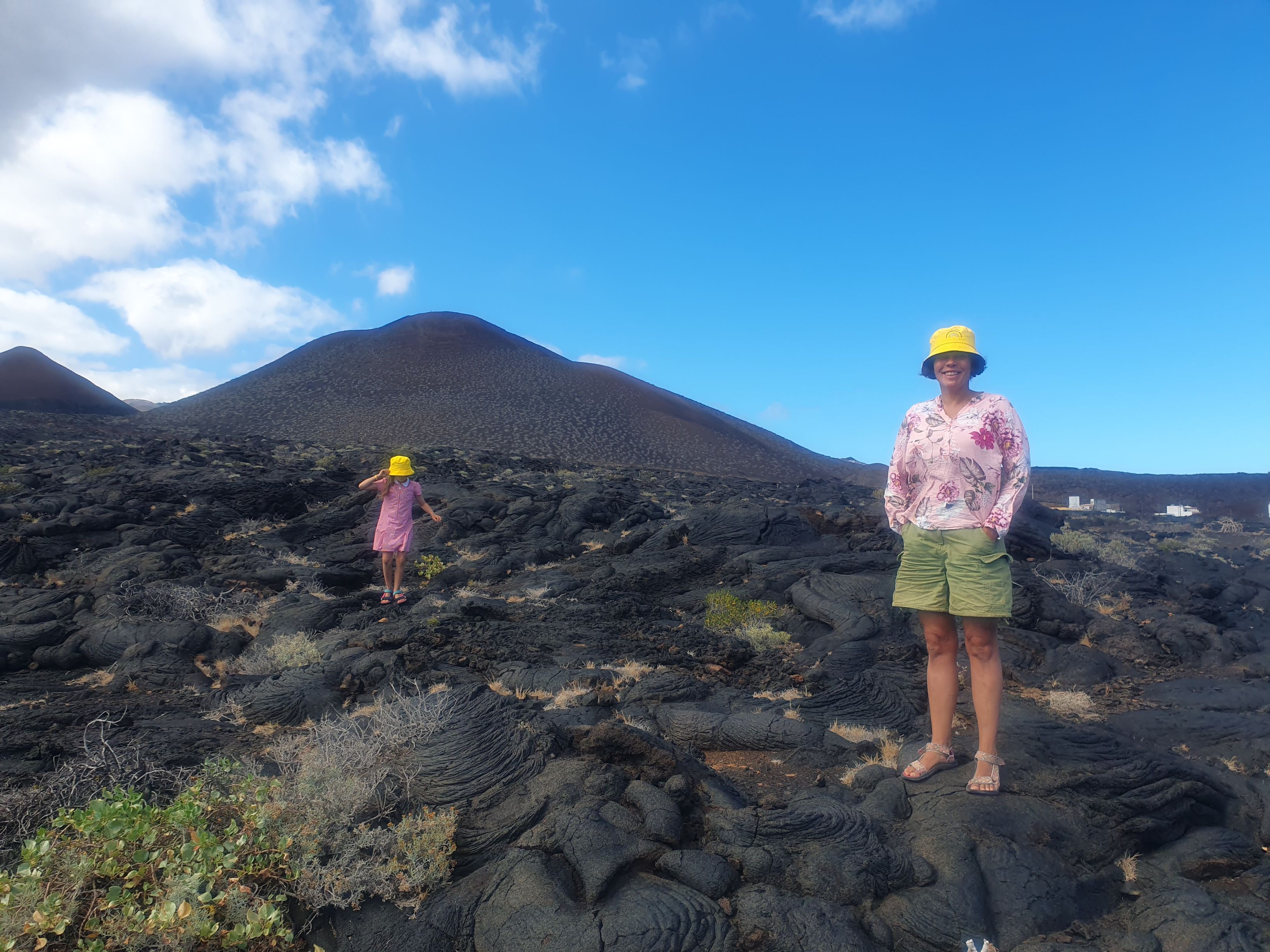
Before setting sail, we send an email to all interested parties with the following content:
Hello,
This email is sent to all who are interested in contacting us during this year's voyage. We have finally purchased the option for unlimited satellite SMS via the Garmin InReach system, allowing us to be in contact with everyone as often as needed, with the limitation of message length to 160 characters.
You can track our position at this link:
https://share.garmin.com/stubborn
There is also an option to send us a short message. We can respond to them and also send messages ourselves to standard emails. We can also send SMS to a phone, but a response to the number will not get back to us. You need to write to us via the Garmin website or a special link in each email from us (which is always different).
Do not worry if the position on the map does not refresh sometimes. The tracker might have trouble connecting with heavy cloud cover, must be on board, and we might store it away sometimes to prevent loss in stronger winds, etc.
The tracker has an option to call for help (SOS).
However, if the tracker fails (e.g., USB port gets brined, which often happens), is lost, etc., we still have two-way contact through the Iridium satellite internet. I do not provide this option to everyone because the data package is small and needed for receiving weather maps. The person who has this contact is my Brother, who can provide information in case of no contact with the tracker:
XXX XXX
xxx@gmail.com
+48 xxx
Remember that sometimes the tracker may be stowed, we might be tired, busy navigating the voyage, and not necessarily respond immediately to everything.
We will have contact with Brother as long as our iOS tablet works (Android devices receive weather maps but do not email). Therefore, there is also a risk of losing this contact channel (e.g., power failure, lack of charging, etc.). This system also provides us with an SOS option.
Additionally, we have PLB (Personal Locator Beacon) devices registered with the Civil Aviation Authority, one with Zuza and one with me, allowing us to call for help via satellite + on aviation frequency at 121.5MHz. They are independent of USB, charging, tablets, and others, making them the most reliable in SOS situations, but they do not provide a contact option.
In case of no contact, please do not panic (our insurance does not cover an unjustified call for help). We have all possible systems to call for help if needed.
Additionally, we have "personal AIS" systems in inflatable vests (all three of us), which gives a location on the boat map should someone fall overboard (we will always have harnesses + lifelines stretched across the deck).
The plan is:
Around June 11th-12th, on the water and at anchor to get accustomed. Ideally, we would set sail around the 15th-17th, just before the full moon. Unfortunately, refugee boats sail to the Canaries daily, not always giving a good radar echo, and it's better to have the helpful moon with us. But we must also adjust to weather conditions - for example, 5% of the time during this season, winds do not allow anchoring (it happens now, so in a few days, the steady wind from the Atlantic high will likely return).
Then it should take about 7 days to travel to the Cape Verde Islands. We want to rest there for a while. We will probably want to set sail after July 1 to handle business/office matters related to the end of the month (e.g., JPK). However, in the event of weather risks, etc., we will sail earlier and explain later. Normal internet contact will be with us on Cape Verde.
In Cape Verde, we must wait for stable and good weather for the first week of the voyage (so we might stay there longer). If we get the first week's weather good (wind conditions are most variable now), we have a chance to complete the entire route to French Guiana in about 3 weeks. We must sail below the 10N parallel to avoid the hurricane threat area (near the equator, they lack the Coriolis force that maintains their rotary motion). We will therefore be close to the ITCZ (Inter Tropical Convergence Zone), where calms might hold us. We have two desalinators and energy food (mostly for the raft, as the yacht is heavily loaded, sausages are hanging to dry, even sauerkraut is fermenting;)
We land on the beautiful Les îles du Salut. There, a bit of vacation and rest. I don't know if there will be internet contact immediately.
Only then, in line with the tides, we will enter the Suriname River, where we have arranged a marina and there will be normal contact.
Ahoy!
Kama, Zuza, Kamil
La Restinga - Mindelo
On June 11th, we bid a final farewell to La Restinga. We visit acquaintances with a bag of specially brought fudge and embrace for goodbye. The next morning, the port officer returned from Tenerife, and we could sail to the anchorage in Mar de las Calmas. We will acclimate to the yacht and rocking there, so seasickness doesn't trouble us on the route. There are a few places around El Hierro suitable for anchoring, but due to "garden eel" habitats, only one area is designated for the boats to spend the night in water. It has the drawback of being open to swell (there are no well-sheltered bays by this island). Besides, there are katabatic winds occurring there. At night the land cools faster, the air above becomes denser and falls from the cliffs to the sea in strong gusts. We had to combat this phenomenon a few times on Gomera and knew that such squalls could rip a yacht from anchor (or a cleat if the anchor holds well). Local night winds can be really strong - in La Restinga, an entire dock with yachts was blown away, and there's still a problem with moorings in this port.
The wind, by local standards, was small, which significantly facilitates port maneuvers, so we rushed and set off already at 9:00. After 2 hours, we were at the location.
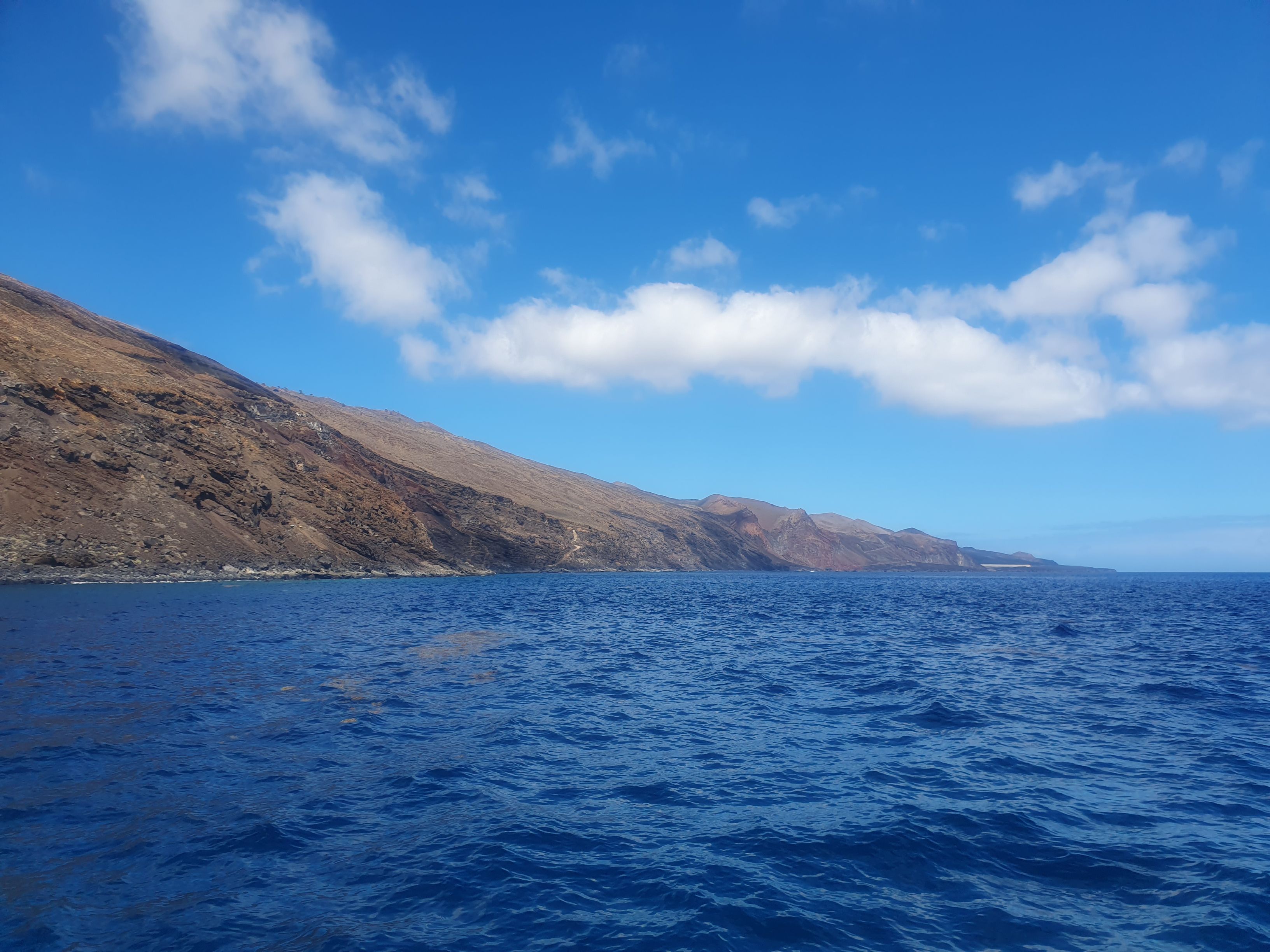
To celebrate the beginning of a new stage, Kamil is cooking papas arrugadas in the classic version - using oceanic water.
The adaptation to the wave went smoothly. We swam a lot, and together with Kamilka, we sailed around the boat - one of the parents secured the little swimmer, while the other gave style advice from the deck. Kamil made the final repairs, and "daddy's most faithful helper," though a bit less active than in the port, assisted. We spend the evenings reading by the new lamps.
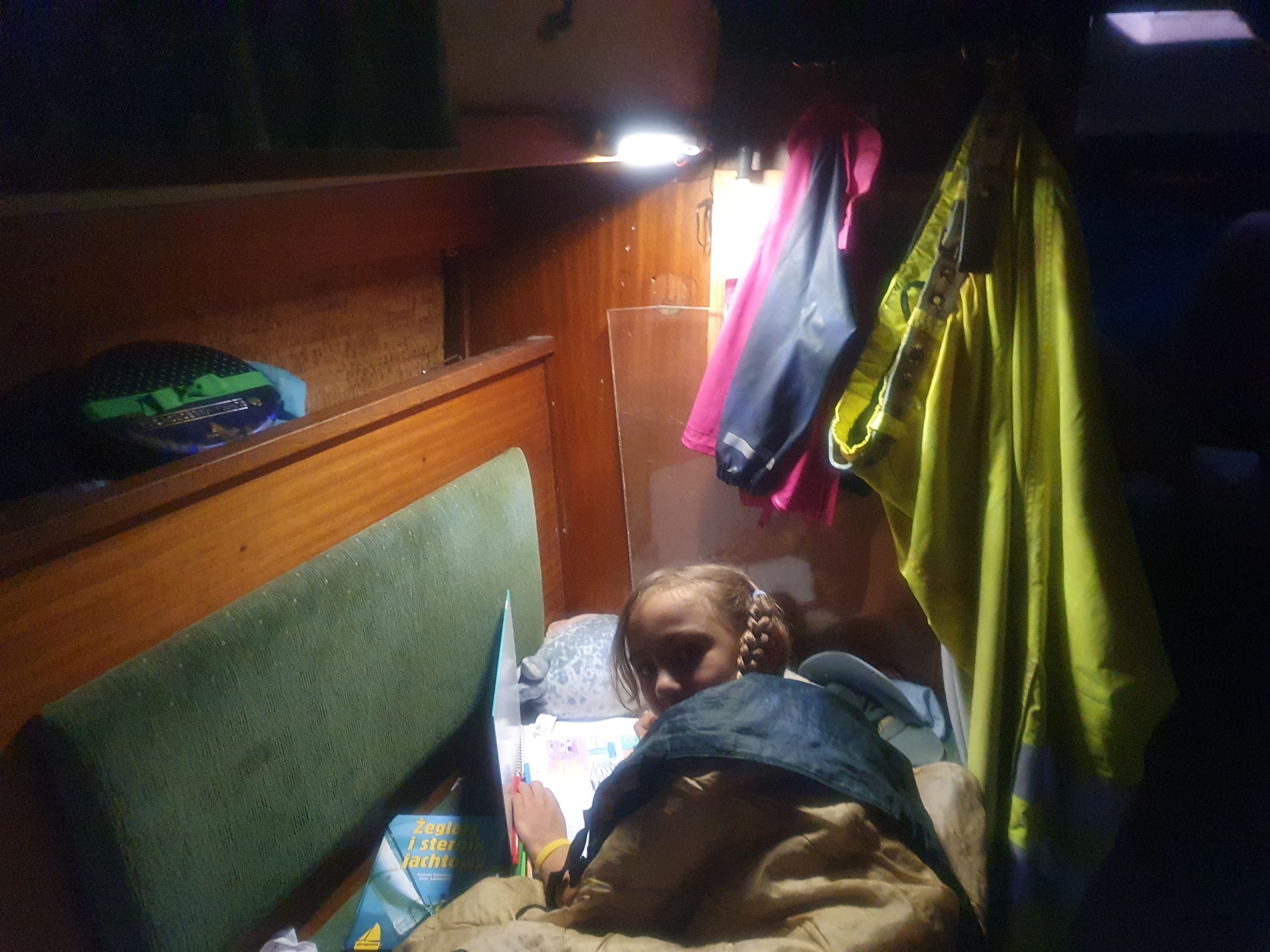
Every day we check the forecasts. On this route, we are exposed to strong winds (although safe, not stormy), but we have no desire to battle the elements. Generally, it is supposed to blow between 5-6B, but we also pay attention to the strength of the gusts, which gave us such a hard time on our way to the Canaries (they will be here too, especially at night, strongest up to a few hundred miles from the African coast). Eventually, a plan is formed - We set off on 15.06; it is expected to blow weakly for three days, giving us time to further acclimate to seasickness and bond with the yacht and allowing us to avoid strong gusts that are supposed to appear only on 18.06, halfway through the route.
We're off! The boat gets reorganized. All the light food goes to the bow berth, Kama regains her kingdom behind the storm board, and a bed for one adult is laid out on the berth by the stove. At the entrance to the bow berth stands the dinghy tied with spare life vests and the grabpack - a waterproof bag with a supply of water, high-energy food, a desalinator, and a fishing set. A second, small grabpack with communication devices we use daily hangs by the companionway. If anything wrong happens, one of us grabs the bags and evacuates with them. The raft is secured on the deck so that it should detach by pulling a line knotted in a cockpit-accessible spot, but if the yacht capsized, it might have trouble surfacing, hence the dinghy dressed in life vests, which then can be more easily brought to the surface.
We all wear harnesses and self-inflating vests, which we will not take off until arrival. The harnesses have stretchable tethers attached, ending in special carabiners with a spring clasp on both sides - they allow for quick connection and disconnection on one side, and prevent accidental disconnection on the other, which can happen with regular carabiners. Everyone going to the cockpit immediately hooks into one of the lifelines (two lines stretched from bow to stern on the boat's sides - allowing free movement while providing protection in case of a fall). In the vests, we all have an automatically activating personal AIS system; in case someone falls overboard, their position appears on the boat's chartplotter. Theoretically, the system's range is 4 miles, which in our conditions translates to about an hour of sailing, but we hope never to test its effectiveness in practice. The helmsmen also have PLB systems attached to their harnesses - a manually activated alarm that sends a distress call straight to the satellite. Adults also have pouches with a knife and a powerful diving flashlight. Both these items are also attached to the harnesses with strings. We also have solar-charged Garmin watches with GPS, always more reliable than a sextant in case of yacht power failure.
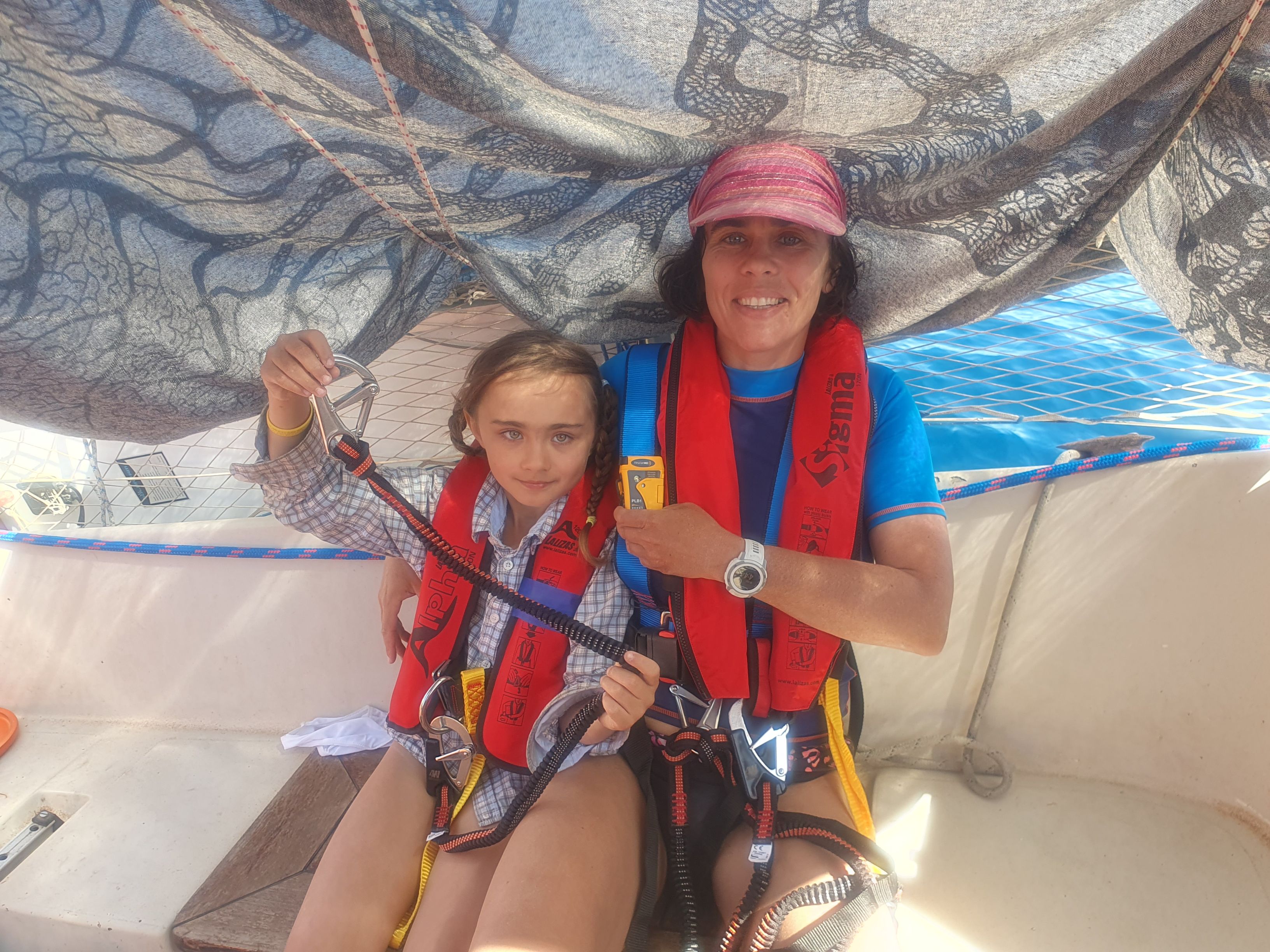
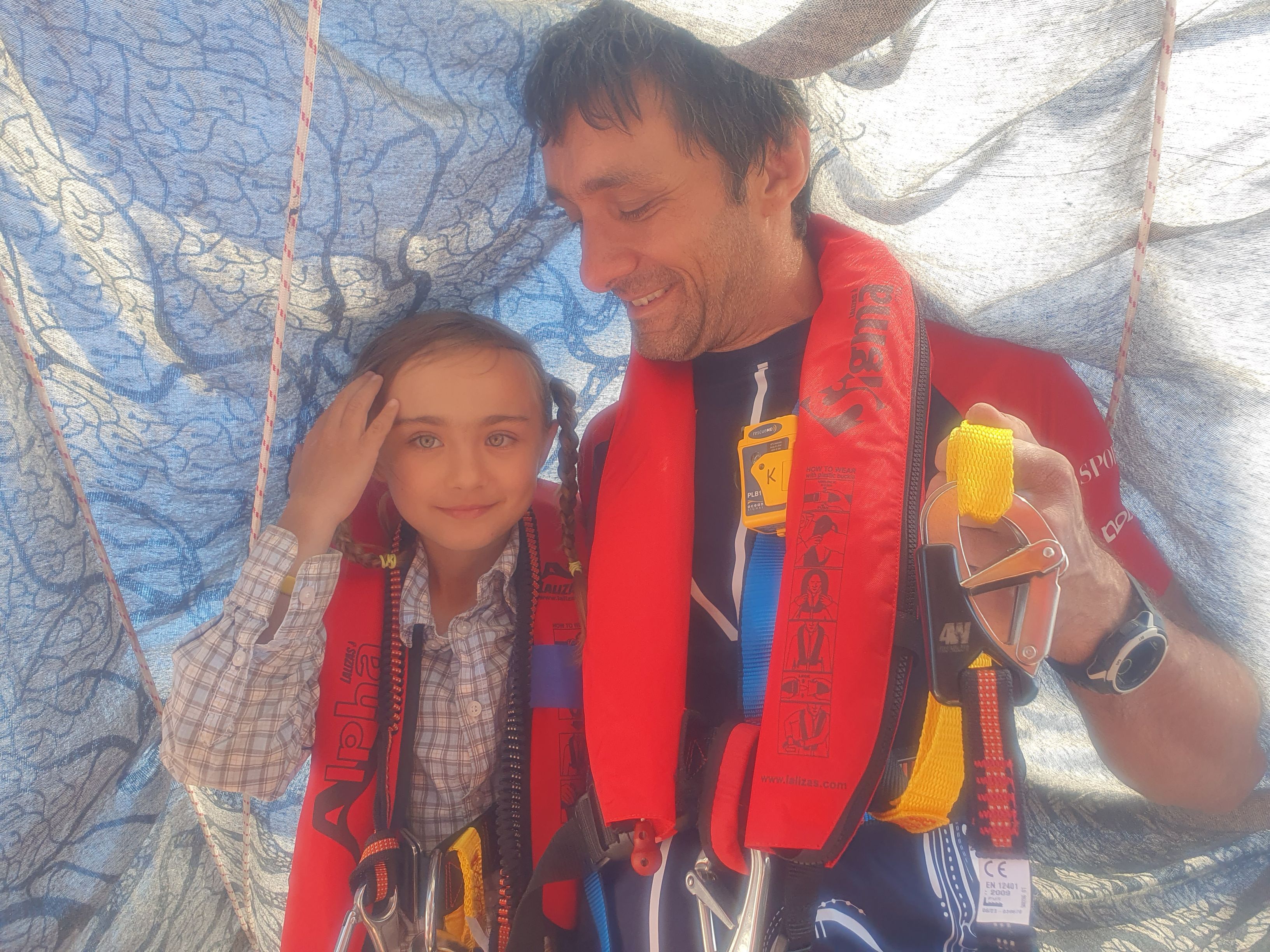
The sachet also contains a "Man On Board" system tag designed by Kamil. The battery-powered device sends a signal to the base station located in the boat. If it stops transmitting, the base station activates a loud siren. If the helmsman falls overboard, the crew is immediately alerted. We had a chance to test the effectiveness of this system in Norway when Zuza went to the shore latrine with the tag in her pocket - the piercing howl woke not only Kamil but also people from several neighboring boats... Here is a more detailed description of the system's construction: MOB
Volcanic islands are characterized by wind needing to bypass the mountains, so directly behind the island there's no wind, but on the sides, it blows with double force, creating swirls. Sailing out from the shadow of such an island, one must also be cautious of the waves created by these mixing winds. We set off around 9:00 in a gentle wind, and everything was going well until suddenly we completely lost electrical power. Despite the boat pitching harshly as waves from different directions hit from all sides, Kamil dismantled the electrical panel, then the engine compartment, and discovered that a cable from the alternator had snapped and caused a short circuit. Soldering with a gas soldering iron is never easy, especially a cable almost a centimeter in diameter in such conditions, but somehow he managed it, and we regained power and charging. The rest of the day went by quietly, maybe even too quietly. We sailed into the wind shadow from the entire Canary Islands. A quick consultation with the weather forecast showed that if we turned on the engine, we could escape from this shadow within half an hour, which we did.
Excited about the journey, neither of us slept well the previous night, so we take turns on watch every 3 hours. The moon accompanies us for most of the night, which greatly facilitates and makes the watch more pleasant (this was something we had already planned for our departure in winter). The moon disappears 3 hours before sunrise, at which point observation becomes difficult. The night is warm enough that we sit in shorts.
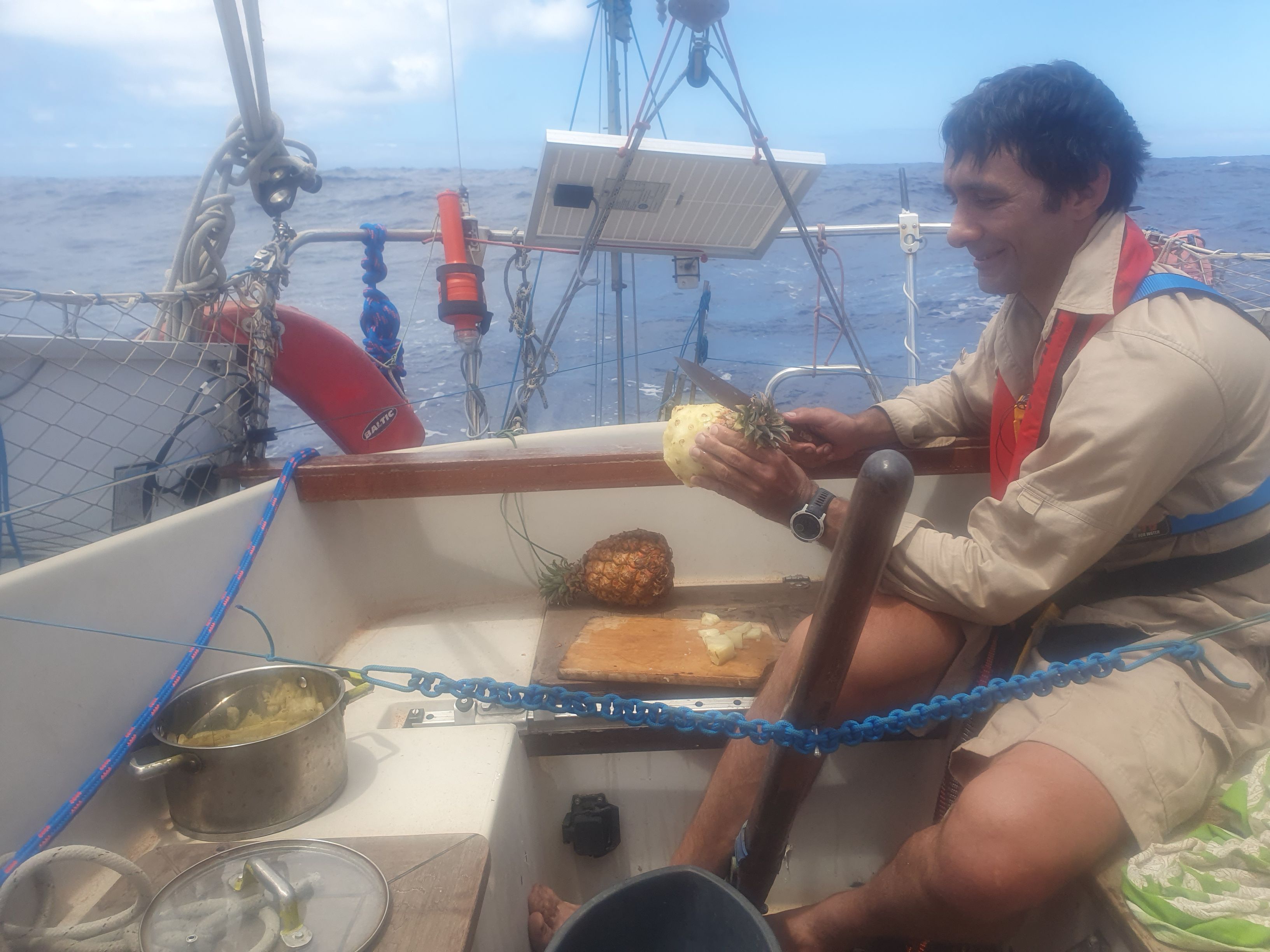
The next day passes relatively calmly - the autopilot is steering, and we need to keep track of the route and surroundings while pressing the watchdog button (also known as "watchdog" or "all's well") - another of Kamil's additions to the "Man On Board" system. This devilish device is meant to ensure that the helmsman neither falls asleep nor gets distracted for more than 15 minutes. The helmsman's distraction is penalized with the loud wailing of a siren.
Suddenly, an unexpected guest appears on our boat - a pigeon. The animal is well-groomed, ringed, and, to our eyes, looks purebred. It perches on the boom - we sprinkle crumbs and water for it; it's clear that it was hungry and thirsty as it devours the offerings eagerly.
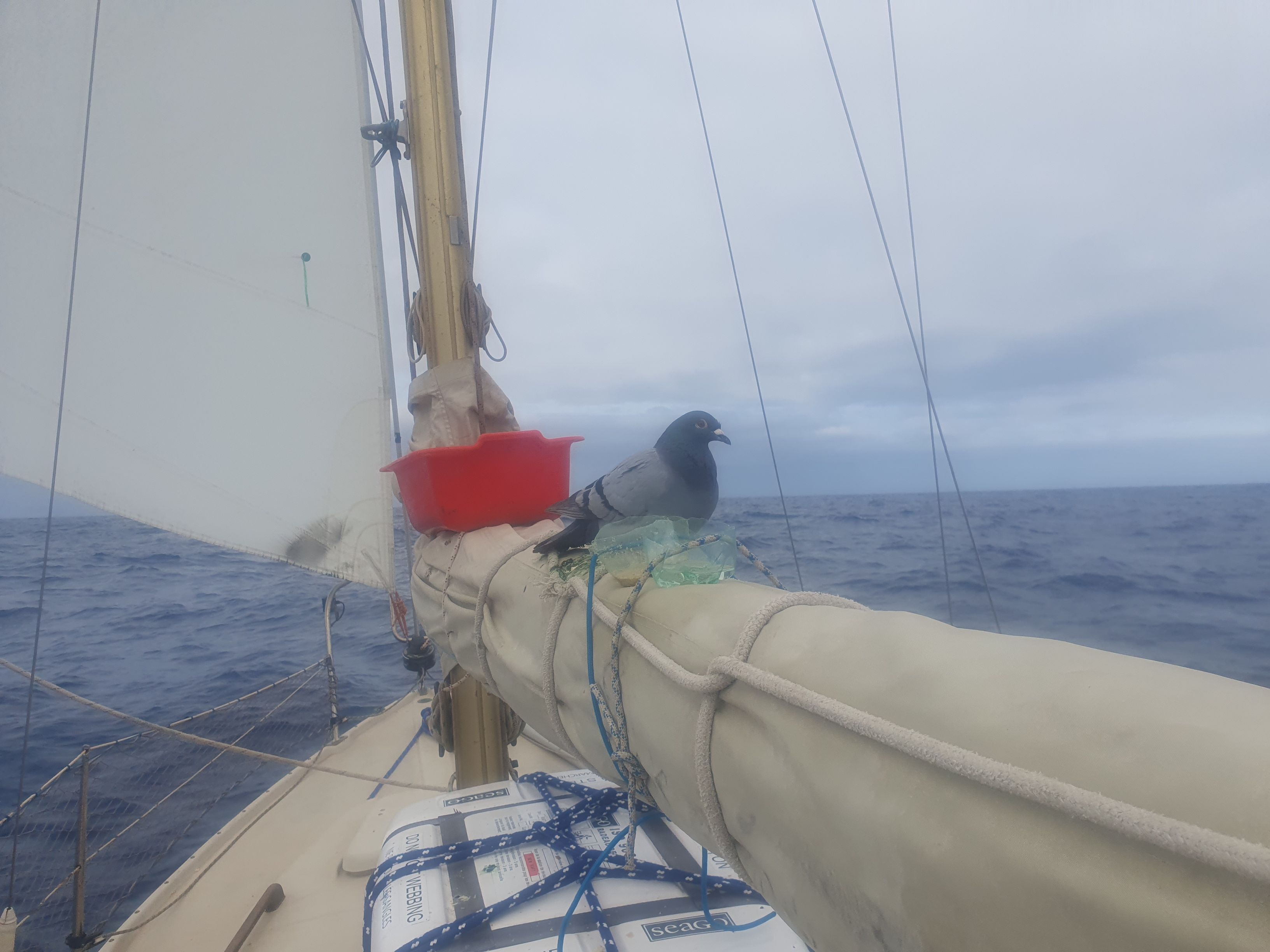
We wonder where it came from 100 miles from the shore, especially since the wind is quite strong (later, already in the port, we read that pigeons of some breeds can fly even 500 miles in one day). The bird clearly makes itself at home and stays with us overnight. The night is calm and beautiful - a cloudless sky, the moon creates a luminous path on the water.
The next day, the weather slowly changes, clouds appear in the sky, mornings are warm but not hot - we sit in shorts and sweatshirts. Afternoons are sunnier. Life on board stabilizes - Kamilka wakes up in the morning and listens to an audiobook. Kamil catches up on sleep overnight, and Zuza takes care of steering. Around 9:00 - 10:00 Kamil takes over steering and Zuza goes to sleep. If the rocking is not too strong, breakfast can be eaten - crackers, crispbread (nicknamed cardboard bread in Polish), or gofio (a Canarian invention, flour from roasted grains mixed with milk and honey). In the afternoon, when the weather is best, the whole family comes on deck, and Kamil makes some dinner. If it rocks more, there is a salad of corn, peas, a random can of fish, and mayonnaise or Canarian sauce. If the rolling is more bearable, it's possible to try cooking something. We really liked pasta cooked with oregano, into which we then squeeze fresh cloves of garlic and add canned tuna.
We have two stoves set up and depending on the weather and type of dish we choose which one to cook on - if things are better, Primus Omnifuel can be used - it cooks slower but runs on gasoline, which can be easily purchased anywhere. The gas stove is faster and easier to use, but it's hard to get a cartridge that fits our model. We also have an old spirit stove. It's the safest because any fire can be put out with water. However, we have long been unable to get cheap bioethanol. We also can't get popular in Poland kerosene for our old ‘granade stove’. The ‘grenade’ stove runs on 95 gasoline, but care must be taken not to let it rev too much (it burns more aggressively than on kerosene). The nickname "grenade" comes from the fact that the fuel tank is disturbingly close to the flame.
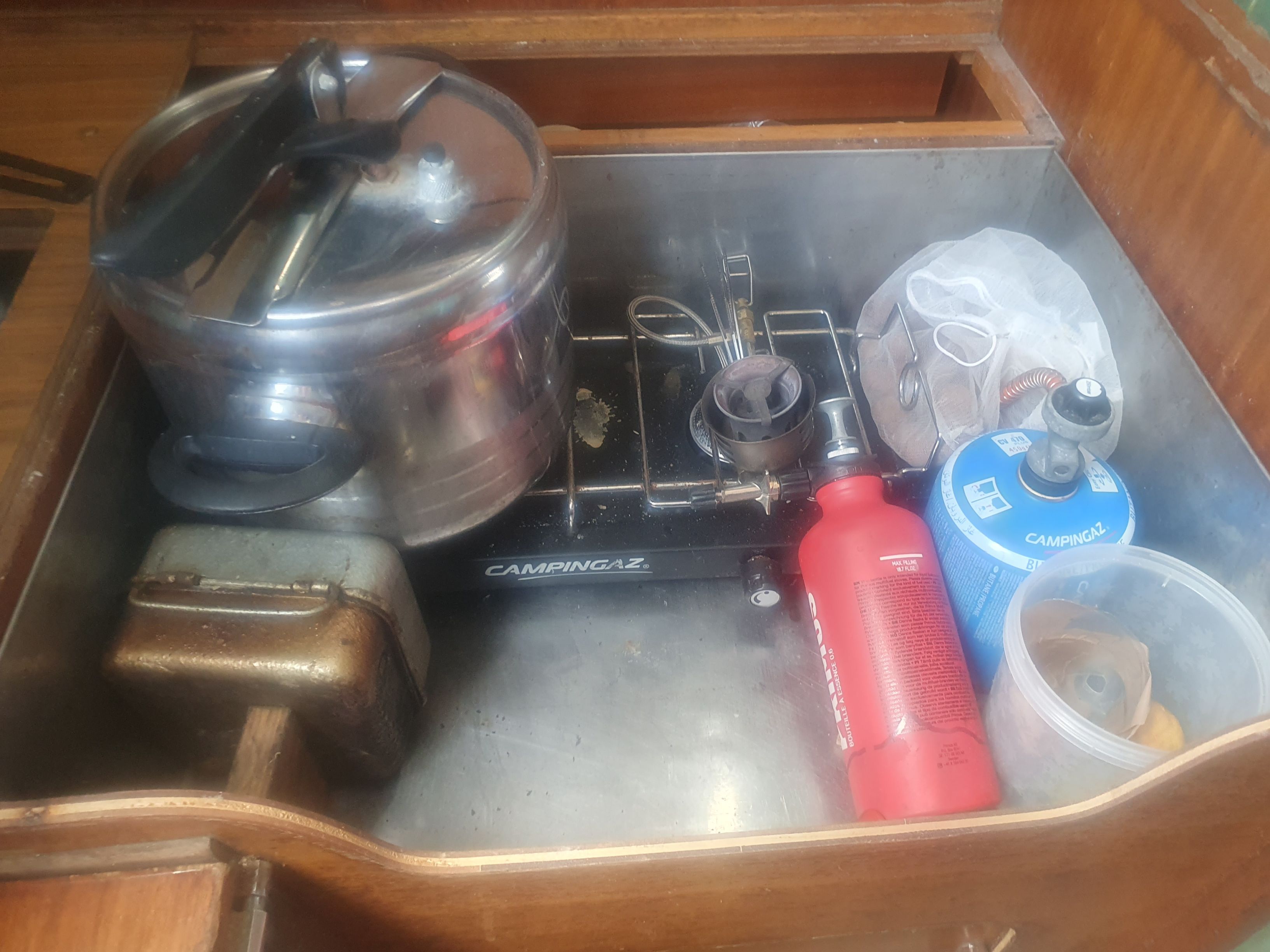
This year we bought a safer Primus Omnifuel, which works on a wide range of fuels—even diesel in a pinch, though it clogs the nozzle and smokes a lot. That's why we stick to the less safe gasoline.
Monday, June 17th, the third day of our journey, is running smoothly—we're experimenting with pigeon food—the larger pieces of hardtack don't fit its beak, the hardtack dust gets in its eyes, so we must crush it into appropriately sized pieces. It turns out it also likes lentils and rice. We're worried about what our onboard pet will do in case of strong winds. Will the gusts blow it away? What about the splashes of waves? Kamil ties a house made from a cut-up plastic bowl to the boom. The pigeon looks inside but has no desire to sit in the hut. It's distrustful enough not to let itself be moved and meanwhile "occupies" the mainsail (which fortunately we don't need to use).
In the evening, the wind intensifies, and we reef the jib (using the roller). Although we feel fine, we preemptively take biodramina (the same active ingredient as in Polish aviomarin). We had never done this before, and during the early days of previous trips, we sometimes suffered from seasickness. We had taken biodramina before and didn't experience negative effects. It was recommended to us during a diving session at a point with significant waves, where divers were tossed around, and everything floated left to right before diver’s eyes. Kamil vomited in the water (took the regulator out and only later read that it should be done through the regulator). Zuza got hit by it only on the pontoon, and then the divemaster routinely suggested this medication. Before sailing, Kamil experimentally took two pills and nothing bad happened. On the other hand, seasickness also limits performance and, in that sense, can be dangerous. It turns out that the medication affects Kamil's tired body differently than a rested one—strange drowsiness, difficulty focusing on the compass, dry mouth, and when he slept, he had hallucinations. Zuza had to take control. Biodramina (especially the version with caffeine) helps Zuza and she never felt any negative effects, but it's worth knowing that not all bodies respond the same way.
On normal days, Zuza starts the evening shift, and then Kamil takes over. Today, during his watch, the wind blows strongly enough that he completely reefs the sail and steers manually because the autopilot cannot turn the boat stern to the wave quickly enough, and a side hit with the current sea state could be dangerous—it wouldn't capsize our boat, but it could damage the solar panels hanging on the sides. The boat moves at 3.5 to 5 knots under a bare mast. Steering needs to be very precise on course 220, as mixed waves come from both rear quarters (the wind has changed direction) and strike one side or the other. Because of this, for about 2-3 hours, both adults kept watch, splitting the tasks between the steerer maintaining the course and the "eye." At 5:00, when Zuza takes the helm, the situation slowly calms down, but she still steers manually, and we don't unfurl the sail. During the day, the weather is better, allowing us to catch up on sleep after the exciting night.
Evening of 18.06, the time that was supposed to be the windiest of our journey, is approaching. Fortunately, the gusts are not as strong as last night. The dove seems eager to stretch its wings as it circles above the boat. It then has trouble landing, but eventually manages to master the technique. We notice that from constant bracing, its feathers and tail feathers have worn out.
Kamilka has a sudden return of seasickness, feels weak, and vomits. Fortunately, the next day she feels much better and is even able to read a book in her own berth (Zuza doesn't dare to try reading even outside, where generally seasickness is much less bothersome). As an intellectual amusement, we come up with math problems for Kama to solve. Our mathematical creativity soon runs out, and we switch to tasks from the Math Kangaroo. The kid solves one after the other. It turns out that with minimal distractions, Math Kangaroo becomes entertainment, like a crossword or sudoku (after the trip, she scored in the top 10% best in the competition). Travelling educates…

We cross the Tropic of Cancer and are now officially in the tropics. The weather isn't as imagined - at night we have to sit in long waterproof pants, sweatshirts, and jackets. During the day it's better, though we cautiously part with our jackets - not so much due to air temperature, but sudden cold "splashes" from overboard.
Again there's an electrical issue - something is turning on and off, consuming our energy supply. We realized it when the battery was fully discharged and the AIS chartplotter turned off. It turns out the culprit is the automatic bilge pump. Although there isn't much to pump out, it turns on and off due to rocking and consumes electricity like crazy. Generally, the pump is meant to be used when the boat is stationed in Suriname (as a precaution, we recently sealed all through-hull fittings), so now Kamil simply turns it off completely and the problem is solved. Fortunately, we have a working alternator and can recharge from the engine because, with cloud cover, the PV panel barely charges, and a discharged battery easily "sulfates" and becomes useless.
We also wonder where the water in the bilge came from - it's not much, but in the port and at anchorage, there was none. After all, Stubborn is supposed to stay on a buoy on the river for a year. Not good... Inspection of all through-hull fittings and installations reveals that water is leaking through the rudder. The rudder blade is placed on a long pin that enters a tube. Unfortunately, this tube ends below the cockpit floor level (clearly not a good solution). It appears the previous owner extended it with a piece of rubber hose clamped with a hose clamp. Normally, this spot is sufficiently above the waterline, but now we've weighted the stern heavily with water and fuel. In waves, water sometimes enters through the cockpit drains, but also through the rudder into the bilge. We move several cases from the stern locker to the saloon - it will make it harder to move around the yacht, but it's more important that water doesn't enter.
The wind decreases, but tidal currents appear - for six hours sailing is pleasant, fast, and enjoyable, for the next six it's slower with short, unpleasant waves.
From evening to evening our pigeon circles become bigger, and it often disappears from our view. The poor creature is struggling on the swaying boom, and its tail feathers are increasingly frayed. We wondered how long it could hold out. Finally, one evening it flies away and doesn't return. We're worried because night is not the time for pigeons, and the last time we saw it, it was flying west. We hope it finds a ship before it gets too tired.
We calculate that to reach Cape Verde on Sunday, we need to maintain an average speed of 4 knots (we don't want to wait all night, and entering Mindelo is recommended only during the day).
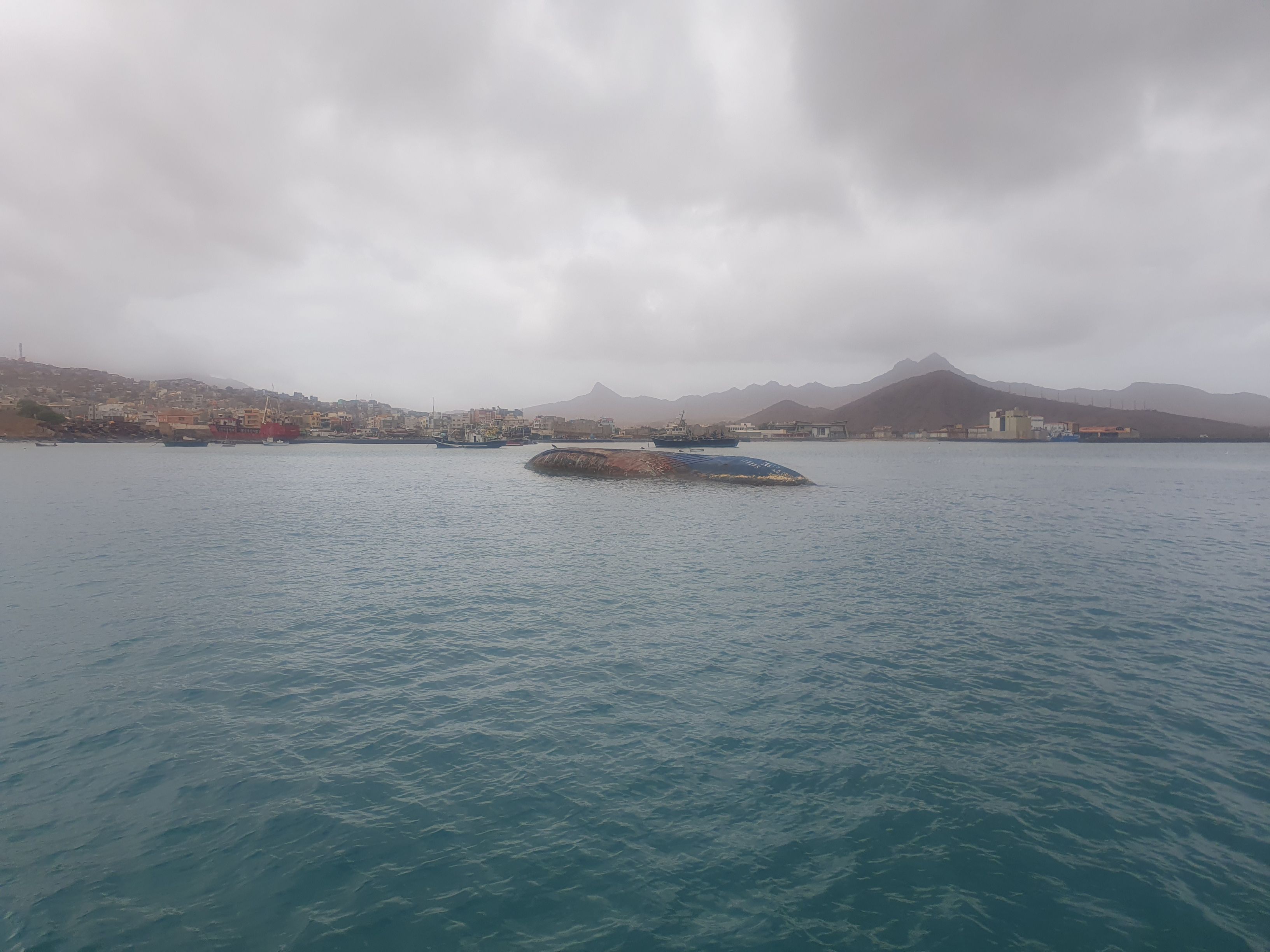
For now, the wind is favorable, but on June 23 a calm is expected. On June 22, we discover that the wind vane broke. The cause is easily traced. While trying to move as quickly as possible, we reduced the sail as little as possible, and when the wind vane couldn't adjust us to the correct direction quickly enough, we pushed it by hand. As a result, it was subjected to too much force, and one of the steel tubes broke. Kamil quickly takes apart the damaged element (a feat of gymnastics on a wave over a meter high), saws off a piece, drills a new hole, and reassembles it. It works, but now we know that "helping" is off the table - if we return to the course too slowly, the sail either has to be reduced, or we have to steer manually.
On June 23 at sunrise, we are just under 30 miles from Mindelo, the only marina on the entire Cape Verde Islands. We prefer the marina to avoid ferrying supplies by dinghy. We also don't like leaving the yacht alone at anchor for an extended period. We did so while exploring Gomera and nothing happened. However, later on, a few times the anchor dragged us, and then the yacht quickly drifted (usually towards rocks).
The anchor doesn't work well when the wind is weak and from multiple directions (for example, when anchored by high cliffs). Then, the currents and variable wind carry the yacht around. As a result, the chain can wrap around the anchor, and it stops holding the yacht even in light wind. In La Restinga, we learned, among others, the story of a sailor who anchored on Gomera at the same time and places as us a year earlier. He went to the store when the chain link released. His large, beautiful yacht was then in need of a complete overhaul in La Restinga.
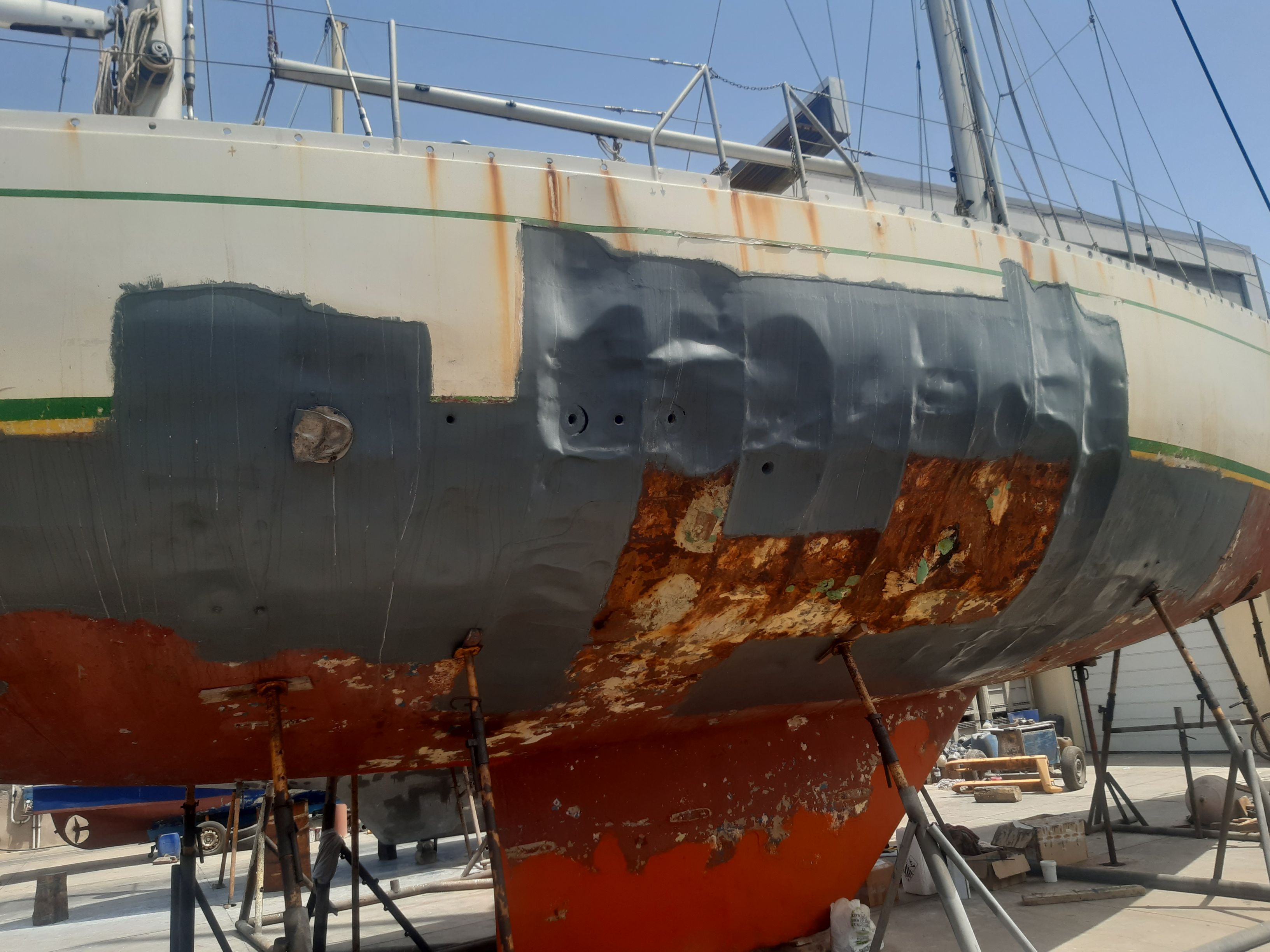
Finally, we are approaching Mindelo. The wind isn't strong, but the currents between the islands intensify it a bit, so we don't have a problem with propulsion. The last hours drag on desperately, but by midday, we reach the port. The guide describes it as difficult, windy, and choppy. Entering such places is always stressful because it’s easy to damage your own boat or, worse, someone else's. We look at the luxurious transoceanic yachts and maneuver as far away from them as possible. A friendly marina employee shows us a spot and helps us dock. We didn't anticipate needing gloves, and the marine stingers became evident when tying the stern line to a cleat. We feel a weight lifted off our shoulders when the yacht is finally moored. We are tired and stiff from the salt, dreaming of a shower. Fresh warm water must wait a while longer because we arrive during the lunch break. Eventually, the marina office opens, and we receive the desired shower cards and exchange currency. The escudo exchange rate is pegged to the euro, with a simple conversion of 1 euro to 100 escudos. In many places, payments can be made in both currencies. Credit card payments are also no problem, although locals prefer cash for small purchases due to the high terminal fees.
Mindelo
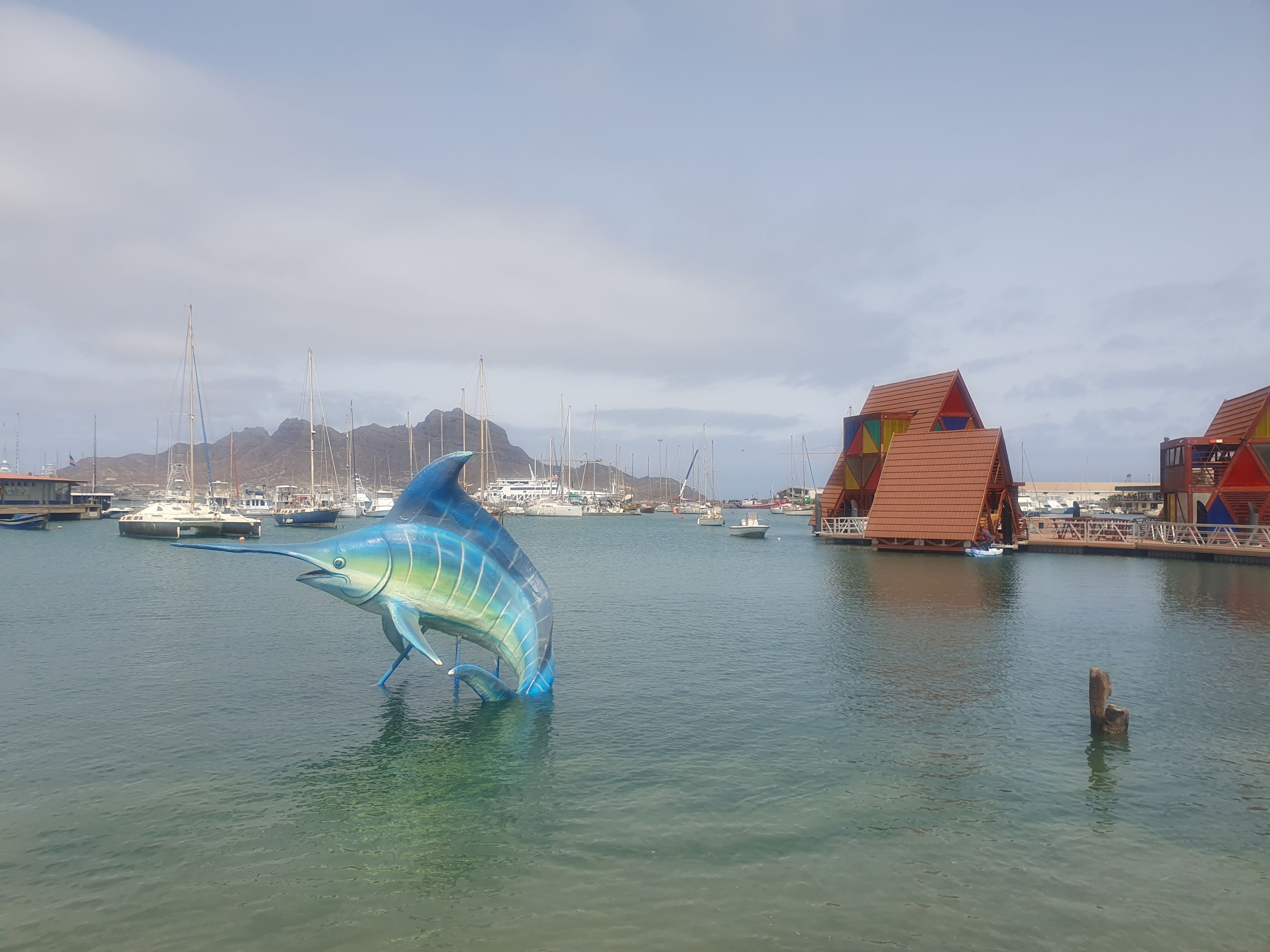
Even though the ground still wobbles a little under our feet, we run to eventually wash properly. It's Sunday, the visa office and the police are closed, but the port man says we can walk around the city without any problem. After getting cleaned up, we go for lunch at the marina's floating bar. Not only is the food tasty, but they also have Wi-Fi. Full, we go for a walk around the area - the city seems deserted, and we only encounter people at the playground. Kama plays on the bars and swings, and we slowly start to recover and look around. We were warned a bit about this place - a few people on Navily reported thefts, and a man we met on the pier also says to be careful with backpacks. Nevertheless, the playground is idyllic - it is noticeable how neatly and smartly dressed the people are. Both children and adults look really good.
No one pays any attention to us. Tired and content, we return to the boat and fall into an eight-hour sleep, during which there is no need to wake up for a watch.
The next day, we head into town - we are greeted by a portrait of Cesaria Evora carved into the building wall - the barefoot diva, the most famous Cape Verdean artist, who was born in Mindelo and spent most of her life here.
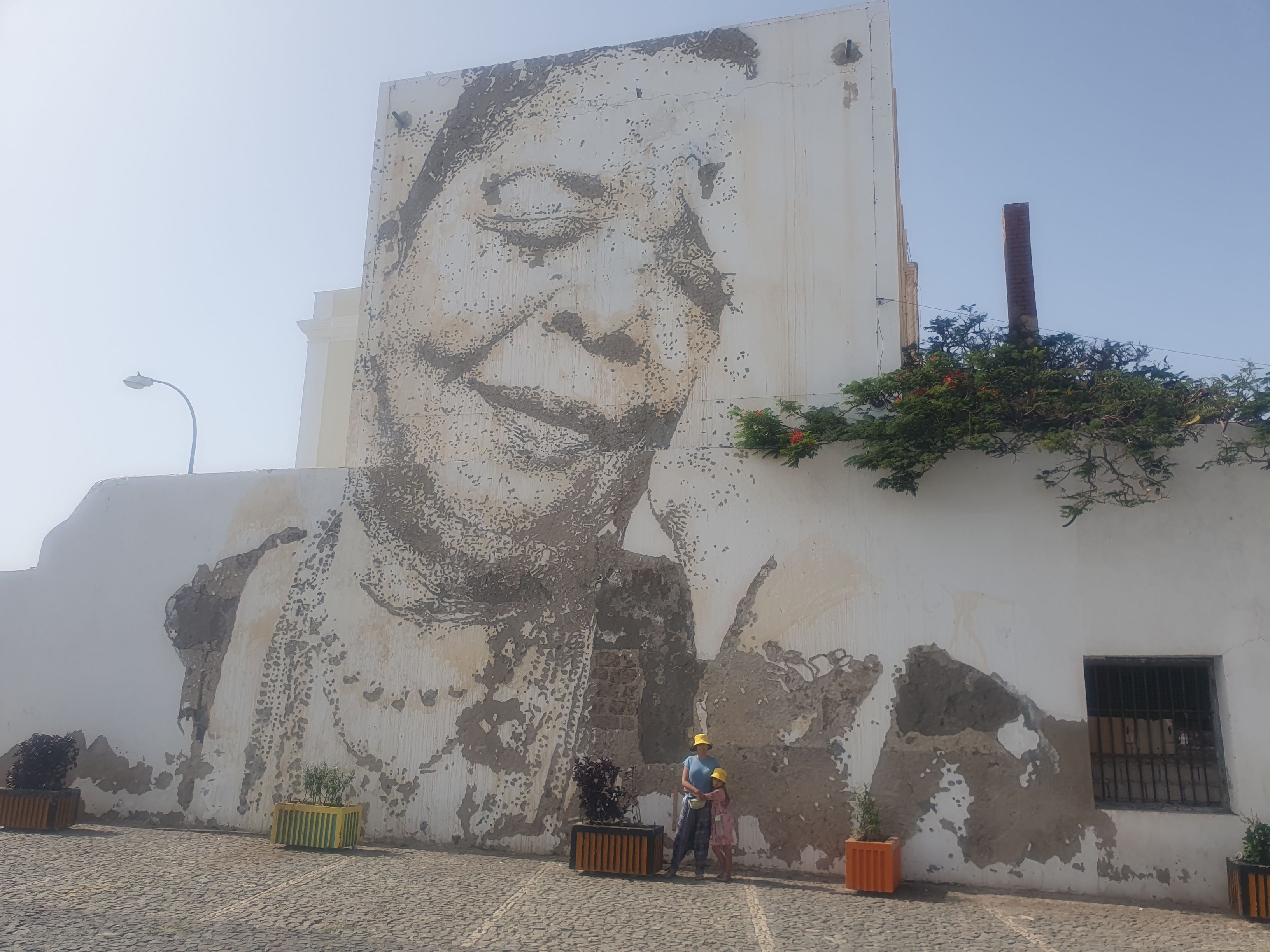
The first stop is the police and customs office. Contrary to concerns, the procedures go smoothly, we fill out a few papers, and after about an hour we are free. The longest part of the process was waiting for the customs officer, who disappeared somewhere, but when the policewoman called, he returned immediately. We head to the city center. This time, the streets of the city are bustling with life.
There are no shopping centers or larger markets here; there are stores specializing in plumbing, electrical, electronics, etc., or "Chinese centers" offering a mixed bag of everything. We are looking for a sealing strip for the engine cover. Normally, we used window weather strips for this purpose, but in a tropical country, this is an exotic product – the sellers try very hard to help us, come up with who might have such an oddity, and finally, in a Chinese construction store, we manage to get a couple of rolls of weather strip.
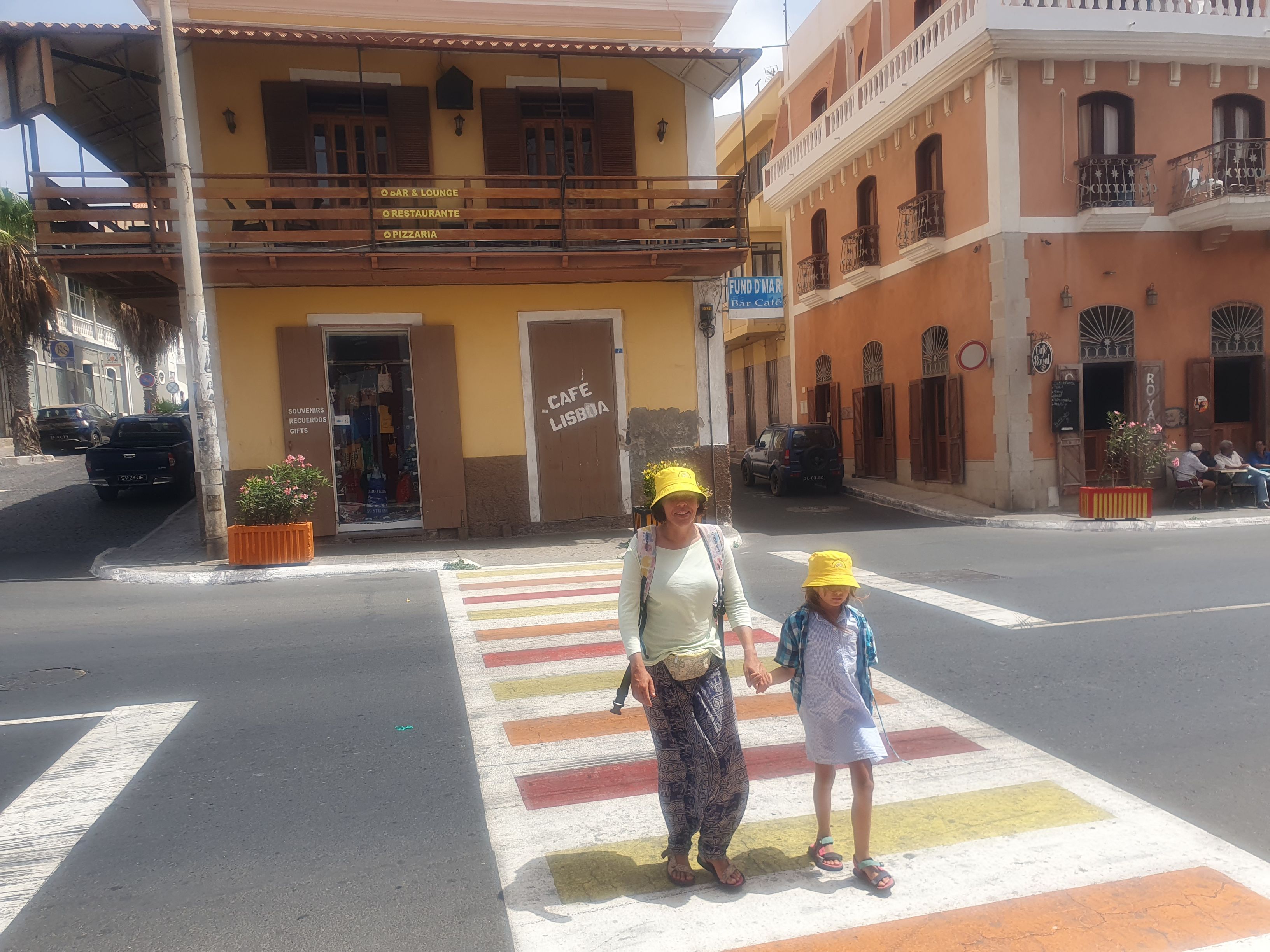
Wandering around the city, we came across a bakery with delicious rolls – we will supply ourselves there throughout our stay – and now we are heading to the city vegetable market. Farmers display their carrots, sweet potatoes, beets, peppers, papayas, bananas, and entire piles of exotic spices here. We come across a fruit we have never seen in our lives, and the name doesn't tell us anything either. In response to our questions, the saleswoman explains that it is eaten raw when it softens. Later, we manage to find out that it is graviola (a fruit originating from Asia).
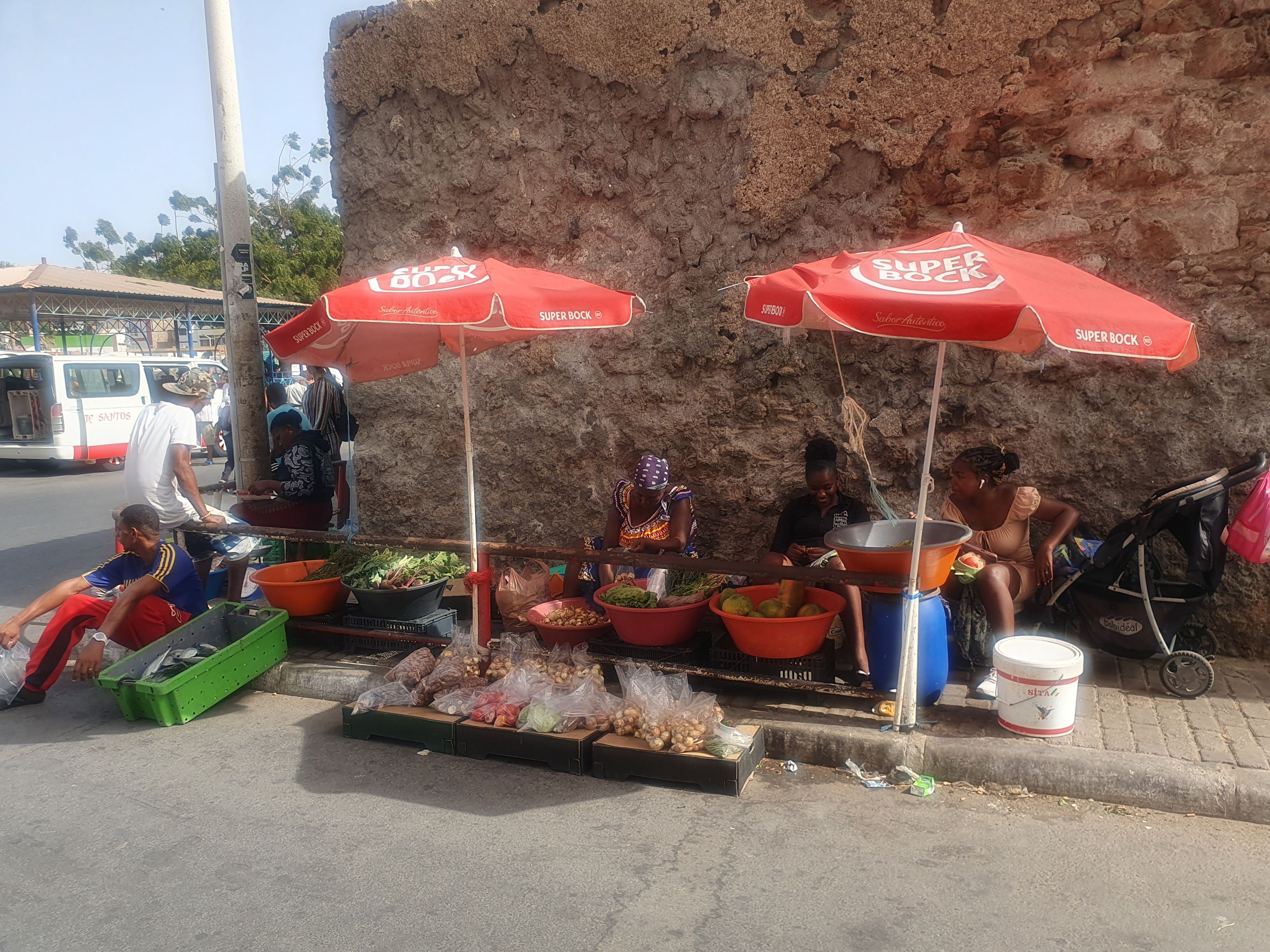

The official language of Cabo Verde is Portuguese, and all printed material is in this language, but Creole is spoken – Portuguese vocabulary and syntax from West African languages. Many people also speak excellent English, Spanish, and French. People are communicative, friendly but (except for a few beggars) not pushy. When Kamilka went down from the boulevard to the beach to look at something, a local fisherman immediately started running along the sidewalk looking for us, calming down only when he realized that we saw the child and that she had moved away with our consent.
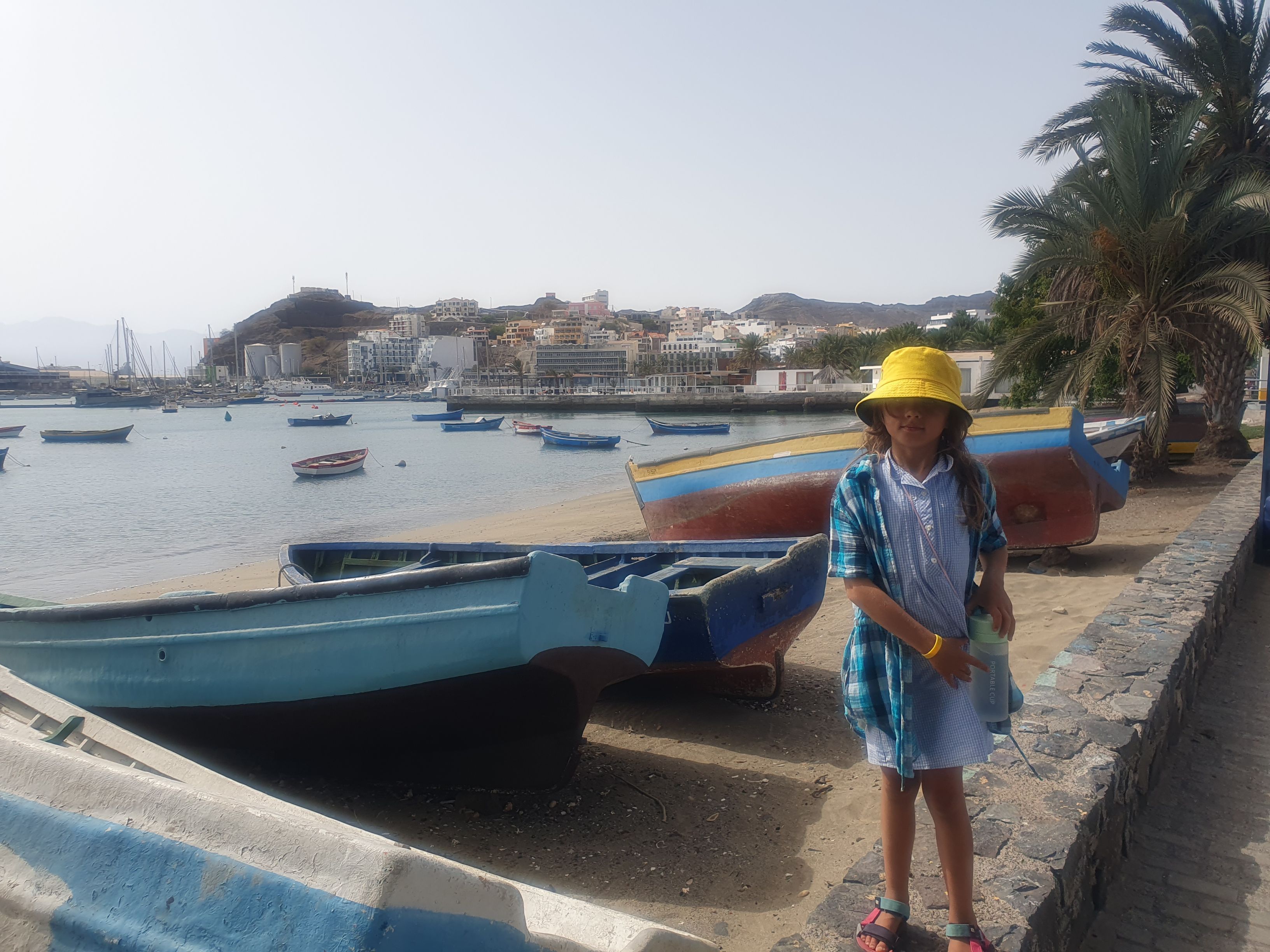
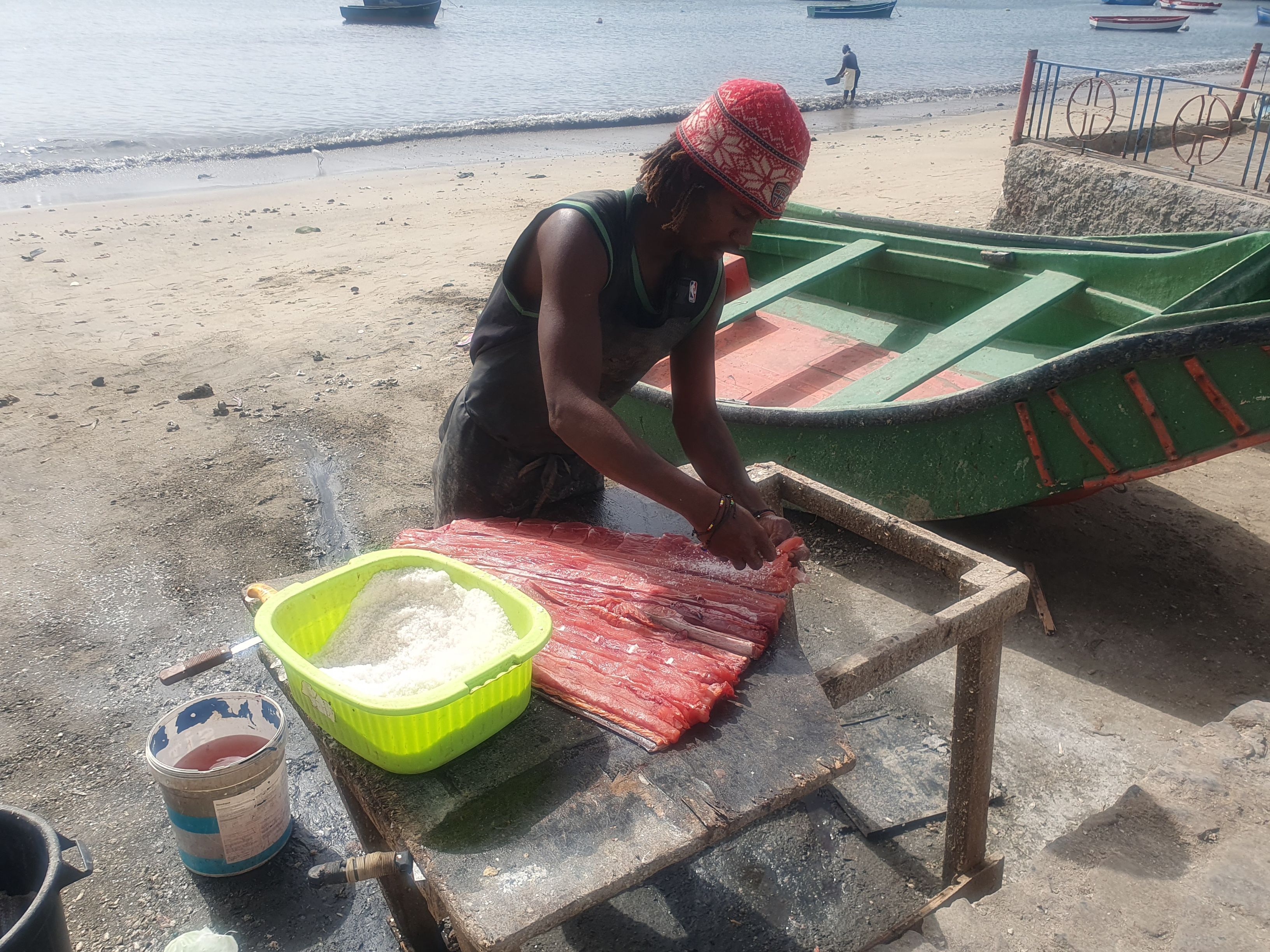

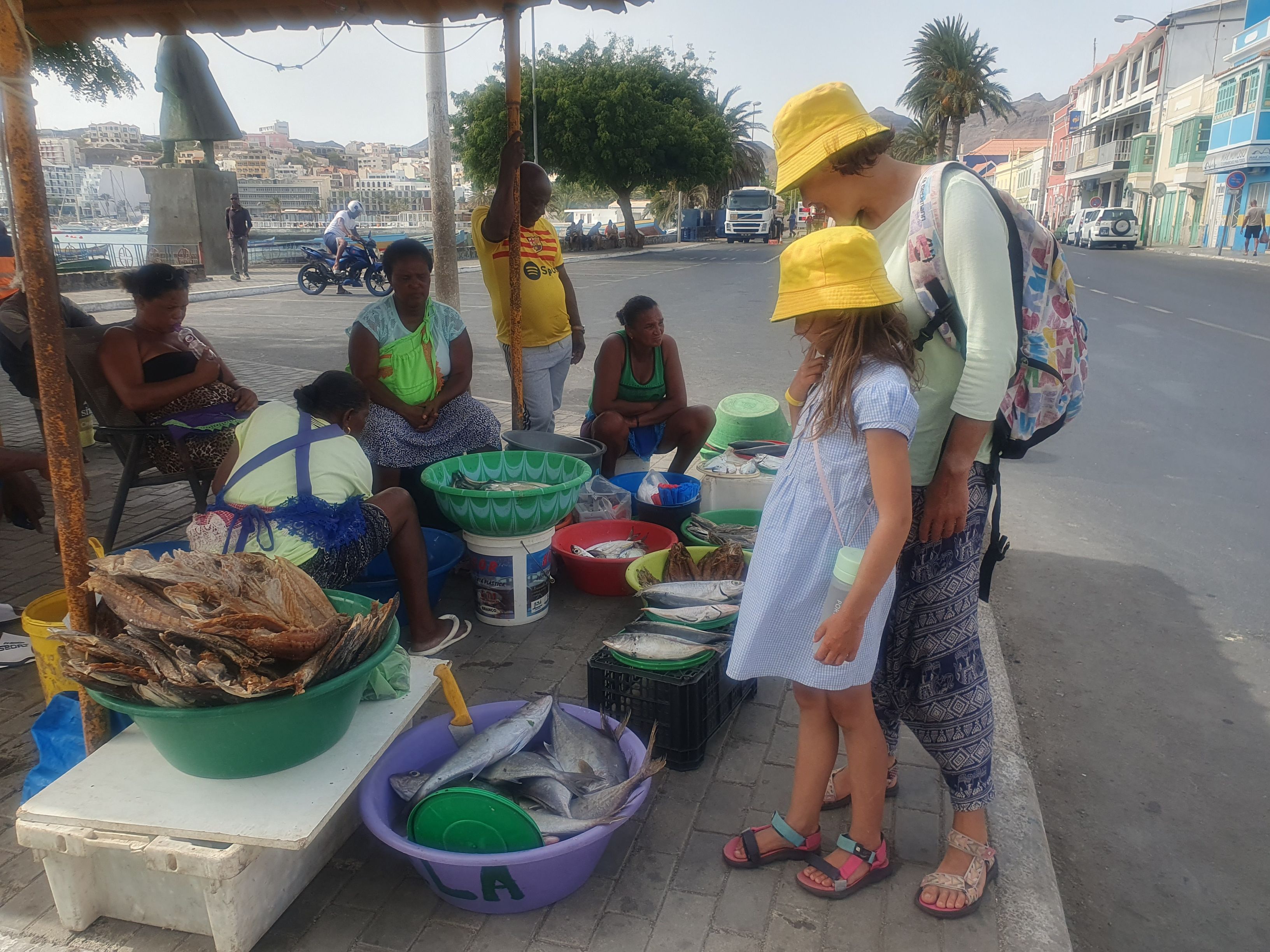
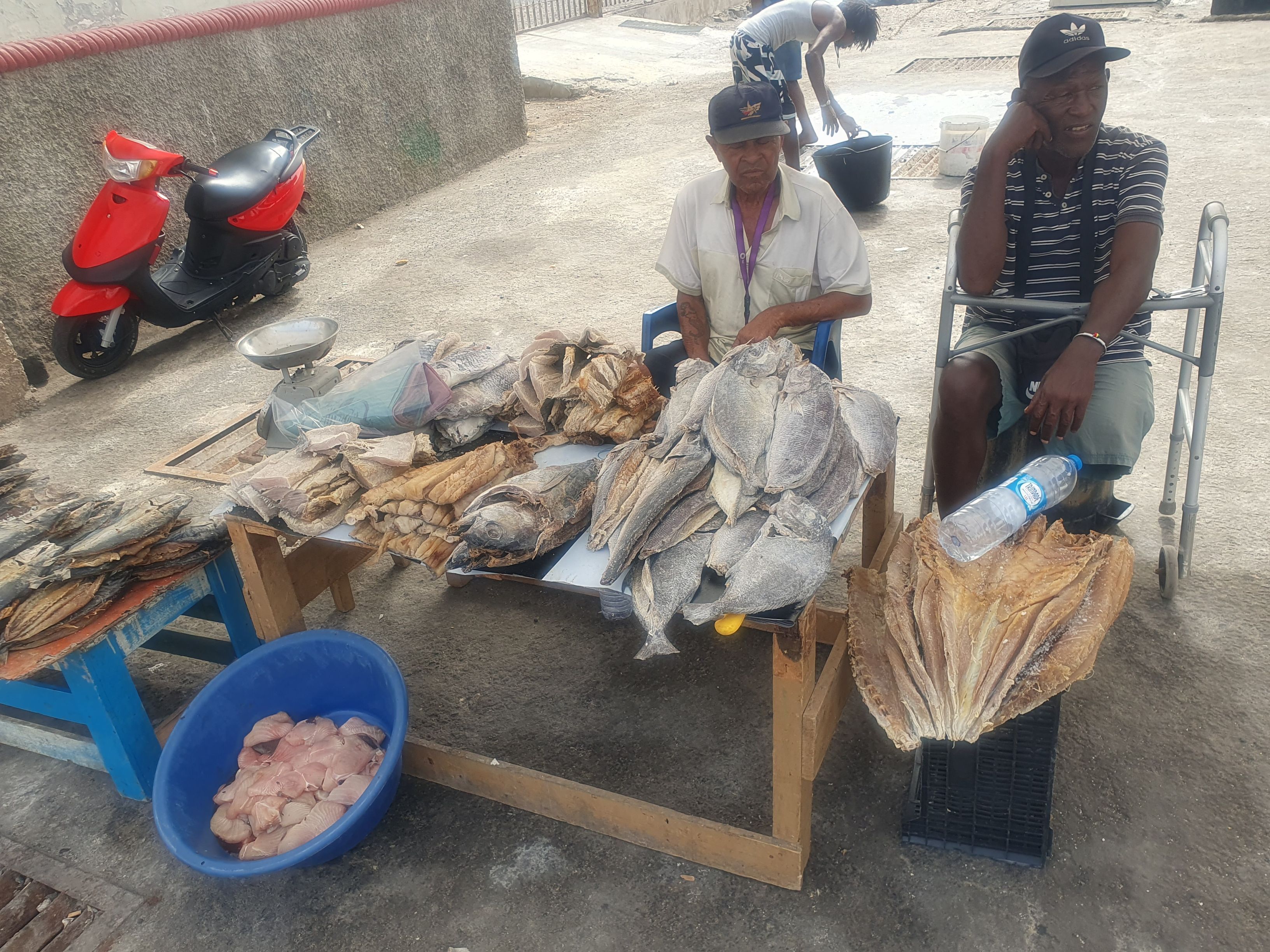


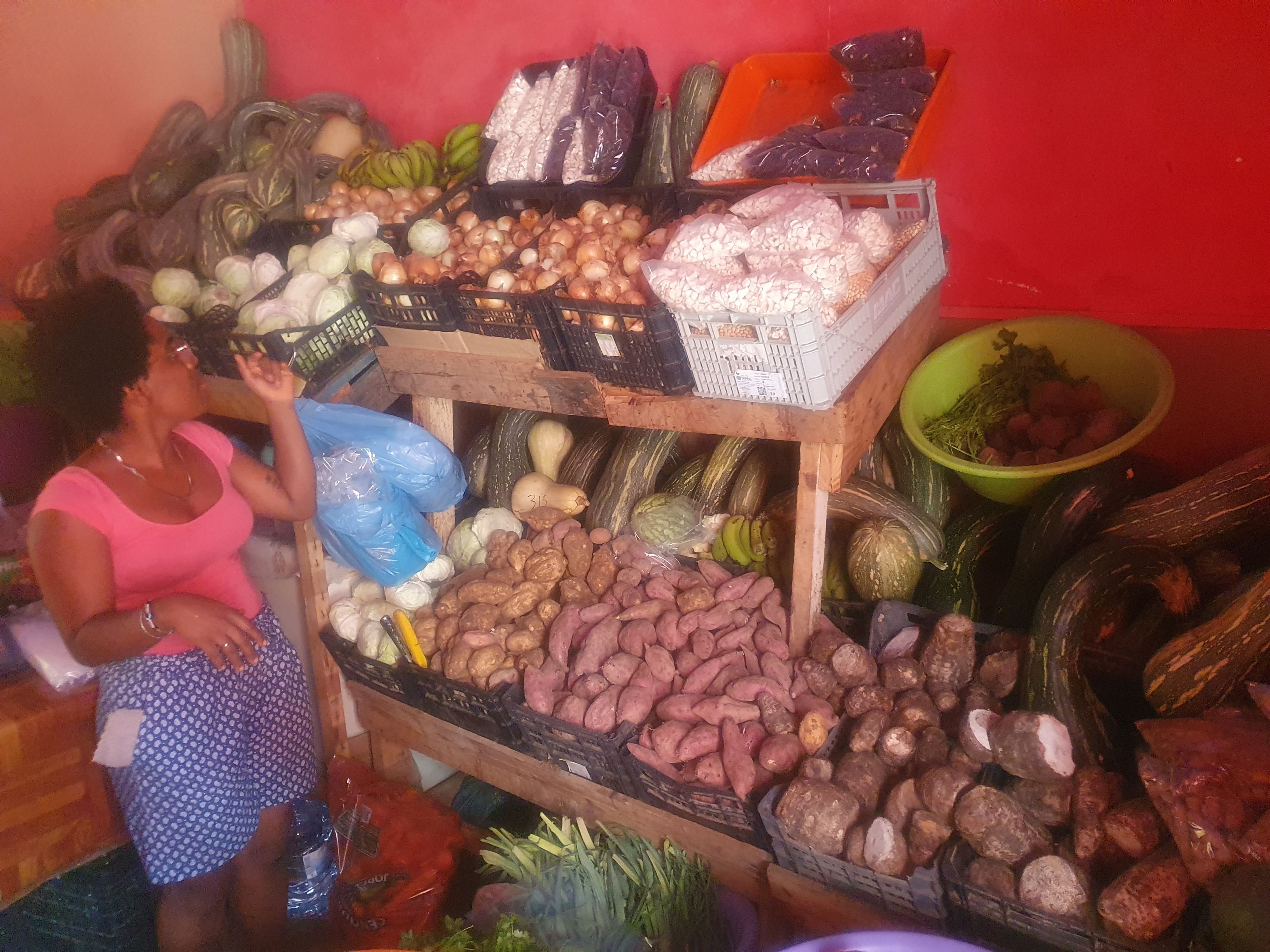

We come across a local textile and gadget bazaar. There is a mix of local bracelets, hats sewn in China, and genuine artistic products from Cabo Verde and West African countries. We purchase a mask made on the neighboring island of San Antonio – the seller explains that it is related to cows or livestock in general, which are economically and symbolically important to the residents. Economically, cattle are still significant – we indulge in delicious cheeses made from sheep's, goat's, and cow's milk offered by local markets.
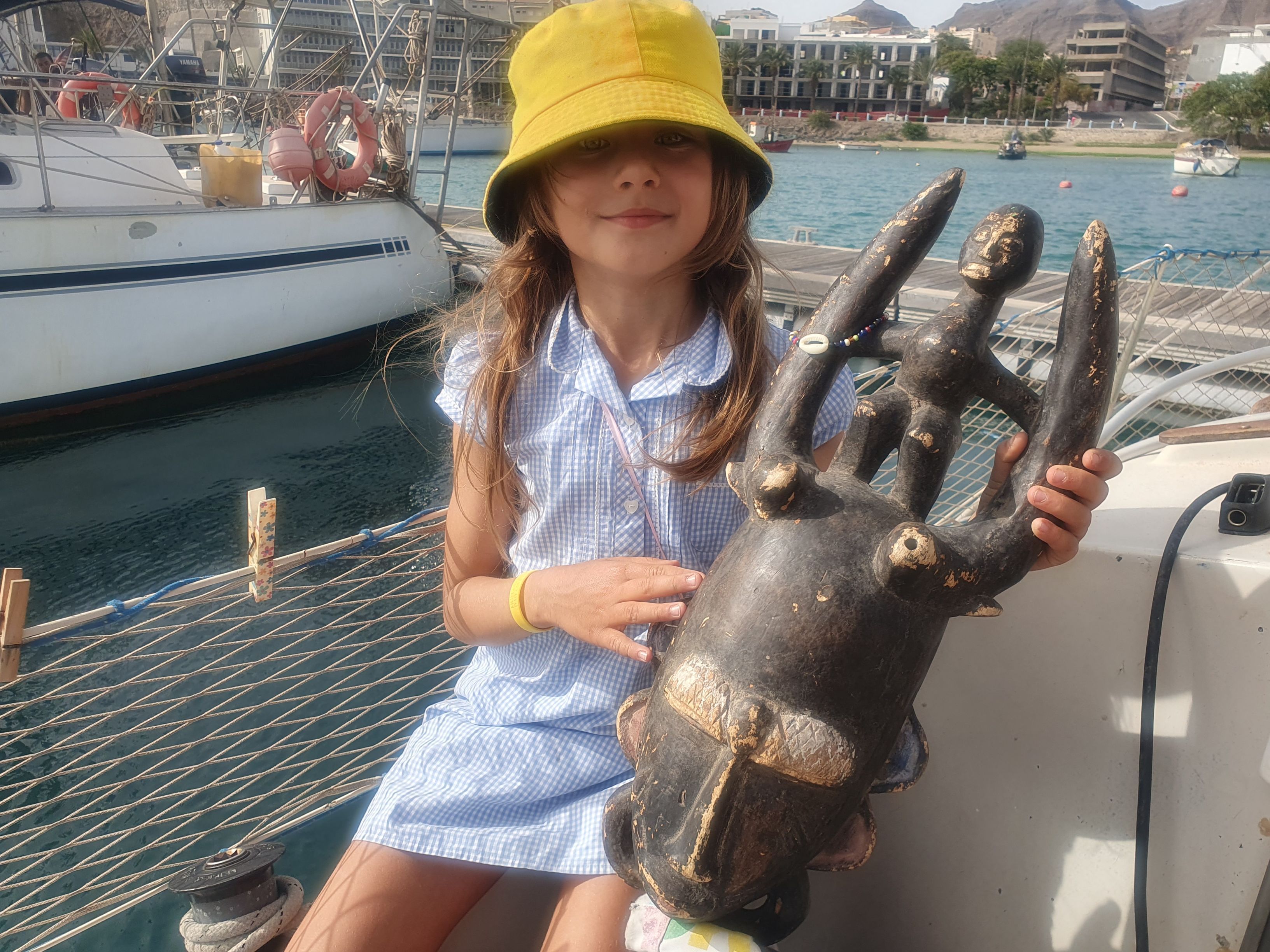
The next day we come to the bazaar to buy another mask that Kama liked. These are authentic, old masks that once had some significance for the locals, and now they sell them at the price of plastic toys.
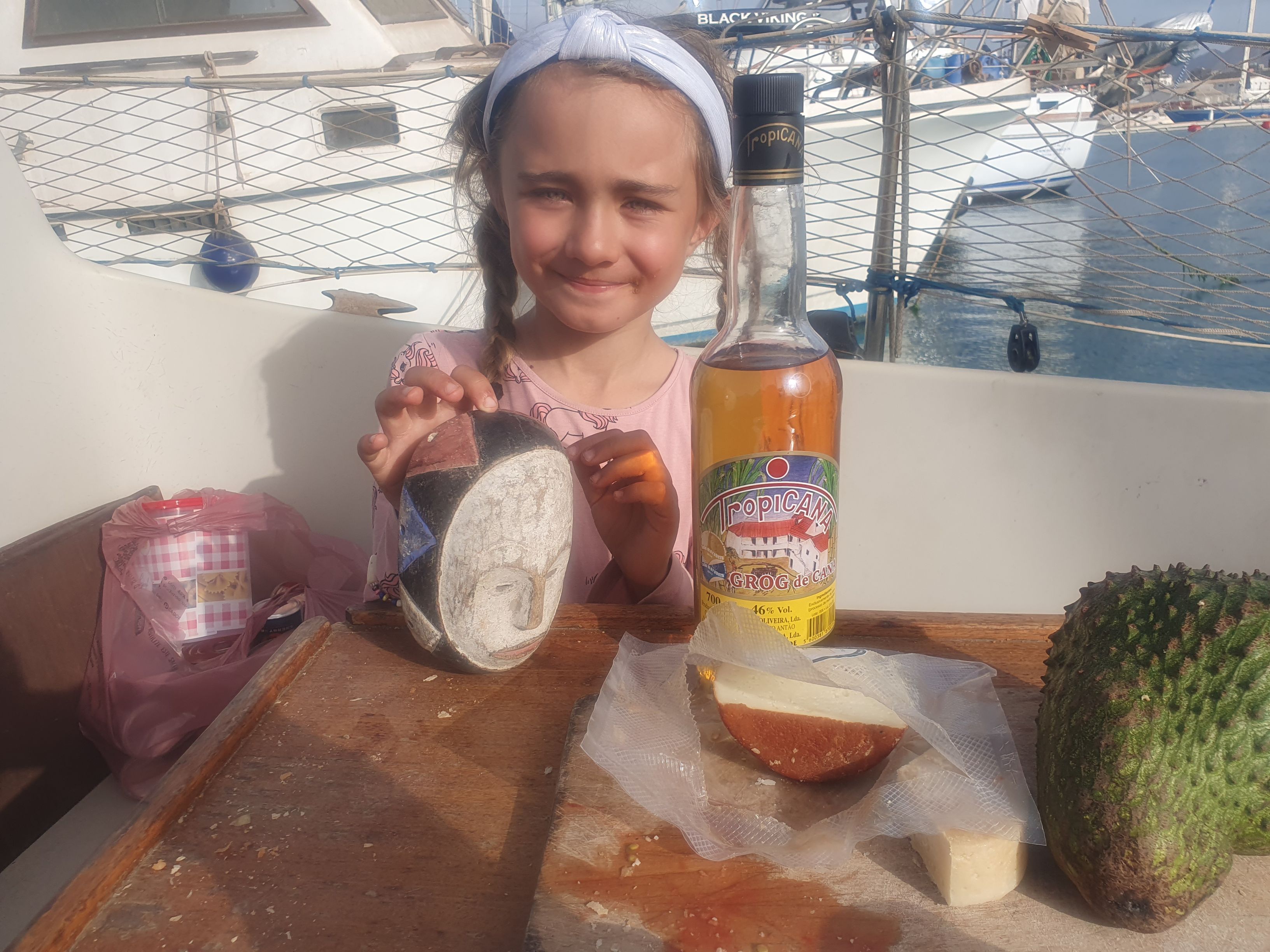
We partly cook ourselves and partly eat at the marina's diner. The dish of the day costs 5 euros and the portion is such that we only order two because neither Zuza nor Kama could manage to eat a whole one. We definitely want to try a dish that is something like a national dish. The waiter informs us that it is a breakfast dish and that it can only be ordered in the morning. So the next day we arrive almost at the opening of the restaurant and order katchupa times three. Plates appear on the table with two fried eggs per person, sausages, and a hearty portion of mixed legumes, along with a spicy sauce to pour over. The local breakfast is enough to serve as a hearty Polish dinner.
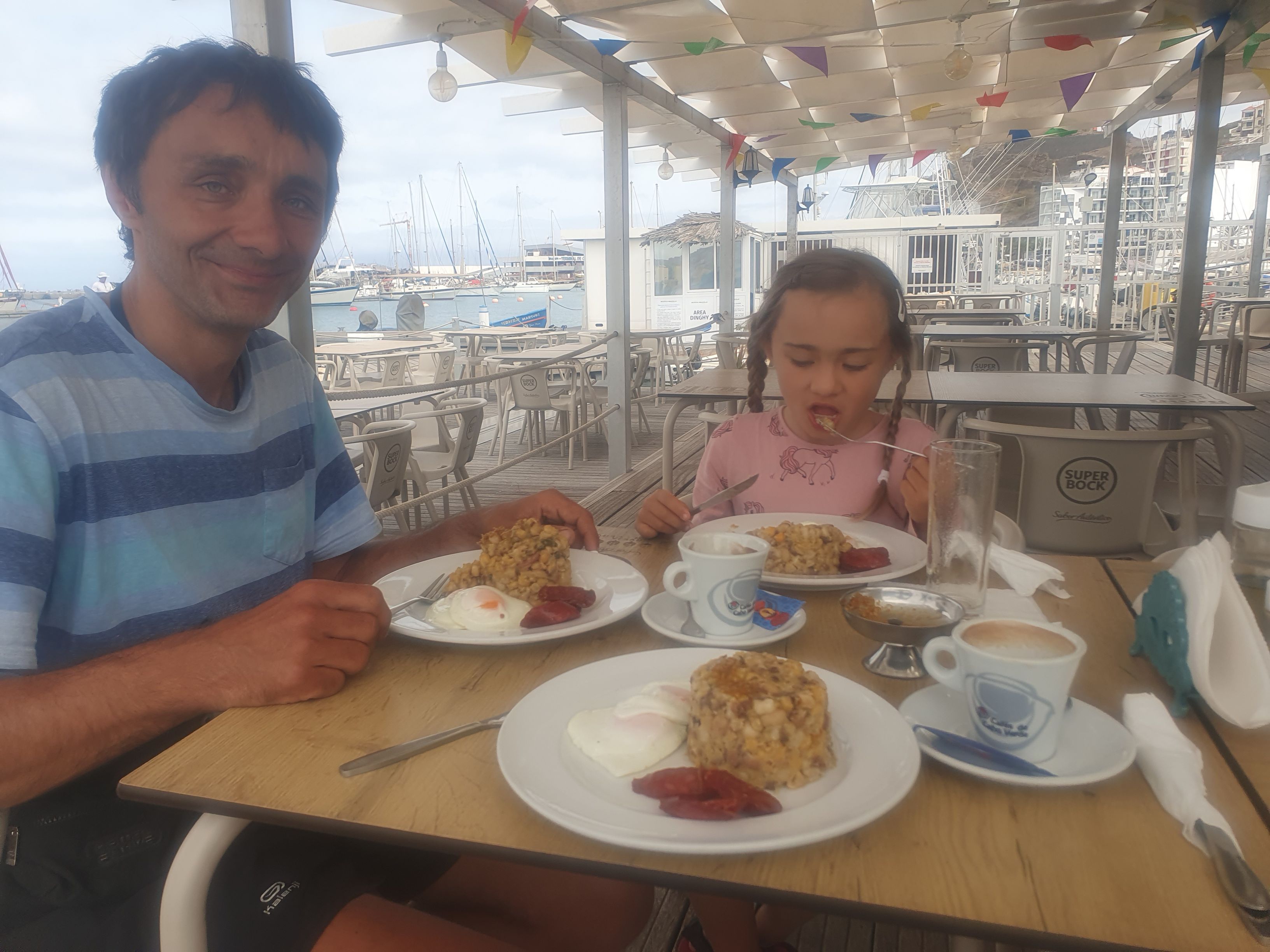
When Kamil manages to catch up with his work and we have the whole afternoon free, we head to the beach advertised as the main attraction of Mindelo. It really looks like a picture – white sand and turquoise water. For those interested, there's a jet ski rental, but most people just sunbathe on the sand or splash in the water. Both guests from the nearby five-star hotel and locals come here. We conclude that theft may not be that bad here since local kids leave their backpacks with phones on the beach and go swimming.

We cook dinners ourselves, but we go to a port tavern for lunch. This way, we get to know local delicacies – chicken in curry sauce, kachupa in a soup version (one plate with mixed bean soup and the other with vegetables – potato, sweet potato, carrot, meat, and lard), pork stew served with potatoes and rice.
However, there was an occasion when we arrived too late, the dish of the day was finished, and we had to order from the menu. Kama chose Creole sausage, Kamil opted for a mysterious pork snack a la San Antao, which he hadn't tried yet, and Zuza ordered hummus. It turned out there was no hummus, and the waiter offered something else, which we weren't quite sure about, but we agreed. The sausage came in a spicy sauce with pineapple and vegetables – the child ate it slowly because it turned out to be quite hot. Zuza received delicious squid with fries. The locals really know how to prepare fish and seafood. The most interesting choice was Kamil's since the snack turned out to be a large portion of pork offal (heart, liver, lungs) in a fairly tasty sauce, garnished with fries. He ate it with limited enthusiasm because he expected something else. At the end, we splurged and had wahoo (a pelagic fish – a large predator) in curry sauce, chef's grouper, and a seasonal salad with grilled shrimp in herbs. Everything was delicious.
Kamil noticed that we lost one radar reflector, not a major loss because the tubular reflectors we have are ineffective. The second reflector was barely hanging on as the zip ties had decayed. To avoid littering the ocean, he decided to tie it with a string. This provided an opportunity to inspect the mast. It turned out the salty air in La Restinga took a toll on our mast, especially the radar mounting, which consists of various metals. The stainless steel screws corroded holes into the aluminum angle bracket. Fortunately, it turned out we had large enough washers in reserve to cover the holes, which should suffice for this voyage. It's a relief that it mostly corroded the radar mount brackets, not the mast itself. A similar fate befell one screw hole holding the steps on the mast. Although stainless steel reacts relatively poorly with aluminum since both metals are covered with a protective layer of hard oxides, the bottom screw, which holds the step in a good position, wore out the hole enough to allow movement. Fortunately, the top screws (which mainly bear the force) are much more solid, going through the mast completely.
Another thing destroyed by the salt is the original brass clips for the halyards. They lasted from 1974 until now when they became so encrusted with oxides that they had to be cut open as they couldn't be opened any other way. We hope the "showers" of the equatorial zone will wash the salt from all the nooks and crannies.
Galvanic corrosion generally destroys everything where two different metals come into contact. When we bought the yacht, Kamil received a Henry Lloyd waterproof jacket from his Brother for Christmas. It was still serving this year when we crossed the doldrums on our way to South America (it only started leaking then but was already well worn). In this case, the jacket's designer underestimated the role of saltwater and galvanic corrosion at the connections of different metals. After about two years of use, the snaps connecting the hood to the jacket began to fall apart. Initially, they were fastened with small stainless screws where the rivet broke, but eventually, this also corroded, and the hood was simply sewn on. Fortunately, the zipper and remaining buttons were made of plastic or a single type of metal, so the flaw proved minimally problematic and probably does not occur in typical oceangoing storm jacket models from this well-known company.
We are slowly preparing for the next leg of our journey, including oiling the wood and sealing the hatches, as we expect a lot of rain on this year's route.
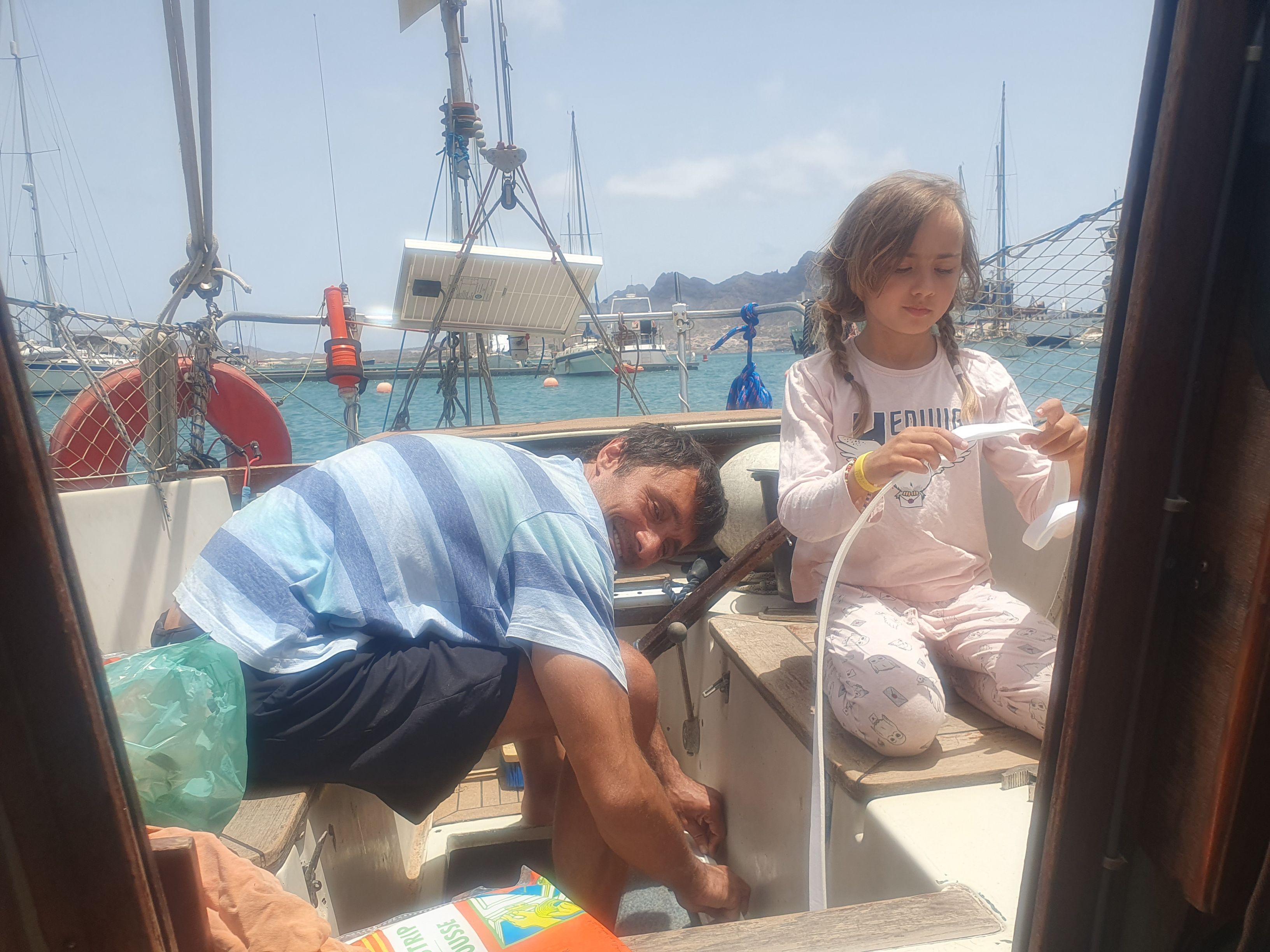
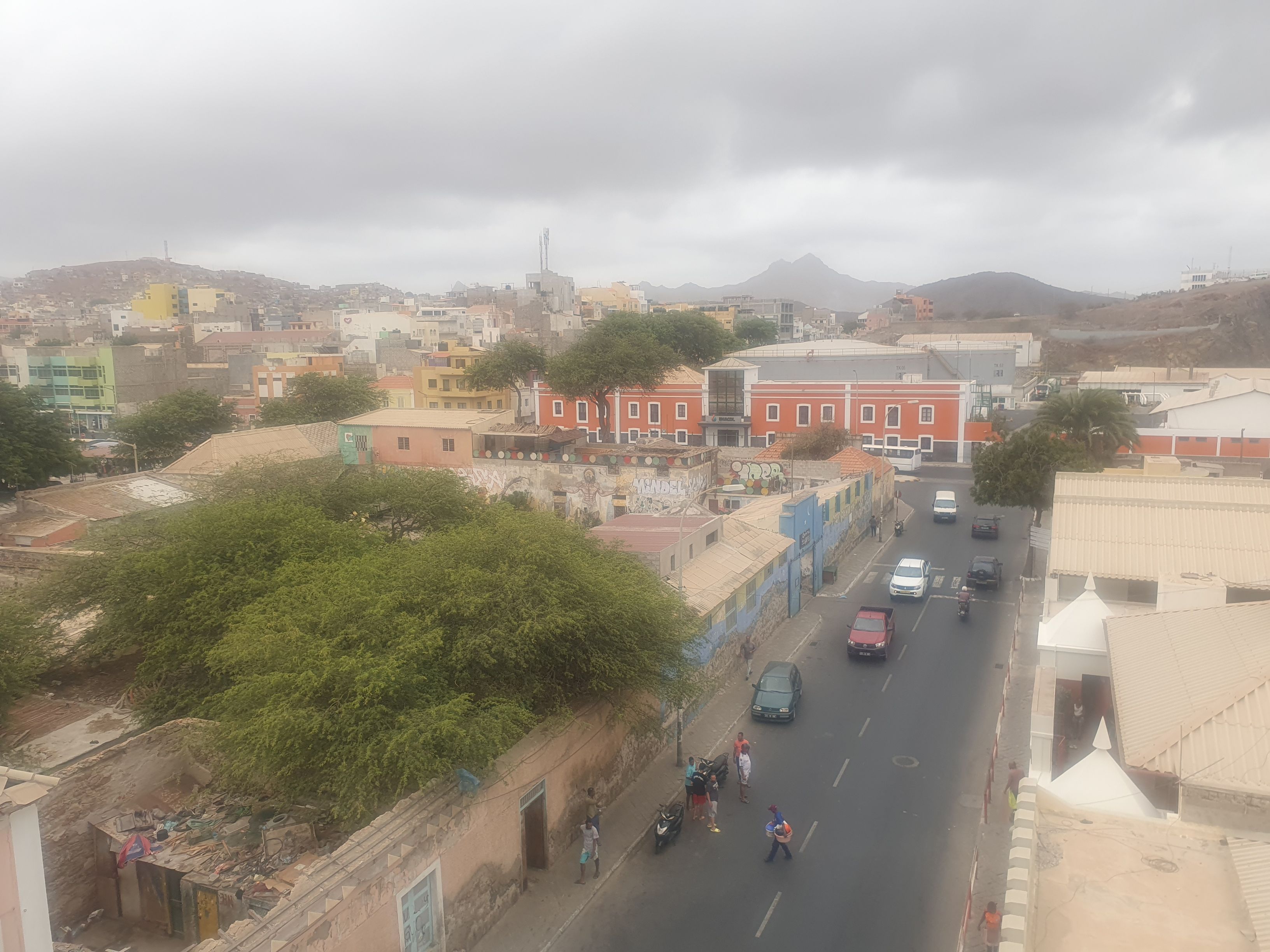
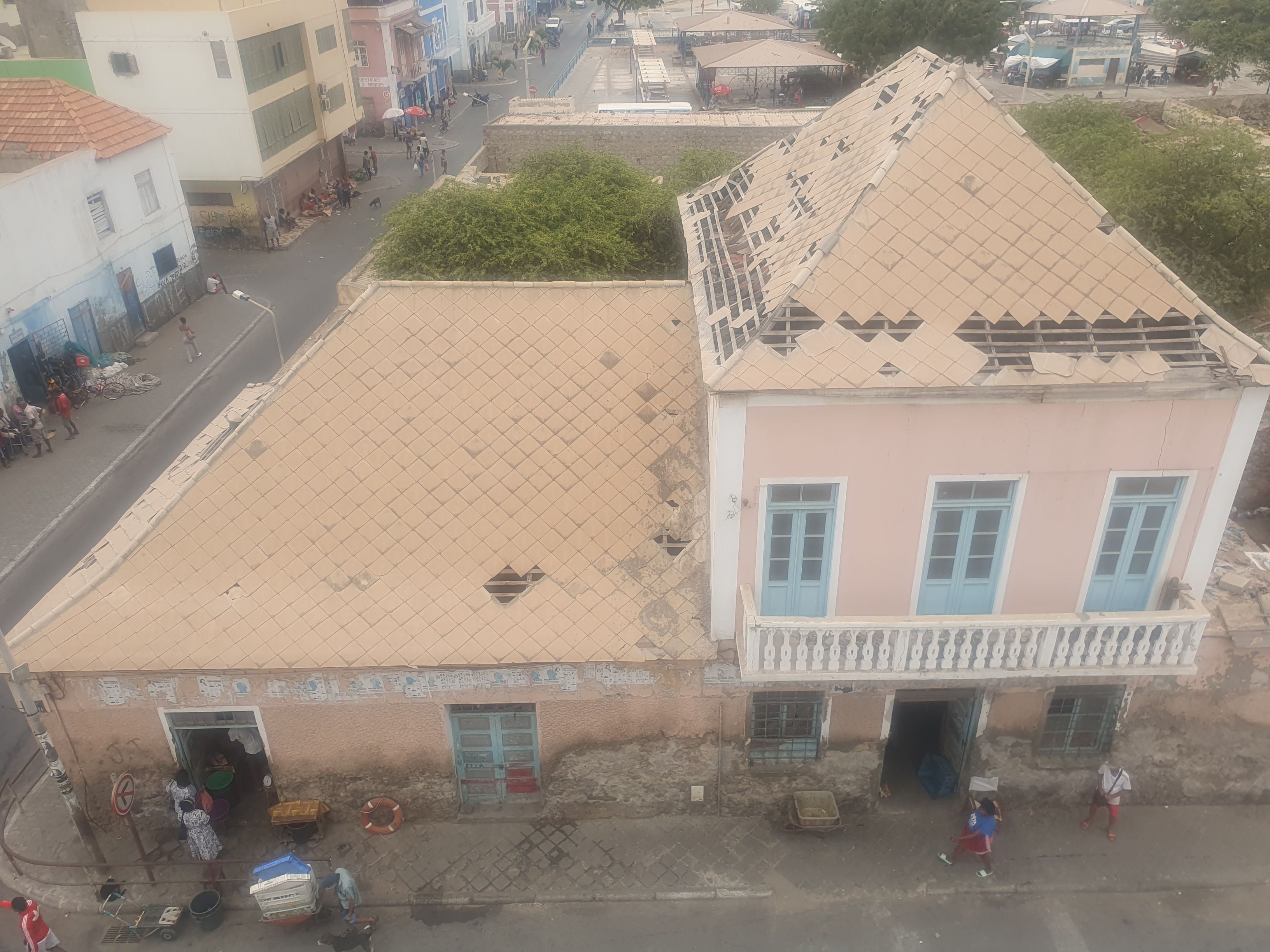
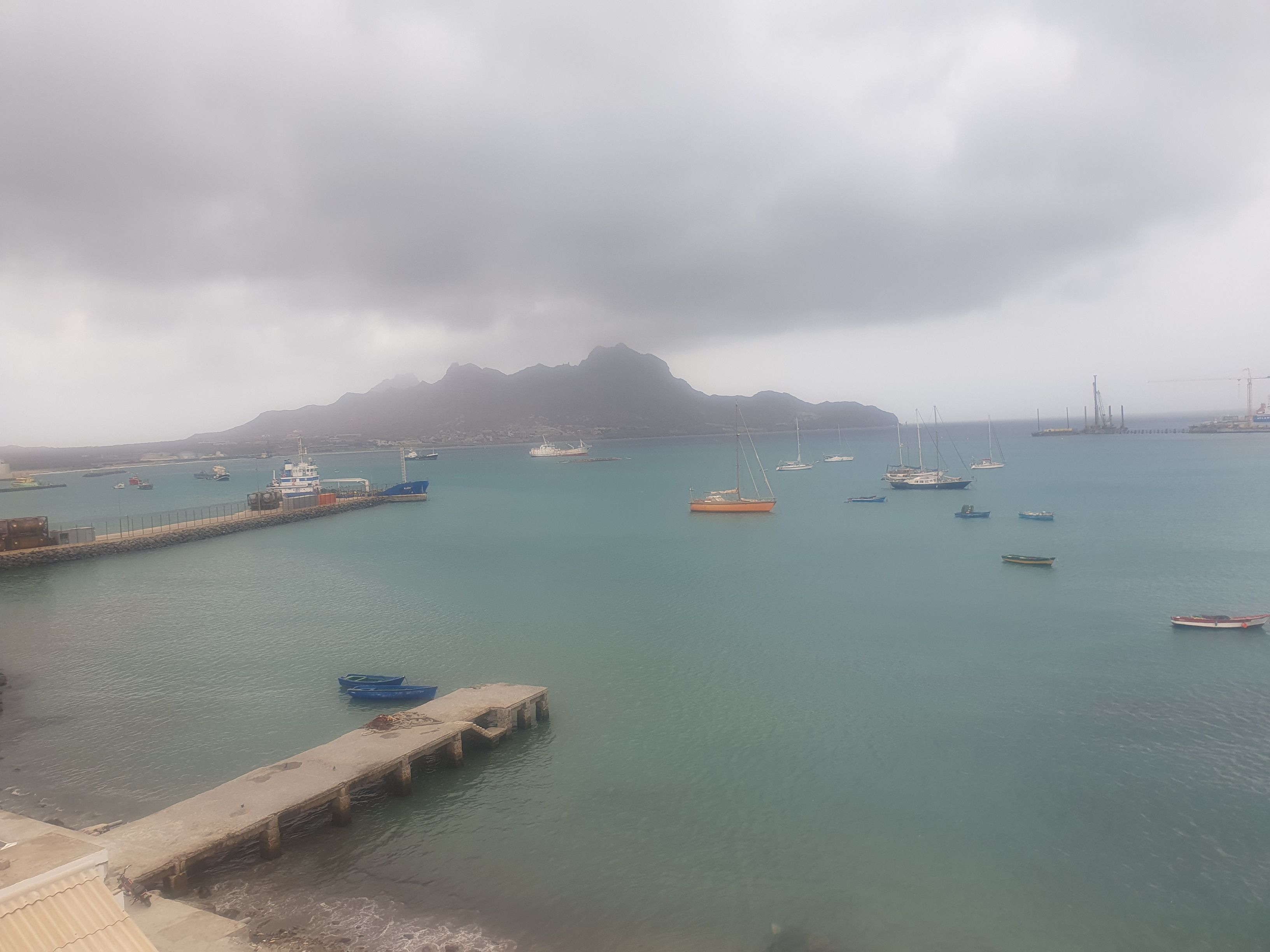
Mindelo – Iles du Salut
We plan to start the "big leap" on 2.07, because on the first, Kamil has to file official paperwork (including JPK). However, the wind is very strong during the night from the first to the second. Zuza wakes up in the middle of the night with the thought that they could still cancel the whole event, sell the boat, and spend the rest of the vacation in Sao Vicente. In the morning, we analyze the weather again. Theoretically, it should calm down by evening, but the sea is very rough, so after a week on land, we will definitely be seasick. Since calm is predicted for the next day, we decide that we prefer an easy start at the cost of a one-day delay. Consequently, we catch another "dish of the day" at the marina's restaurant—a delicious herb-encrusted fillet seems to confirm the rightness of our choice. Acquainted sailors we meet are happy to see us, wondering all morning how we're managing in this wind.
By 10:00 on 3.07 we set off. Even in the funnel between the islands of Sao Vicente and Sao Antao, the wave is not high. The wind at first is also small, but when we peek behind the islands, we start sailing at 5kn, which is a very decent speed for our yacht. This puts us in a good mood for the entire journey. The captain, who is also the cook, carefully prepares the menu—we will be relying solely on our own stores for the next three to four weeks, which is naturally not very diverse. We have pasta, rice, couscous, tomato sauces, olives, peas, corn, various bean dishes, canned sausages, seafood, and tuna. We also have a few fresh onions, garlic, squash, and a large amount of powdered soups and Grandma Zosia's Soups brought especially from Poland—these are mixtures of dried vegetables and spices. They require a little longer to cook than typical packet soups, but they taste much better and are completely natural.
This time we do not repeat the mistake from the previous part of the journey and carefully sort the cans—food for bad weather is at hand, while more demanding items are hidden quite deep. Since the waves are small, Kamil decides on Cape Verde pasta with tomato sauce and olives. Upon opening the can, it turns out to be tomato concentrate instead of sauce. Even diluted, it's quite thick. In Cape Verde, eggs are not used in pasta production—we're not sure if it's for this or other reasons, but it cooks faster than ours. As a result, it turns into something like a tomato pancake with disintegrated pasta. Only the olives are as expected. Despite the unique consistency, the dish is tasty and devoured.
In the following days, Captain Cook reaches the heights—we receive mahi mahi chops and captain's risotto with fresh pumpkin, lentils, onions, and herbs. Having bought a five-kilogram bag of rice, we try to consume it more than pasta, as it will be more difficult for us to store it if necessary. We discover it turns out very well when rice is sautéed on a randomly selected can of seafood in oil and with added onion and herbs. On hot days, moist and cool salads are most popular. Everyone eats soups with enthusiasm but they can only be cooked on small waves and when it's not extremely hot—none of our stoves have a pan clamp, so the cook has to hold the pot by hand the entire time of cooking.
The Atlantic is typically crossed in winter, when the trade wind blows, and there is no risk of hurricanes along the way. Such a hop takes about 2-3 weeks. However, it's much more convenient for us to get some weeks off in summer, so when Kamil found a year-round route in one of the atlases, it intrigued us. He conducted thorough analyses—generating graphs of maximum wave heights from archived GRIB files (weather data since 1940), which we post here: GRIB
They show where hurricanes start as storms and do not yet have destructive power. Meanwhile, average wind data is available from the atlases we had already purchased. It turned out that the journey would take a bit longer, 3-4 weeks, but the route is safe. In summer months, with a good forecast, the solution is to quickly head from Cape Verde Islands to areas near parallel 10N. In this area, storms do not gain hurricane strength due to the weak influence of the Coriolis force. Typically, in July, the area of weak variable winds and heavy downpours with squalls (nautically called doldrums, more scientifically the ITCZ – Inter-Tropical Convergence Zone) should be more to the south and relatively narrow, thus easy to pass (after passing the 30W meridian). The plan was to head SW to the 10N parallel, then west to the 30W meridian, and from there straight to Guyana.
Already in Mindelo, it turned out that the wind setup looked like the August charts from the atlases, confirmed by the first-ever category 5 hurricane, occurring so early—Beryl. Therefore, we had to bypass the hurricane zone from a wider arc and often got caught in doldrums. We had a satellite internet, Iridium, which we used for downloading weather forecasts. This facilitated route planning—we knew when it paid off to go more south and when west to avoid lulls, and when to hurry to catch some wind.
On the first day of weak winds, we decided to set out the spinnaker. We generally use this sail sparingly, bringing it out once every few years—it's truly huge and can capsize the boat. Even Per Brohall, the designer of our Albin warned that it can certainly be used, but one has to know what they’re doing and ideally there should be three people for its handling. In nearly total calmness, we hoisted the monster on the mast, trimmed the autopilot, and didn't supervise closely. When the wind died down completely, the sail wrapped around the forestay, and when it blew again, a problem arose. With a spinnaker, it’s hard to either lower or untangle. We decided to help ourselves by changing course with the engine. Finally, it worked. During the process of taking down, the spinnaker tore, and it turned out that the fabric in the area was easily torn apart by fingers. So, the sail is for the dumpster, it served too long exposed to UV radiation.
Occupied with untangling the sail, we forgot about the discarded fishing rod. When Kamil noticed it was wrapping around the propeller, we immediately turned off the engine, but it was necessary to dive and untangle the braid from the propeller. It was even possible to recover the wobbler, and because it was required to raise the wind vane steering gear's rudder to unfold the ladder, it provided the entire crew with the desired swim and play on a floating rope behind the yacht in incredibly warm water, in the middle of the Atlantic. Proved the saying that every cloud has a silver lining.
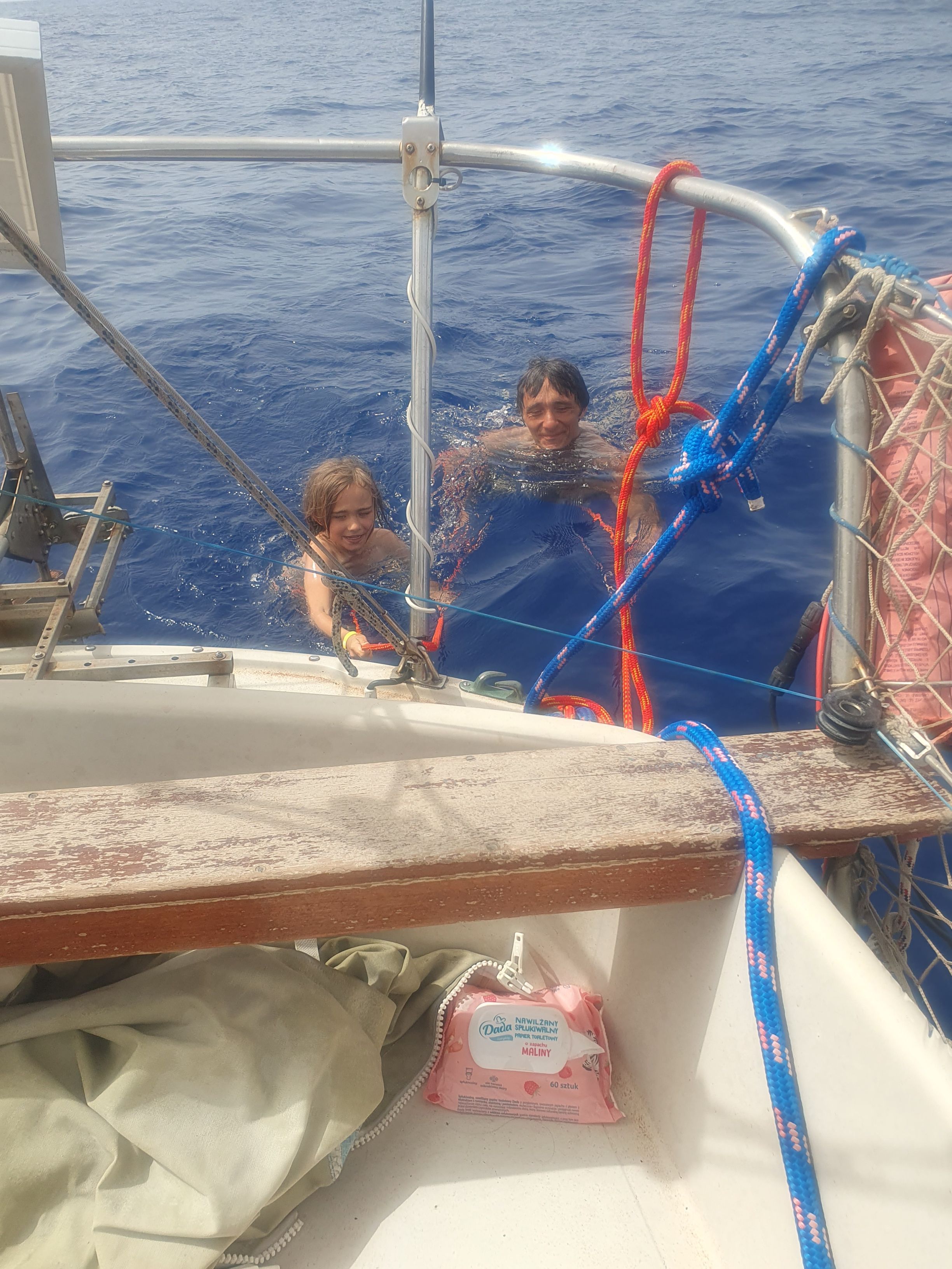
Upon reaching the 12N parallel, it became clear that continuing south would lead to getting stuck for longer in calms and headwinds. Weather forecasts (trusted for safety purposes no more than 3 days ahead in this zone) showed no hurricane formation and winds to the west within a few days would be between the 12N and 10N parallels. Further west, the ITCZ zone would also be narrower with fewer headwinds before reaching the southern hemisphere trade winds (since there was no chance of going directly towards Guyana against currents and weak winds given the weather conditions). However, the boundary between good weather and steady trades, and the capricious and stormy doldrums was quite blurred, and the forecasts uncertain, as we painfully experienced.
The first day near the 12N parallel was spent heading directly west on a close reach with a reefed mainsail, due to strong gusts. It calmed in the evening, so the jib was added. With very light winds, progress continued under a reefed mainsail and jib as a precaution for the night. There was nearly no swell, minimal wind, which lulled vigilance. The night was dark (new moon and cloudy), with very slow speed. Suddenly, a squall front hit unexpectedly. Kamil quickly reefed the mainsail and jib, started the engine, rolled up the jib, and sailed for about ten minutes on the reefed and flapping mainsail until the situation calmed down.
The next day brought a calm. Sailing continued on the engine, with periodic dives by Kamil to remove seaweed from the propeller. In the evening, a light breeze appeared and the jib was unrolled. Then we noticed that there was a one-meter tear near the sail’s free edge. This was a significant problem, as forecasts indicated further calms to the west, with favorable winds expected the next morning, which would carry us southwest, allowing us to cross a vital part of the ITCZ. Without the jib, chances for this passage would be lost, resulting in being stuck in the doldrums for several more days. Two other jibs were available: a giant genoa suitable only for full and lighter winds, and a smaller than currently used jib with a stressed sheet corner that required finishing its stitching. This was an ungrateful and arduous task. Last year, Zuza broke several sturdy sailmaker's needles on this sail.
In the end, Zuza steered using the engine while Kamil stitched the small jib. It took him half the night and wasn't perhaps a masterpiece of sailmaking, but considering the speed, it was an excellent job (and most importantly, despite fears, it didn’t tear until the end of the cruise and the second jib, stitched as a precaution, waited in the bag). As soon as the stitching was done, the sails were swapped. The engine had been turned off for some time as it was blocked by another batch of seaweed. Fortunately, the calm was complete, so the wind wouldn't disrupt the operation. Around one in the morning, the torn jib was unrolled (it was rolled up as soon as the damage was discovered) and the newly stitched sail was hoisted. The longevity of the provisionally stitched jib was uncertain, and the other would take another day to repair. If no propulsion was available, we would be drifting eastward. Entering the water at night seemed questionable. However, it seemed better than waiting for strong winds and building waves. So, Kamil decided to dive and clean the propeller (this year, good non-Chinese underwater flashlights made this easier).
An unpleasant surprise awaited - the propeller was clean, yet the engine wouldn't start (sometimes seaweed drops off on its own after turning off the engine, necessitating diving with a knife only when it doesn't start). Frequent engine stopping and starting had discharged the starter battery. There was an option to start the engine with a crank (a great feature of the Volvo Penta model), but the spot for decompressing and quickly compressing the engine was quite deep within the machinery and, when hot, it was easy to get burned. Finally, Kamil pulled the piston back a bit with the auxiliary belt, providing enough pull to start the engine from the battery, realizing the need to monitor frequent engine starts and stops closely.
A design flaw of the Albin was the lack of a gearbox and the possibility of shifting to neutral. The propeller rotates constantly, with only the blade pitch variable. This prevented clearing seaweed from the propeller without turning off the engine. Anticipating difficulties in the ITCZ we reserved over 140 liters of fuel. However, seaweed drifting across the doldrums rendered the engine useless. Consequently, a substantial part of the doldrums had to be navigated by old school sailing.
The rest of the night passed uneventfully. In the morning we felt sleep deprivation, but the wind was caught, carrying us into the doldrums zone. Forecasts were much less reliable here - predicted winds appeared with significant delays or from completely different directions. Large rain clusters were relatively well depicted, but their occurrence times didn’t necessarily match. Heavy tropical rain often brought squalls complicating sailing but provided opportunities to rinse salty clothes and especially collect drinkable rainwater. We discovered that it was the easiest to water in the pocket formed in a reefed mainsail – yielding 10 liters of water after a good rain. It tasted delicious though unfortunately not very lasting, leaving daily reliance on supplies and water from the desalination unit.
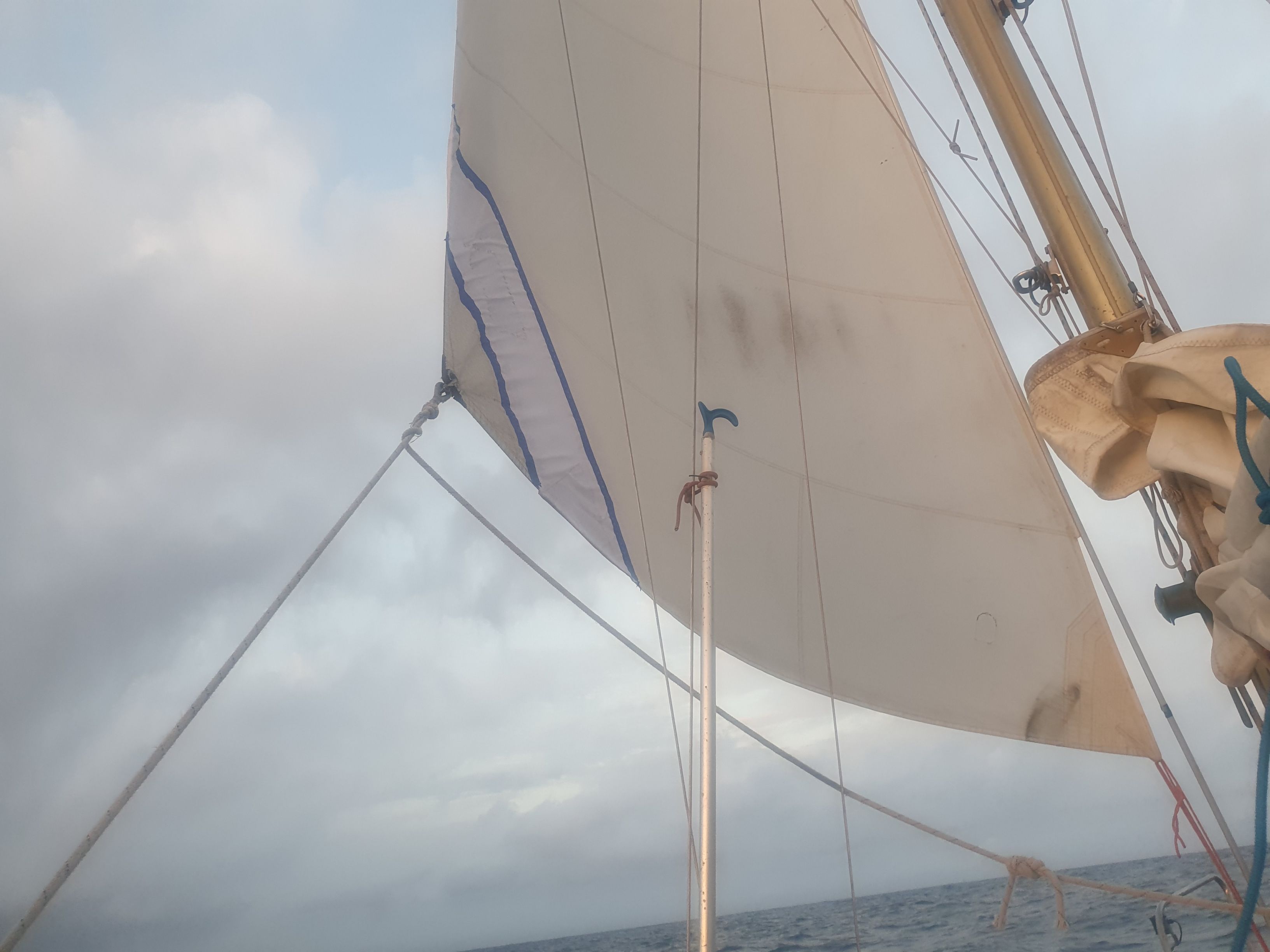
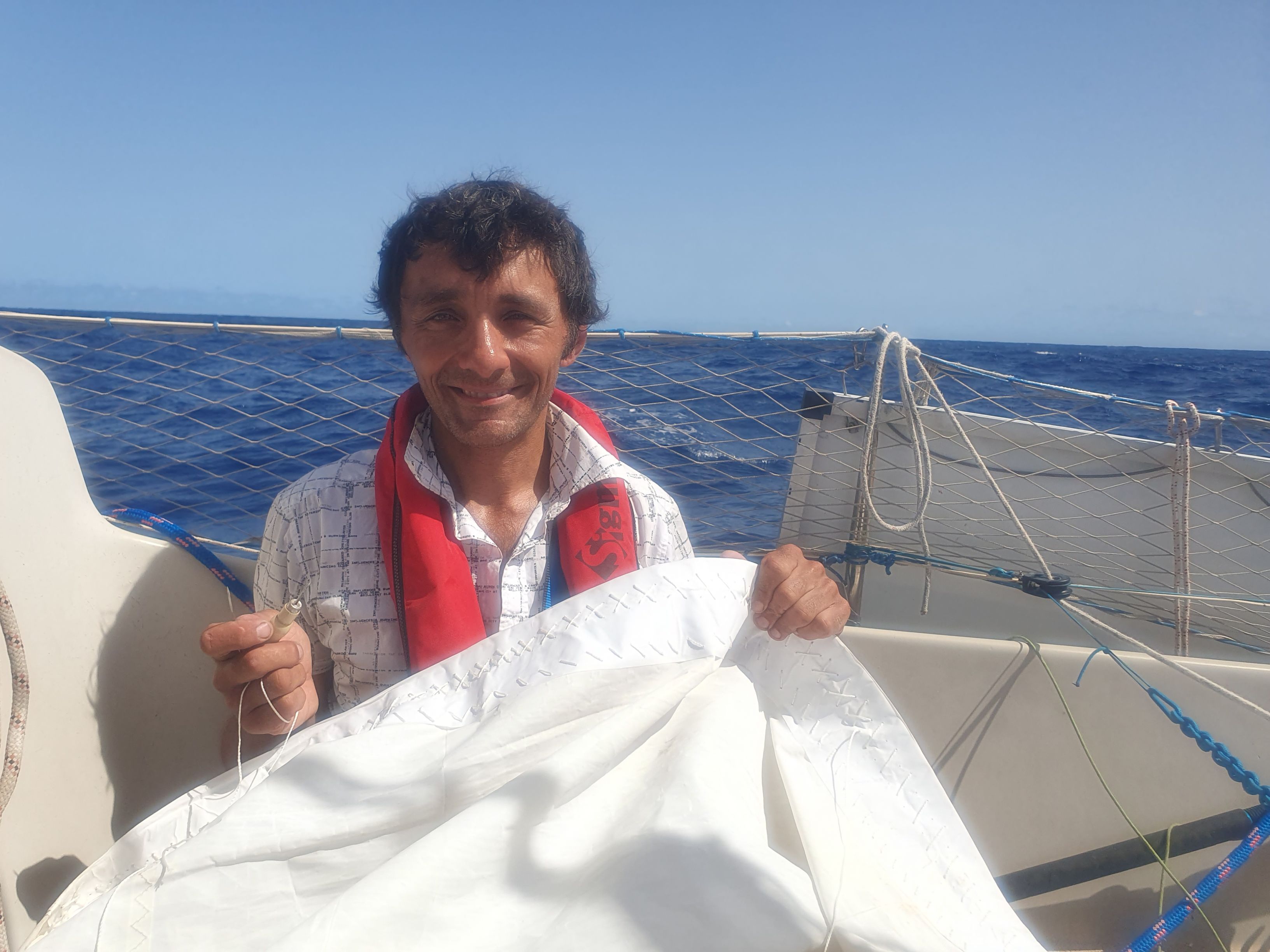
We brought along a supply of water, which on sensible use would suffice on its own, but the aim was to ensure that drinking wouldn't be a limiting factor and to avoid rushing to replenish the potable water supply right after crossing the Atlantic. Additionally, we took two desalination devices - one emergency unit - Katadyn Survivor-06 for the grab pack (or for taking on a raft). Even through Kamil had purchased at an auction of parts of an old aircraft life raft, it was not an inexpensive product. The second - QuenchSea - a new product, advertised as innovative, with a Polish version of the website and a Polish company office. This was meant to supplement water supplies during the cruise, but problems began during transportation. It turned out that we had to await delivery for several weeks because it was sent directly from China. Besides, it appeared to be a sizeable suitcase to take on a plane, necessitating additional baggage purchase. The product arrived without any instructions. Although there are YouTube videos showing how to use this equipment, on the ocean without broadband internet, one is left to rely on intuition alone. QuenchSea leaked from the first use. The vent valve, which according to the picture should be hand-tightened, leaked water and only worked when tightened with pliers, but then the soft plastic thread that secures it broke. This was patched up. The second issue was the intake filter. A minor inconvenience was that it is designed to float and needed weighing down (not the case with the Katadyn desalination device). The bigger problem was that the original filter, and the two spares, almost didn't let water through (nor did they allow air to be blown through them). Disassembly of one revealed that the likely cause was thin tubes improperly glued into the resin, with both ends sealed so that only a few tubes out of the whole bundle reached the outlet. Cutting the filter in half solved this issue. However, after desalinating 5 liters of water, the main plunger started leaking. Kamil disassembled it and replaced the worn o-rings (fortunately spares were included in the package). Unfortunately, the replaced o-rings wore out after desalinating another liter of water. Then Kamil attempted to unscrew the entire cylinder with the plunger (instead of merely removing the plunger from the top) to take a closer look. Unfortunately, this damaged the soft plastic thread connecting this cylinder to the membrane chamber, and even epoxy gluing failed to withstand the pressure. As a result, the desalination device went to our waste unit and was discarded on the other side of the ocean.
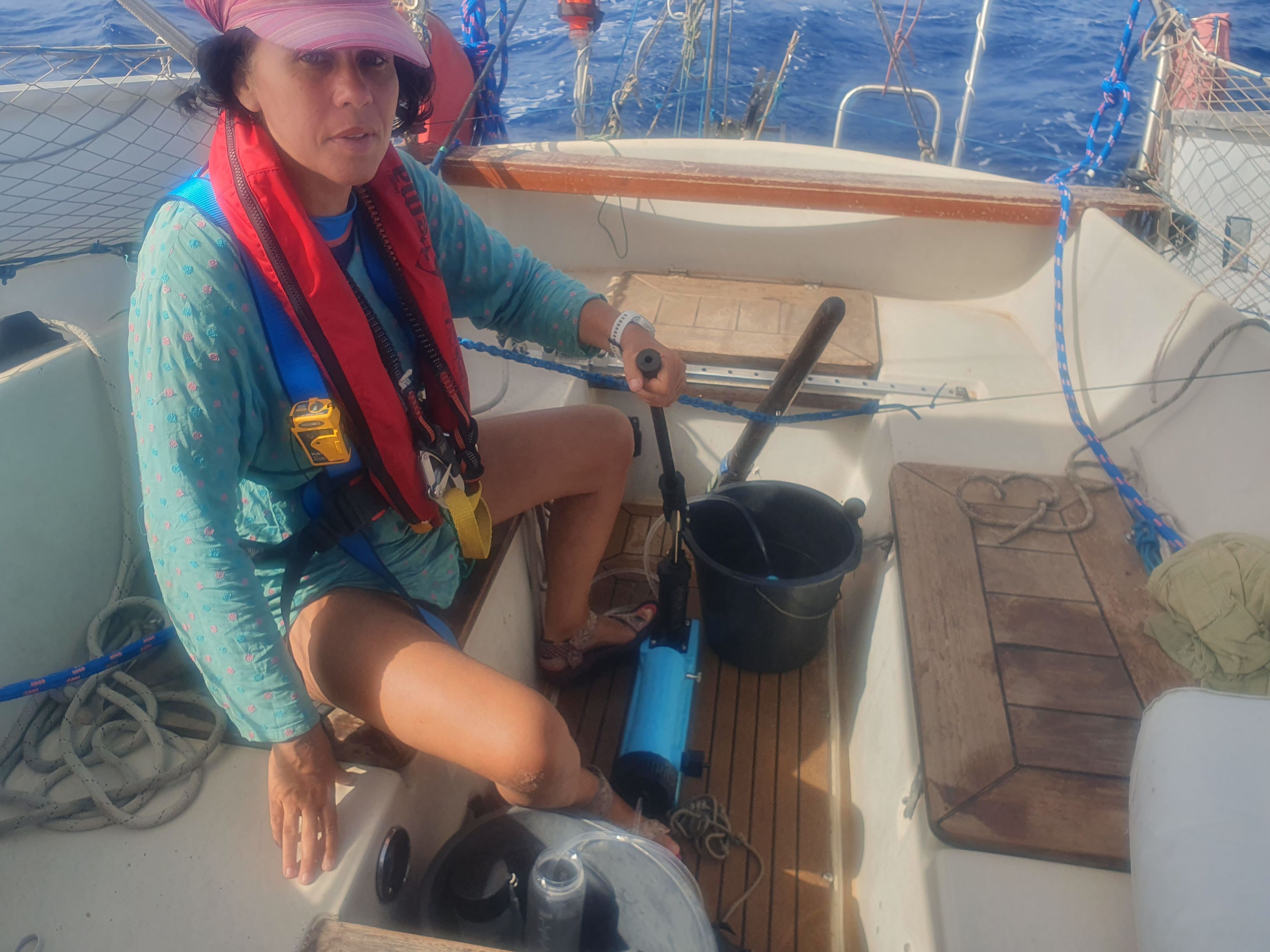
After the spectacular failure of QuenchSea, we decided to try the Katadyn desalinator and simply store it back in the grabpack when not in use. It should be noted that the product is described from the beginning as a rescue item and is not intended for long-term use. However, the build quality is indeed Swiss - the desalinator does not leak, and despite being 10 times smaller, it allows us to desalinate about 1 liter of water per hour of manual pumping, just as QuenchSea intended. An additional attraction of the night watch became packing the bicep using Katadyn (it's too hot during the day).


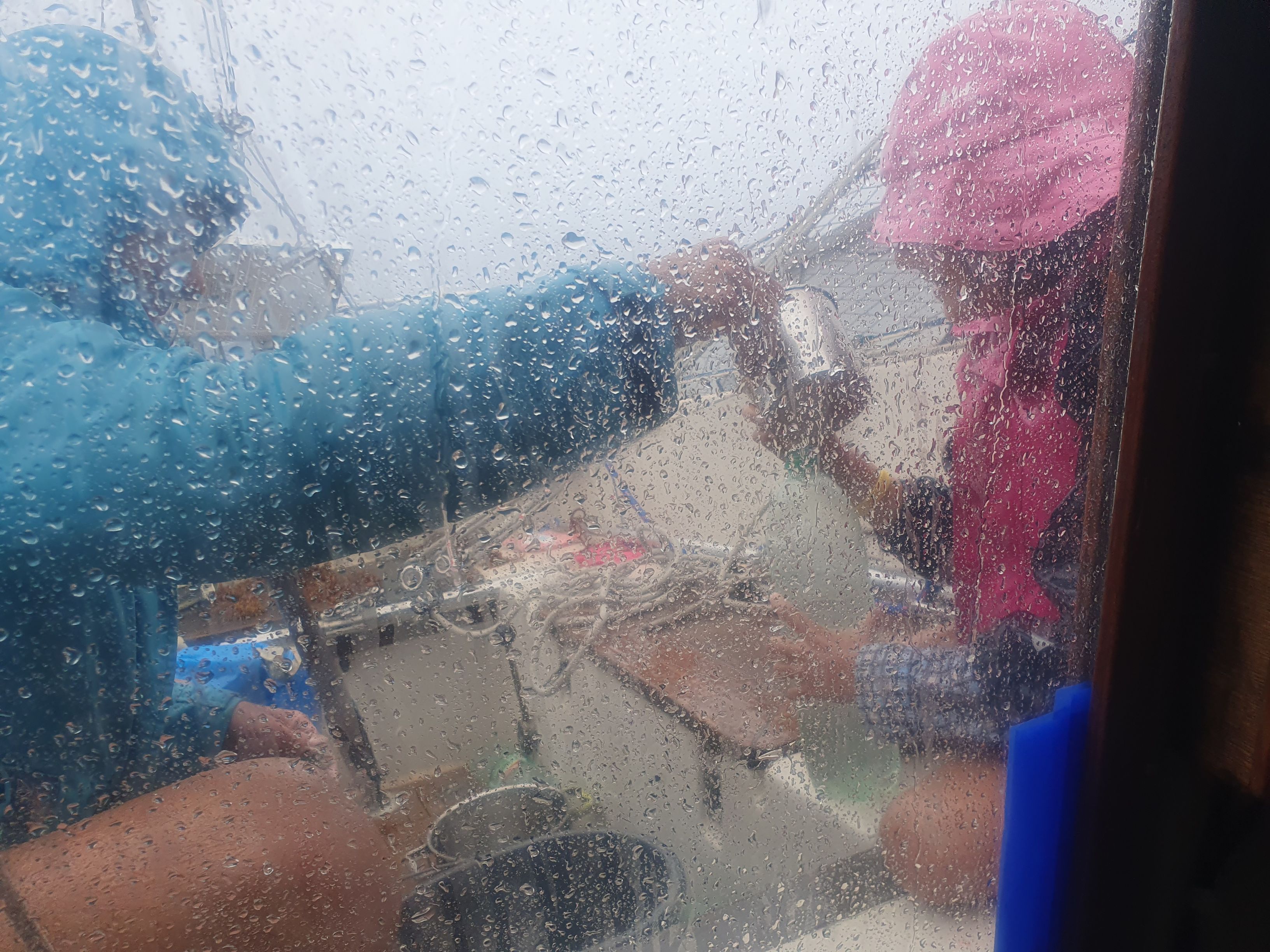
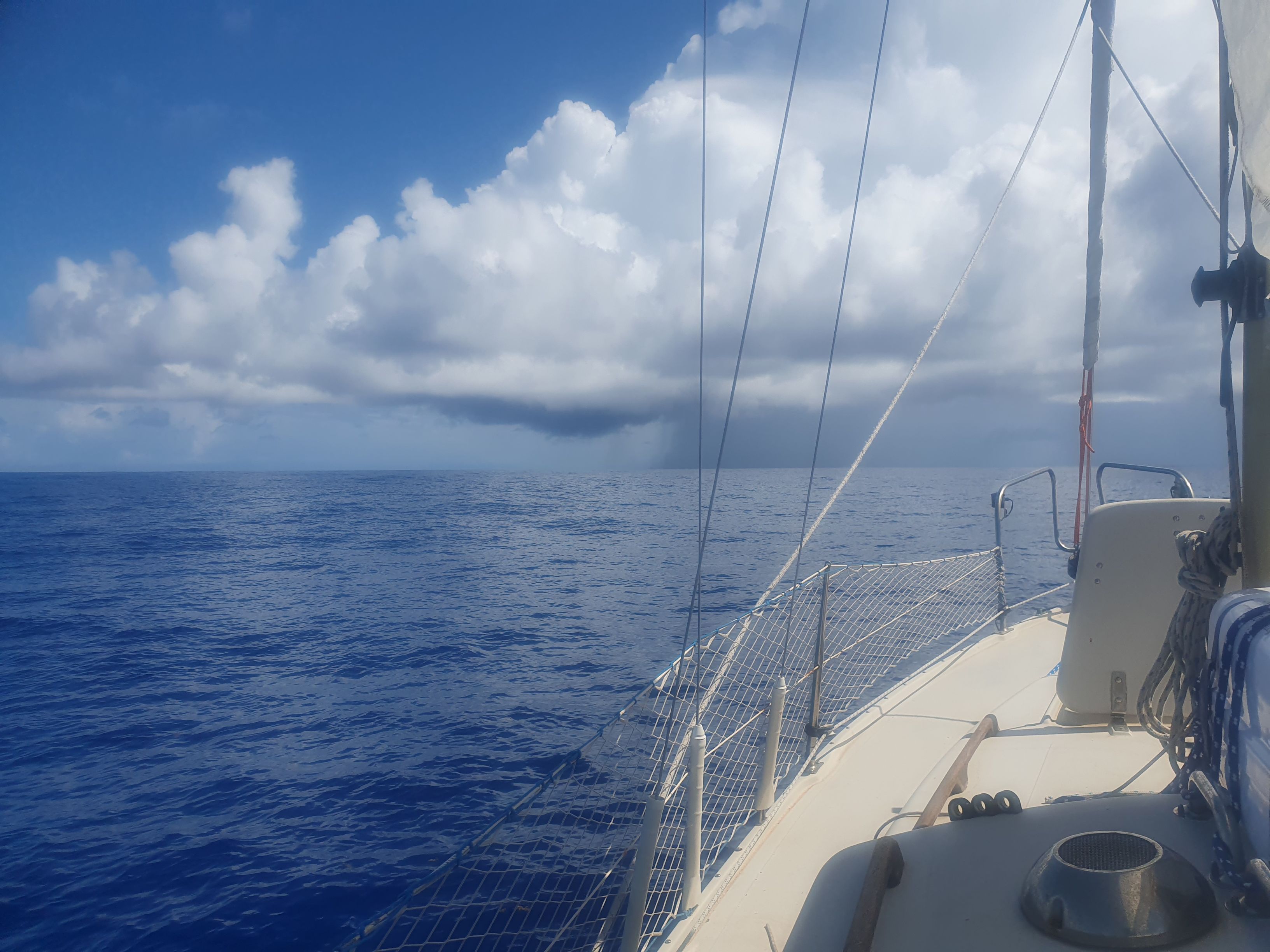
When describing equatorial weather, it must be mentioned that the most unpleasant are thunderstorms at night. They can't be seen, only flashes of lightning illuminate the terrifying clouds near or far away. The position of squalls can be easily determined from the radar, allowing for appropriate reefing. However, lightning is unpleasant. It has never struck the water near us, but we often saw discharges between the clouds right overhead. The yacht was grounded during hull repairs in La Restinga. Beneath the hull, a large, thick copper plate was bolted, connected vertically upward with a thick wire straight to the heel of the mast. Additionally, equipotential wires are connected to the shrouds, stays, railings, etc. The dimensions of the installation are given in recommendations for American sailors, where lightning strikes on yachts are more common than in our area (recordings can be found on YouTube). Un-grounded fiberglass yachts may suffer severe damage (e.g., burnt holes in the hull). Apart from the appropriate thickness of the wires, the size of the plate under the hull should be chosen correctly (much larger if the yacht sails also on freshwater). The issue of galvanic corrosion at the connection of the aluminum mast and the copper wires also needs resolving. An aluminum bolt and a spacer made of two aluminum nuts were used. This will be a replaceable component when corrosion affects it. There is also the necessity to isolate antennas (electrically connected to the mast or metal railings) from radio systems (connected through the battery mass to the engine and related galvanic corrosion of the engine's screw). This was achieved using large ceramic capacitors. Alongside this, it is worth applying surge protection for electronic devices (in our case, gas discharge tubes that short the insulated antenna to the lightning system in the event of a discharge). Despite the installation, a lightning strike could be dangerous if someone happened to be touching the yacht's rigging or the railing screws accessible inside the cabin. Fortunately, this component of the equipment has not needed to be tested in action.
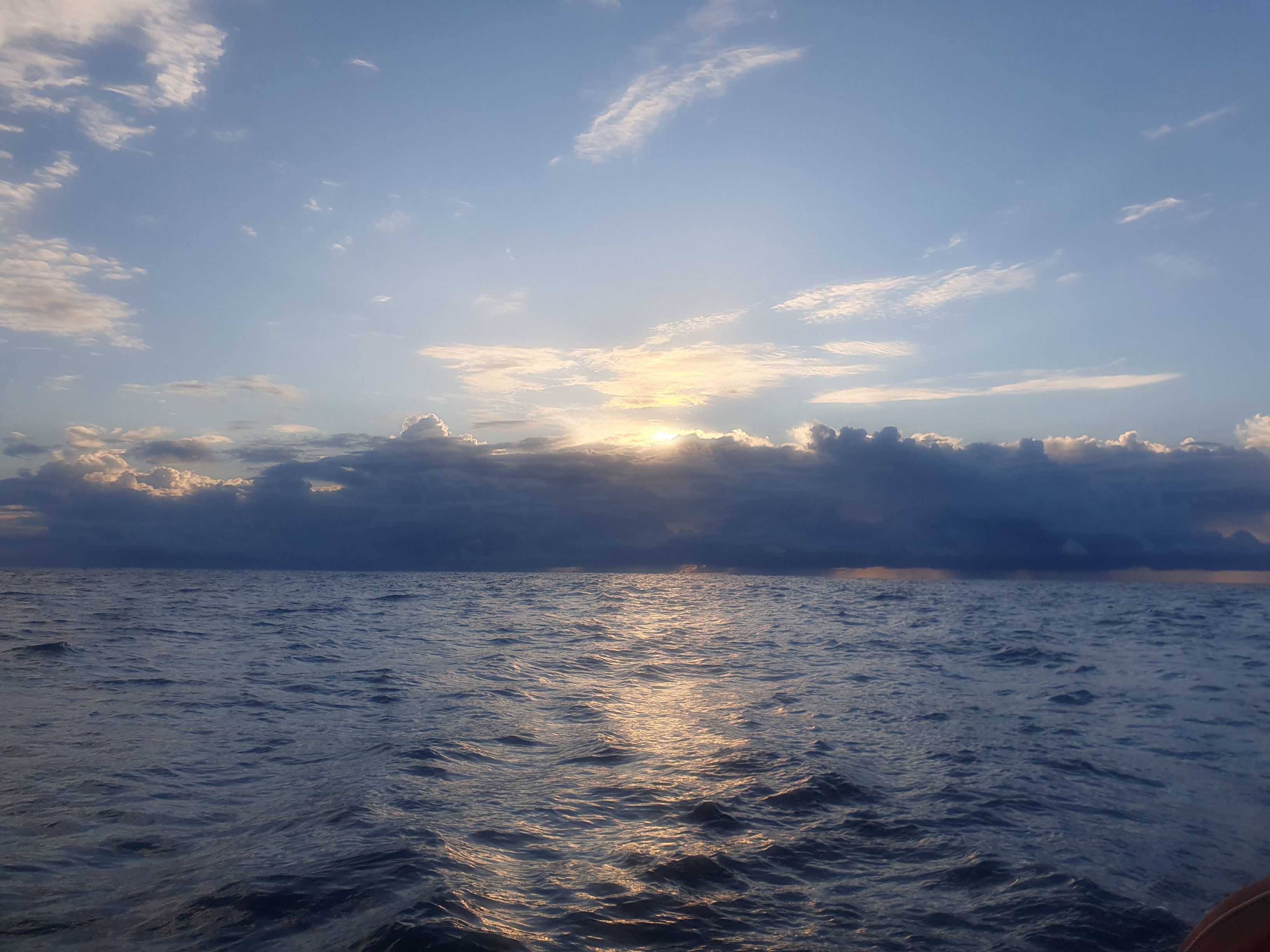
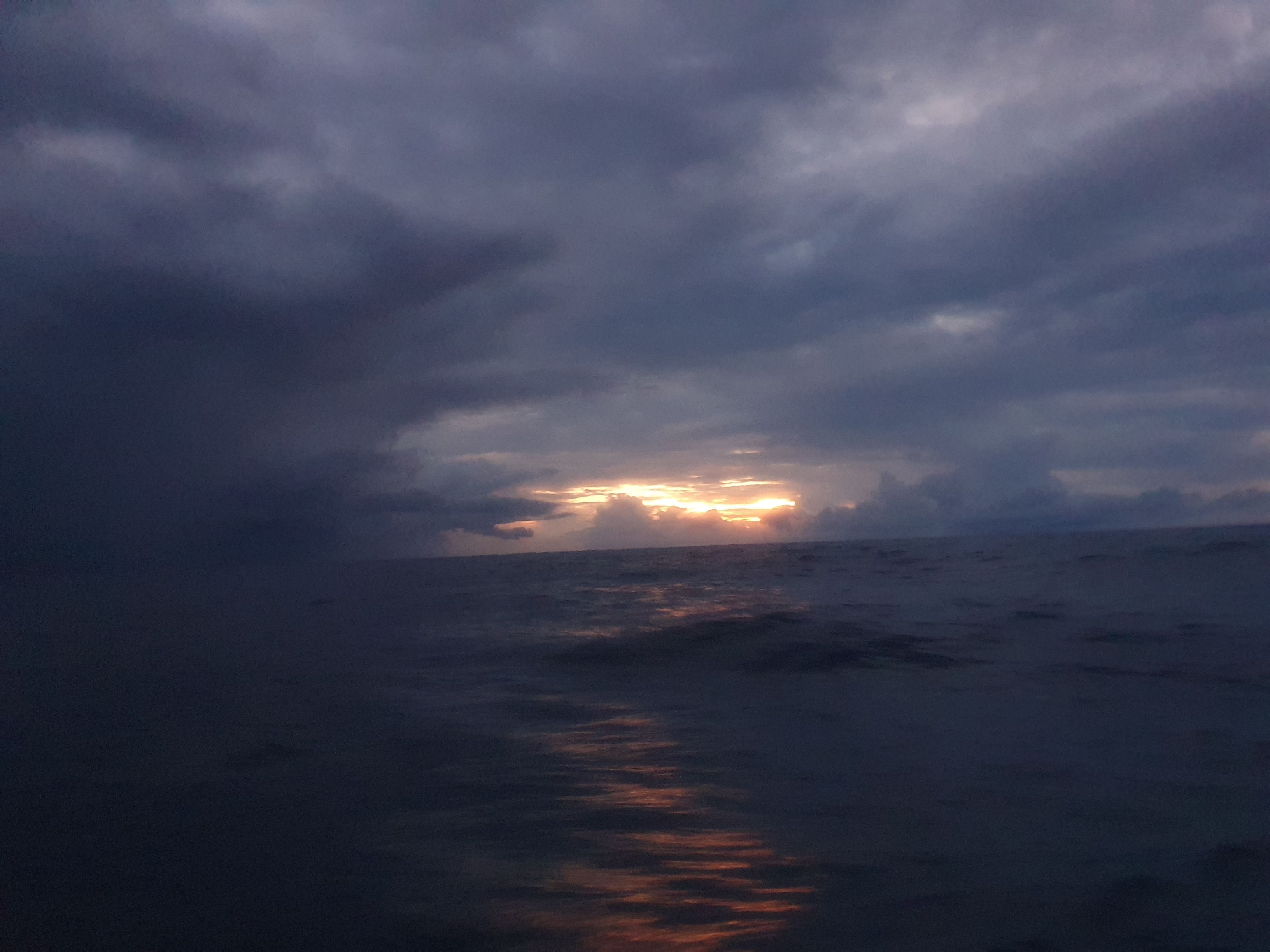
We often have to clean dead flying fish off the deck. They are reportedly edible, with many sailors praising their taste. Unfortunately, on our deck, only small ones that are not suitable for the frying pan land. However, there are two good things about the seaweed. Firstly, Kama has a few days of fun with the "sargasso" factory and sorting. The second is the fish. Kamilka noticed that various herbivorous fish feed beneath them, which motivated Kamil to throw in a fishing line. It turned out he had the right intuition—where herbivores appear, so do predators. A sleek mahi mahi gets hooked and quickly ends up on the table in pumpkin and zucchini soup.
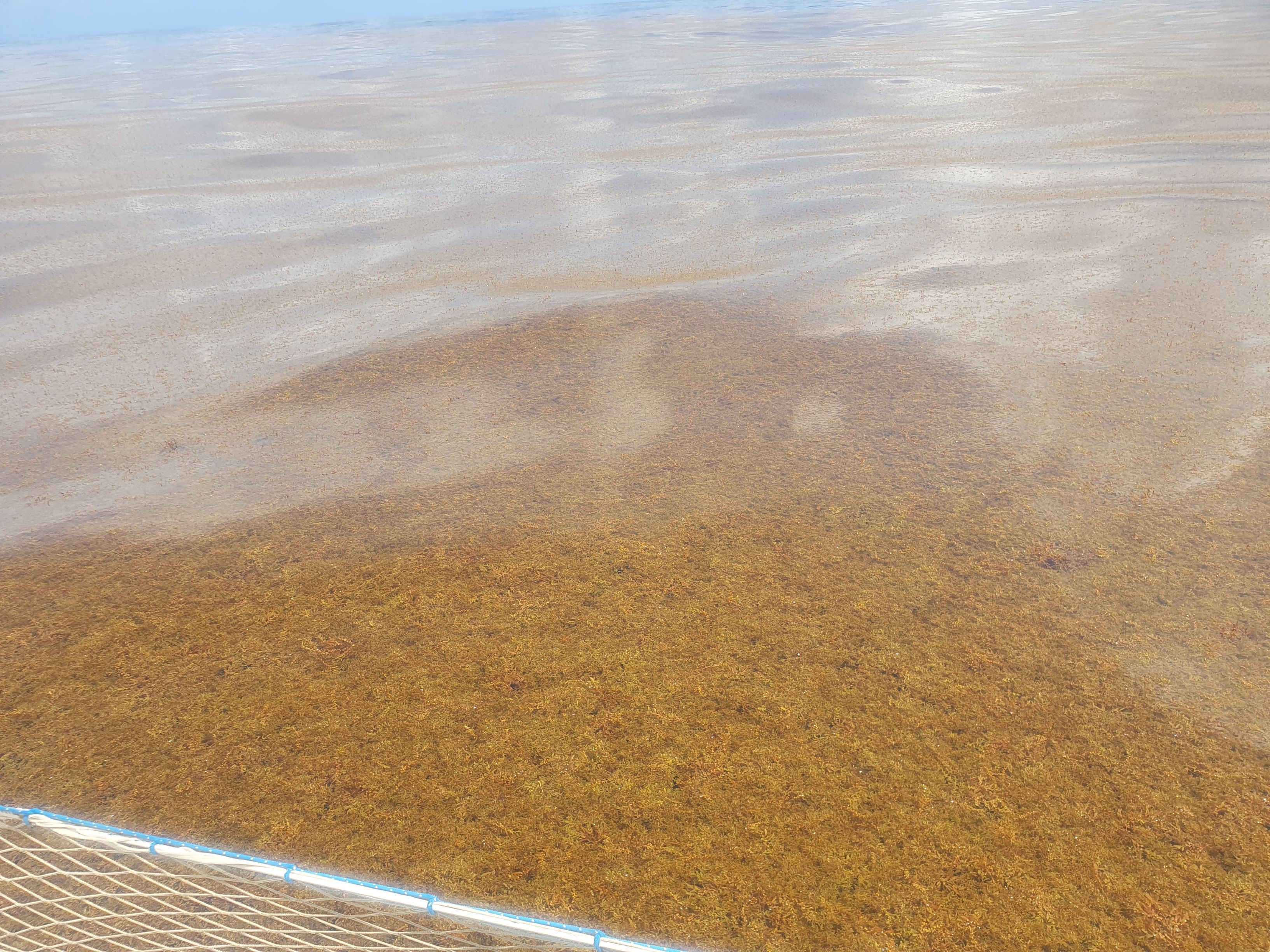
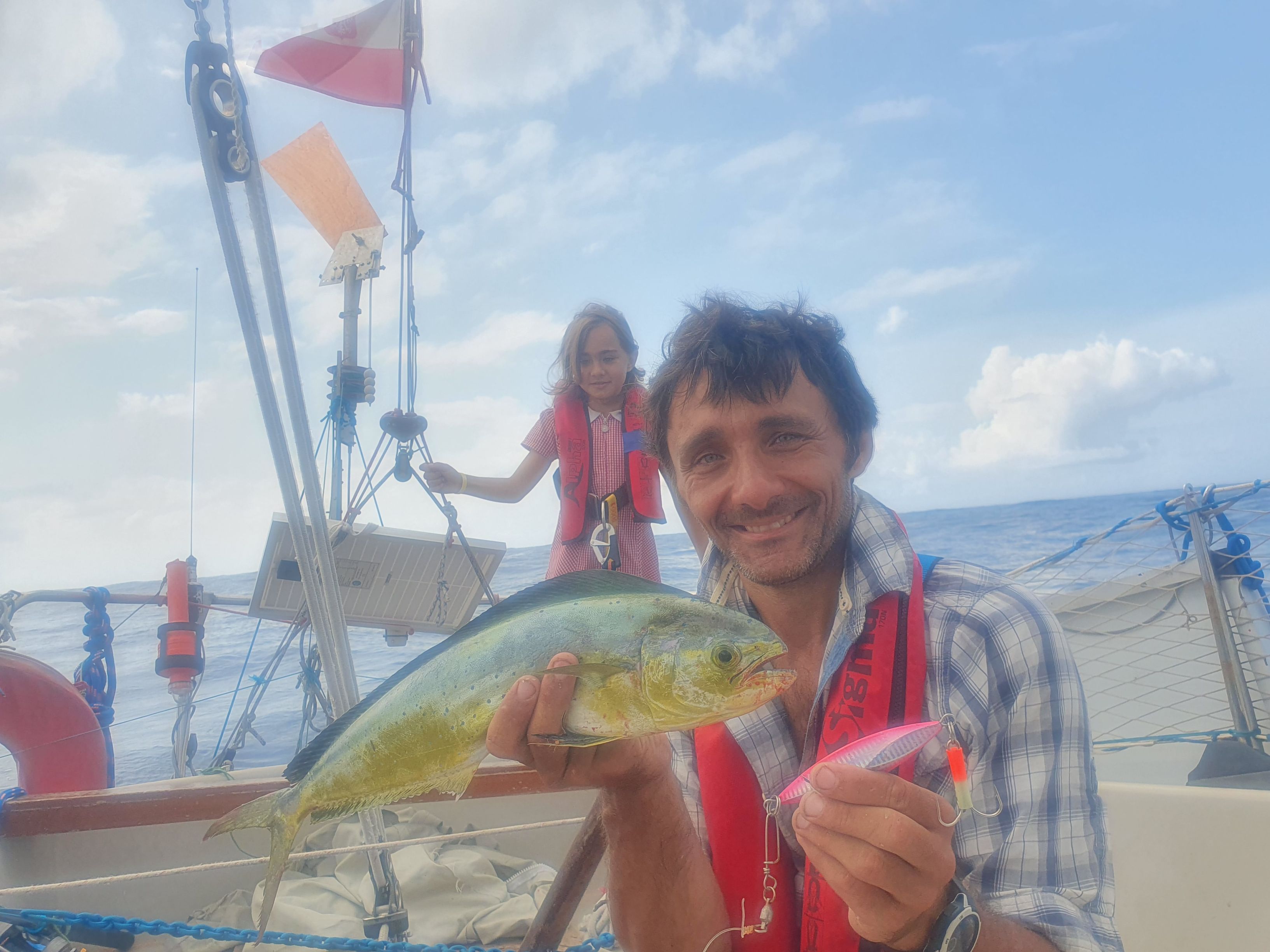


Unfortunately, not only seaweed accumulates in this zone. All sorts of rubbish also float. In broad daylight, fortunately slowly and gently, we hit a large plastic object (possibly a float, about 1m x 1m) and something attached to it that looks like a large waterproof lamp. Of course, we collect our rubbish - it fills the entire toilet. We crush cans with a hammer, pack everything nicely, but there's quite a lot of it.
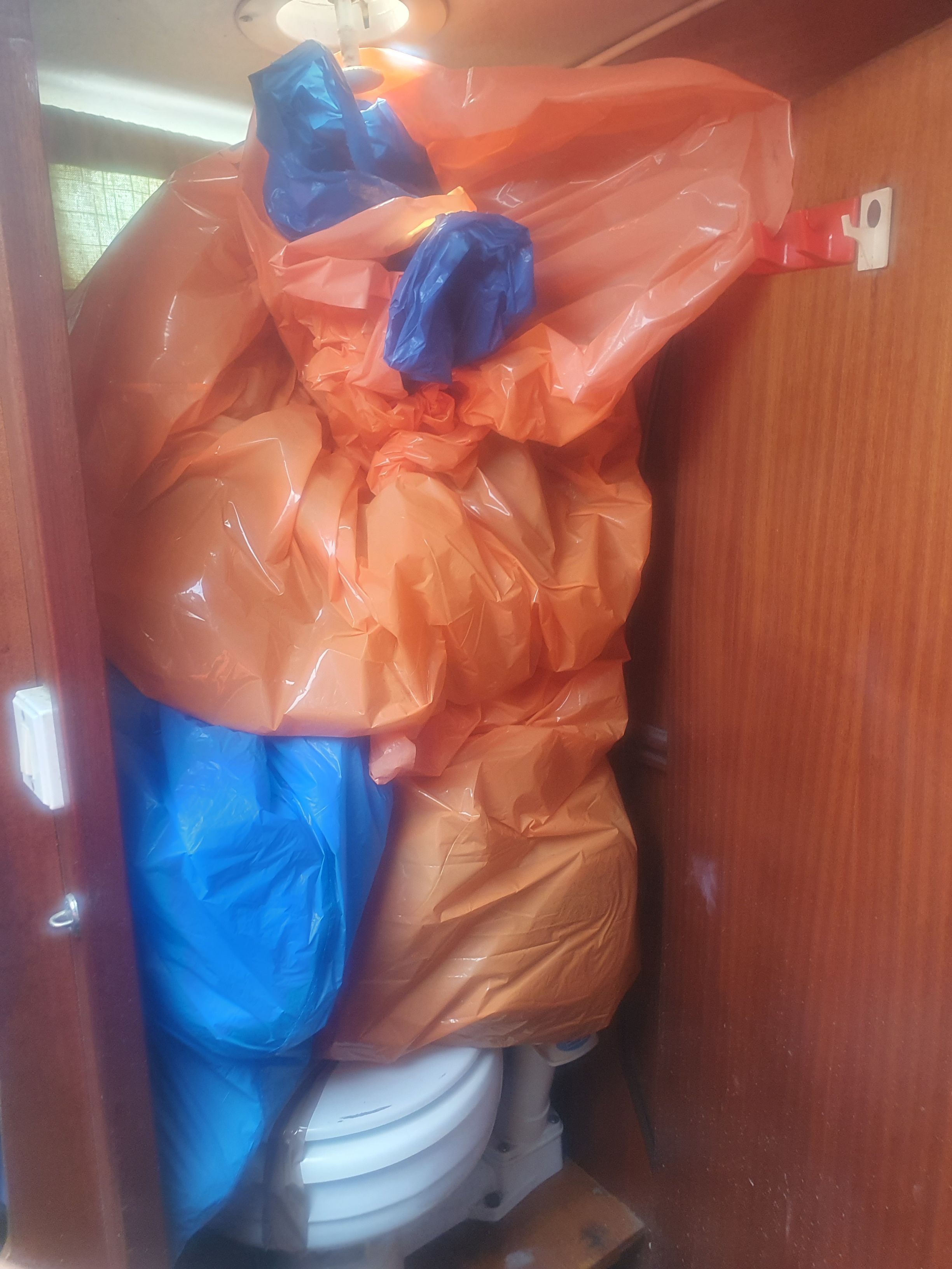
The ITCZ winds are very capricious. Sailing with variable winds, with occasional squalls and downpours, requires changing the sail configuration several times a day. Zuza handles the jib easily, but reefing and unreefing the mainsail requires a lot of strength, so Kamil gets a daily dose of intense gymnastics.
On the topic of changing sails, it reminds us of an important problem with the jib roller. Smaller sails need to be extended with a line so that the halyard swivel operates directly at the top of the mast. Otherwise, the halyard prefers to wrap around the fixed forestay rather than operate on the swivel, making it impossible to furl the sail.
We are in an area of countercurrent that pushes us eastward at a speed of about 0.6-0.7 knots. Kamil decides that in this situation, it is best to go south as quickly as possible, even at the expense of eastward drift, to break out into the steady trade winds on the other side of the ITCZ. This takes several days, alternating between calms and storms with squalls.
Finally, we are at 5 degrees N, meaning the doldrums are almost behind us. At this time of year, the trade winds sometimes reach this latitude. They were even there a few days ago before we managed to get this far south, but now they've moved further south. Forecasts give us hope that we can catch up with them. The cat and mouse game continues for a few more days, with the trade winds blowing calmly and steadily several dozen miles south of where we are. We hope Neptune will give Kamil wind for his name day on 18.07, but unfortunately, the sea god does not rise to the occasion and brings storms. So, we celebrate the day with Grandma Zosia's borsch and continue chasing the wind.

At least now the seaweed has ended, and we can use the engine. We even got quite skilled at refueling "on the fly" - we place the can on the bench, insert a rubber tube, siphon, and insert it into the fuel tank. The operation of pouring 25 liters of gasoline takes about 15 minutes, but we manage not to spill a single drop of the precious liquid.
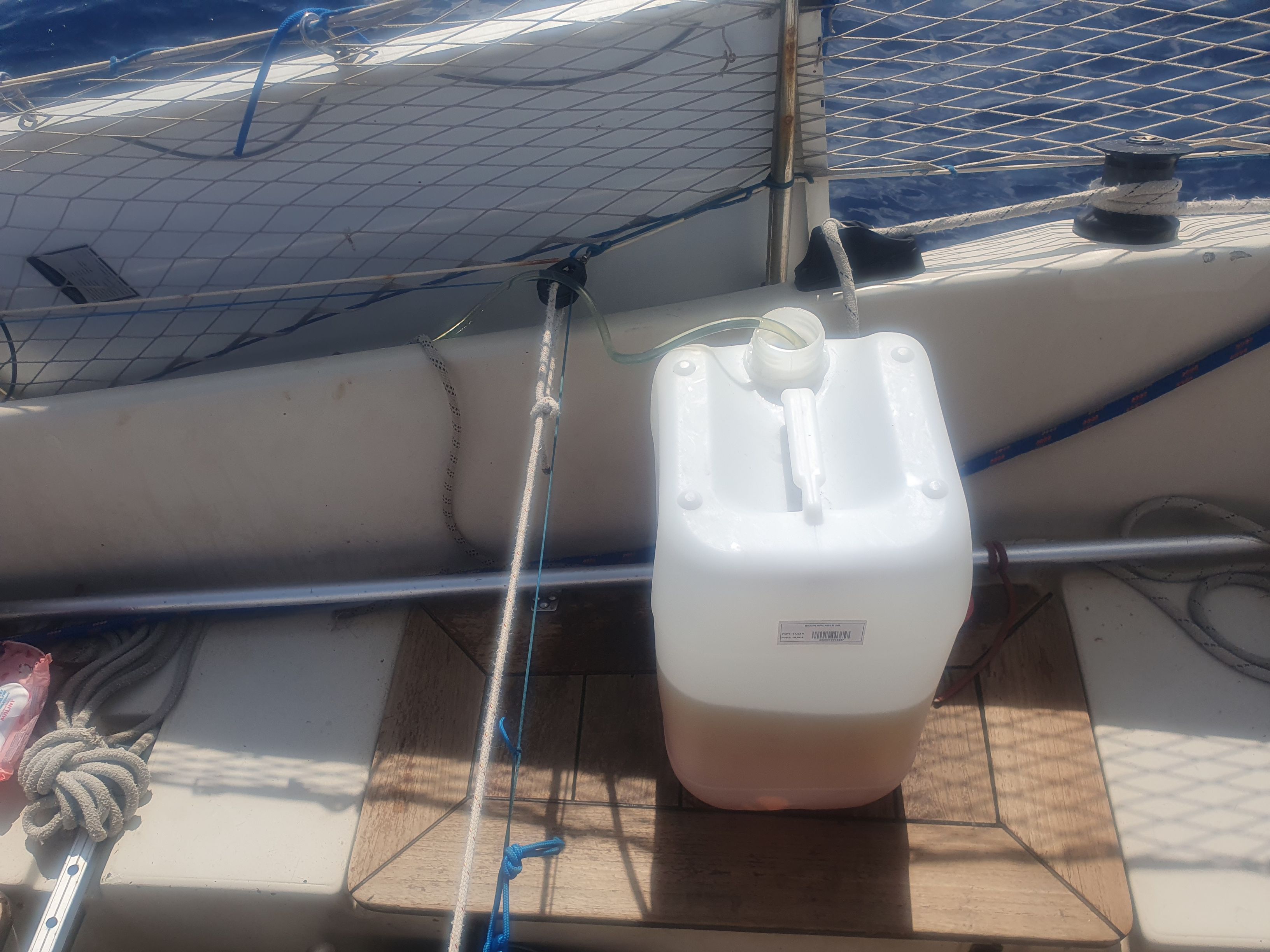
On the evening of 19.07, we finally catch up with the trade wind. A steady, strong wind and favorable current push us westward. We are sailing over 5-6 knots (the Guiana current helps), which leads us to very optimistic estimates of how long it will take to complete the journey. The increased speed also yields a significant fishing haul. Kamil lands the largest fish he has ever caught in his life - a mahi-mahi, which stretched nearly the entire length of the cockpit (meaning it was at least 130 cm long).
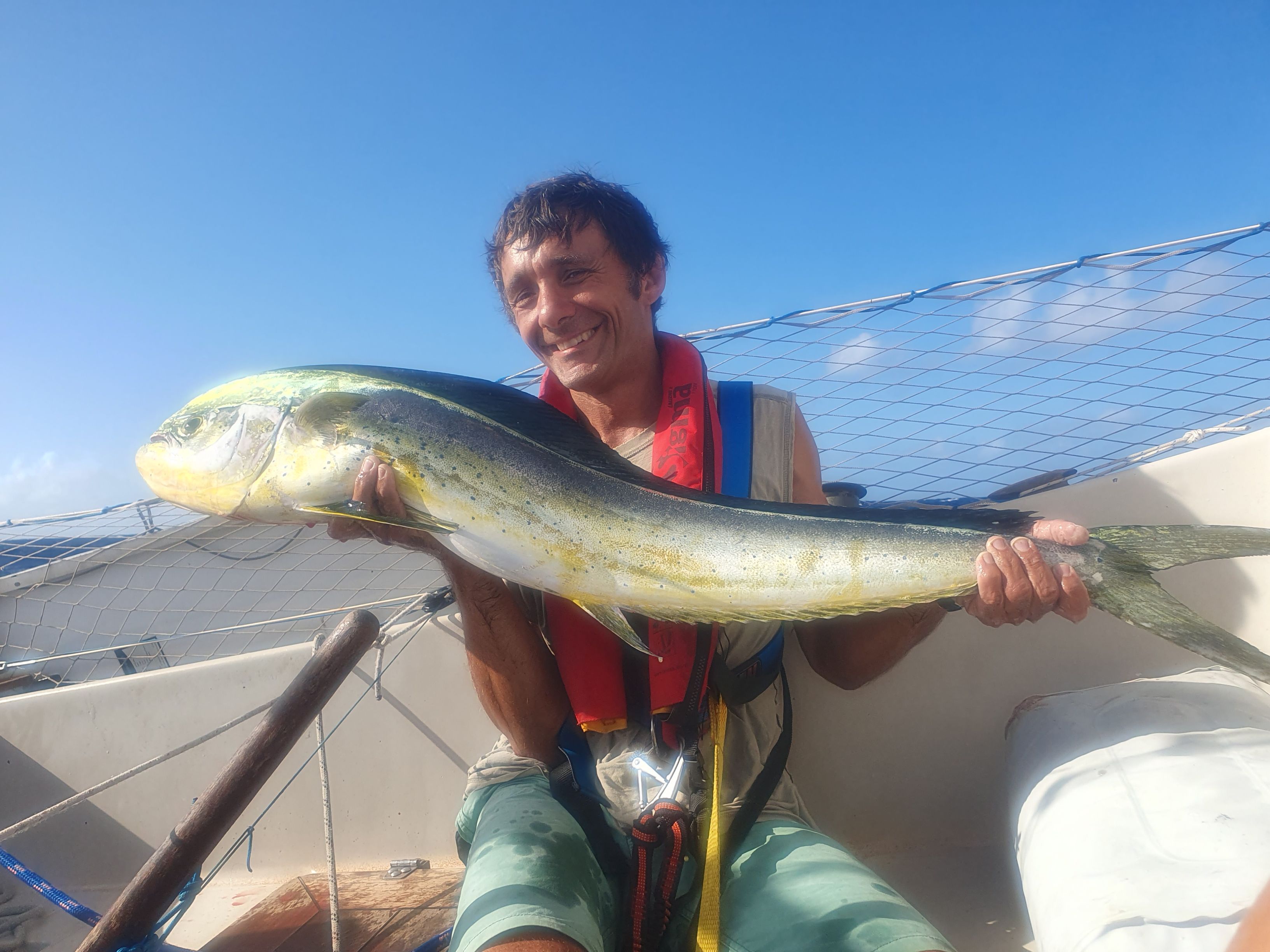
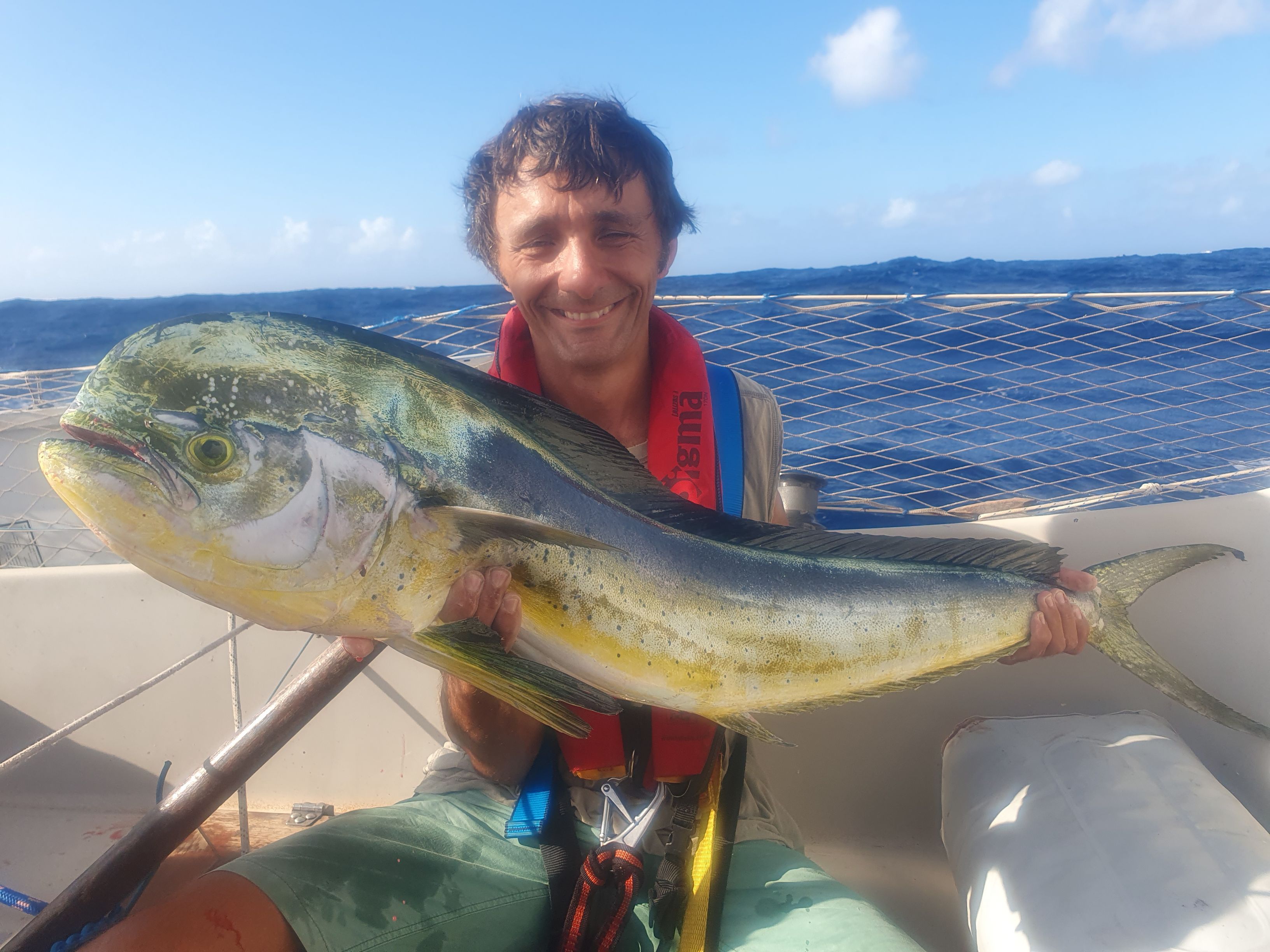
The fish fought so hard that the rod threatened to snap. For the first time, Kamil had the opportunity to use the gaff to bring fish on board, which had been the subject of Zuza's years of ridicule (until now, the fish caught were smaller than this fearsome tool). Such an amount of meat posed a culinary challenge and occupied all of our pots. Steaks ended up in the frying pan, fish chunks with rice in a spicy Canary sauce went into the pot, and soup into the pressure cooker. All of this provided us with delicious food for the next four days (the pressure cooker allows for daily preservation of the contents under pressure). This reminded us of an anecdote from one of the sailing books. When a pressure cooker almost knocked out the glass window of a boat during a voyage on the southern ocean, they wondered whether to get rid of it but decided it was better to get rid of the window (they covered it with plywood). Indeed, on a yacht without a refrigerator, this piece of equipment greatly facilitates preserving large fish, soup, or even just cooking something when the waves are bigger.
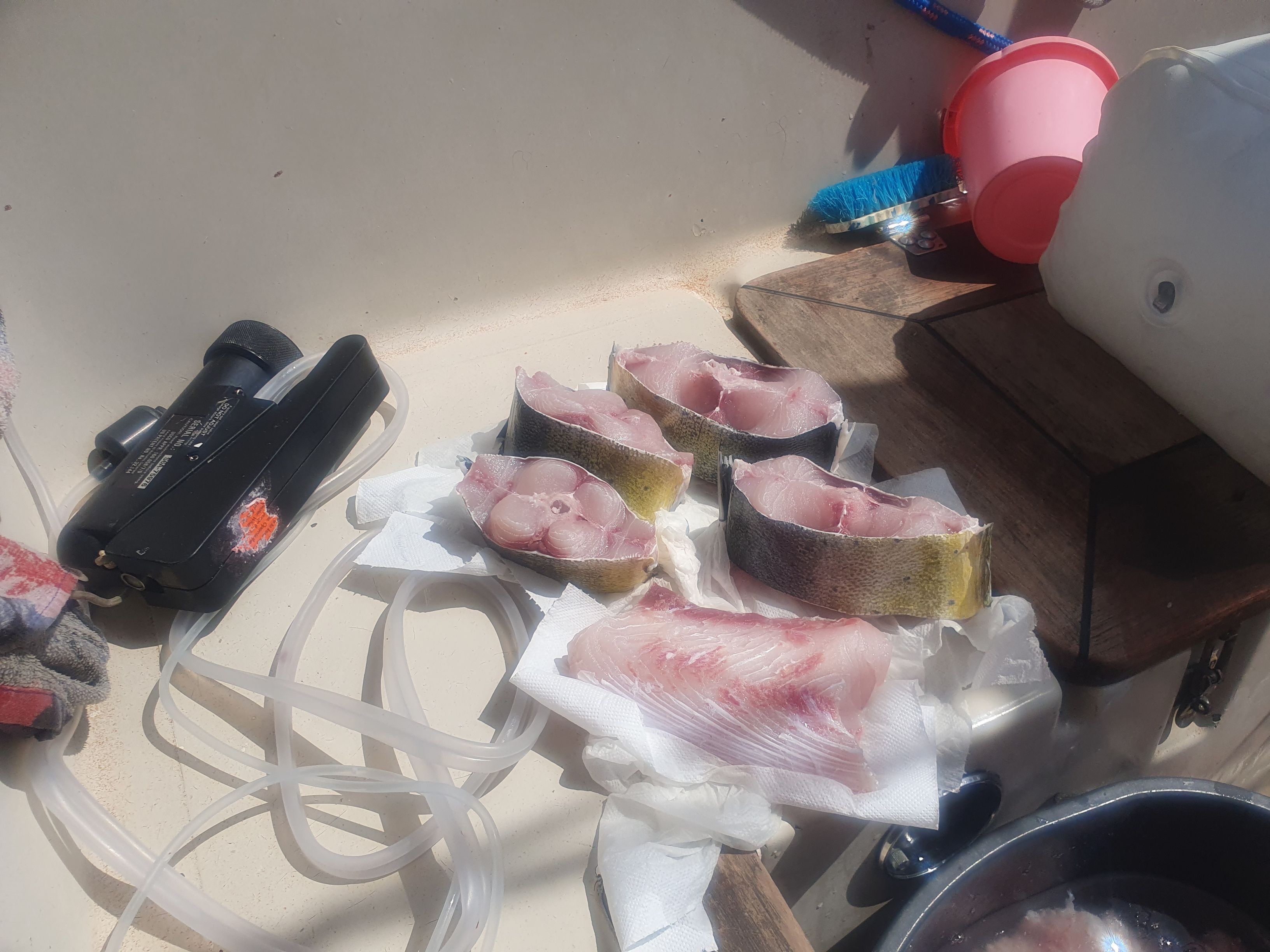
After the first two days of fantastic runs on the trade wind, the wind unfortunately dies down. Although we are on a broad reach, our speed drops to 3-4 knots. We change the jib to a genoa and furl the mainsail. If all goes well in this configuration, we will reach our destination. A significant portion of the boat's speed comes from the current rather than the wind - relative to the water, we are barely moving, which seems to encourage the dolphins. They mostly approach at night to observe the boat. Initially, every helmsman was quite startled by these visits. A person sits quietly and peacefully in the middle of the ocean, and suddenly hears someone panting in the water. The panting sounds very human, and it took each of us a moment to determine that it was neither an acoustic illusion nor a barely surviving castaway, but a sound coming from a black smooth back barely emerging above the water.
As we chase the setting sun day by day, our solar time is constantly changing. Each watch shows a different hour. Our handheld Garmins take the time from the satellite, phones have Cabo Verde time, and the computer has Polish time. We use AIS UTC to determine the watches. The first shift from 21:00 to 01:00 is Zuza's, the next from 01:00-05:00 is Kamil’s, 05:00-09:00 is Zuza's, and 9:00 until noon is Kamil’s. We often wake up at night due to the boat rocking or strange noises. On one hand, we are constantly on the verge of sleeplessness; on the other, we remember our dreams much better. On the second or third night of the voyage, Kamil dreamed that he was walking down a street near his family home but realized he was on a voyage, so physically had to be on the yacht. It dawned on him that he was asleep and urgently needed to wake up. Then the thought came that if something was wrong, he would be awakened, so everything was okay. Another time, in a half-sleep, he didn’t know where he was. Dark, red light, crashes, clatters—indicating we were sailing somewhere. But where and why?... Zuza, in turn, had some woman jump and grab her head between her knees. It turned out, however, that it wasn’t a woman but an automatic life jacket that deployed at 3 a.m. in bed. The release pin activates when the paper band holding the needle gets soaked. The paper never got properly wet but became increasingly damp, eventually releasing. The gas cartridge and the release pin had to be replaced, and the personal AIS had to be rearmed and reinstalled. The break in sleep was very unpleasant, but at least we know that in case of necessity, the life jacket inflates beautifully and automatically activates the rescue AIS, which flashes and transmits a distress signal visible on the chartplotter for about 4 nautical miles.
We were very worried about how seven-year-old Kamilka, naturally lively, would handle three to four weeks of severely restricted movement. Fortunately, the child turned out to be very mature, understanding that her parents couldn’t entertain her all the time, and often she would have to occupy herself with audio plays, books, games, Legos, or art projects, reminding us all that we needed to maintain a good atmosphere on the yacht and show patience and tolerance for all crew members. On the other hand, we prepared a series of attractions for her—Zuza uploaded three unread volumes of Harry Potter, much of Astrid Lindgren's works, The Hobbit, and The Amazing Maurice by Terry Pratchett to the reader, and tried to read to Kami daily. Meanwhile, Kamil equipped her with a Lego Mindstorms set, which they used together to build a crawling robot that was programmed to follow light. Kama herself was very aware of the situation and the need to manage boredom and emotions, winning the contest for the least argumentative crew member.
We are slowly approaching South America. At night, we observe incredible falling stars. Back home, this is a brief flash across the sky. Here, a meteor burns for several seconds with bright yellow light, and its trail remains visible for a few more seconds as if it were a comet. Sometimes the trajectory isn’t straight, but slightly "meanders." The length of flight and intensity of the light is astonishing. At first, Kamil wondered if it was a flare from a ship or something related to the European Space Agency in Guyana. However, it was a repeated phenomenon, not on a single night, and always looked a bit different. We wondered if falling stars appeared this way closer to the equator. On land, we later read that they are likely "fireballs" associated with the Perseids. However, it's puzzling that we never saw them in this form in Mazury at this time of year (theoretically, they aren’t related to the equator). So why we hadn’t seen them before, we do not know. They looked incredible.
We first spot the continent only on the chartplotter; then, about 60 miles from the shore, the ocean's color changes - the Amazon and other tropical rivers deposit so much organic material here that the water turns from blue to green. Finally, we see land.
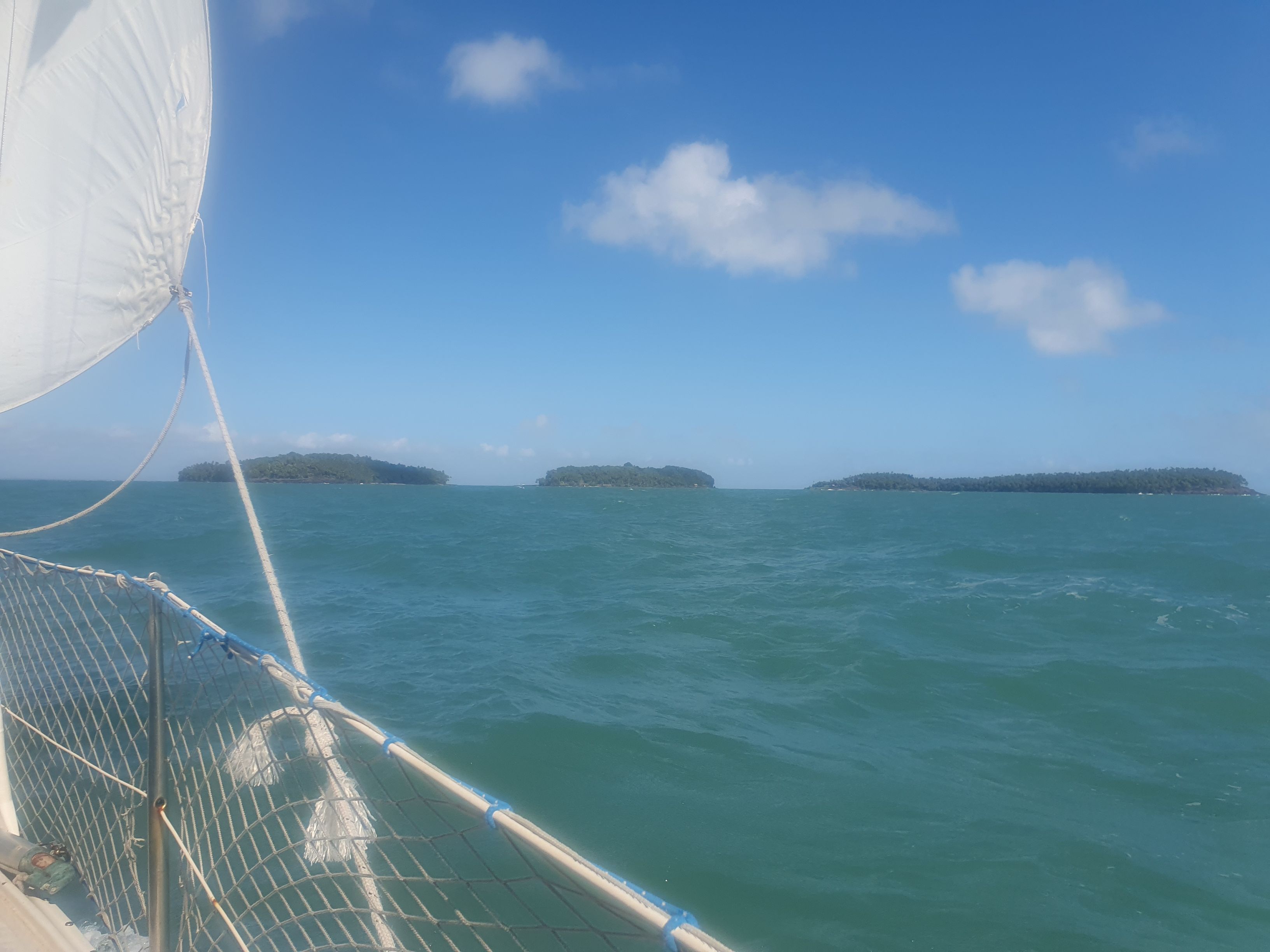

After 24 days of traveling, we arrive at Iles du Salut - the Salvation Islands, where the famous penal colony depicted in Henri Charrière's book "Papillon" was located (the film with Steve McQueen and Dustin Hoffman is also well known). We anchor at Ile Royale and, although the history of this place is chilling, the island itself looks idyllic - green lawns, coconut palms, and other trees. Groups of tourists picnic in the shade. It's quite windy, so we drop anchor and jump into the water. It's early afternoon, and we decide there's no point in going ashore, so we rest on the deck. Kamil and Zuza reminisce about how wonderful it is to be able to sleep through the whole night without having to get up for a watch.
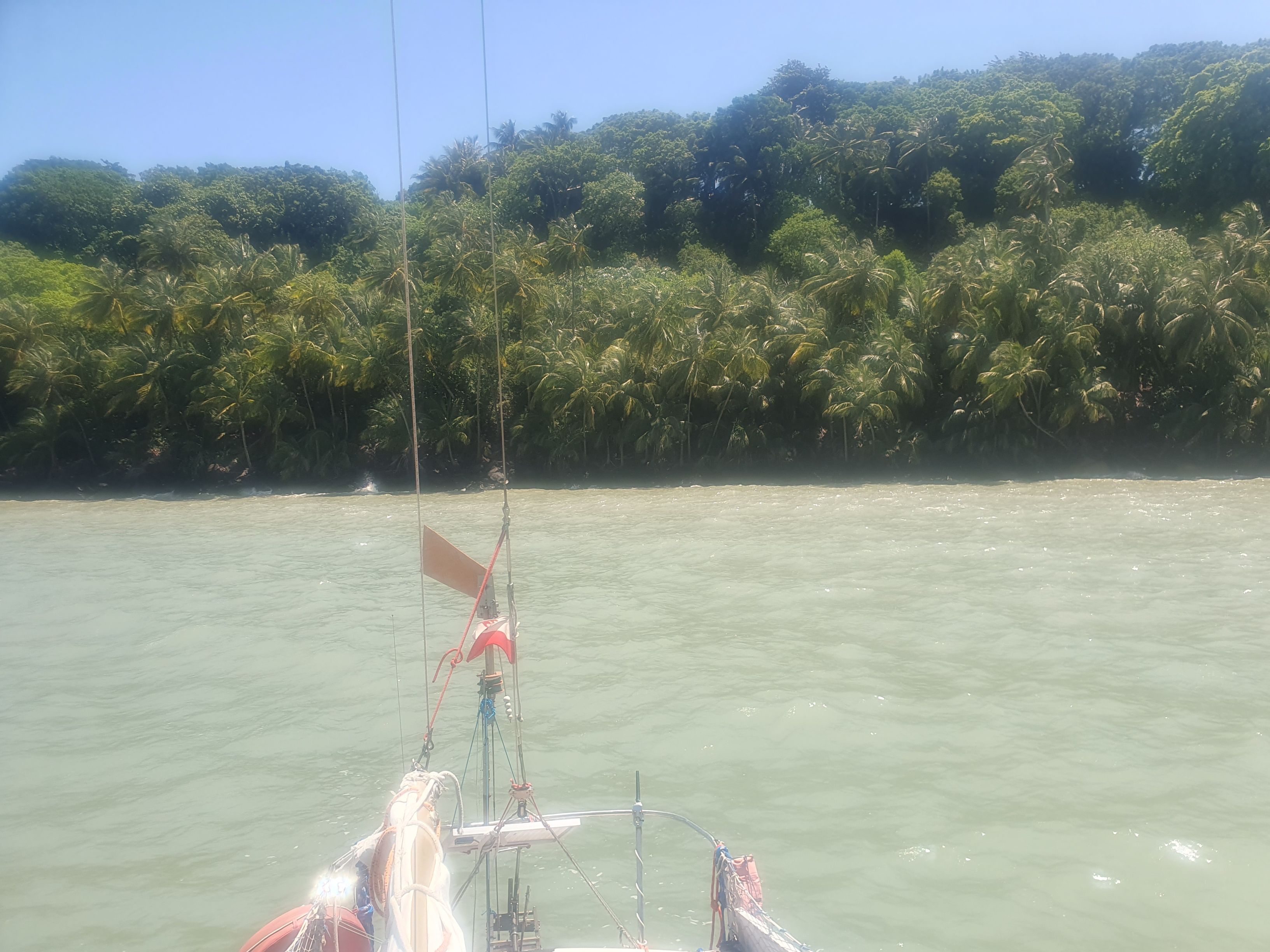
The next day we plan to go ashore. We are parked less than 100 meters from the shore and the original plan is to swim - Kamil with fins towing Kama, and Zuza with clothes in a waterproof grabpack. We abandon this idea because the traffic is considerable - primarily from 9:30 to 16:30 catamarans sail bringing tourists from nearby Corou, a ferry also approaches in the morning, which we believe brings fresh water to the island. We decide to inflate the dinghy and without much difficulty dock it at the tourist quay, and then move it onto the lawn so as not to interfere with the catamarans.
On land, we are greeted by a large iguana and small animals - unfortunately, they are very skittish and we can't determine whether they are chevrotains or perhaps capybaras. There are also monkeys on the island, however not as accustomed to humans as in Gibraltar.
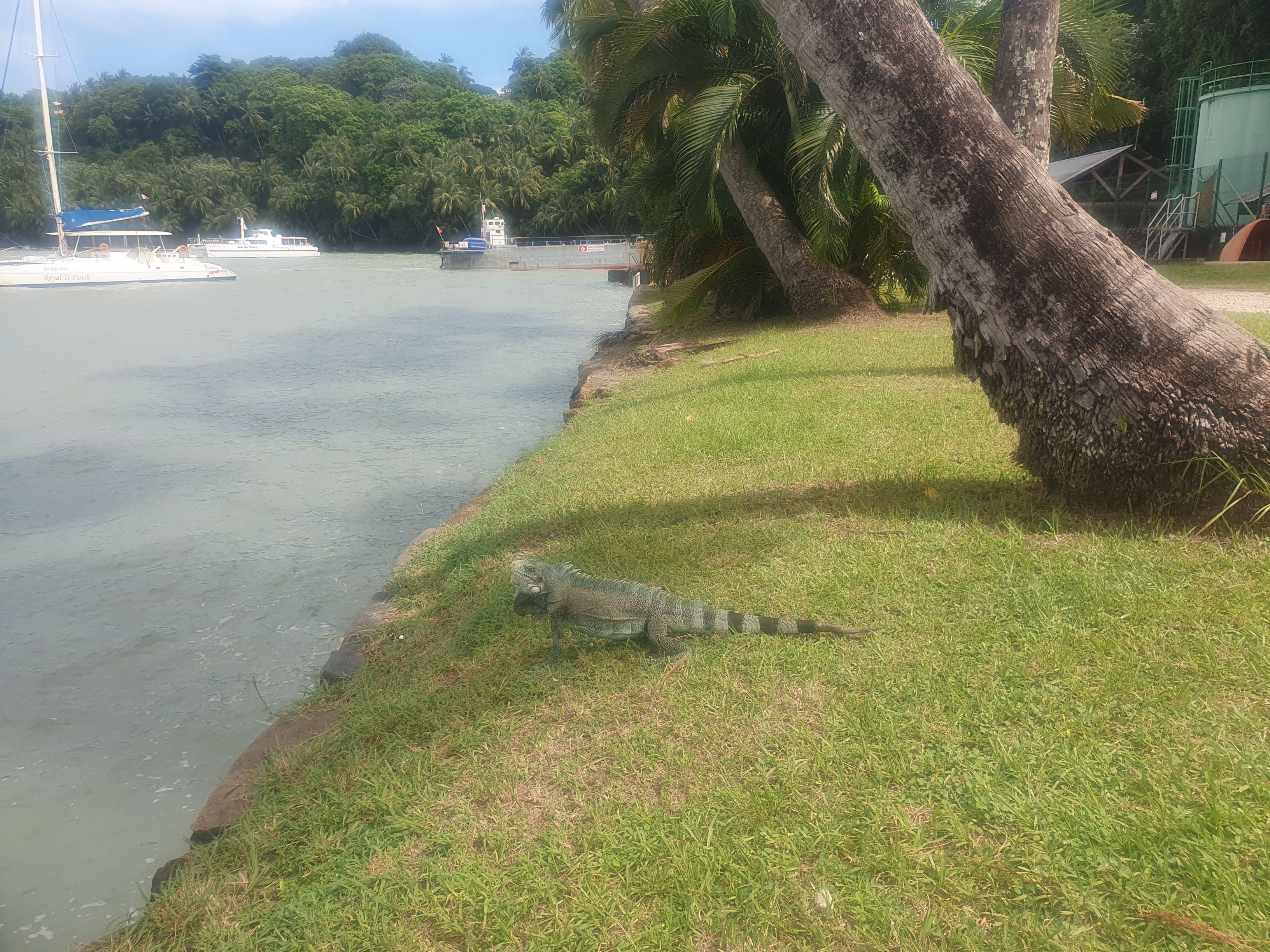

We admire the lush tropical nature - many plants that we have seen in pots in Poland grow freely here as large shrubs. Green coconuts lie on the ground - we take some with us to try to open them on the boat.
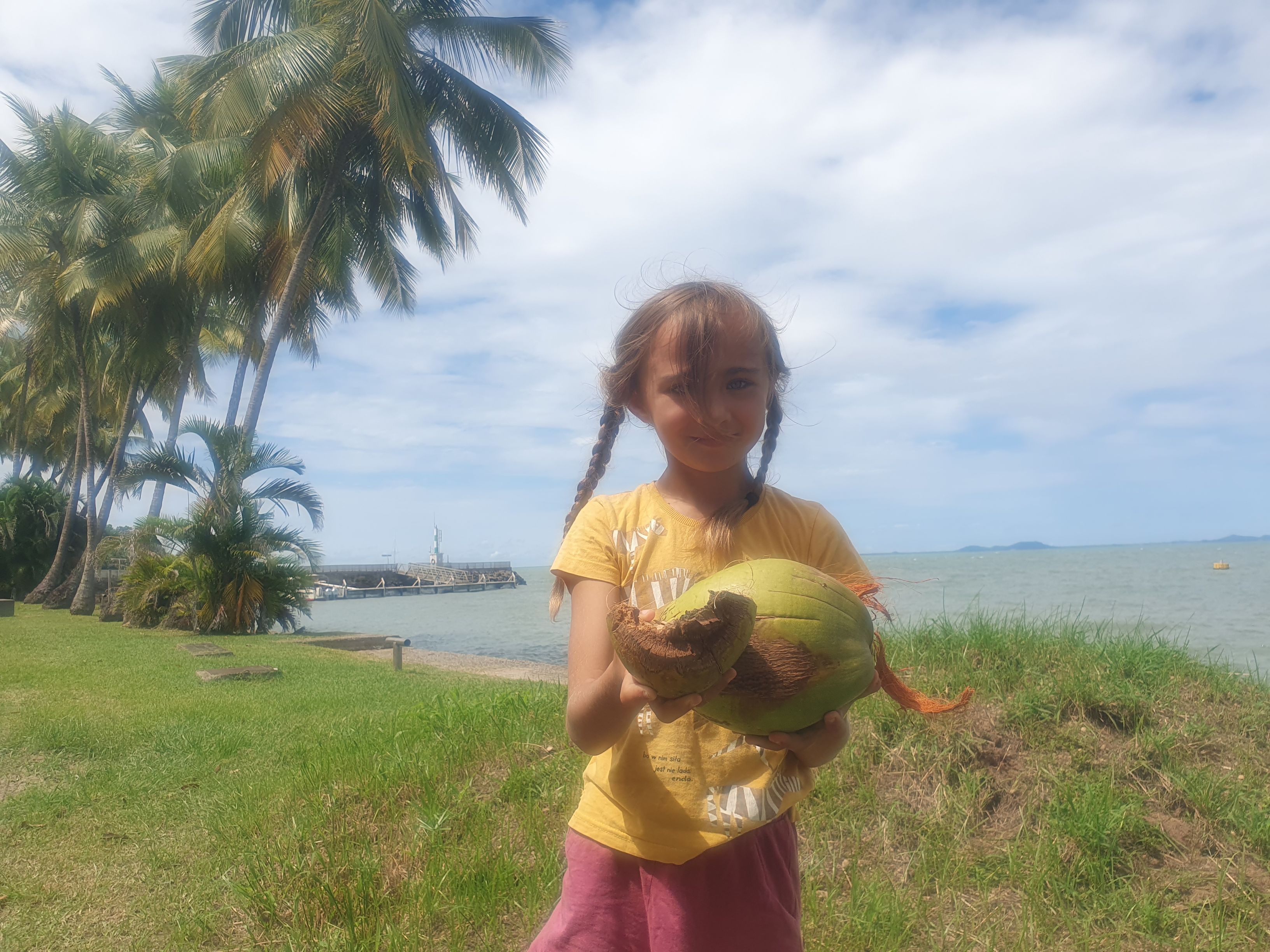
We arrive at the camp - we look at the director's residence, the guards' houses, the small church, remnants of the citadel where the soldiers were stationed.
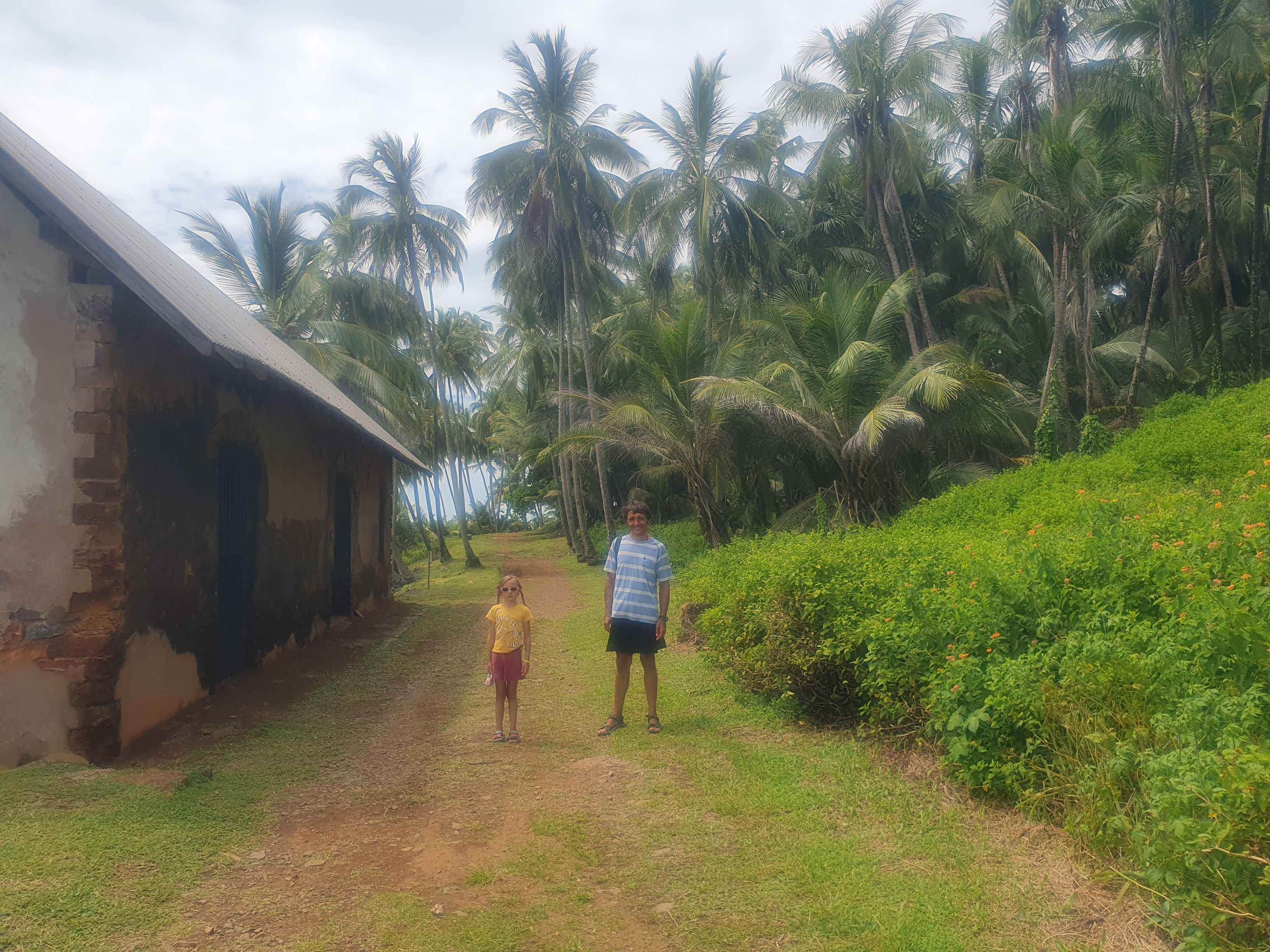

On the shore, pools built by prisoners still function, which fill up with water during tides. Nowadays, they serve as swimming areas for tourists. Nearby stand the remnants of a cable car that reached Devil's Island - A place that from afar looks like a tropical paradise, but the tides and currents are so strong that it is very difficult to approach, so political prisoners (including Alfred Dreyfus) who ended up there were practically deprived of any chance of escape. There is also a camping area where one can spend the night - no one sets up tents - hammocks are hung between the trees and covered with a mosquito net.
We arrive at the restaurant. It is horrendously expensive - half a liter of beer costs 9 euros, but we decide that we can splurge once. It turns out that the restaurant has an open buffet - for 30 euros per adult and 19 per child, one can eat as much as they want. We decide to try it. There is a choice of sweet potato salad with seafood, banana salad, tomatoes, lettuce with several sauces to choose from, rice, puree, Creole-style ribs, sausages that look like blood sausage and taste similar, though they contain no groats, and for dessert, melon or cheesecake. Everything is delicious, so we gorge ourselves terribly.
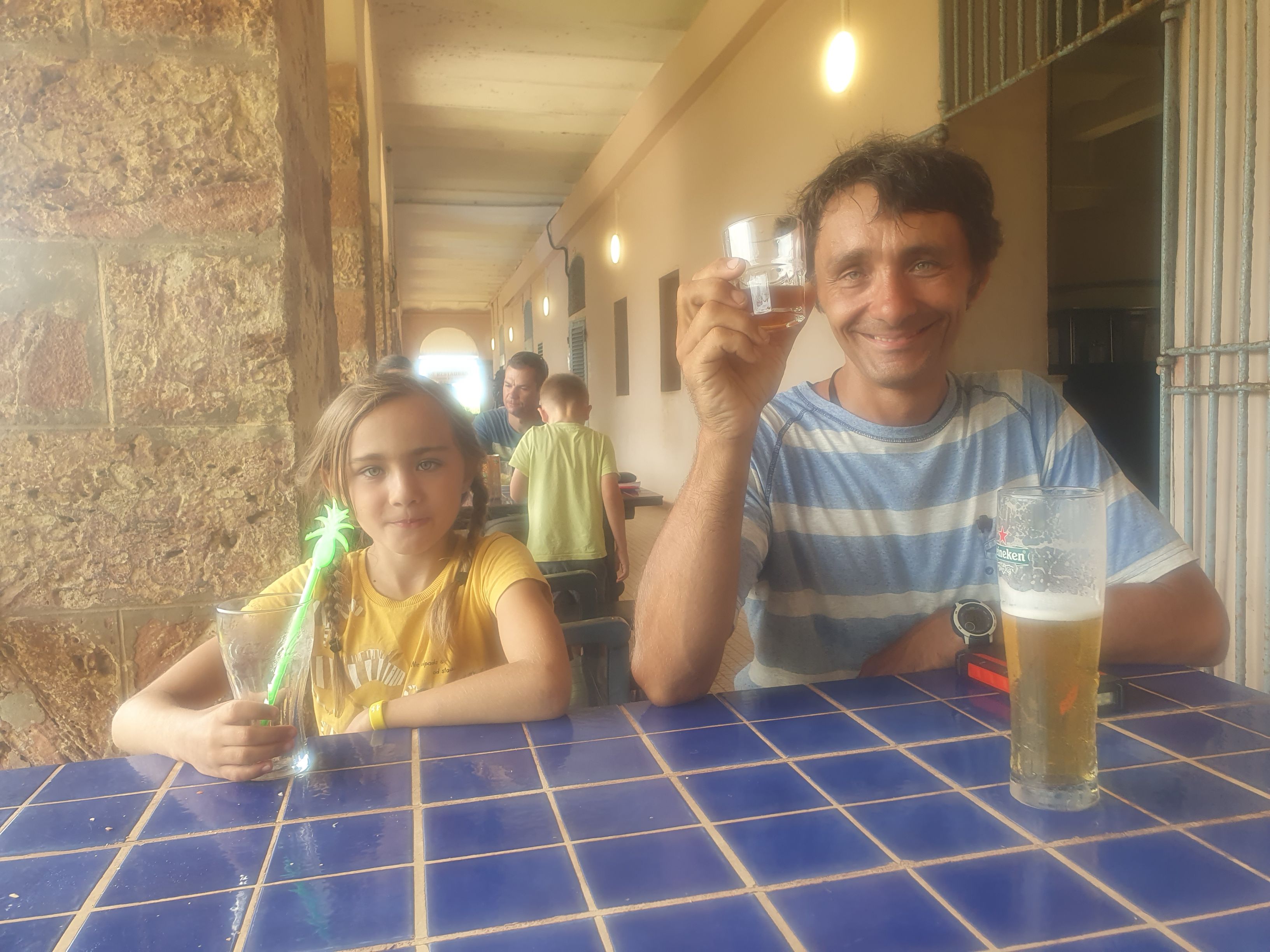
On the way back, we come across a small cemetery - it turns out that only the children of the workers are buried here - mortality in the colony was so high that only children were buried near the settlement; adult workers were transported to a neighboring island, and prisoners were buried on Devil's Island. We return to the boat in contemplation.
Along the way, sailors from a neighboring vessel invite us over. The yacht owner and his partner are French; they crossed the Atlantic in March and stopped in Brazil for a few months, from where they just arrived. For longer crossings, they take crew members with them - now a group of young Argentinians is traveling with them. They plan to reach Kourou and find work there - it's easy for them because they are in their homeland. Guiana is a province of France and, although not in the Schengen area, belongs to the European Union. Mobile operators charge fees as in the EU, our EHICs also work here, and flights between Cayenne and Paris have the status of domestic flights.
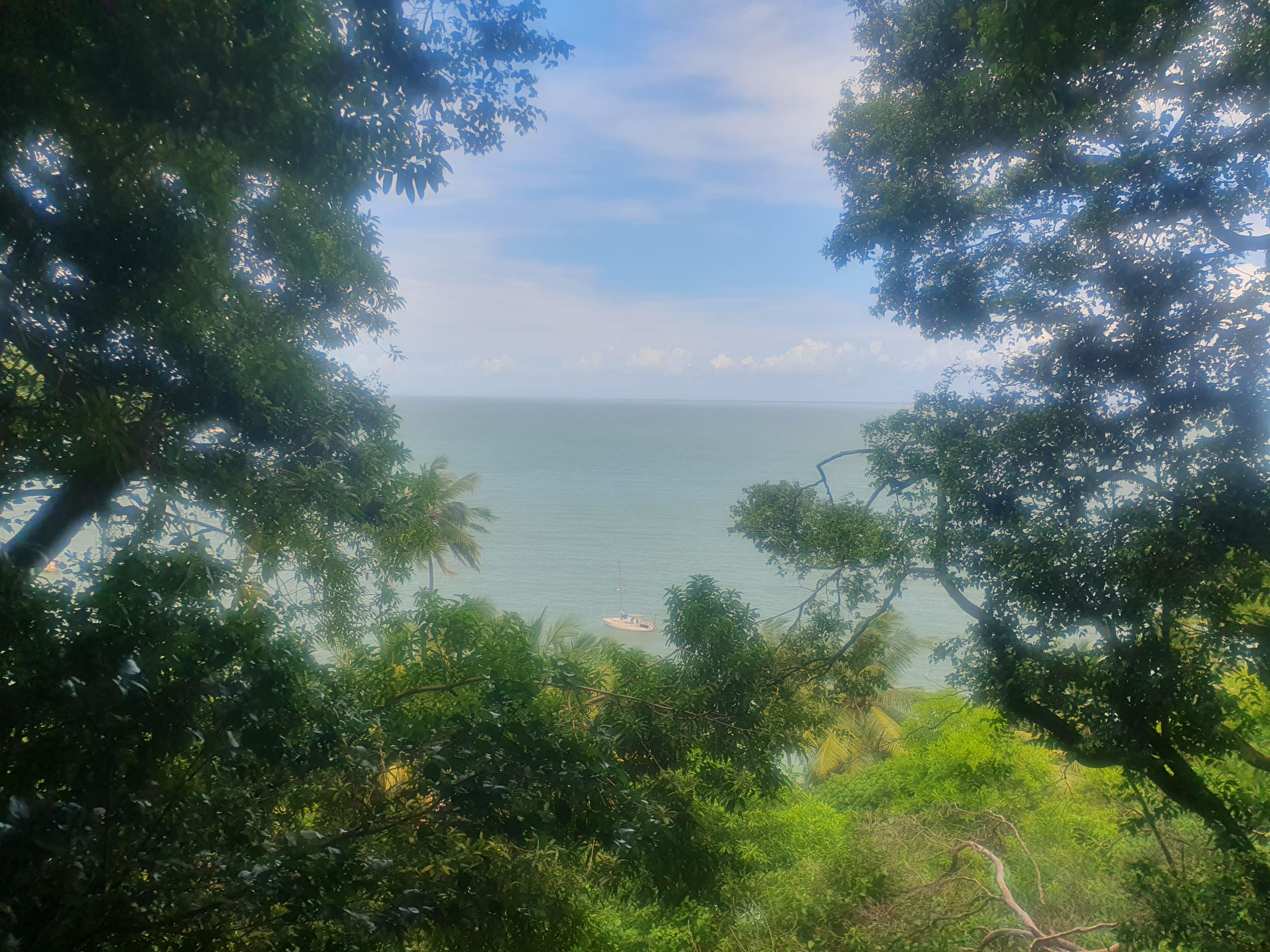
The next day we begin repairs. During the tropical downpours, we noticed that water was getting into the boat through the rigging attachments. To seal them, we had to unscrew all the bolts holding the aluminum strip, into which the attachments are screwed, and then coat them all with Dekasyl glue from the top and bottom. Firstly, we couldn't accidentally topple the mast. Secondly, access was inconvenient, and most likely, the last time someone meddled there was in 1974 when the boat was assembled, and in addition, we didn't have a good wrench - so Kamil struggled for several hours to unscrew eight bolts. The job, which was supposed to take 3 hours, lasted the whole day. We leave the other side for tomorrow. Fortunately, the next day it goes a bit faster.
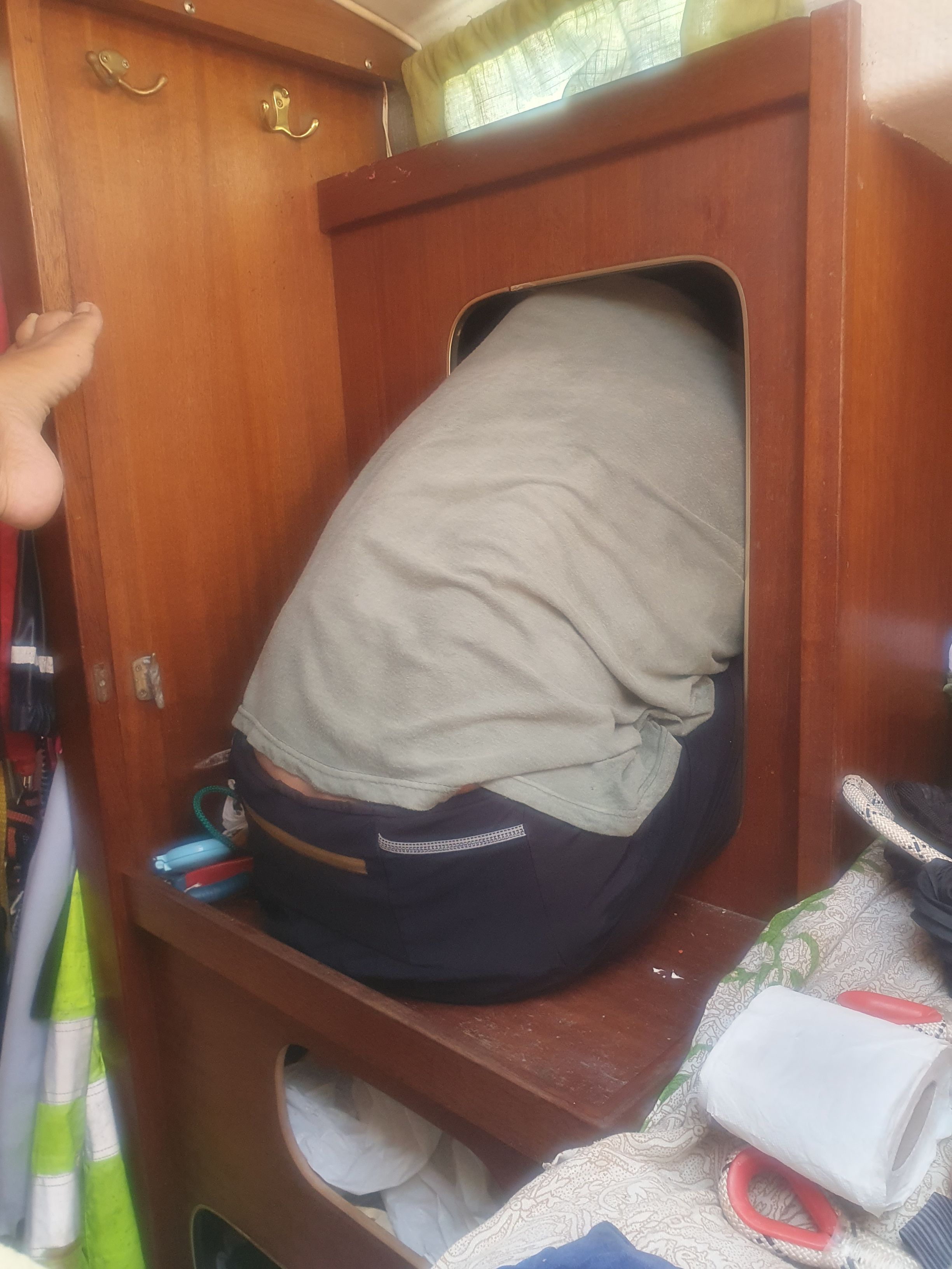
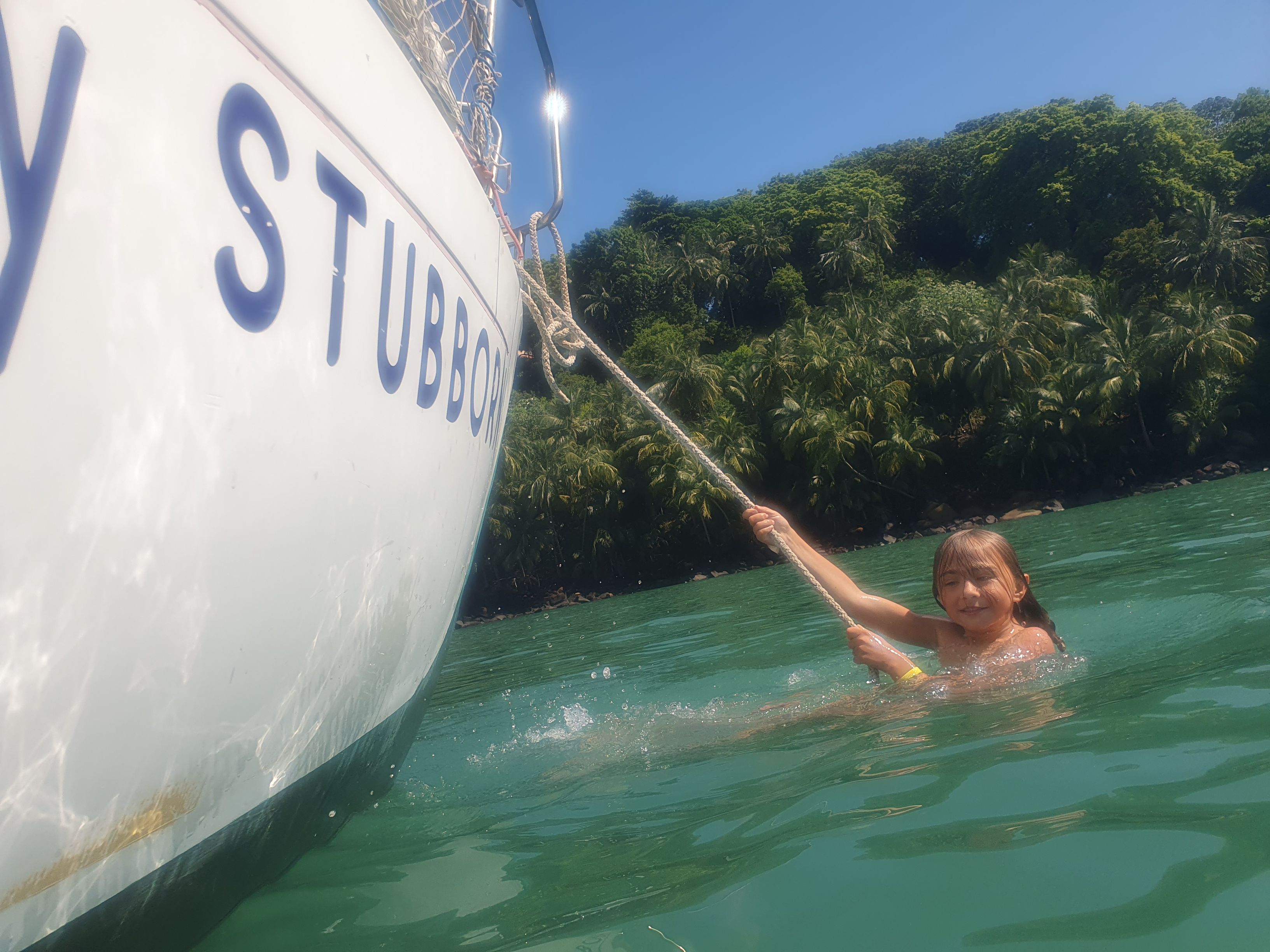

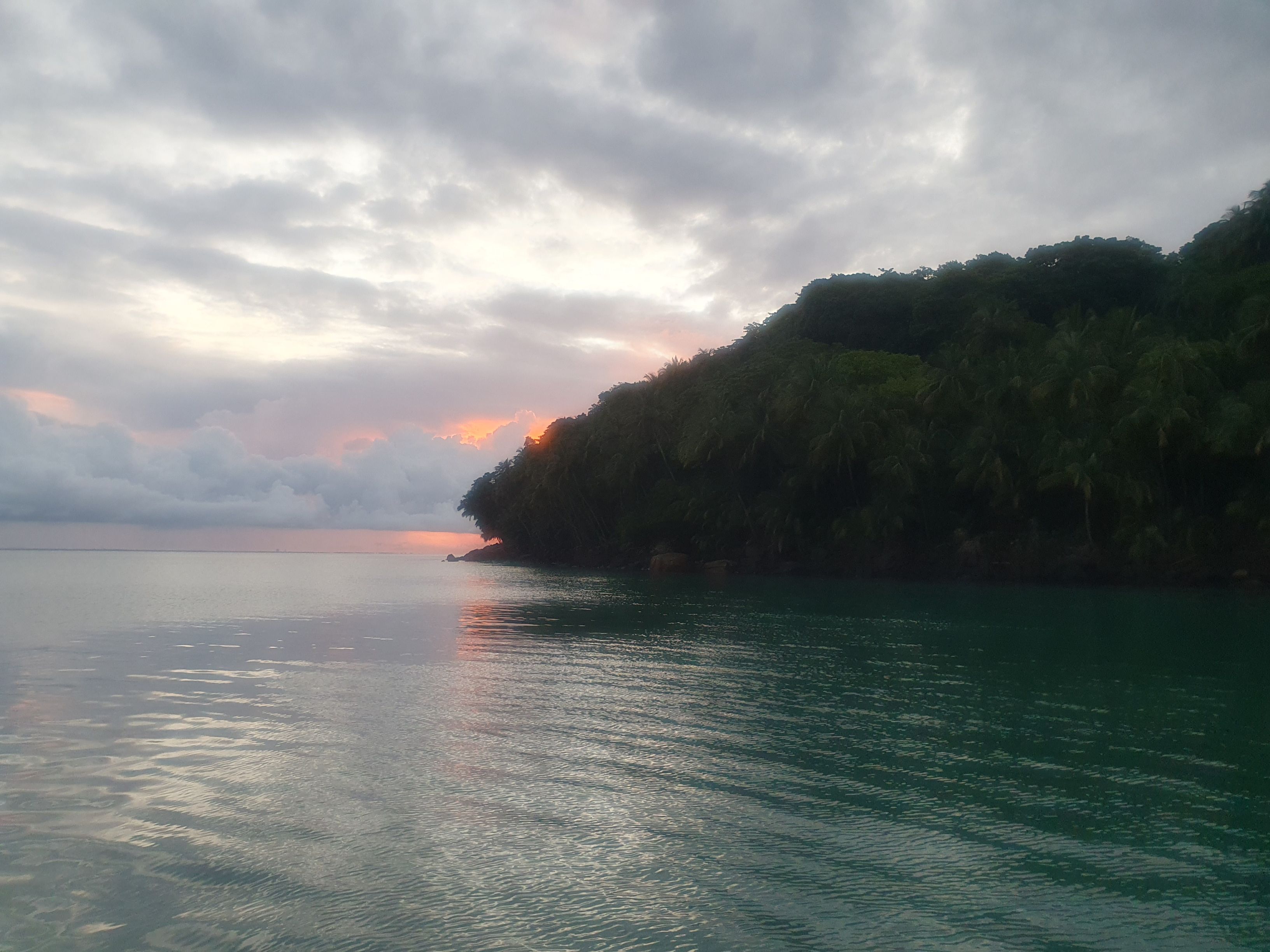
Iles de Salud - Saint-Laurent-Du-Maroni
We want to slowly move on, but there is supposed to be a complete calm, so we stay one more day. After four days on the islands, we head to Saint-Laurent-du-Maroni. There is almost no wind, and we don't want to overuse the engine because we have little fuel, so it takes us two days to cover 90 miles (including waiting for the right tide and sailing upriver). Along the way, we catch a fish unknown to us before, probably a king mackerel. Now we know what toothed creature here is constantly destroying rubber octopuses.
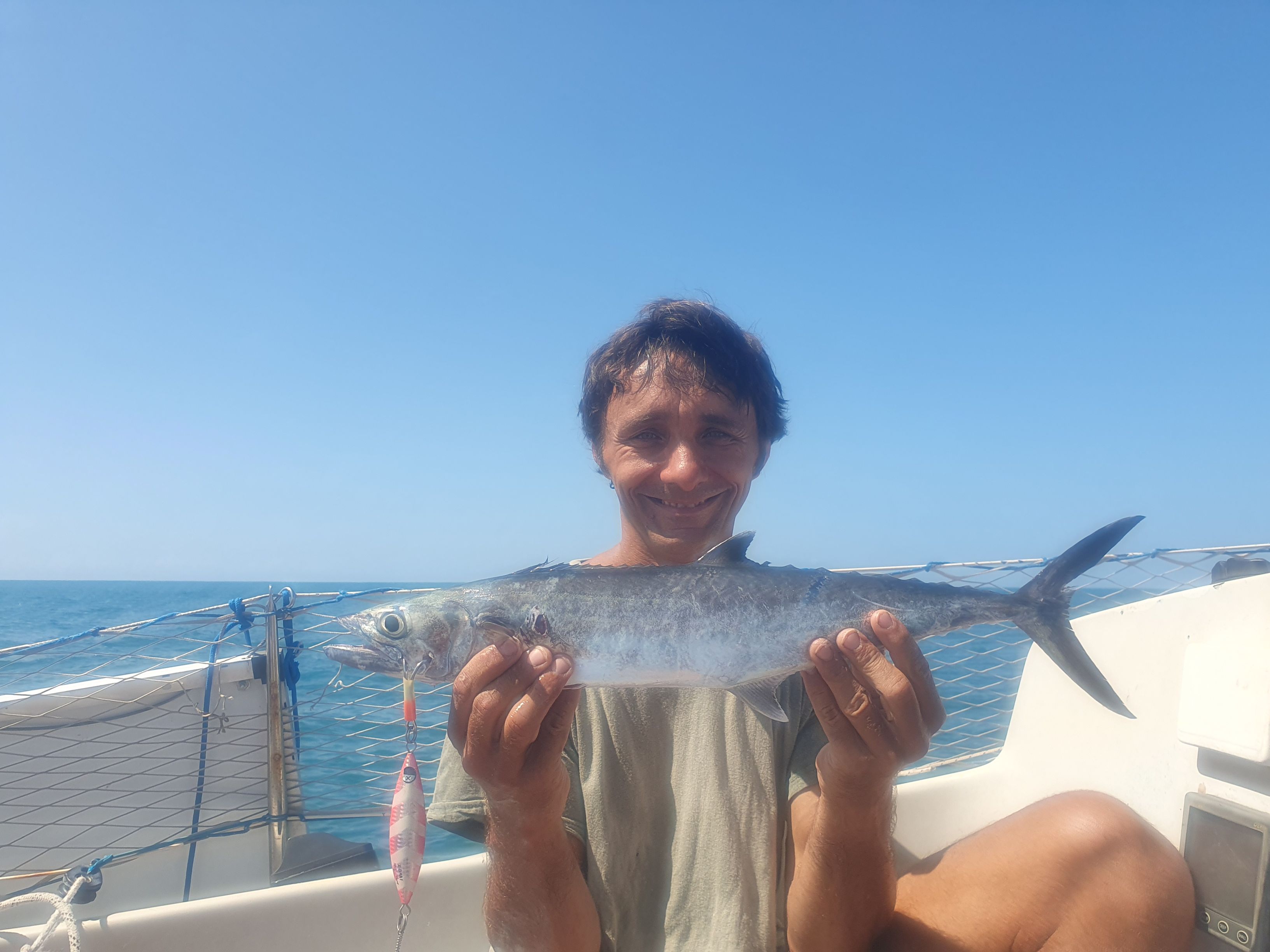
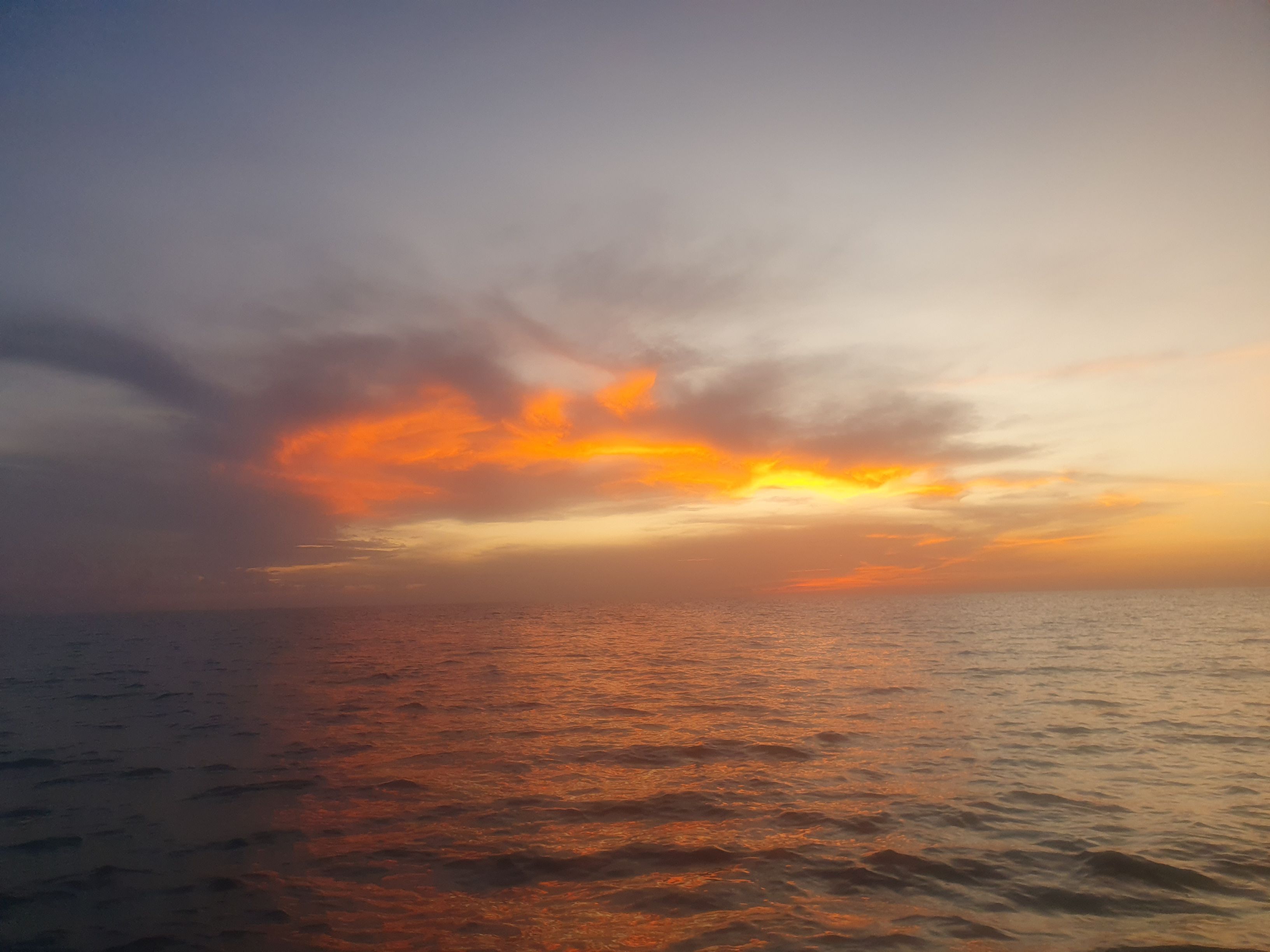
At the very approach to the river, we are, of course, caught in a storm and maneuver with very limited visibility.
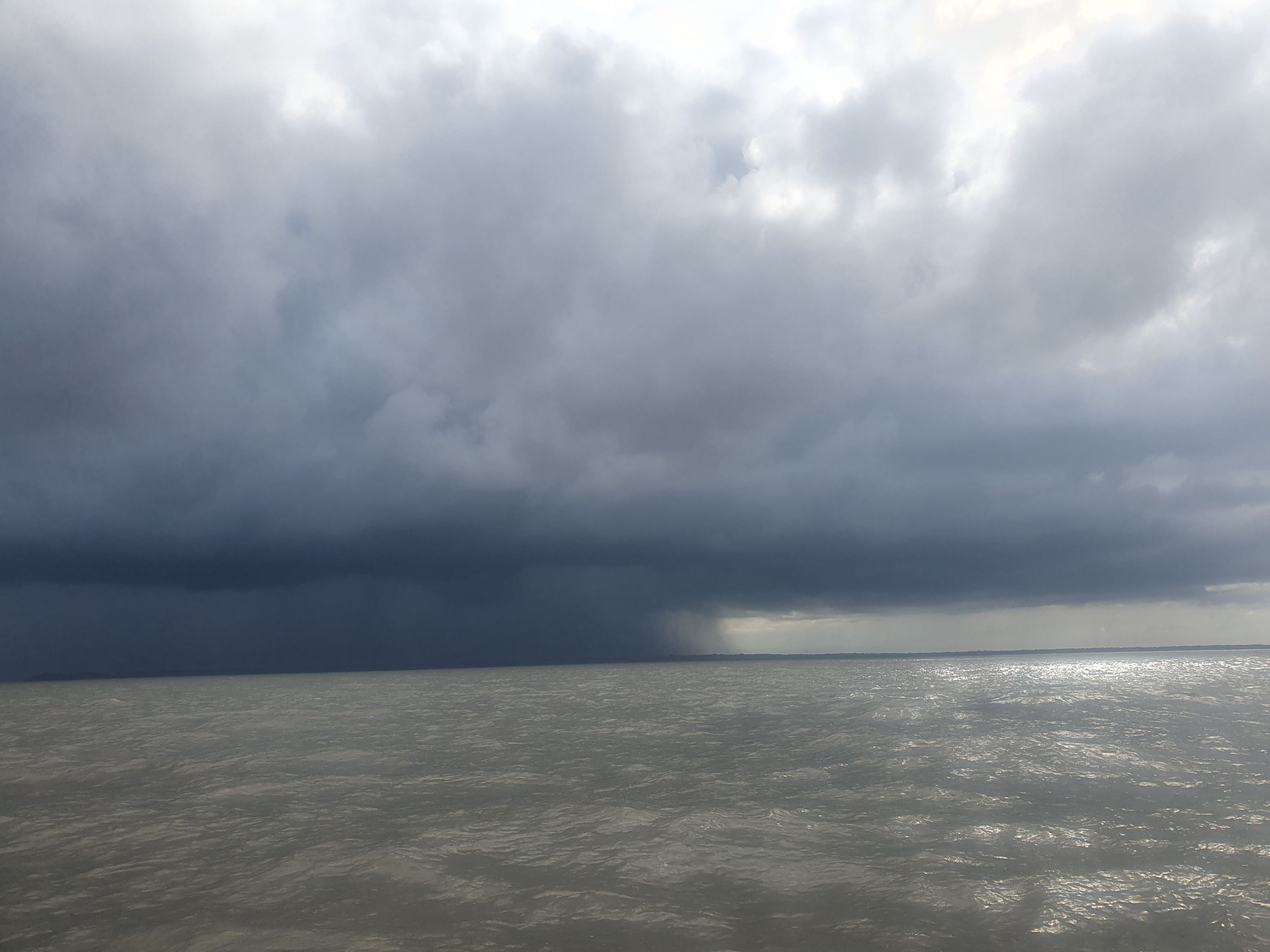
After entering the Maroni River, we anchor for the first night in its tributary. The tributary itself is roughly the size of the Vistula, and the Maroni is 2.5 miles wide at this point. In the sunset light, Zuza and Kamil have the same association - this place looks just like one of the bays on Lake Dobskie. Just like in Masuria at dusk, mosquitoes appear. We secure the prepared net on the bow hatch and the companionway and go to sleep.
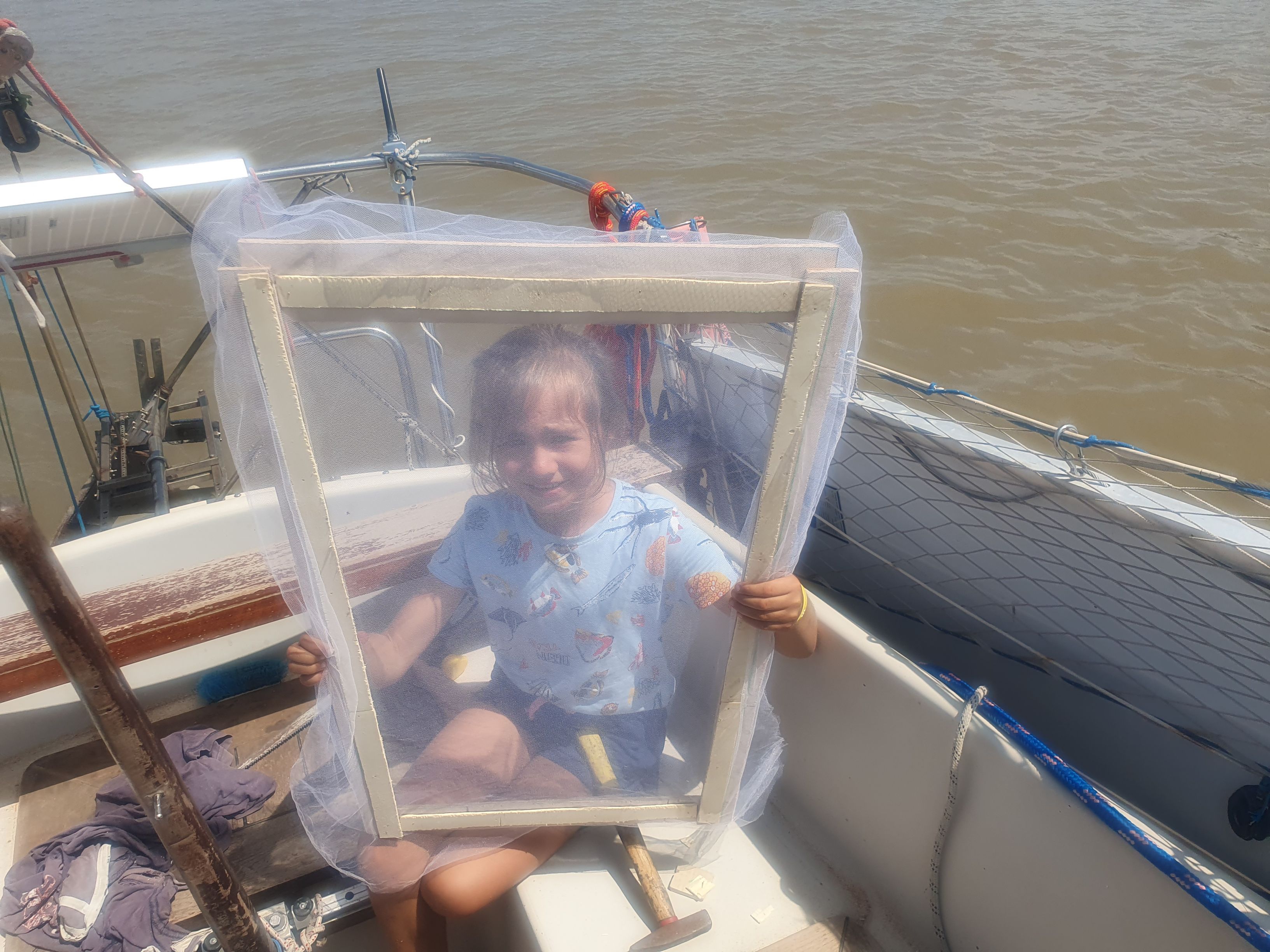
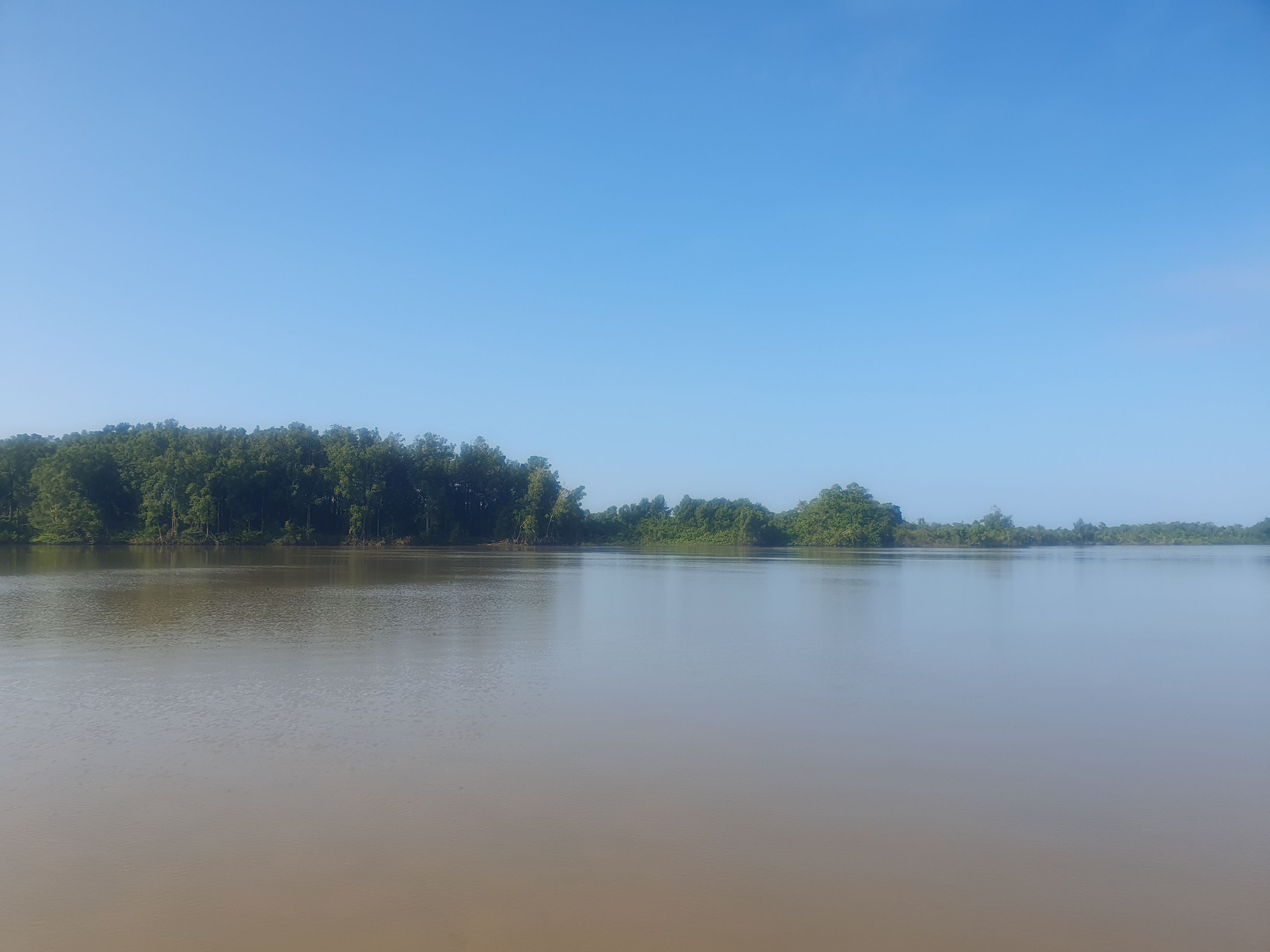
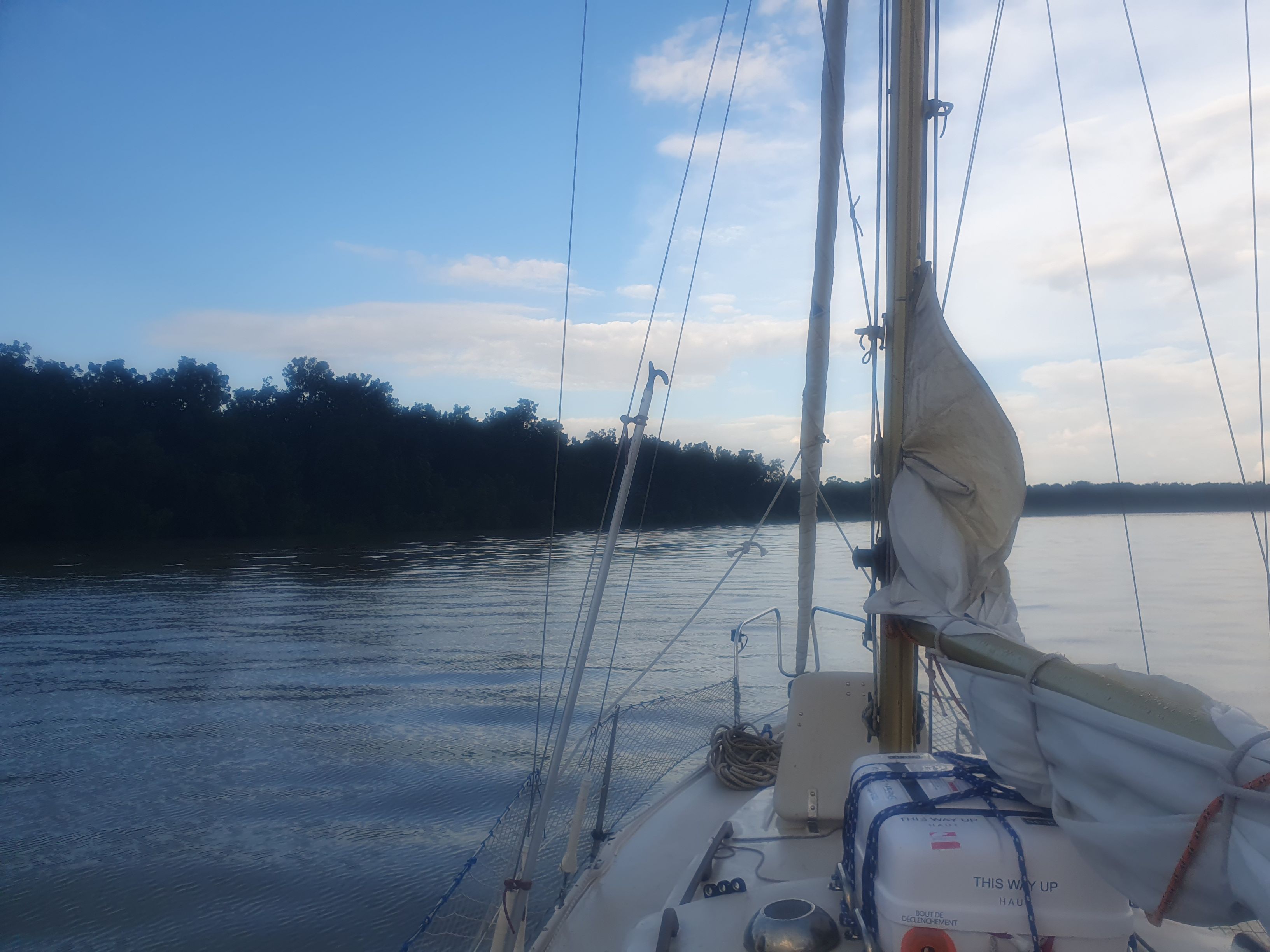
The next day, over morning coffee, Zuza turns on the internet on her phone and is met with an unpleasant surprise - so far, the phone had connected to the Guianese network, so roaming charges were minimal, like in an EU country, but this time it logged onto the Surinamese network and used over 200 PLN worth of internet in 40 seconds before the Polish operator blocked it.
As soon as the water starts to rise, we head to the city. Although the Maroni is very wide, it can also be surprisingly shallow - there are places with a depth of less than a meter. To avoid potential problems, we sail along the designated waterway. The course runs close to the shore in places, giving us the opportunity to admire mangroves and other exotic plants.
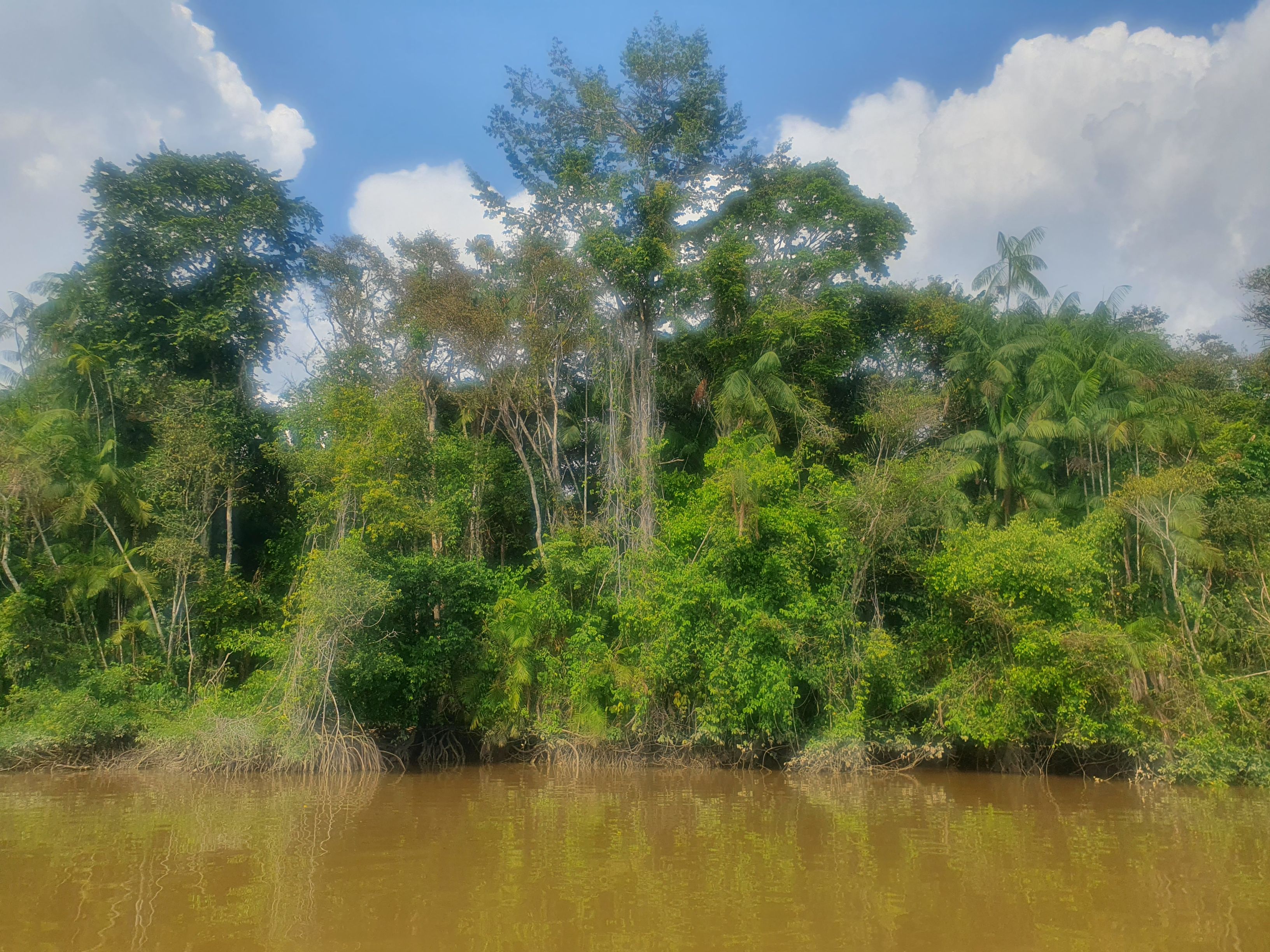
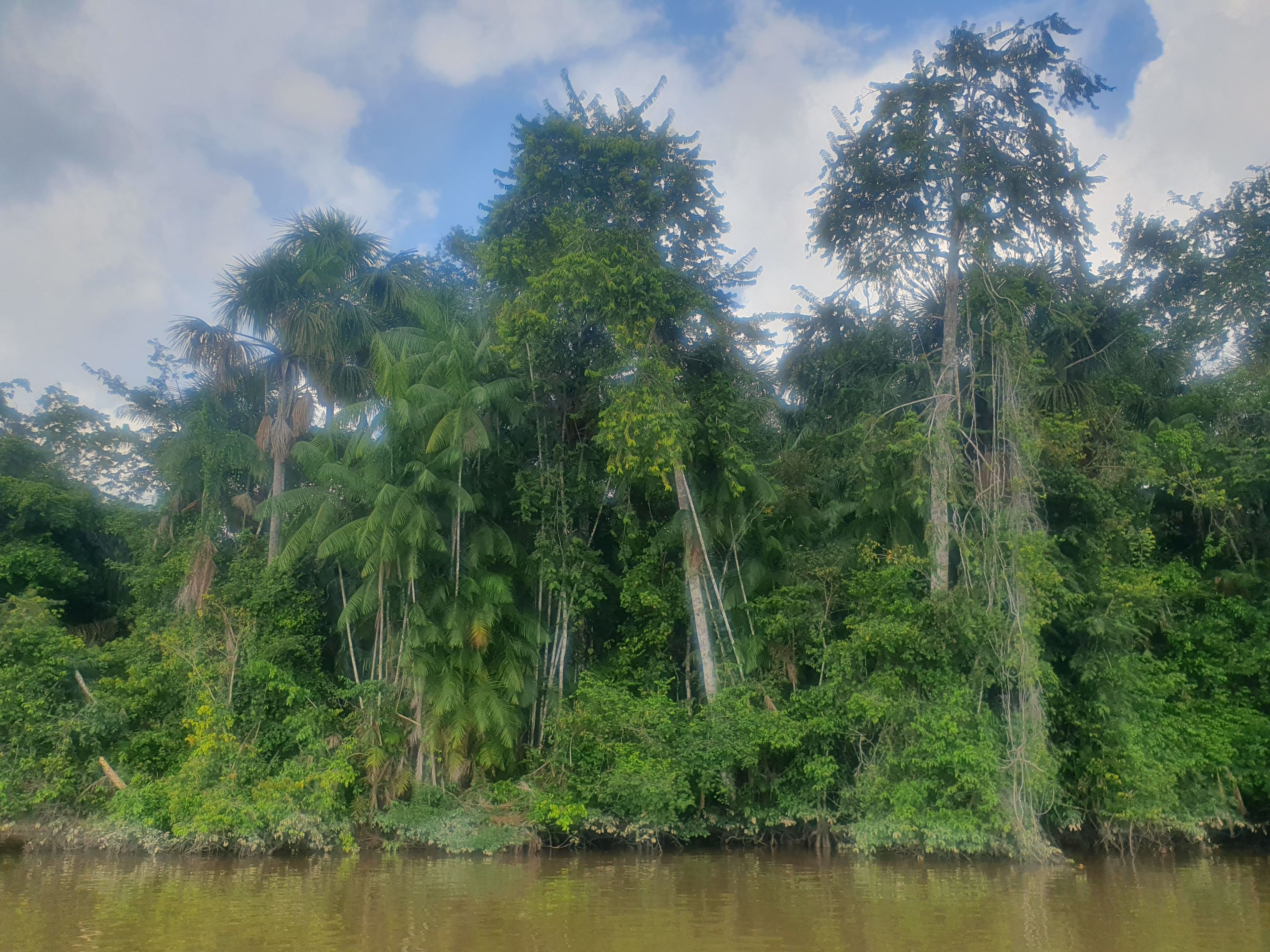
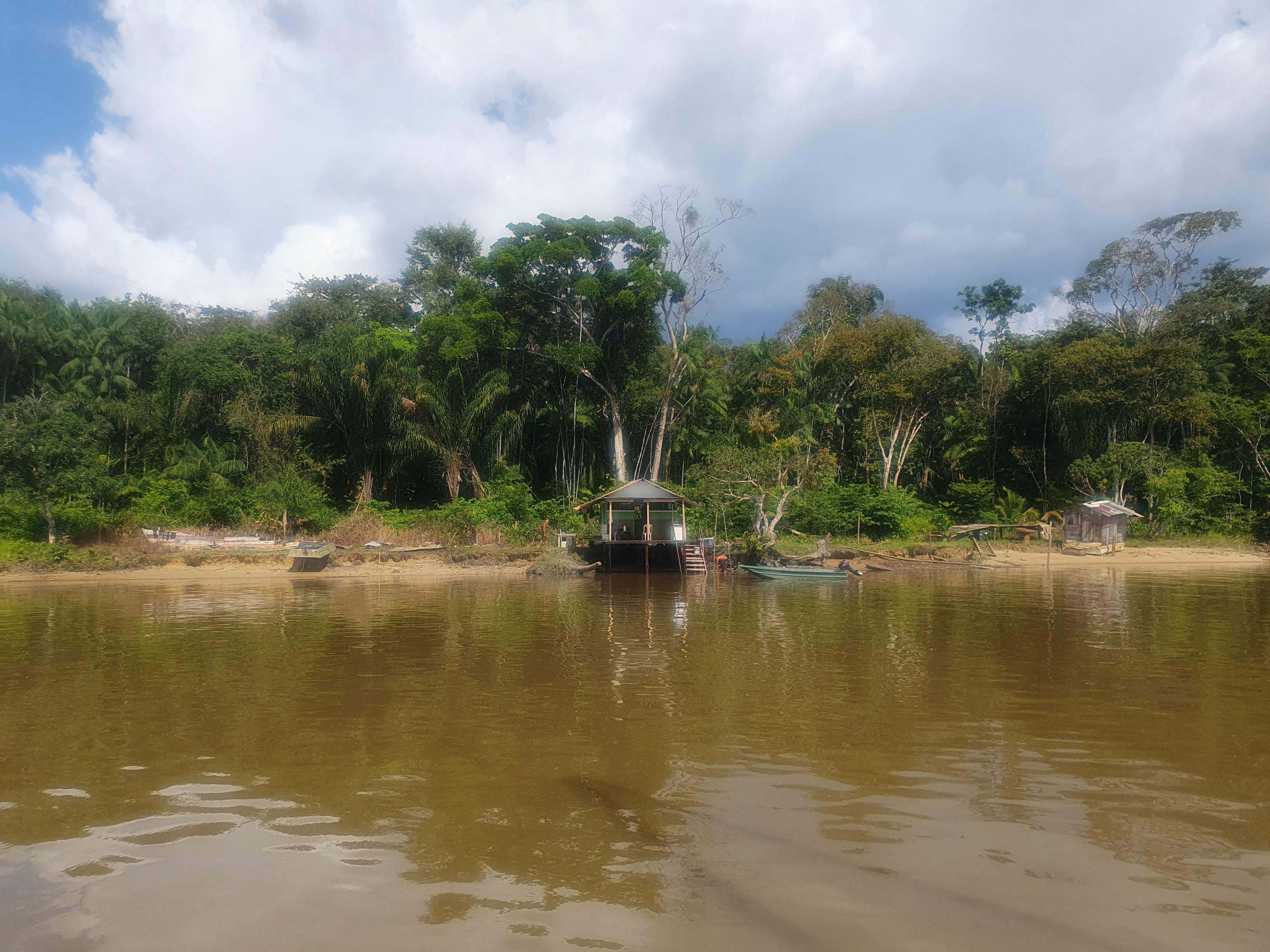

We see few animals, only large colorful butterflies occasionally fly out of the thicket. After about 4 hours, we approach the town. The anchor buoys are easy to find as they are located near the roughly twenty-meter-long wreck of Edith Cavell, which in the tropical climate quickly became overgrown with trees and from a distance looks like an island, only up close can you see the steel sides.
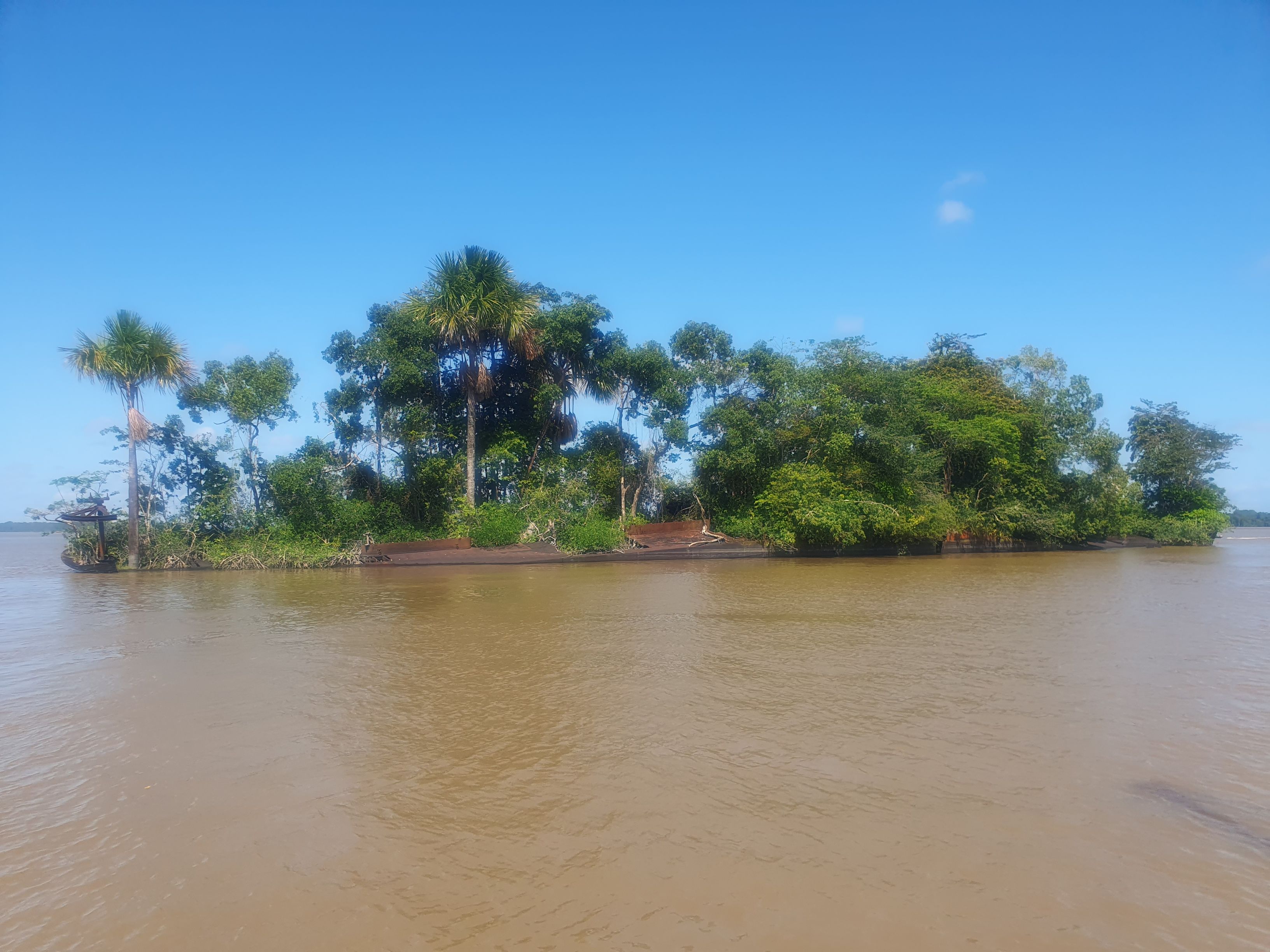
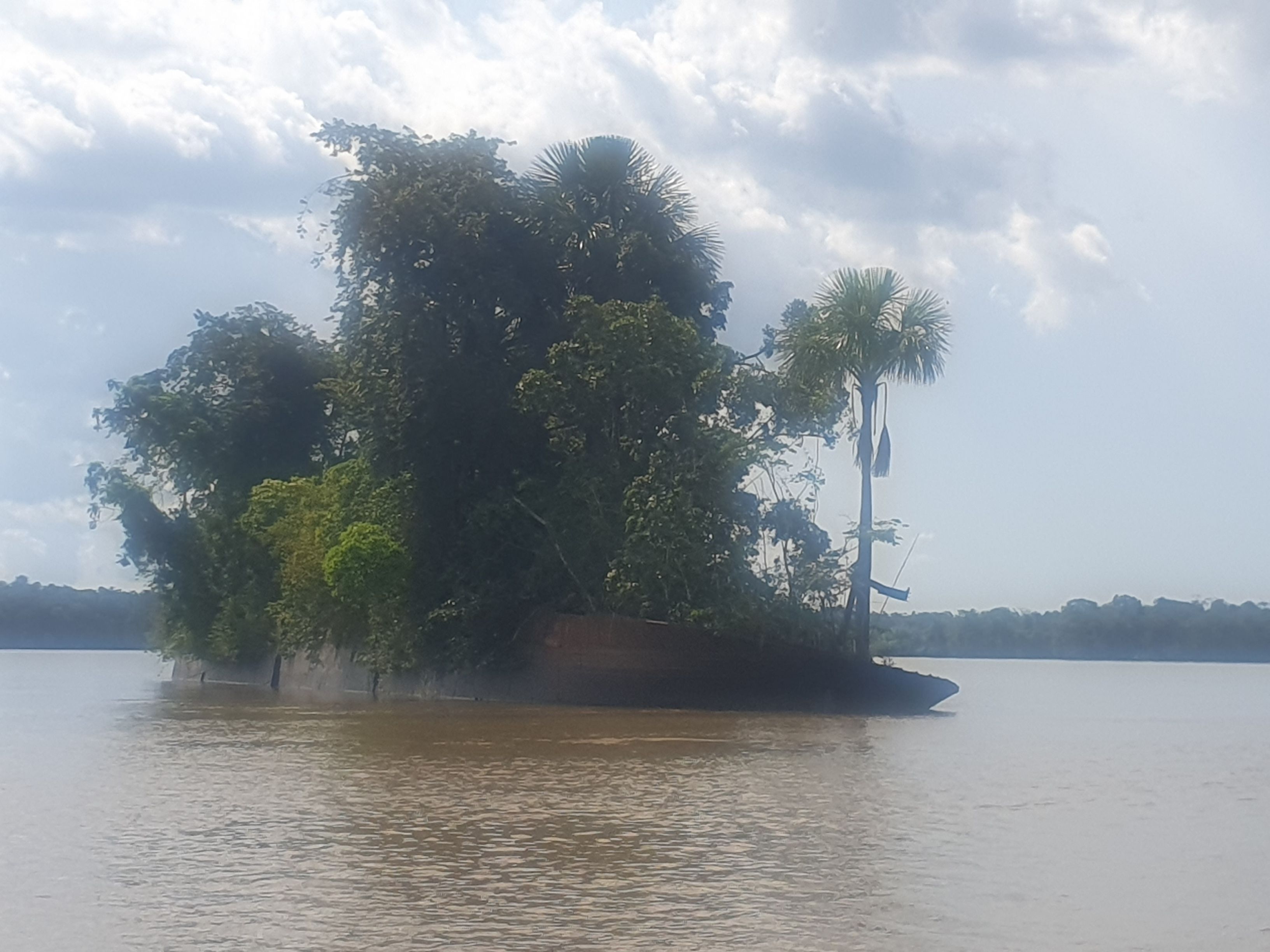
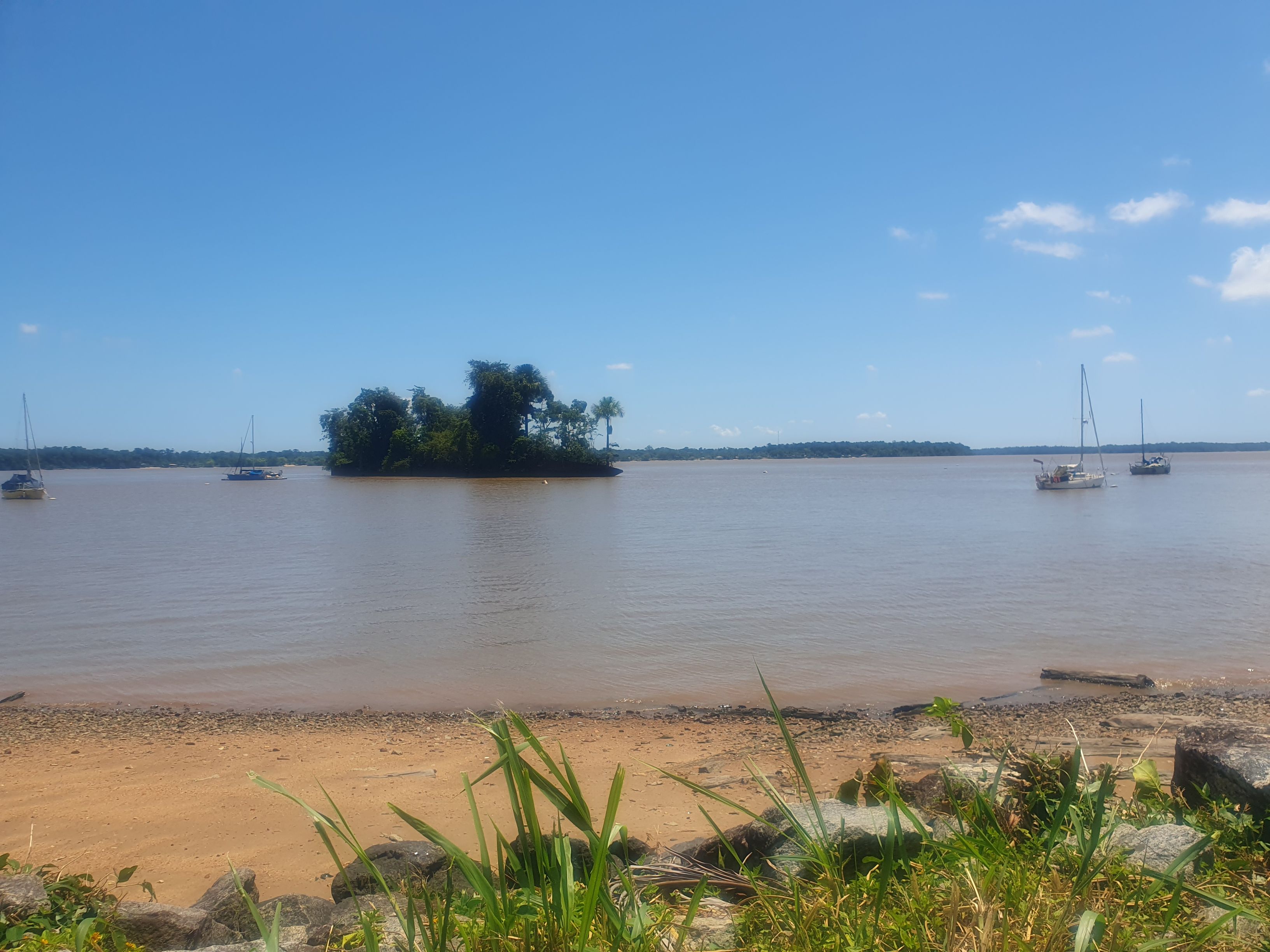
We dock 50 meters from the boardwalk, near cafes and a playground. It's Sunday afternoon, so the place is full of families with kids. We have concerns about how our rowing dinghy will handle the river's current, but it turns out we needn't worry. When we paddle to shore, the tidal waters are still flowing upriver, and with a little help from the oars, they carry us to the beach by the promenade. When we return, it's slack, the water flows neither this way nor that, so there's no problem. Later, we synchronize our trips ashore with the tides, and the water carries us from the boat to the pier or vice versa.
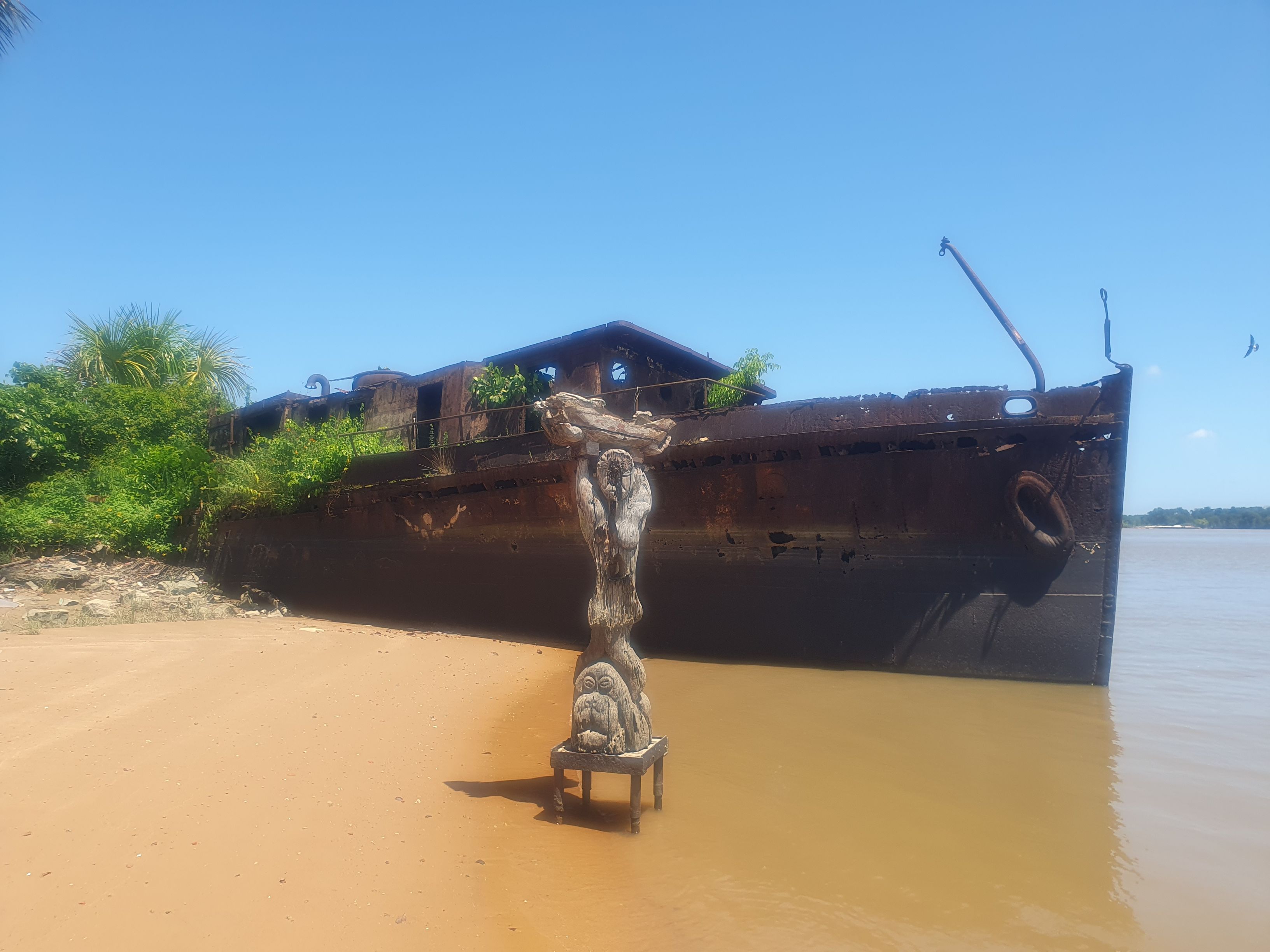
On land, we report to the tavern belonging to the marina - a friendly employee shows us where to moor the dinghy, where the toilets are, and where we can get drinking water. The boss is currently absent, but he should be back soon, so we decide to wait for him while sipping beer or Fanta.
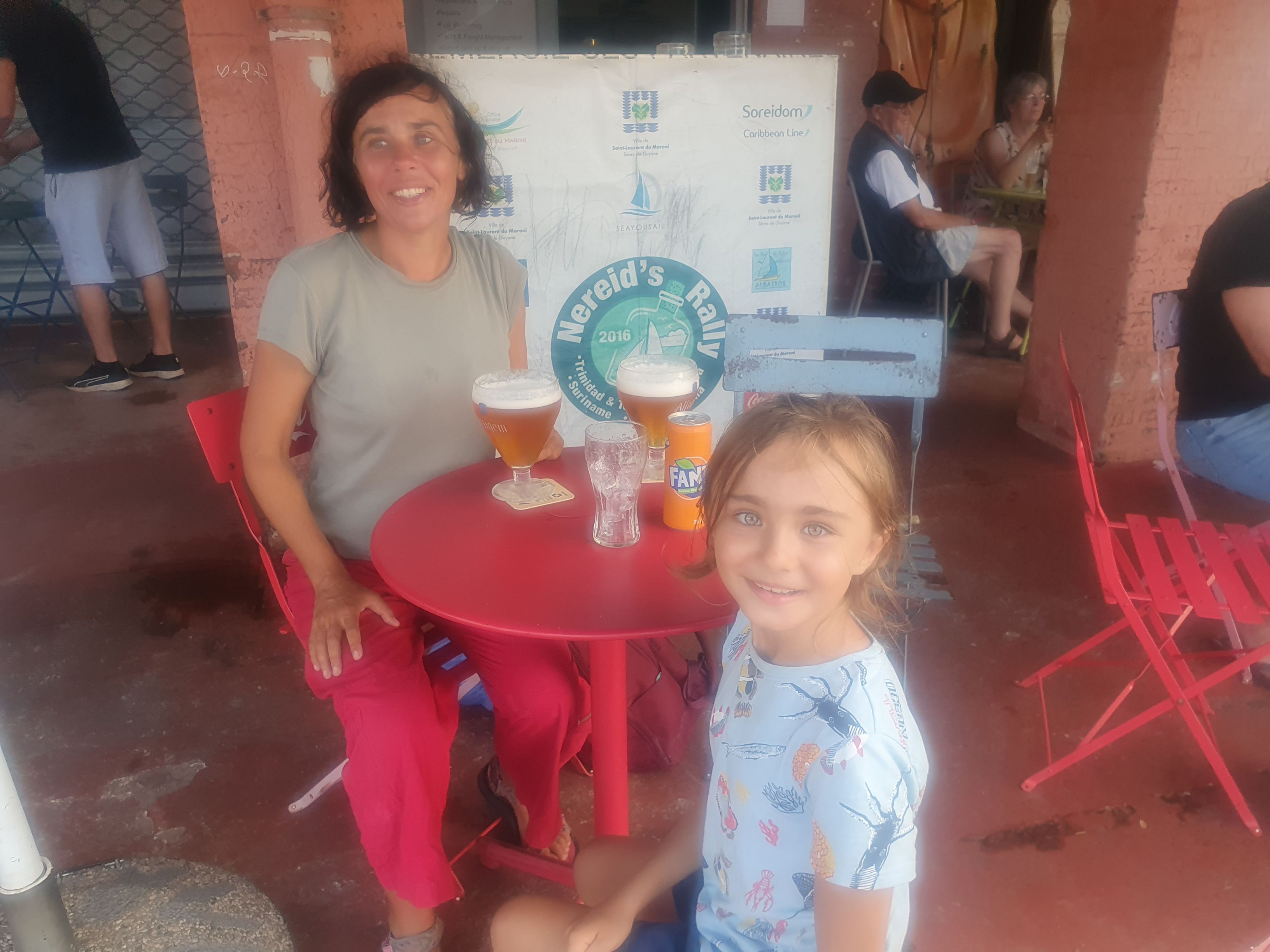
The boss shows up after about half an hour. It turns out he is Italian, educated in Europe and the States, and speaks fantastic English. For many years, he worked as a computer scientist designing security systems for global banks. He worked on almost every continent until he felt burned out and decided to radically change his life. He got on a five-meter yacht, crossed the Atlantic, and spent some time sailing around the Caribbean until a French sailor friend took him to Saint Laurent. He liked the town as a good place to live, and it also turned out that the local authorities were eager to support his business plans - he got a great spot for setting up buoys and was rented a place for a restaurant. For several years, Dave also organized the Nereid's Rally - leading sailors from the Caribbean to French Guiana to show that contrary to popular belief, a return from north to south is most certainly possible. Although the Guiana Current flows upward along the coast, further out to sea, it turns around so that one doesn't have to fight it; on the contrary, it can help the sailor, and within 7 to 10 days, it is possible to reach French Guiana from Trinidad. He no longer leads these rallies because he started a family in Guiana, has two small children, and knows that he is very much needed at home. On Monday, Dave checks us in (which takes about 5 minutes) and explains which areas are safe and which a tourist should better avoid. We follow his advice and perhaps that's why we don't encounter any unpleasant situations during our stay. The locals are a bit surprised that we don't speak a word of French, but they are very friendly.

The population of Saint-Laurent consists of Amerindians, as well as black descendants of slaves who fled here from Suriname, white French, and all possible combinations of these three basic types. Dave has a very good opinion of the indigenous people - they are hard-working, eager to learn, and they hold most of the important positions in the town. Trade has been largely taken over by the Chinese, we don't know who owns the town's only hypermarket, but all other stores have local employees, although they belong to people from the Middle Kingdom. Meanwhile, a significant portion of the businenge (black people from the forest) live on social assistance and engage in crime, although we also encounter representatives of a normal middle class.
For the first walk, we head along the river. We photograph a cannon and at the remnants of a pier, we come across a cargo scale and the house of the director of the penal colony transit center immortalized in the movie Papillon. We also admire the local sense of humor - a concrete GSM tower has been disguised as a palm tree - one could be mistaken, if not for the fact that it is three times taller than the surrounding real trees.
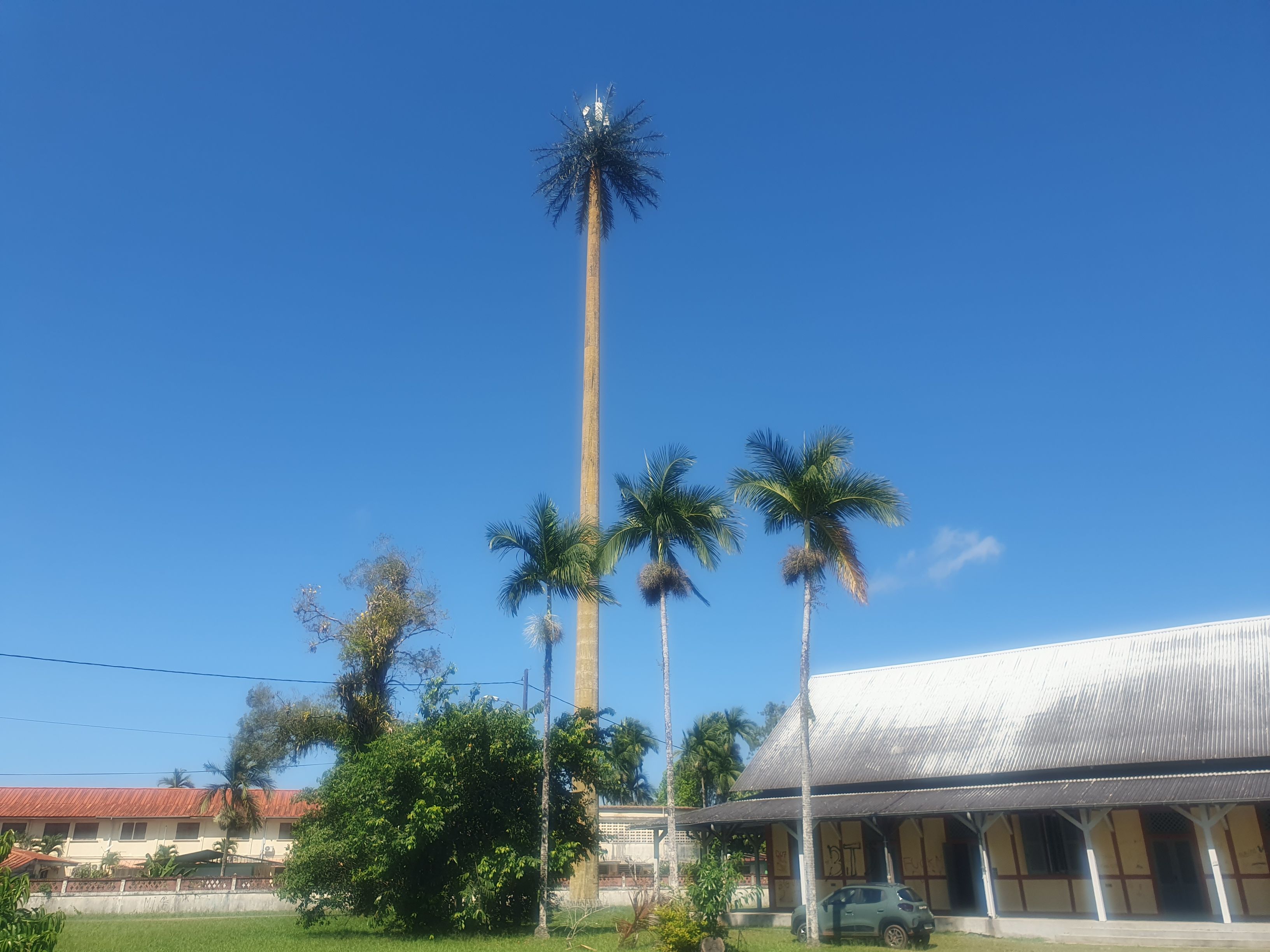
We are moving along one of the main streets - there's a small church, a little square, and numerous shops, mostly of the "everything and anything" type. The sight of baguettes entices us to shop at FeiFei Market. Besides bread rolls, there's a wide selection of alcohol, tools, canned goods, sweets, camping gear, frozen foods, small appliances, about 16 types of hair dye, each in black or dark brown, and hundreds of other items crammed on tightly packed floor-to-ceiling shelves. Longing for fresh food, we buy Nutella, powdered milk, chocolate breakfast cereal, a stash of bubble gum, Campingaz cartridges (finally gas for our French stove), a kilo of frozen hamburgers, two baguettes, and ice cream. The hamburgers turn out to be surprisingly good quality and are so tasty that we devour almost a whole kilogram in one day. We also visit the penal colony area - as it turned out later if we had arrived before 4:30 PM we would have had the chance to visit the interior of the camp buildings with a guide, but instead, we only see them from the outside, which is still very interesting.
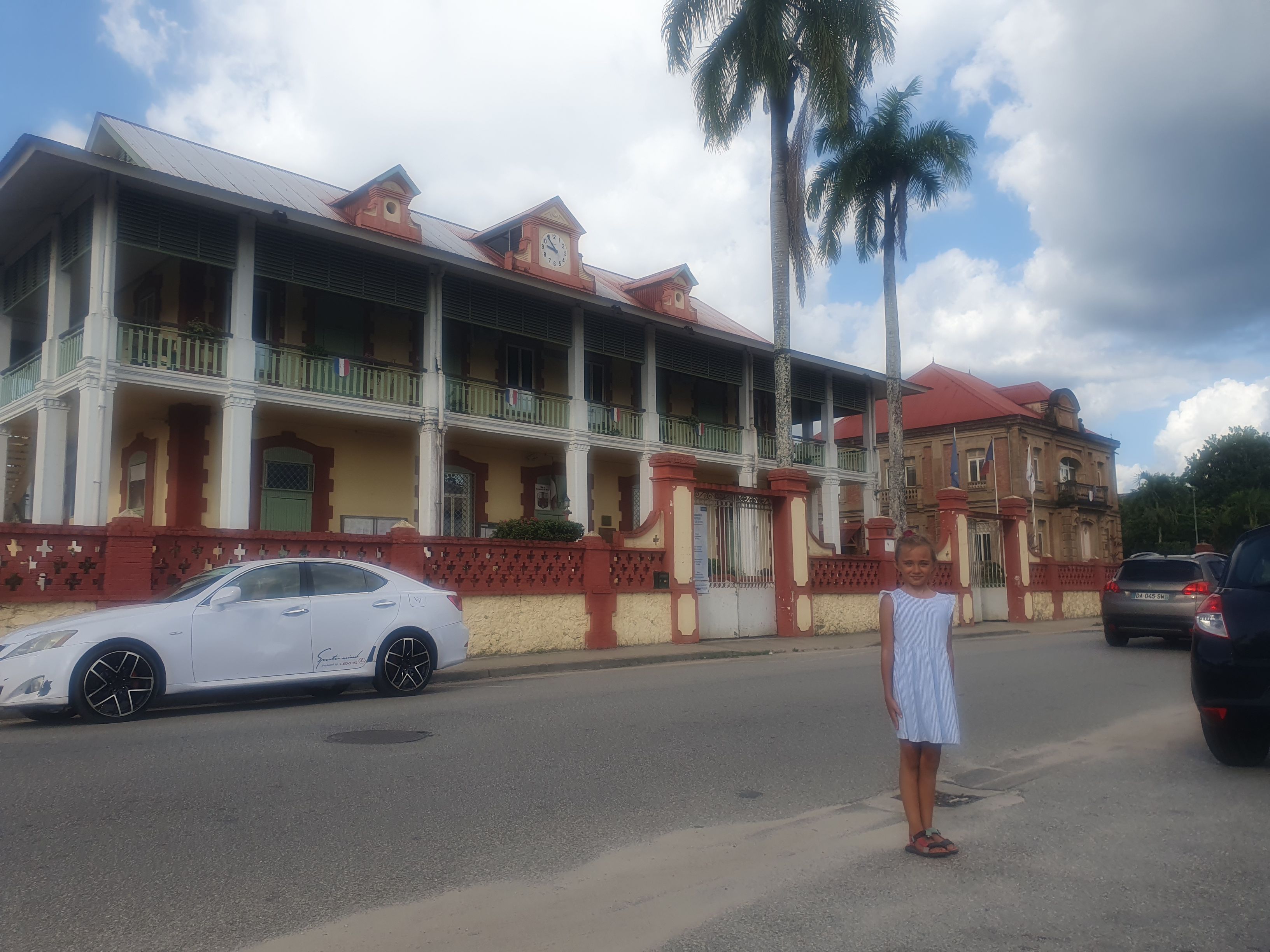

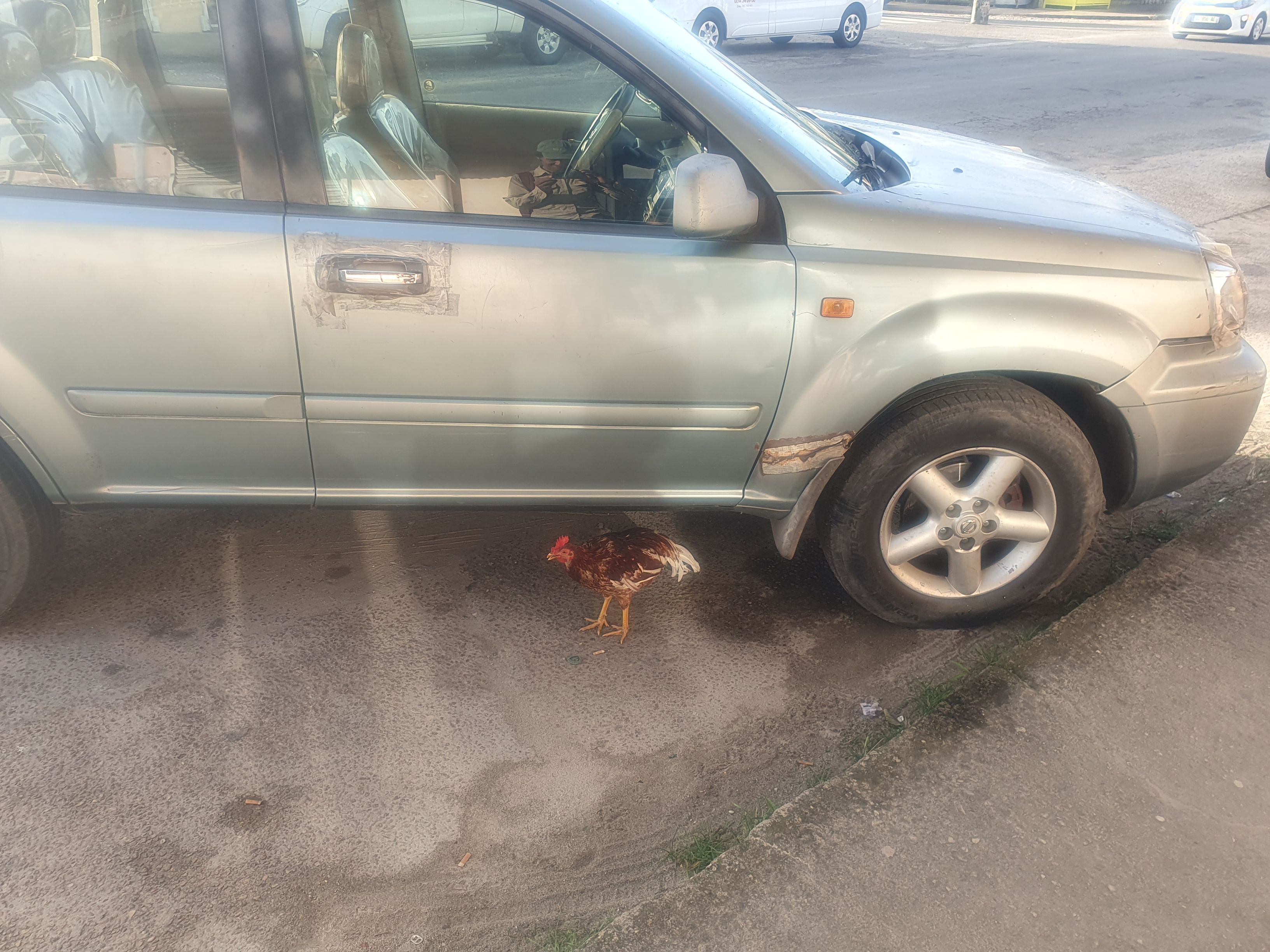
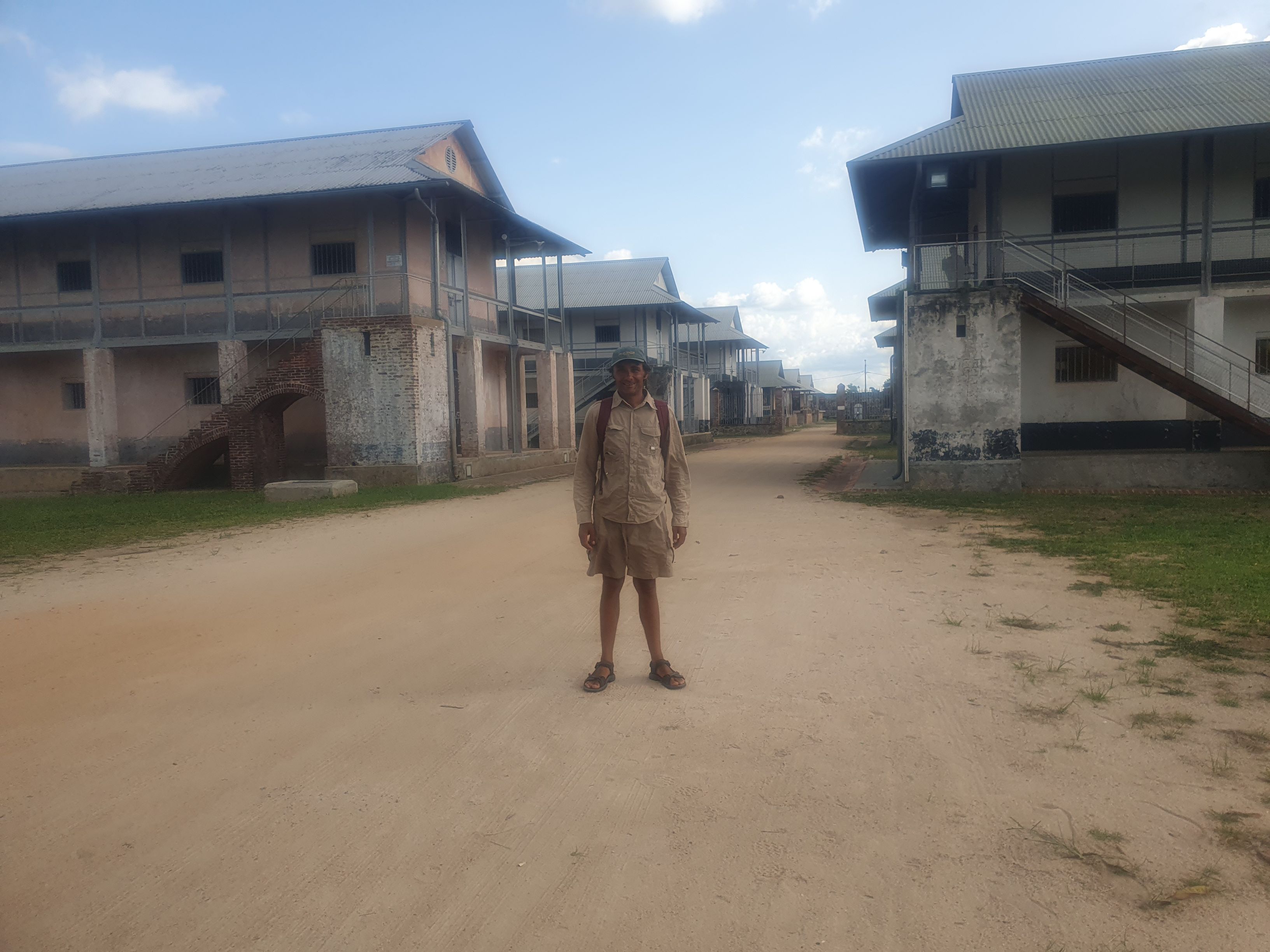

Meanwhile, we replenish the fuel supplies. Our luggage cart comes in handy again.
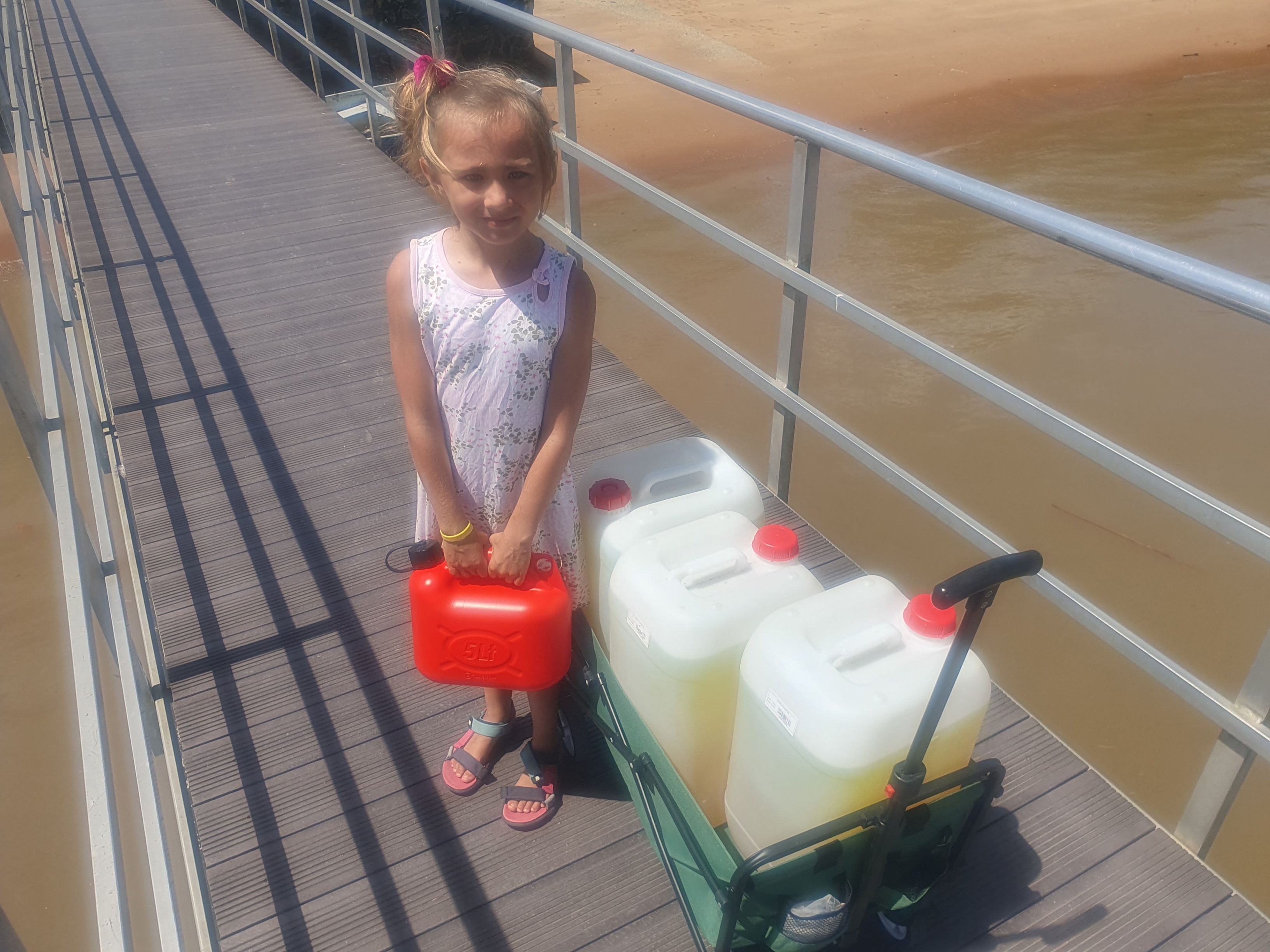
In the late afternoon, we head back to the shore. Being close to the equator, day and night are almost equal, and it's already around 6:00 PM when it gets dark. The temperature is very pleasant, so the playground is quite busy. In the bar next to the playground, cold juices made from fresh fruits are sold - while we decipher pineapple, passion fruit, ginger, and lemon quite easily, the others remain a mystery to us. Kamilka decides to take the bull by the horns and orders juice made from pasteque, which turns out to be just watermelon. Later, at the playground, Kama meets a friend who speaks a little English. The girls play while Zuza talks with the mother. Germaine praises Saint Laurent as very child-friendly; they themselves lived on Corsica for a few years, but when their little one started school, they returned here - they feel safer and find it easier logistically.
On Tuesday, we are pleased to discover that although the fruit market is only tomorrow, a few stalls have already set up today. Some of the fruits and vegetables look very familiar - onions and garlic are the same as in our markets. Some look like Polish vegetables - for example, something resembling green beans, except that the pods are about a meter long (later we try this vegetable in a restaurant and it also tastes like green beans), sweet potatoes come in a range of varieties, smaller and larger, red and white, round and elongated. You can also buy green oranges - Zuza has a vague childhood memory that this is what "Cuban" oranges, which made their way into Polish stores during the communist era, used to look like. Some products are completely exotic to us - Kamilka recognizes the jackfruit only because her grandmother once showed it to her in a photo. The seller doesn't speak English or Spanish, but his daughter acts as a translator. When they learn that we've never eaten jackfruit before, they recommend choosing a rather hard one and explain how to prepare it (the softer ones are okay too but require more skill in peeling and cooking). We also acquire a watermelon that looks exactly the same as in Poland, a pineapple that's definitely more elongated, and something we take for papaya, but turns out to be a cacao pod. They explain to us that cacao seeds are found in sweet shells that you can eat, while the seeds need to be dried in the sun and roasted. To the vegetables, we add three hard cakes about 40 centimeters in diameter each. Zuza thinks these are authentic cornmeal tortillas, but the cakes are very thick and so hard that they're difficult to bite. In the marina, we are informed that in reality, the cakes are made from cassava, used as a soup addition - when soaked in broth, they become more edible - and they're great travel food, as they can last for months without spoiling. When we start eating them with soup, we like them a lot and buy more. At the vegetable stall, we curiously look at black lumps in plastic bags. Zuza guesses it's some kind of caramelized sugar, but the sellers, hiding their amusement, explain to the northerners that it's not for eating, it's something like charcoal for the grill.
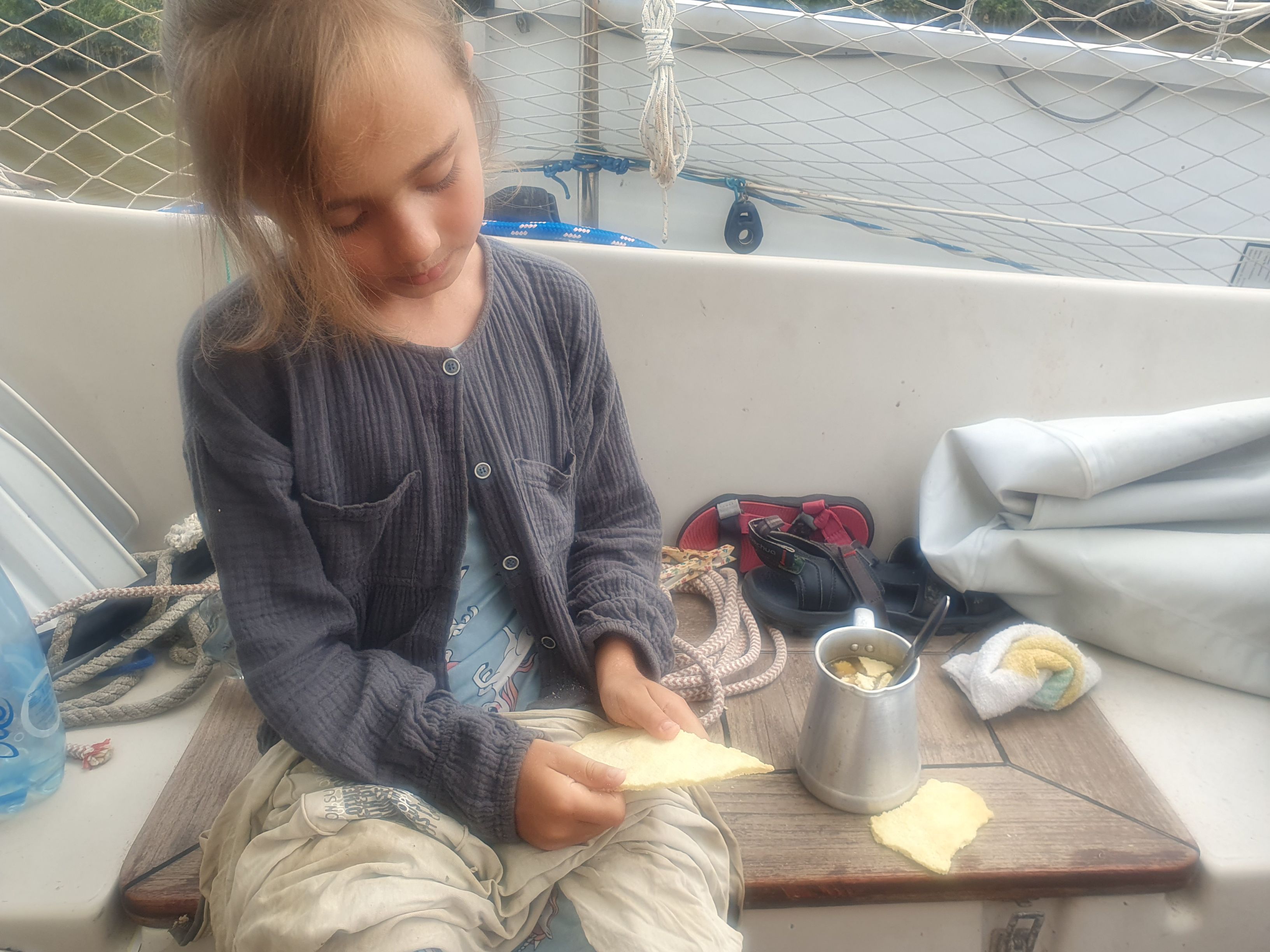

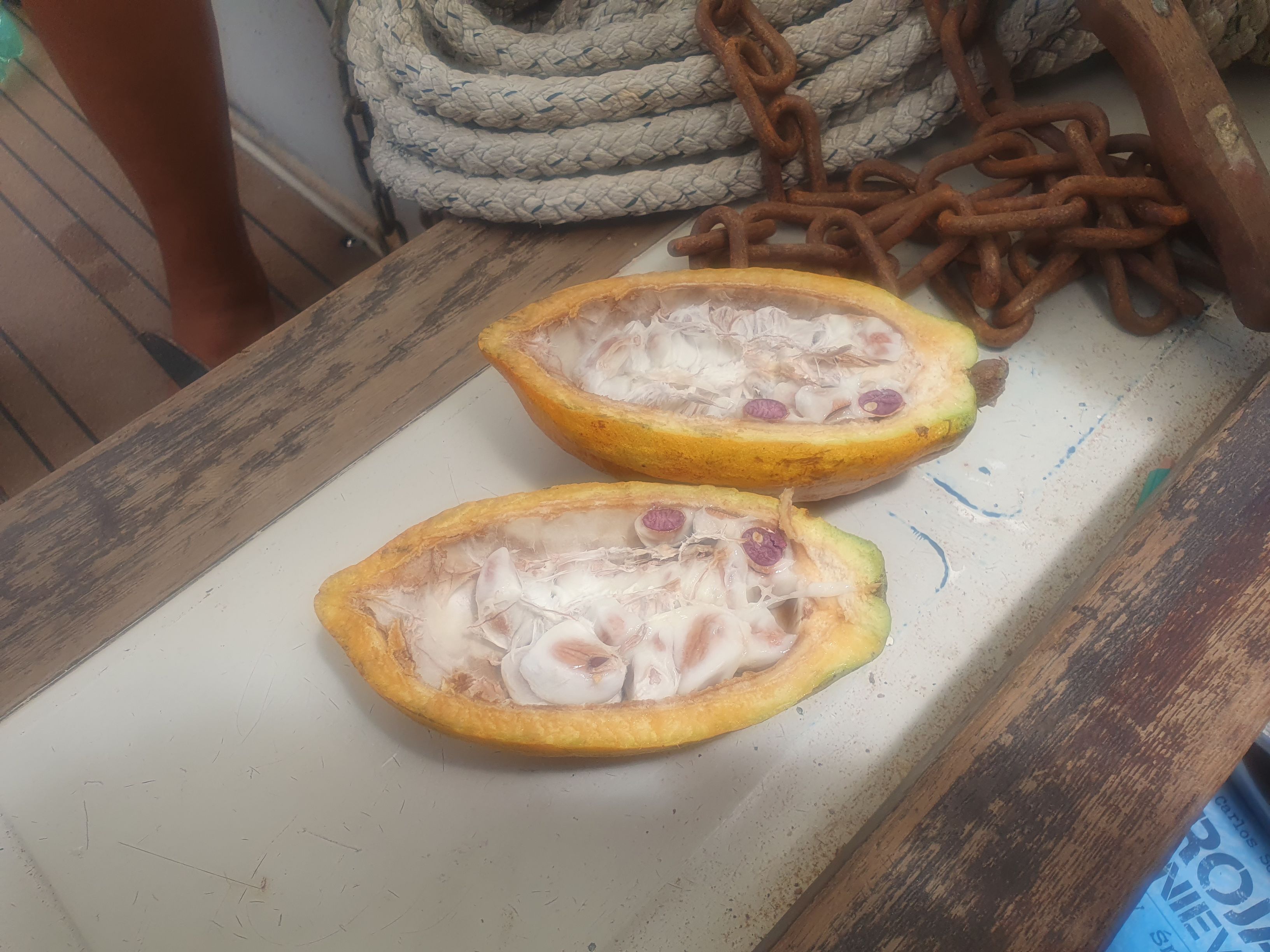
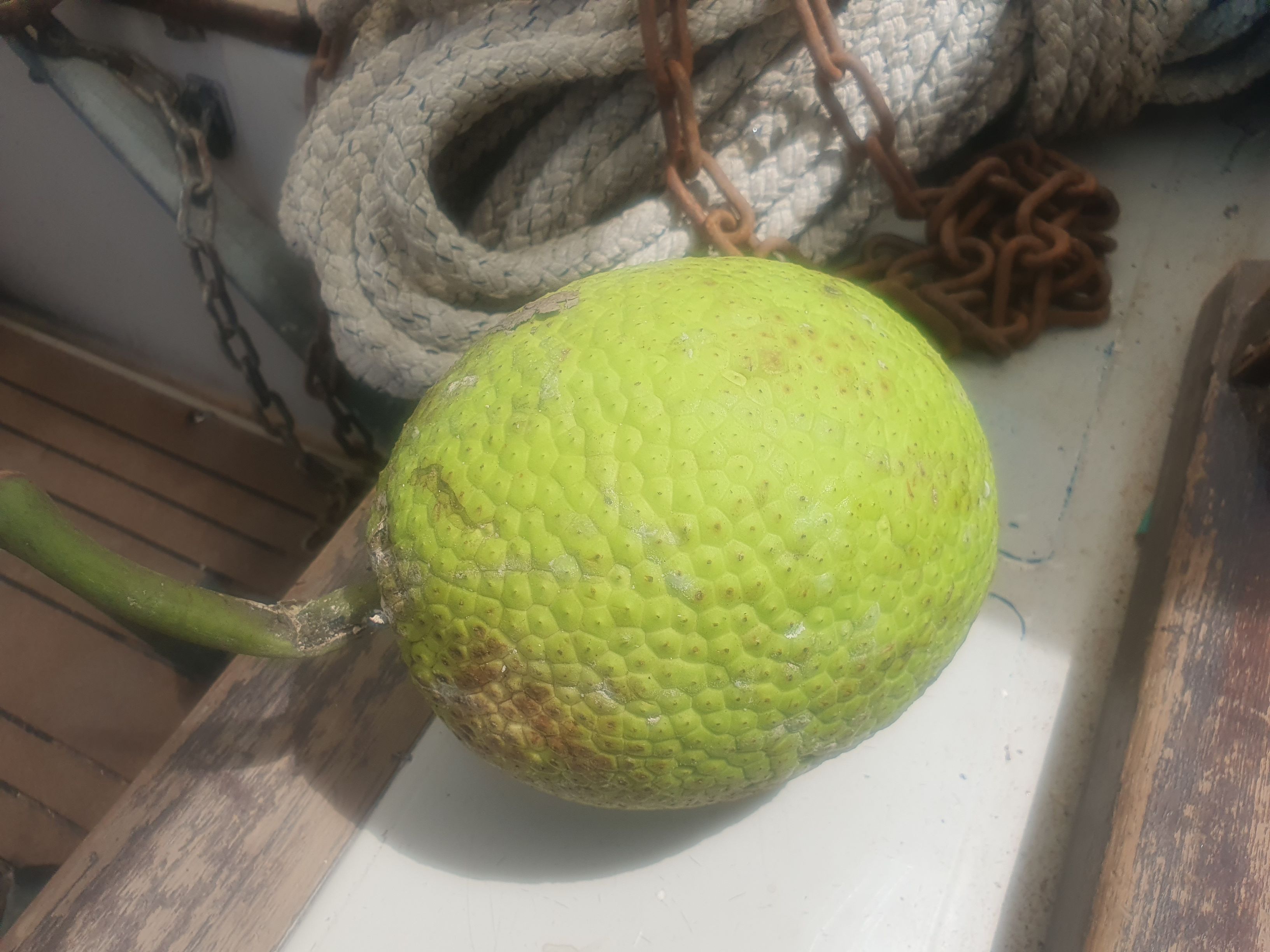
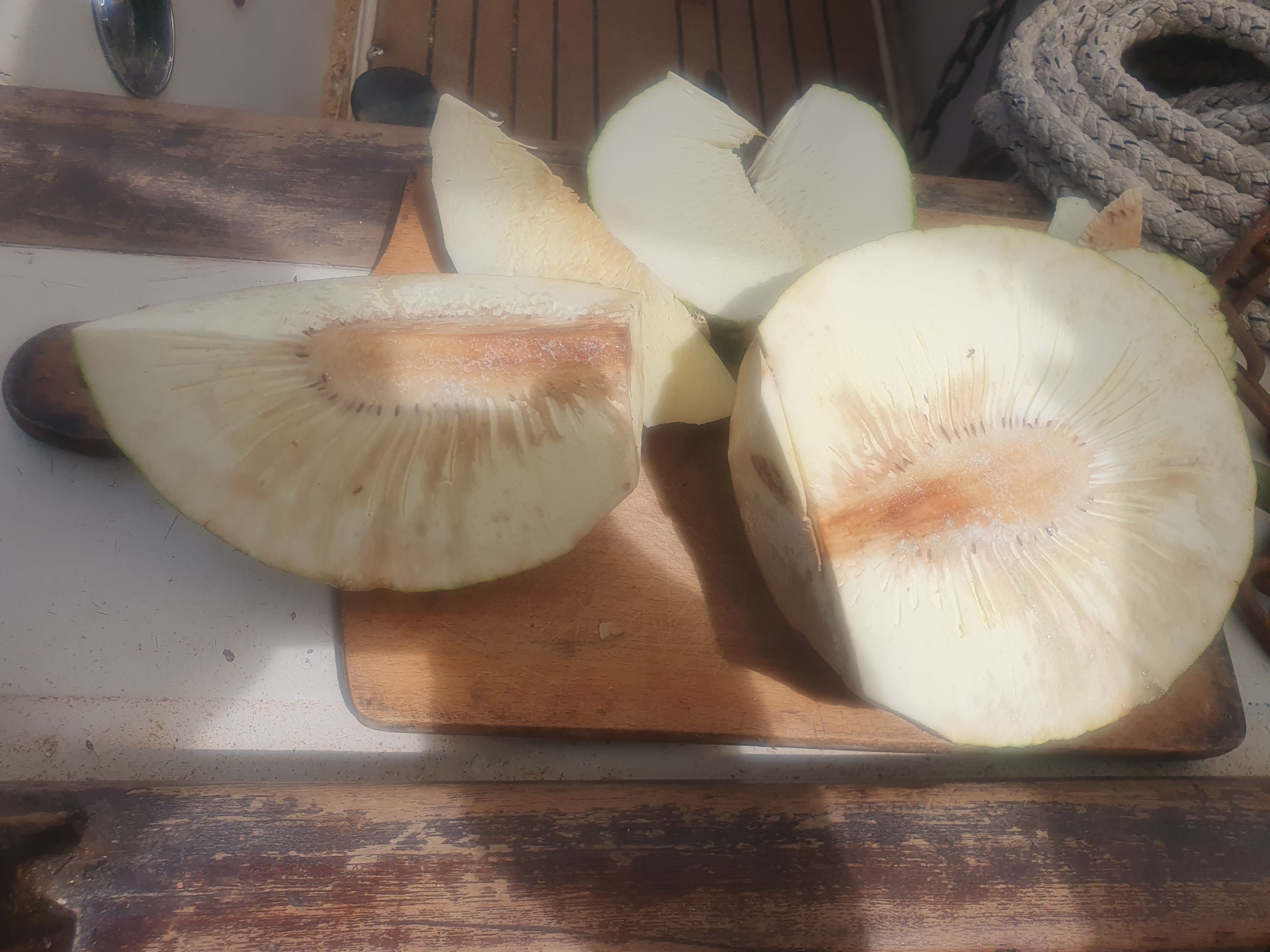
Loaded with fruits and vegetables, we head to both computer stores in town. Our laptops got damaged during the voyage - one can probably be repaired quite easily, the other is beyond repair. They were kept in bags in the driest spots, which this time got wet due to a shroud leak. For the next voyage, we intend to buy a Pelicase for the laptop, but now Kamil needs a Windows device for his work programs, and for further travels, we could use a computer that wouldn't be too much of a loss if destroyed. Compared to Poland, equipment is quite expensive, and the selection isn't great, but it's important to note that we are in a small town and are looking for equipment in-store, not online. The cheapest we find is a Chinese laptop - the quality isn't impressive, but it doesn't fall apart in your hands either. The store issues us a regular European invoice, offers a warranty, and the seller assures us that if our 12V charger doesn't work with it, they'll take it back without any issues. Only on the boat do we realize that we've purchased a laptop with a French AZERTY keyboard - it complicates things a bit, but we decide we can manage using it without major problems, and since it charges well, we keep it.
For lunch we eat breadfruit. The green skin peels quite easily. Just in case, Zuza cuts out the core with seeds from the center, and slices the white flesh into pieces slightly larger than fries. Like potatoes, breadfruit is poisonous when raw, but it can be cooked or fried. We opt for the latter. The vegetable turns out to be delicate in flavor and pairs wonderfully with Canary sauces to potatoes. We eat a whole pan of this delicacy. We cut open the cacao pod, eat the sweet jelly in which the almond-like seeds sit, and lay them out to dry on the boat deck. A few days later, we read online that the full richness of flavor is achieved by letting the seeds ferment in jelly-like shells for a few days in airy bags covered with banana leaves before drying them. Even if we could roast our cocoa, the next stage in homemade chocolate production is prolonged grinding, preferably in something like a coffee grinder. We don't even have a mortar, so the hope for a homemade chocolate bar fades. However, the roasted seeds provide an interesting taste when crushed and mixed with milk and flakes. In the evening, we meet with Manuela and her mother. Instead of buying pricey bar drinks, we leave Kamil with the girls, drive to the only local hypermarket, buy drinks and snacks, and return to have a picnic at the playground. We are joined by Germaine, a French acquaintance from Europe, who has spent most of his life working as a teacher in the overseas territories of his homeland. He shares fascinating stories about life in various exotic places.
In the morning, before the official opening of the restaurant, Dave invites us for a real Italian coffee. The marina owner turns out to be an extremely interesting conversationalist—he knows a lot about the area and is happy to share his knowledge. We ask about piranhas and caimans, which supposedly live in local rivers and streams—they do exist, but like all wild animals, they generally avoid humans. The only dangerous encounter he heard of was when an anaconda climbed into the cockpit after the rudder while someone was sleeping on a boat in a river's tributary and apparently didn't really know how to get out—both sides got scared, the sailors called for help, a fire department patrol arrived, and the snake was taken off the boat. Although the water in the Maroni and its tributaries is brown, it is mainly clay deposits, and the locals swim without any problems. The ban on swimming at the local beach is due to the fact that the current swept away kids who were not good swimmers, and there were several cases of drowning. The local species of piranha does not attack people at all. It’s delicacy is large shrimp so it happens that by mistake it grabs a finger, and it is recommended that men swim in swim trunks.
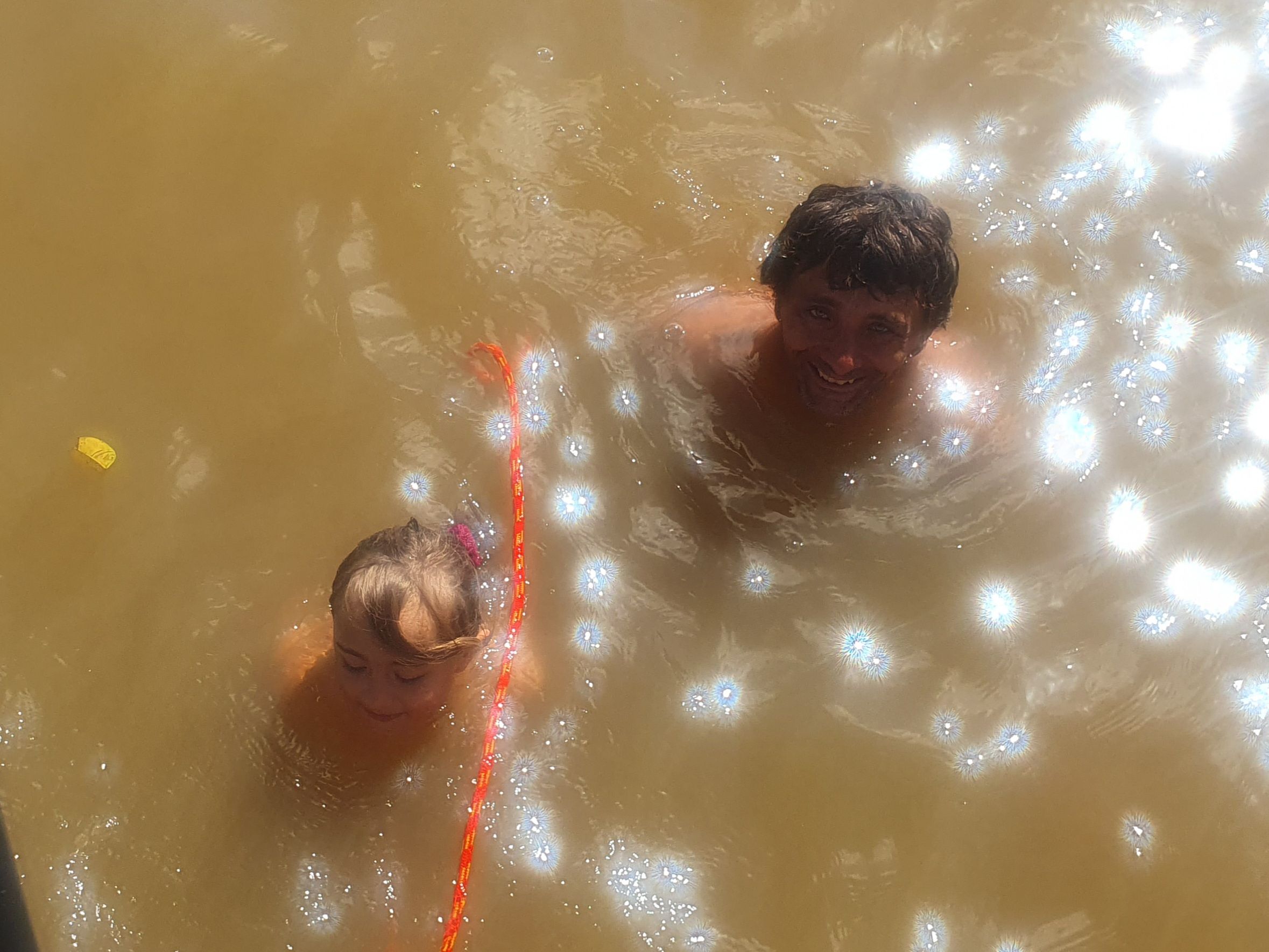
On Wednesday, we visit the fruit market again - this time our attention is drawn to a fruit we mistake for durian - it is, however, jackfruit. The friendly vendor does not speak English at all, but she gives us a piece of the cut fruit to try and shows us how to eat it; young jackfruits can be peeled and prepared whole - they then serve as a good meat substitute. From larger ones, only the yellow pieces surrounding the seeds are eaten. The pieces are delicious, sweet, something between mango and pineapple, but the white sticky juice that leaks from the inedible part of the fruit is really hard to remove from hands, the cutting board, and the knife (it does not dissolve in water, only in oil, and is very sticky).
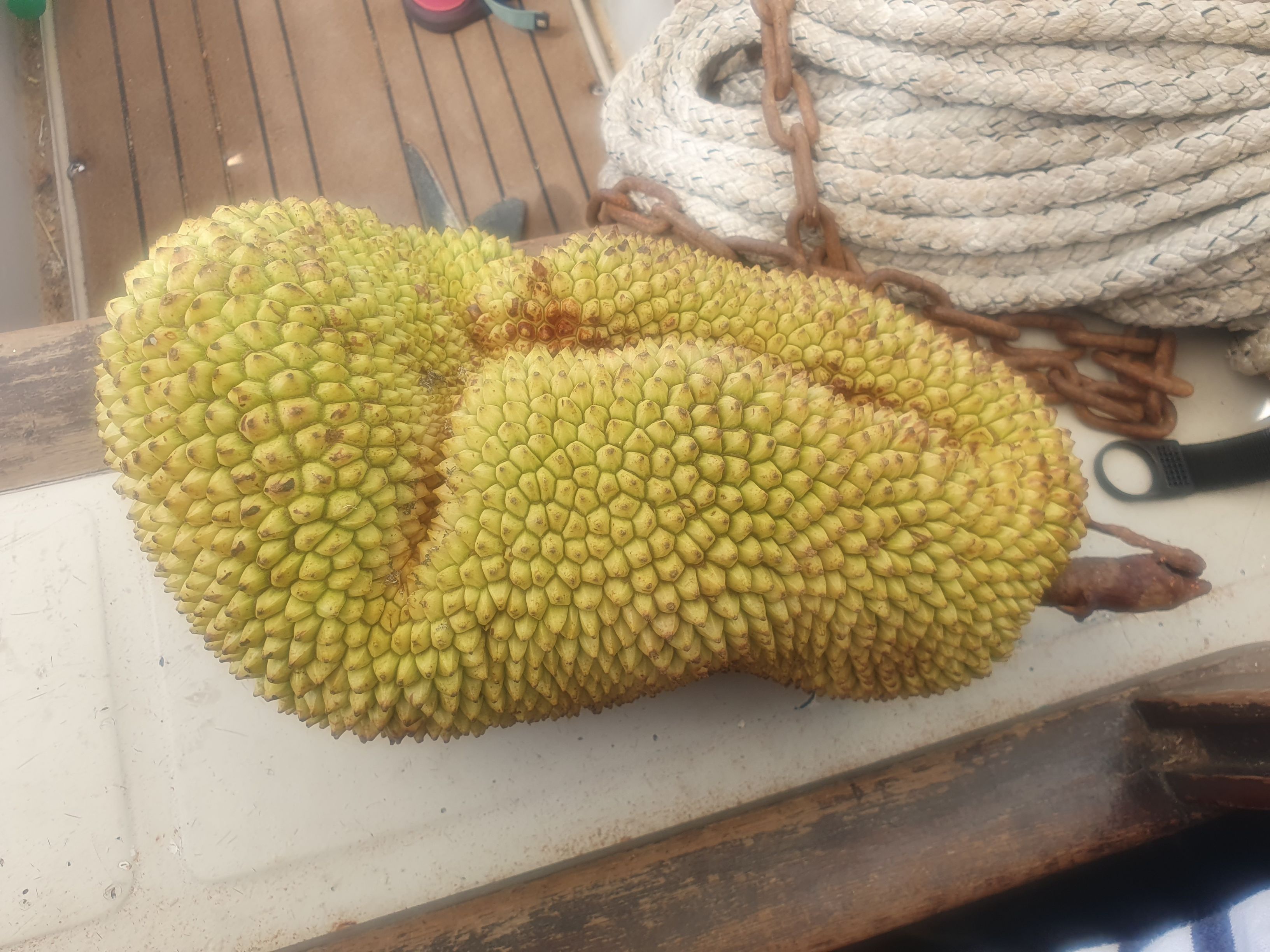
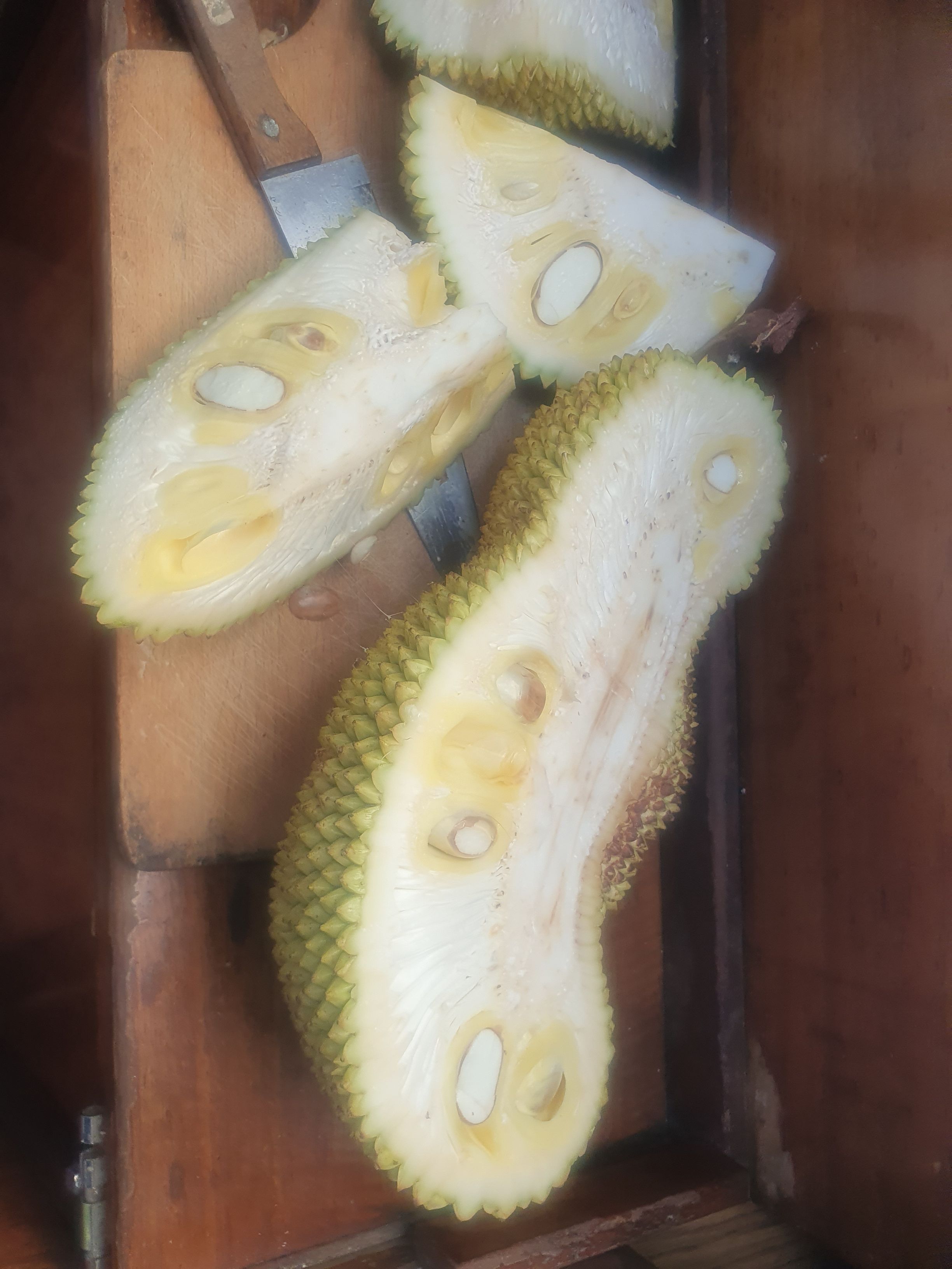
We also buy a fiercely pink pitahaya, or dragon fruit, as well as small local melons with thin, shiny skin.
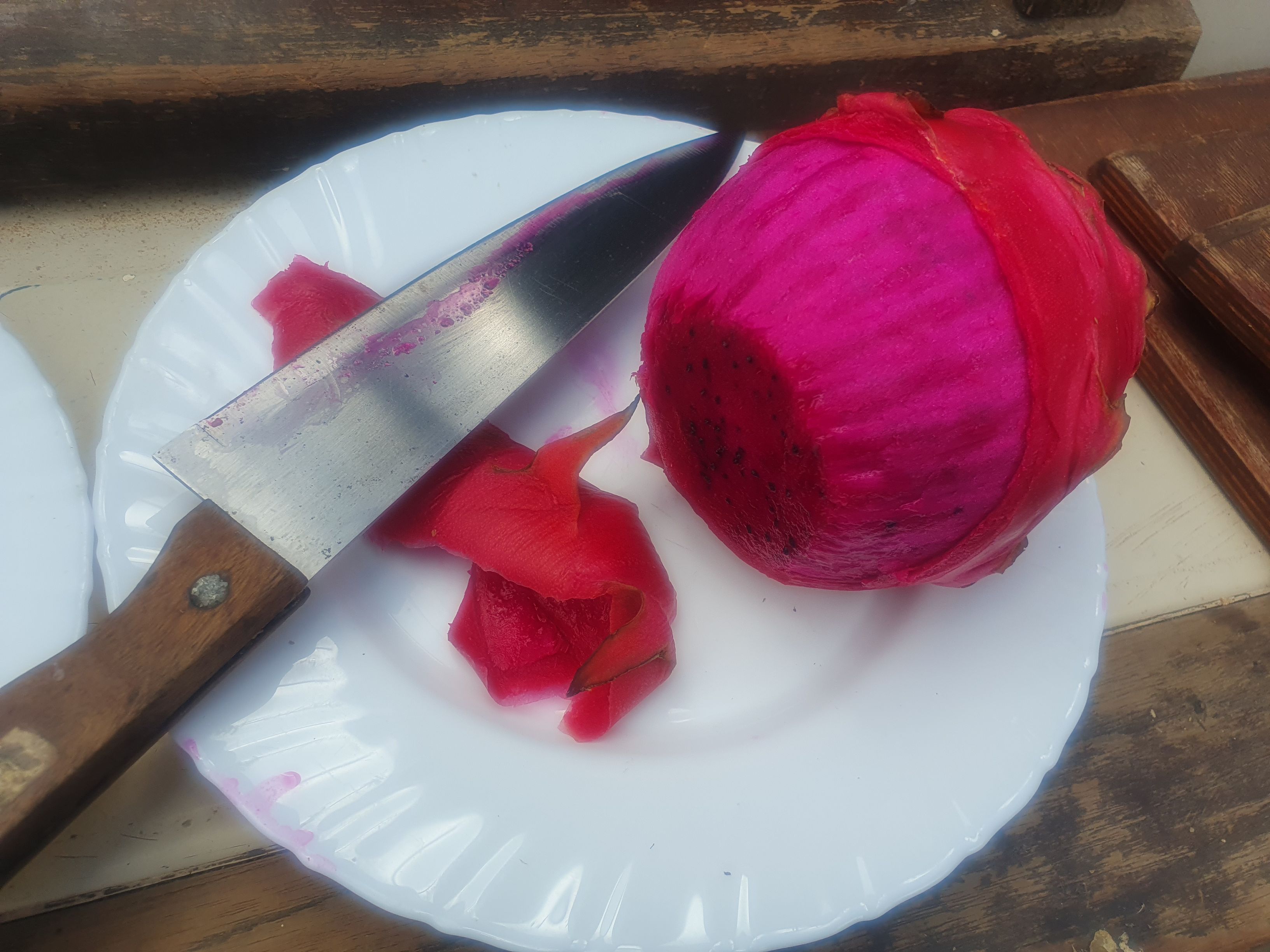
In the middle of the market square, there is a building that houses several restaurants. You can enjoy authentic Breton pancakes (the seller also looks like an authentic Breton), fries, Chinese, and Indian cuisine. We decide on the latter. Although the names roti, bami, and nasi don't mean much to us, the polite waiter reaches for his phone, opens their Instagram, and shows us what's what. We take one of each and exchange them while eating. One dish is fried rice with vegetables and chicken, the second is noodles in dark sauce, and the third is a type of stew with pieces of chicken, potatoes, local long beans in a bright yellow sauce, and a flatbread. All are very tasty, although we are unable to remember which is called what. Over time, we discover that these dishes are slightly different in each bar. We get used to their names and know well what we are ordering.
The rest of the day is spent by the pool. In the evening, we have to check out, and Dave shows us that if we want, we can reach the mouth of the Maroni through a system of connecting tributaries - this way, we will get a close look at the jungle and have a chance to fish. Both Dave and the bartender claim that it is easy to catch piranhas here, and our crab trap is perfect for large shrimp; we just need to stock up on fresh bacon or pig tails for bait. We quickly run to the store and buy the needed products, and in the morning, we set off.
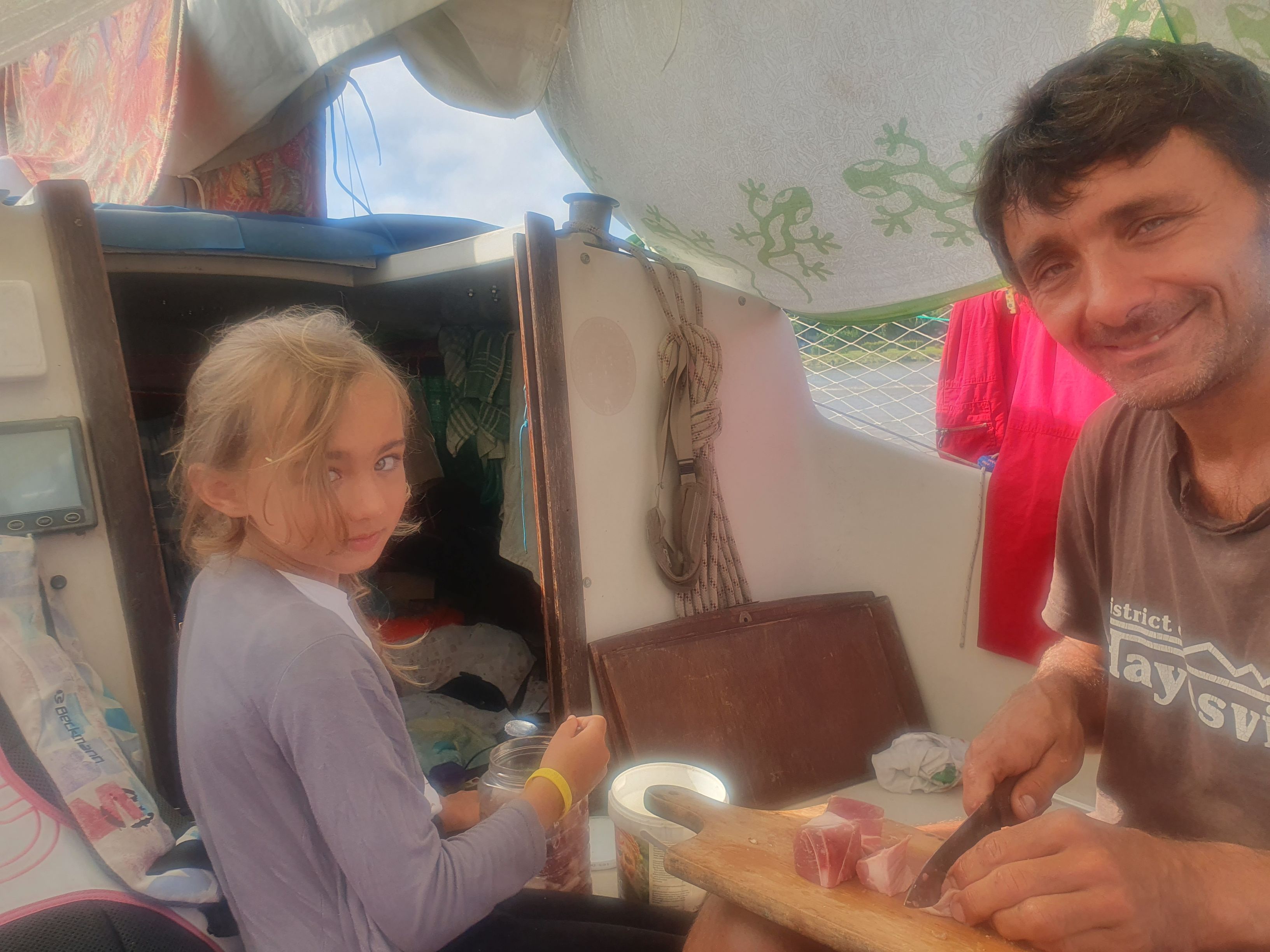
The tributaries are wide and deep enough to navigate without any issues, yet narrow enough to clearly see both banks. Unfortunately, most animals hide upon hearing the engine of our boat. It is somewhat better when stationary—at least the birds appear, although there are no toucans among them, which are supposedly around here.

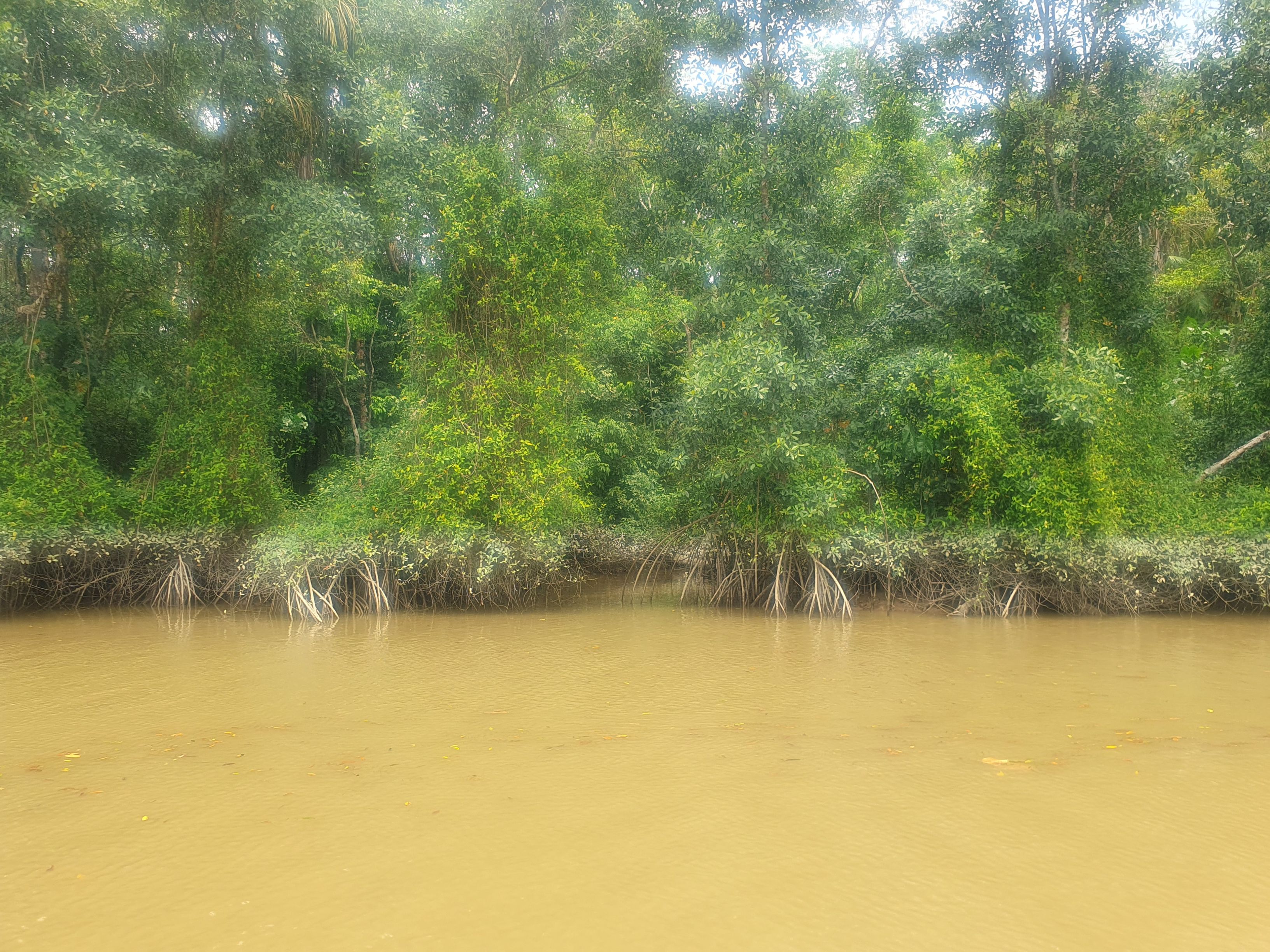
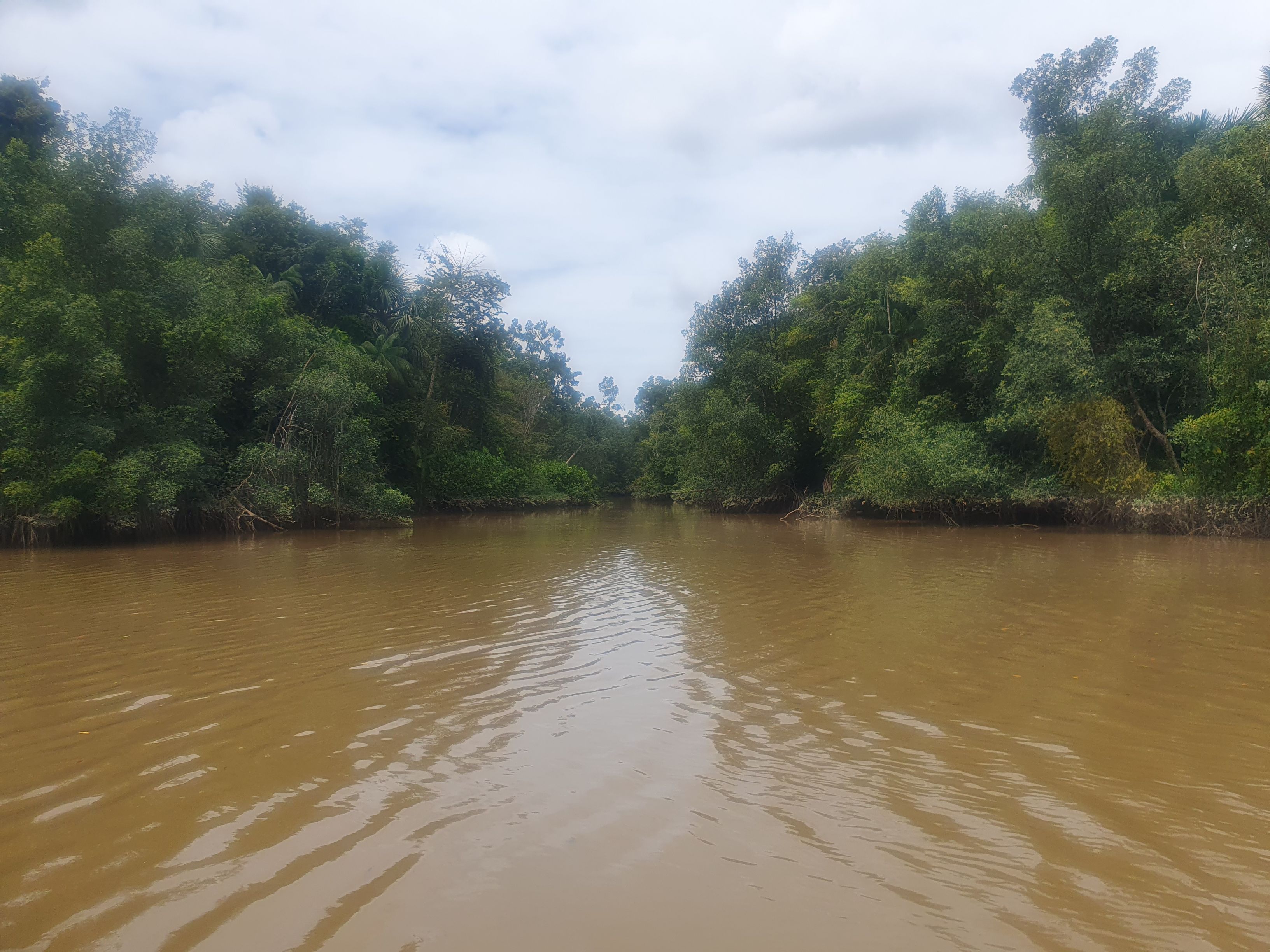
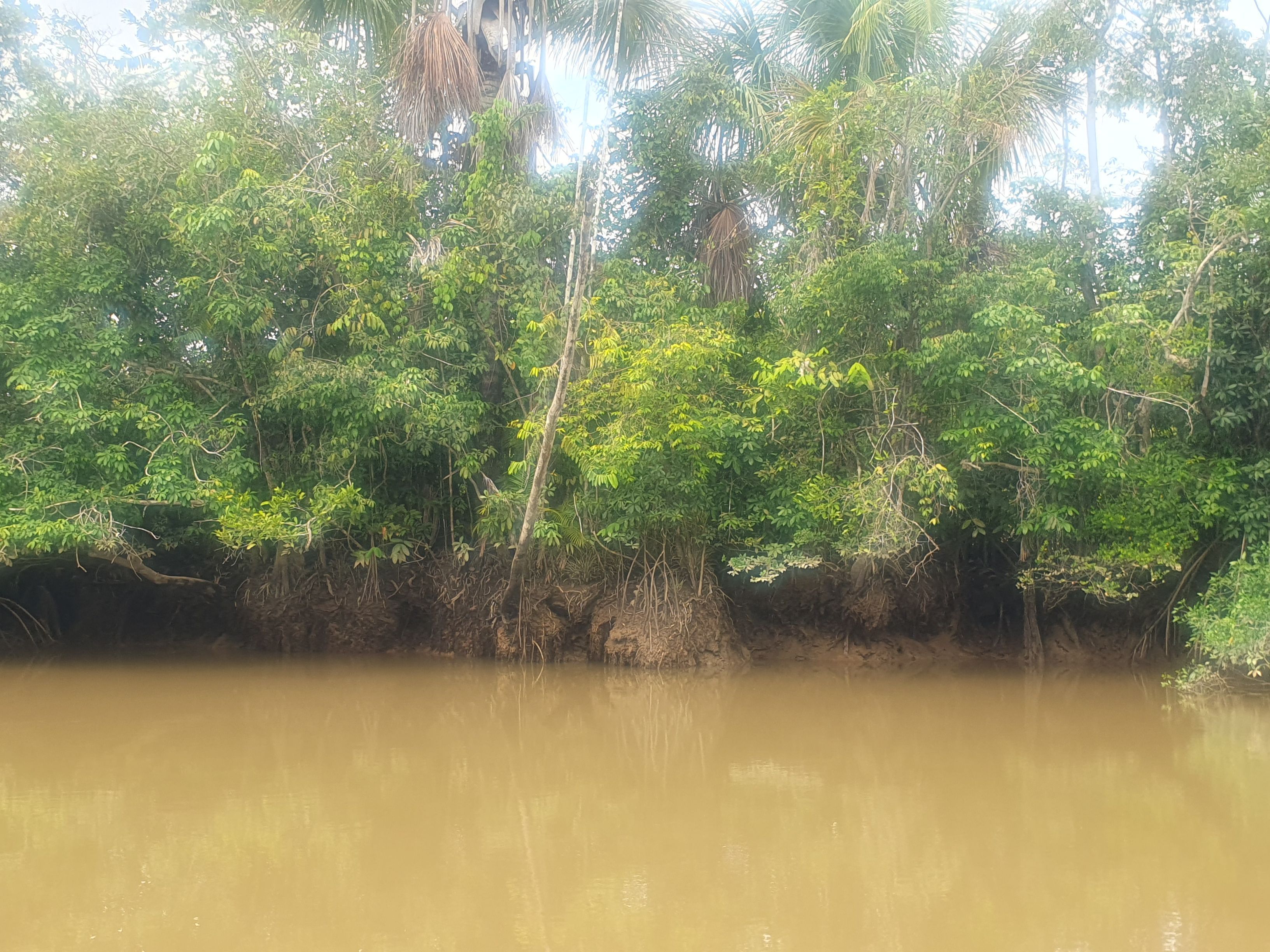
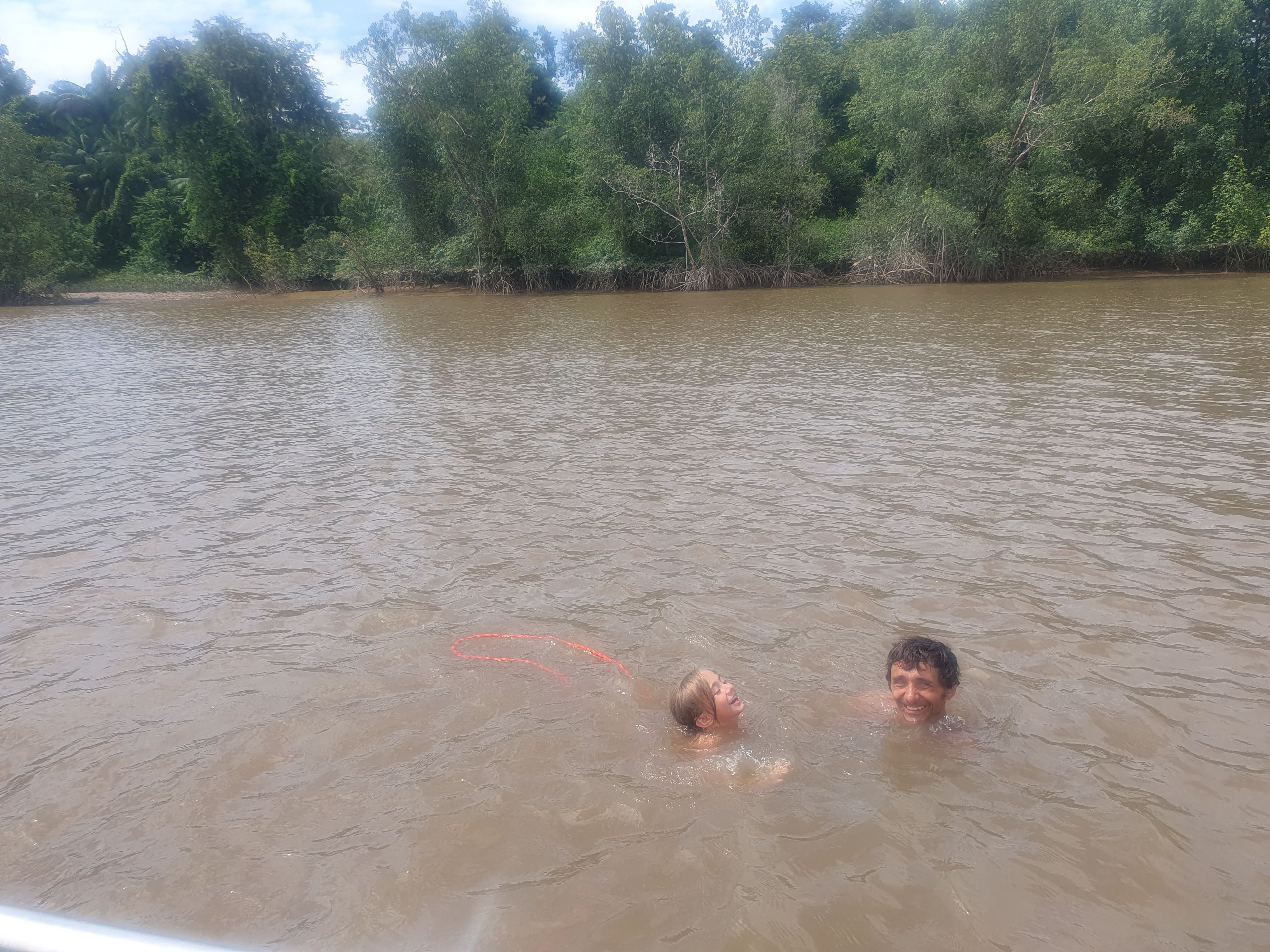
In the evening, Kamil sets out the trap and two fishing rods. To our disappointment, nothing bites on the fishing rods, but one piranha falls into the trap. We deduce that a small catfish attracted the piranha to the trap. The catfish came for the bait then piranha got in and ate half of the fish leaving the meat alone. Despite further efforts, we didn't catch a single more piranha. Kamil cleans and fries the one we caught – it’s bony but very delicious, quite similar to perch. It’s best to fry it scored, as then most of the small bones become crispy and the fish is yummy. This method was recommended to us by a friendly marina worker. It's a pity we didn't take a picture, because fried it looked as it good as it tasted.
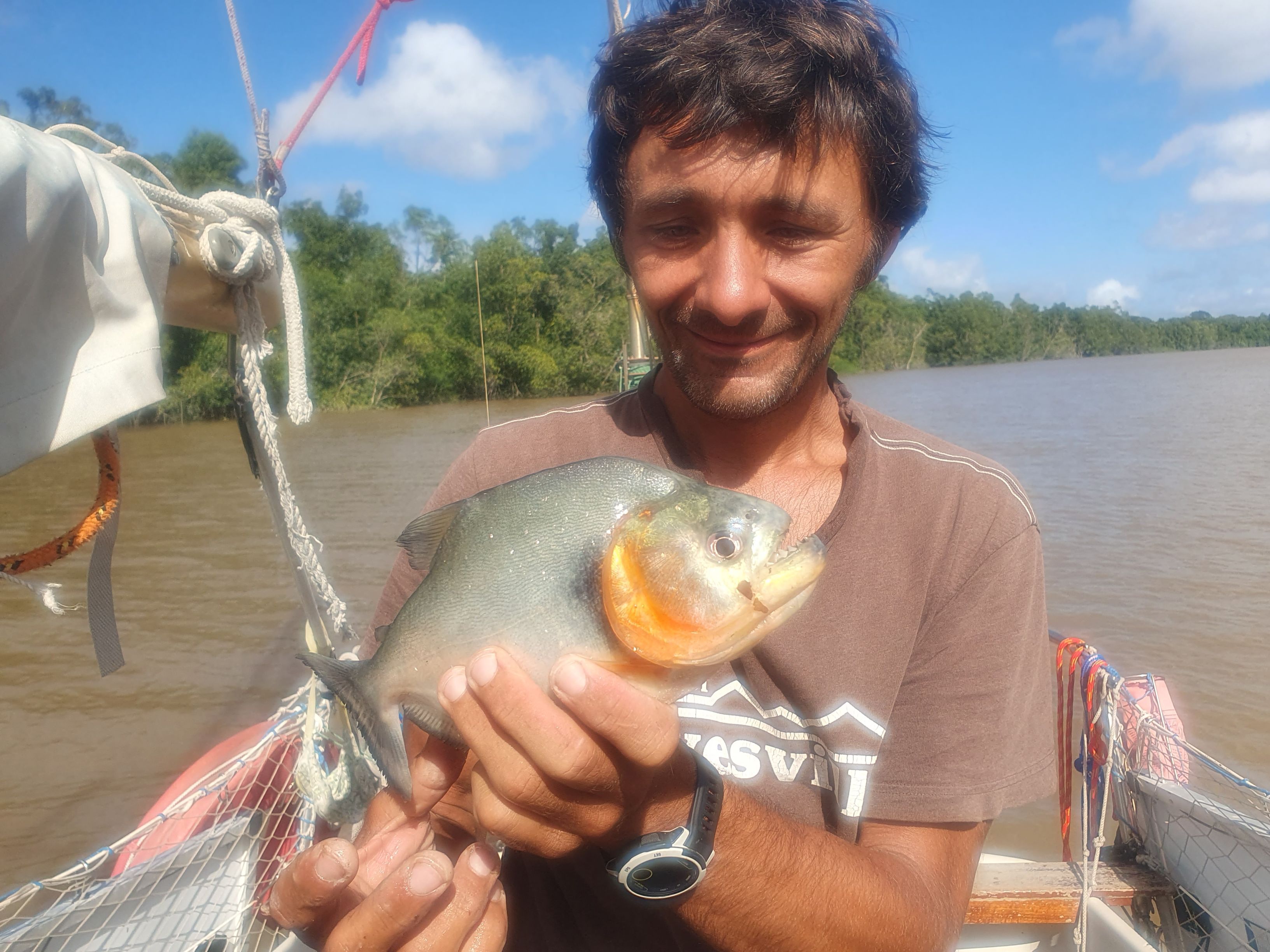
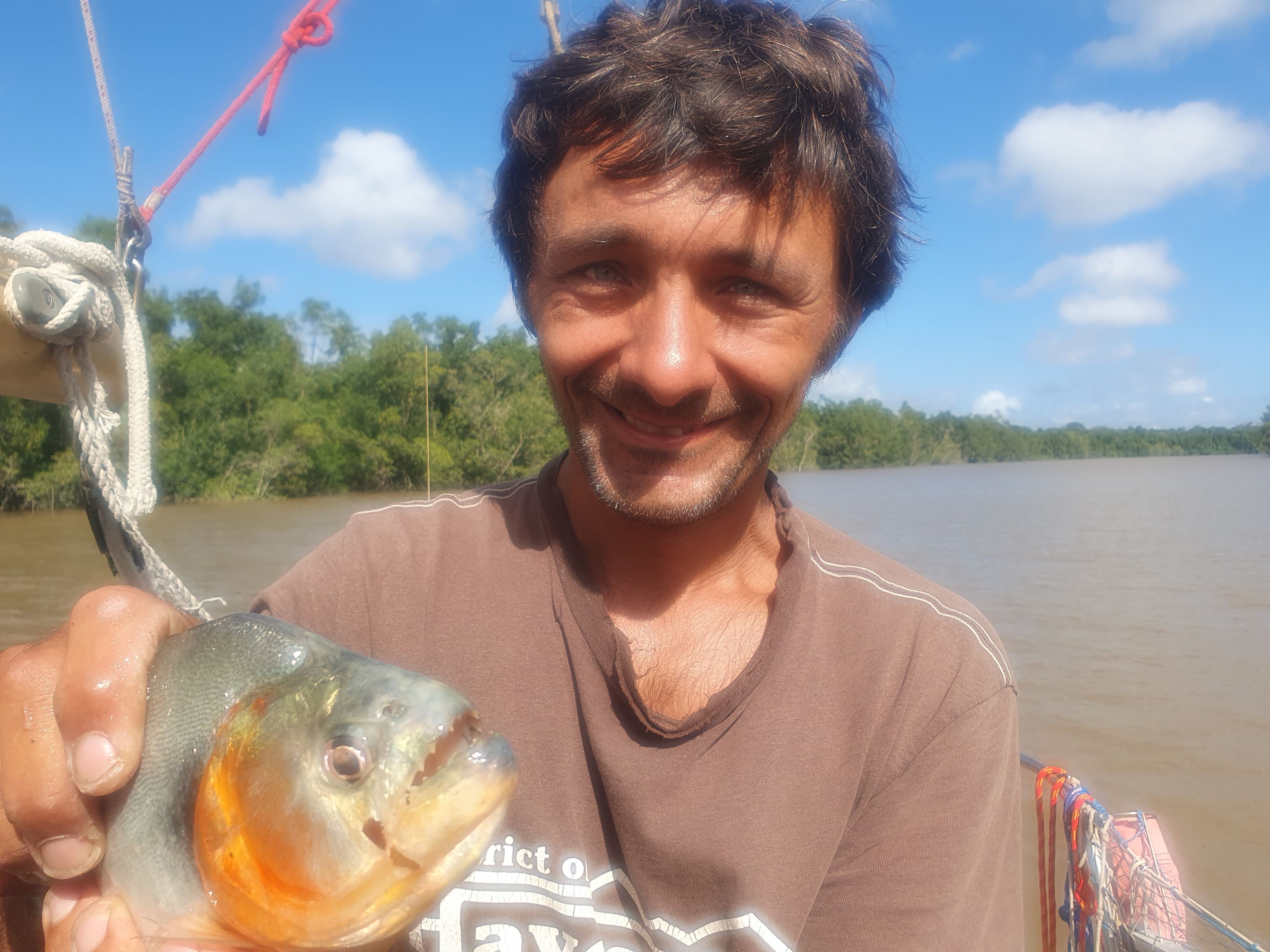
The next day, we sail to the mouth of Coswine into Maroni and catch the internet. The weather forecast is not optimistic. We are nearly 100 miles from the mouth of the Surinam River. The wind is expected to be weak on Saturday, nonexistent on Sunday, and strong on Monday.
We decide to stay in place at least until Tuesday and take the opportunity to try different fishing spots and methods. Unfortunately, despite spending the night on a lake known for being an excellent fishing spot, the results are poor. A strange catfish is caught in the trap—we are unsure if it is edible—and a sizable crab, but there are no piranhas.
We also tried to spot some animals by quietly paddling along the river. However, we saw nothing.
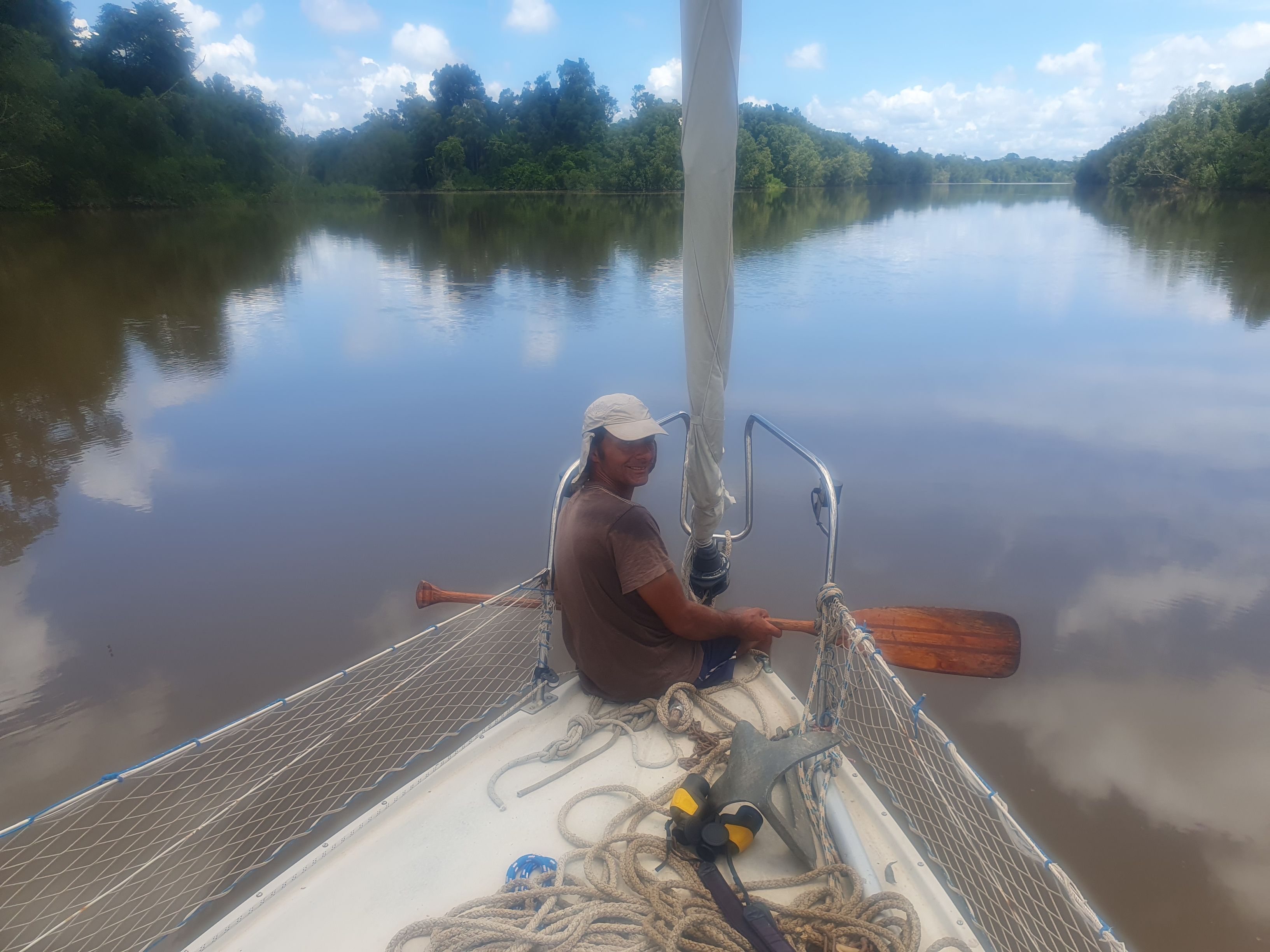

Only in the evening, while sailing on the engine, did we scare a large snake. It fell from a tree into the water and began to look around frantically (like in a cartoon). Its head was probably the size of a hand, and the part protruding from the water was the size of an entire arm. It fled terrified...
For the next two days, we continue drifting down the tributaries without even starting the engine - we let the current carry us, only slightly correcting the course with a paddle. Among the unusual things, we catch a fish with fins that can grip the net (it's something between a crab's pincer and a fish's fin) and it makes croaking sounds, similar to a frog.
On the last day, we have an unpleasant experience. We are pouring fuel from cans into the tank using a rubber hose as usual (even at anchor, it's not convenient to pour directly from a large can). Kamil slowly refills one can from another through a funnel to avoid sucking the hose several times (the fuel contains a poison to prevent microorganisms from developing in it). We expect to pour almost two cans, which is about 40 liters, as our tank is almost empty. Due to a lack of attention, we poured the entire 50 liters, and the level gauge still shows close to zero... The old tube between the filler and the tank broke, and everything ended up in the bilge. Fortunately, after half a day's filtering, we recover everything except maybe 200ml. There was some water in the bilge, so all the fuel gathered above the bilge pumps (and they don't need cleaning) and various small debris is wet and doesn't float in the fuel. As a precaution, we filter it twice through successive funnels with multiple layers of paper towels, and the fuel is completely clear. There would have been a problem with disposing of such an amount here.
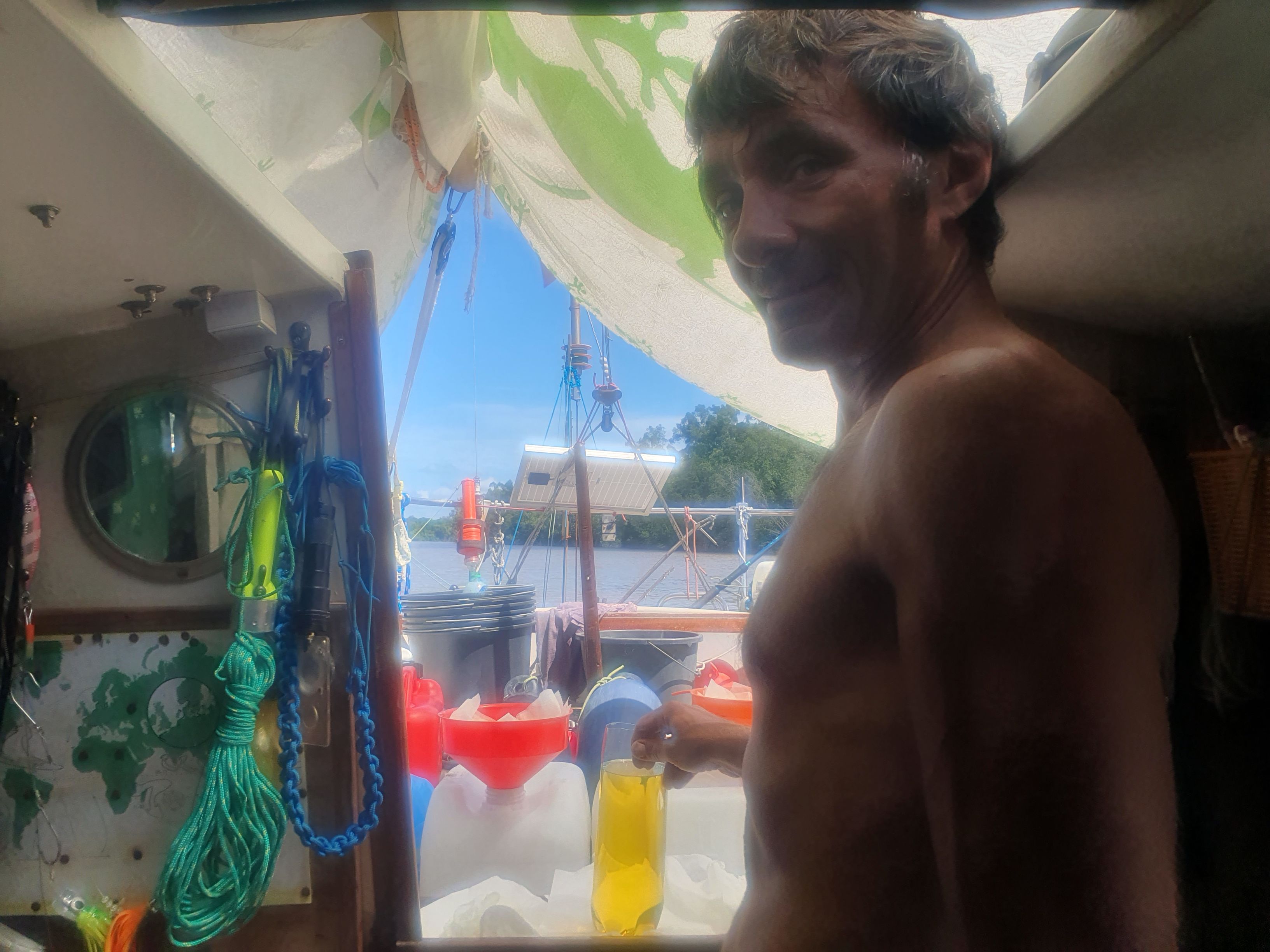
On the 13th, we set off for Suriname and arrive safely without major adventures. The night is tiring because many fishing boats with long nets are sailing. According to the sailing directions, everything used to sail unlit and is not visible on the radar, but now they have flashing LED lights, making it simpler. At the entrance to the Suriname River, there's heavy traffic, but with no waves or wind (as planned), so it also went smoothly. At the very end, a police ship is sailing left and right across the river, blocking the channel. We approach slowly, and it visibly lets us through. Perhaps because we reported our arrival from Cape Verde. In any case, we are in Suriname and waiting at anchor until the next day, so we don't sail at night and have a good tide heading towards the buoys in Domburg.
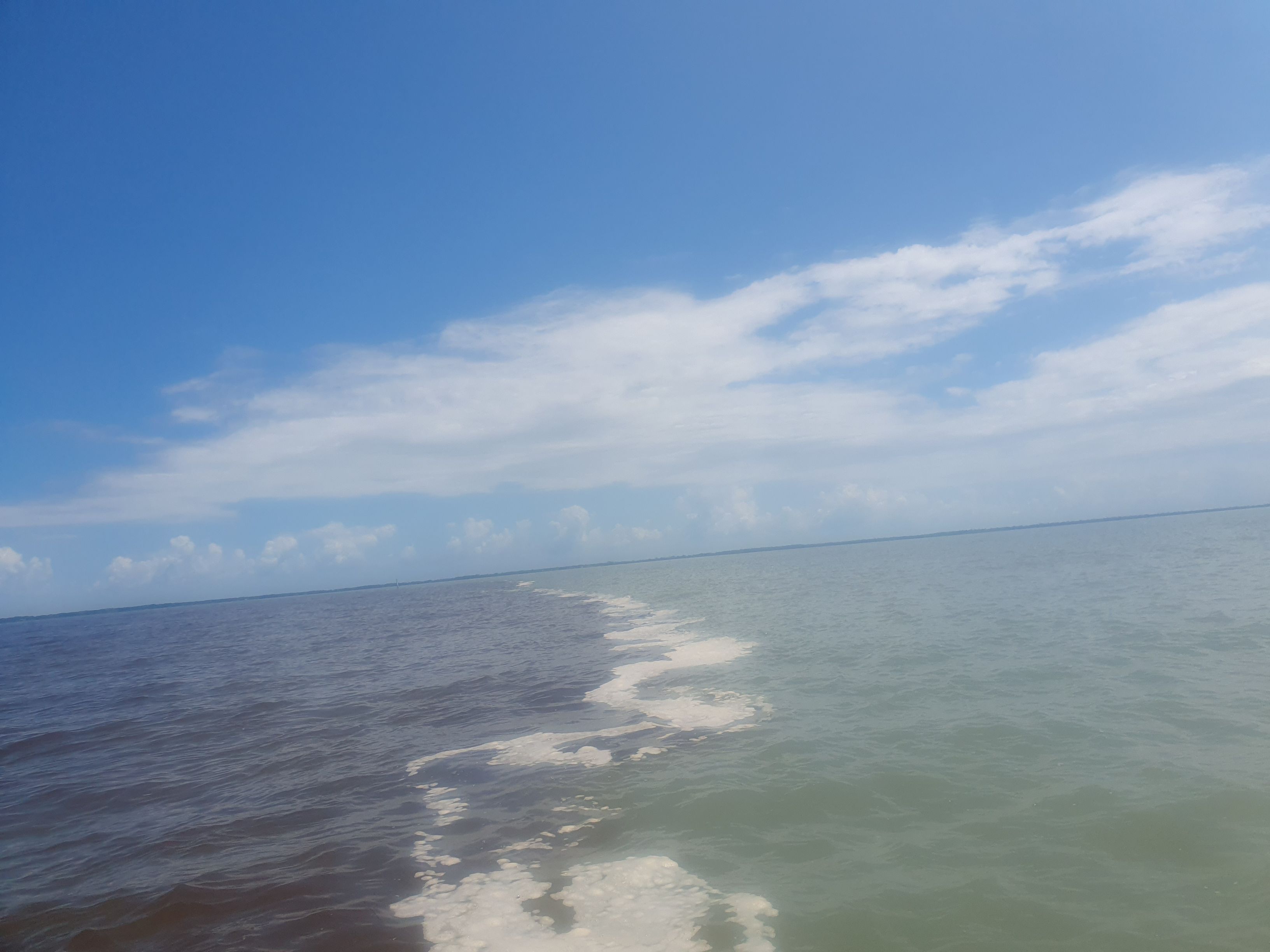

Surinam
August 15th we depart with the tide up the Suriname River. Passing the port of the town of Neuewe Amsterdam, we note that some of the piers are covered - we believe this is mainly useful during the rainy season to prevent water from falling into the boats. We also pass an ice factory - fishermen load bags of ice before setting out to keep the fish in a consumable condition.
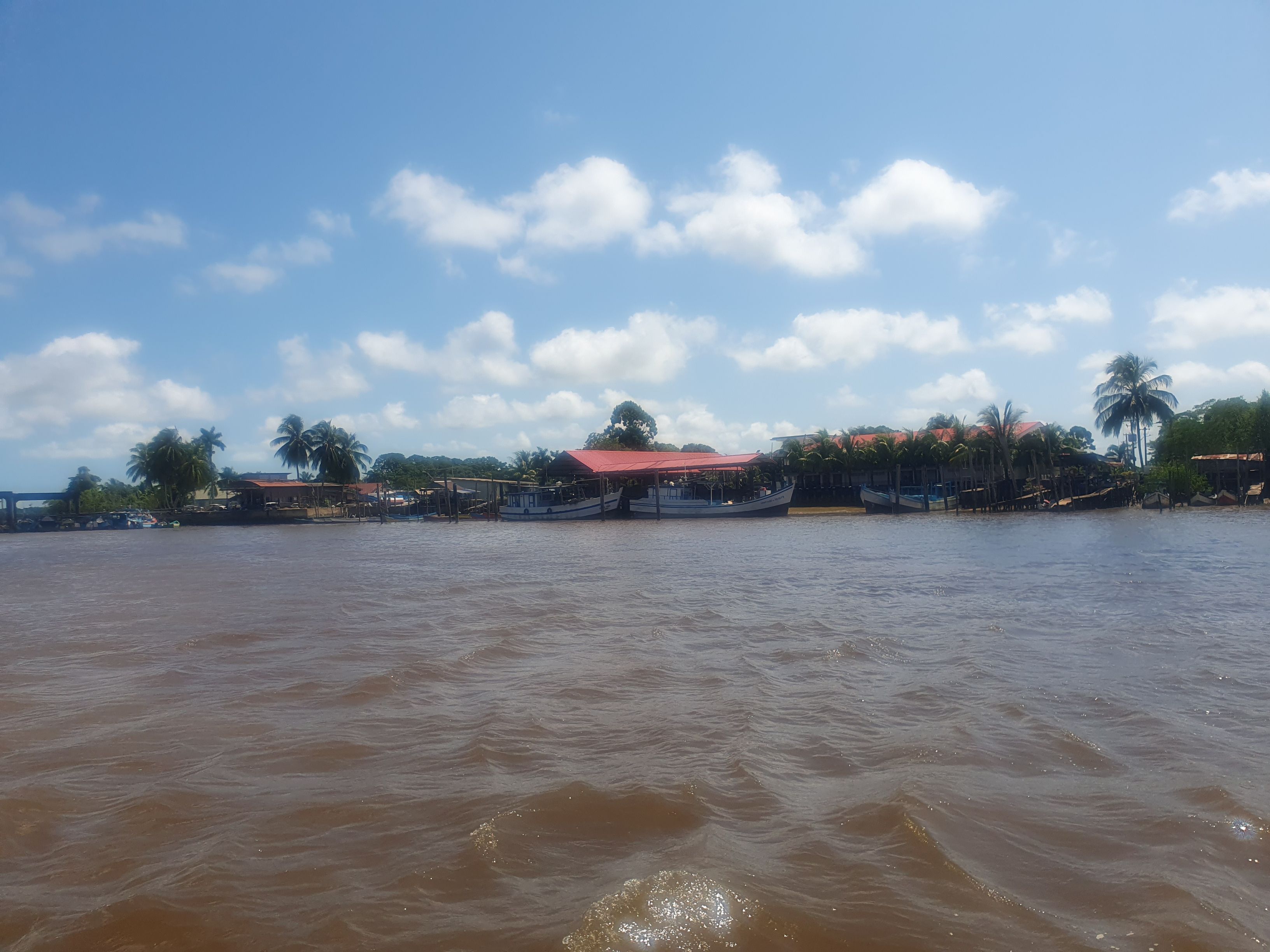

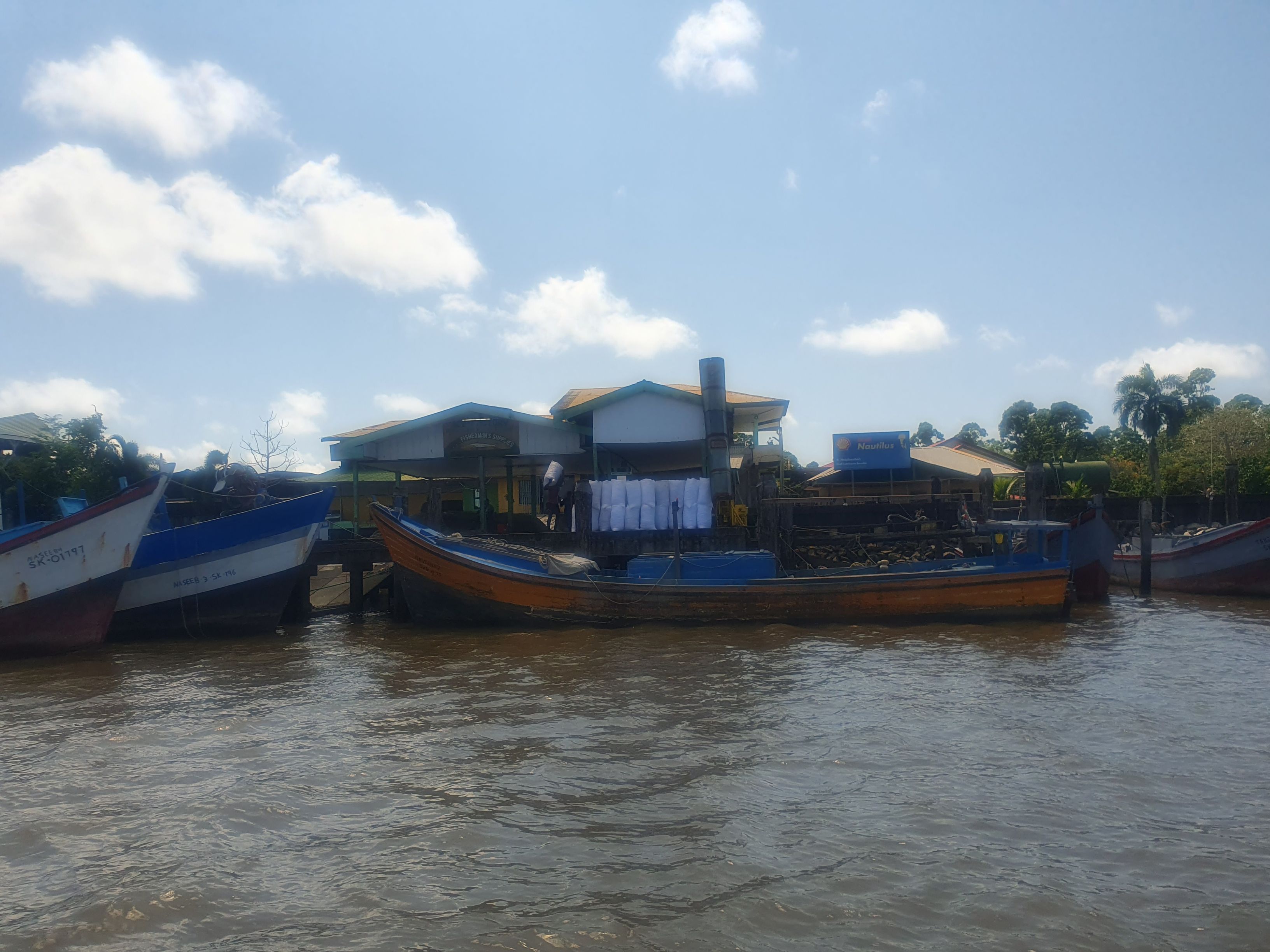


Further along the right bank huge modern villas stretch - this section of the river is reportedly known as Snow Valley because most of these residences were built with money from drug trafficking. On the left bank are boat ports, fields, and small clusters of houses. After about three hours, we arrive at Paramaribo. From the water, the port is the most striking - 15 miles from the ocean, and normal seafaring ships enter here, with stacks of containers from all over the world piling up on the shores (though probably mostly from China). We pass under a bridge, under which four of our masts would easily fit. Another 7 miles and we reach Domburg. The marina is not very crowded - out of eight buoys, two are occupied, and we catch the third. The place is very nice, and the staff is extremely friendly.
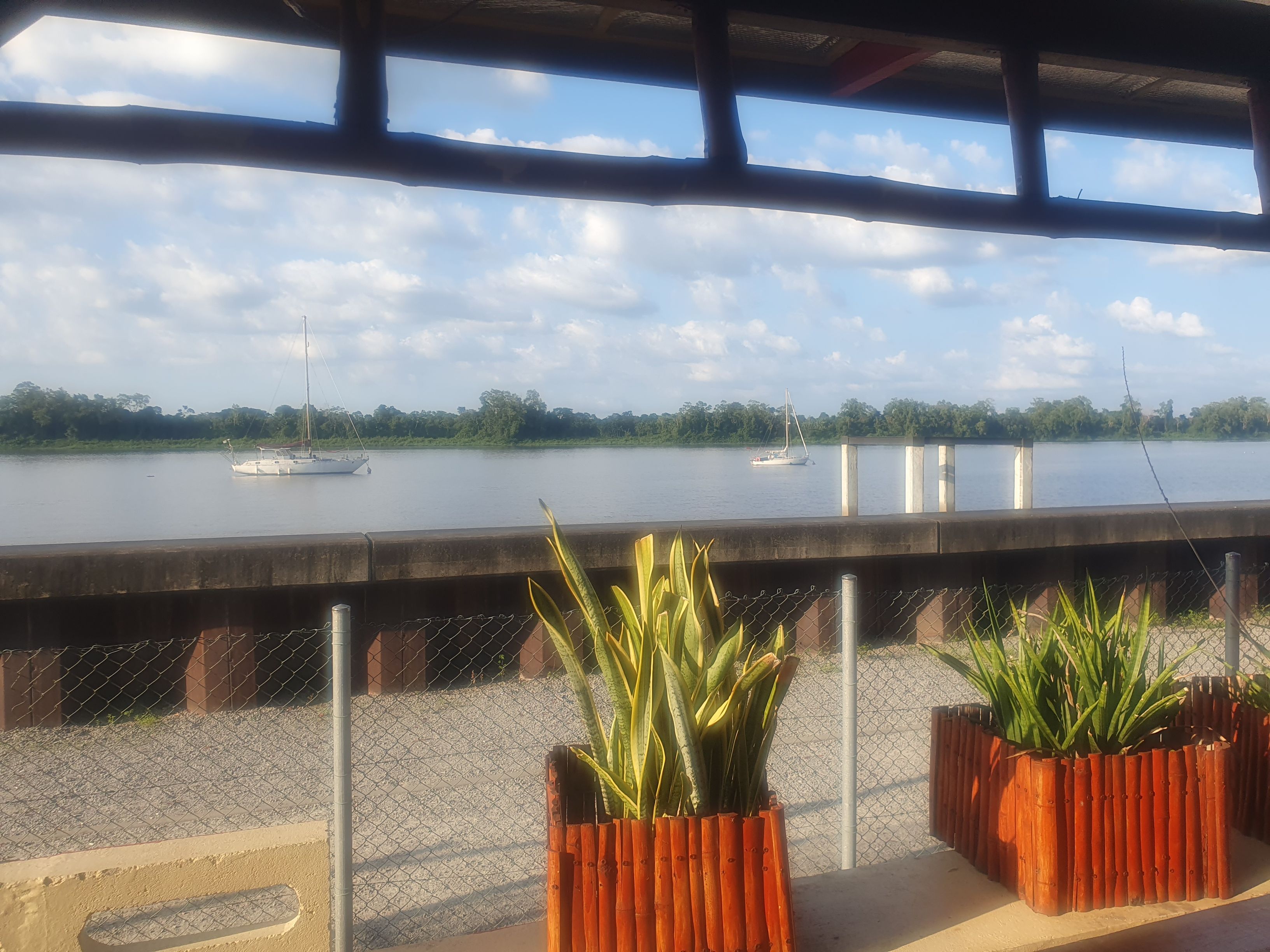
In the marina, there is a restaurant with delicious food. By local standards, it's quite expensive, for us it's normal.
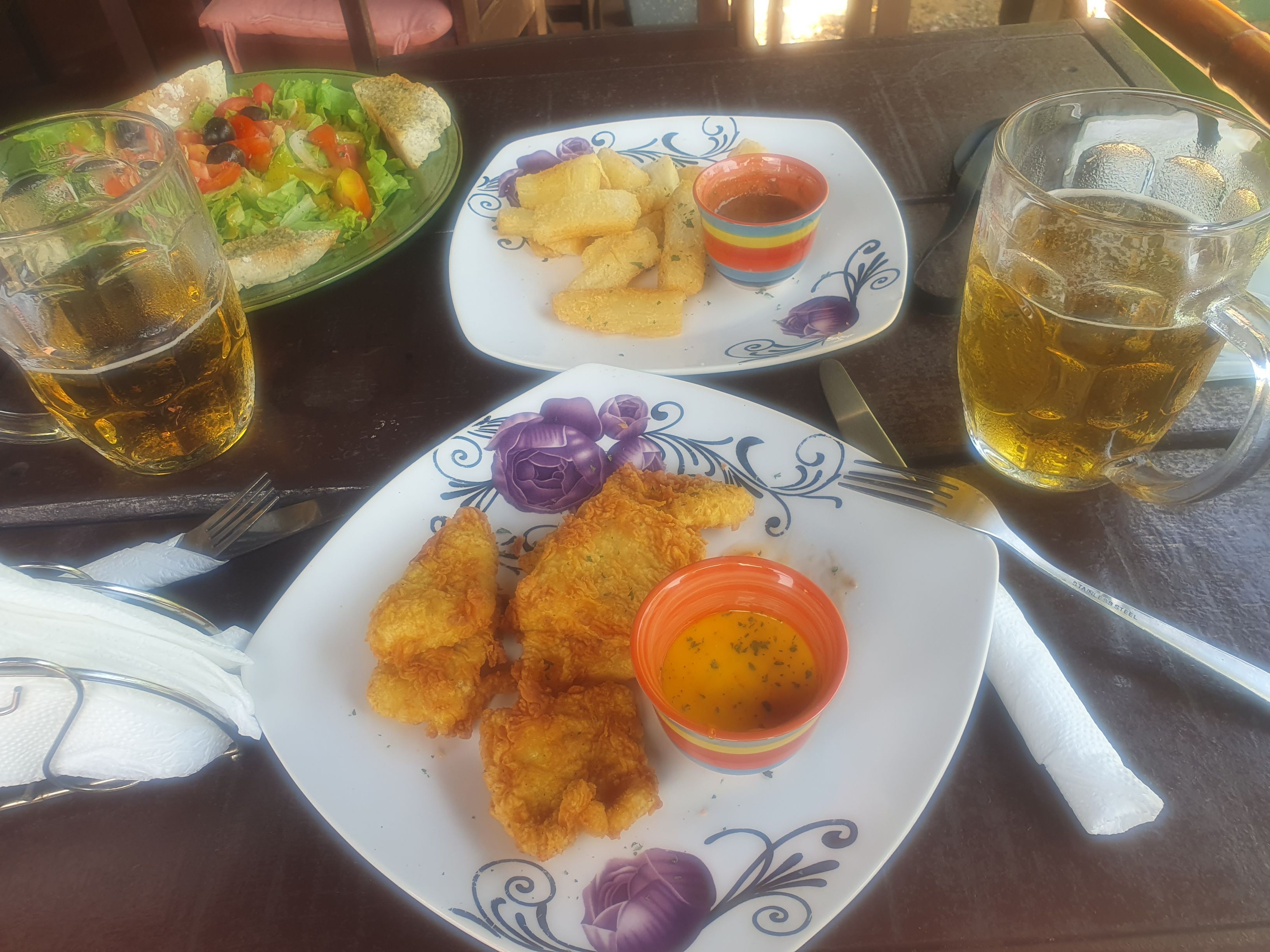
As it turns out later, Suriname is famous for its interesting and diverse cuisine, which we have also experienced many times.
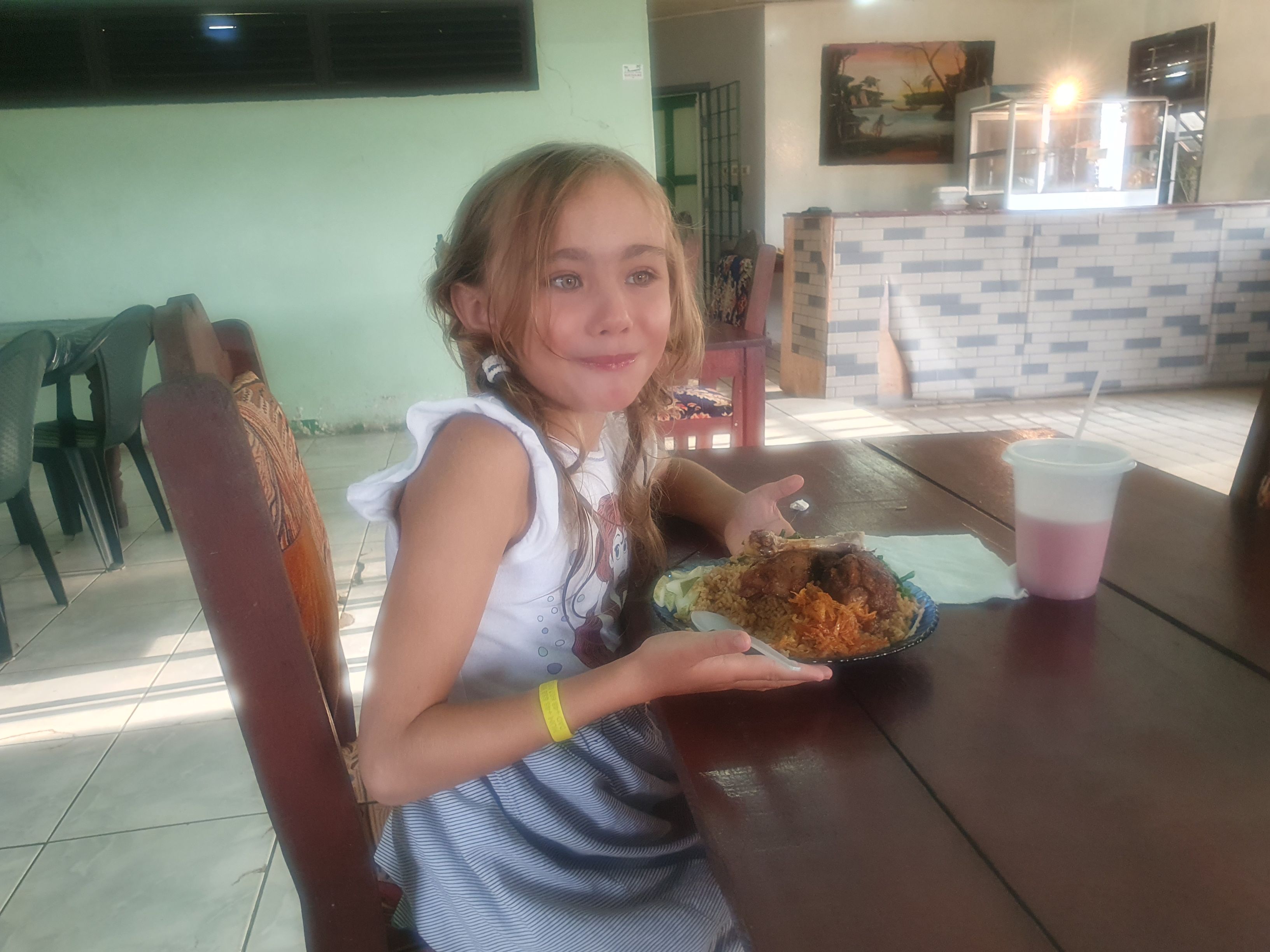
Some of the paperwork can be done online, but some must be done it in person, and until we have all the documents, we shouldn't venture outside of Domburg. So, we are using the weekend for splashing in the marina pool and relaxing, as well as taking trips around the area.
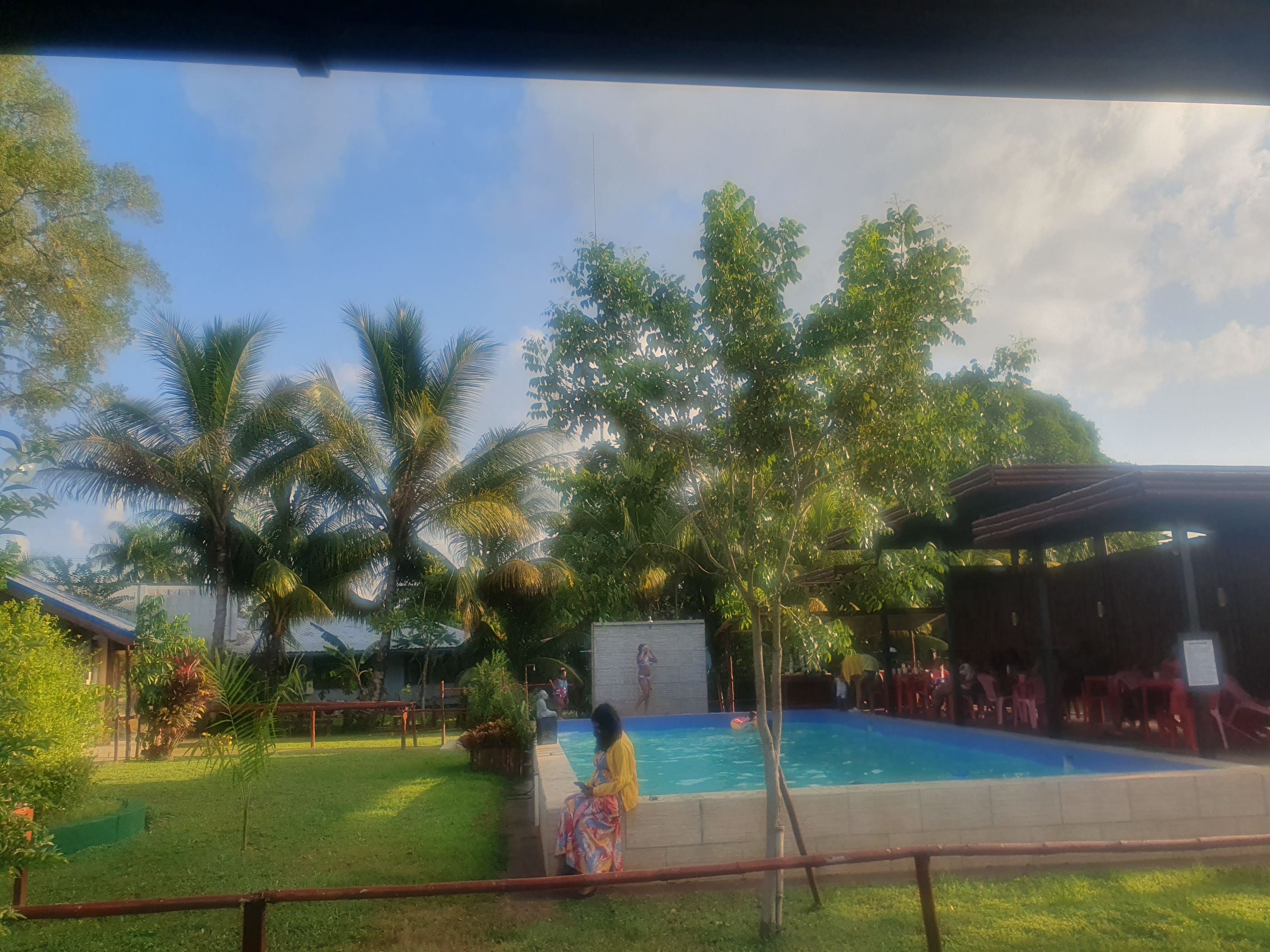
For the first time, we have the opportunity to see what a village looks like in these areas. The houses are rather small and invariably have a large covered terrace - they often resemble a hut on chicken legs - the upper floor has a larger area than the ground floor, and the space under the house serves as a kind of outdoor living room. In many places, a canal serves as a fence.
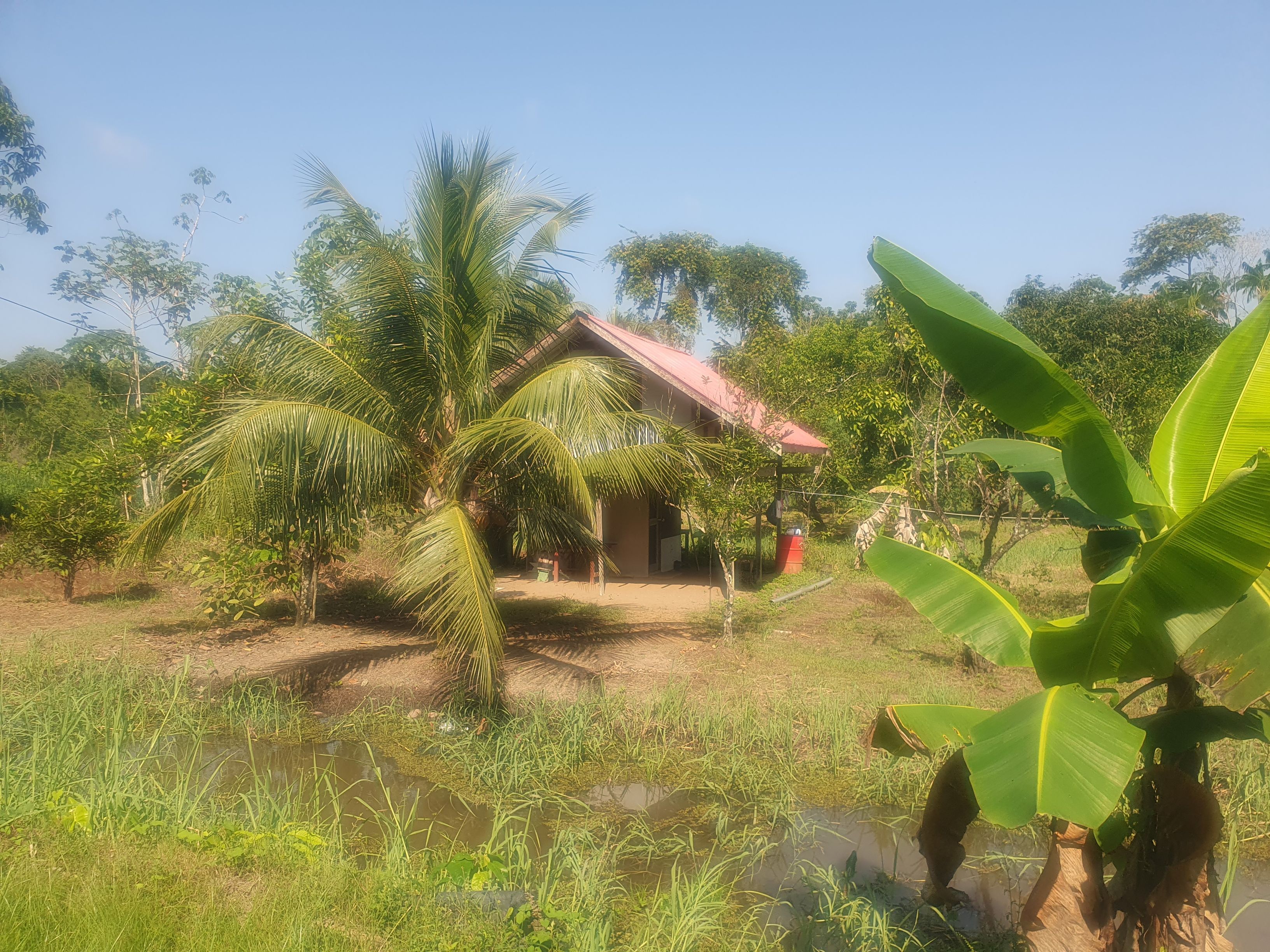
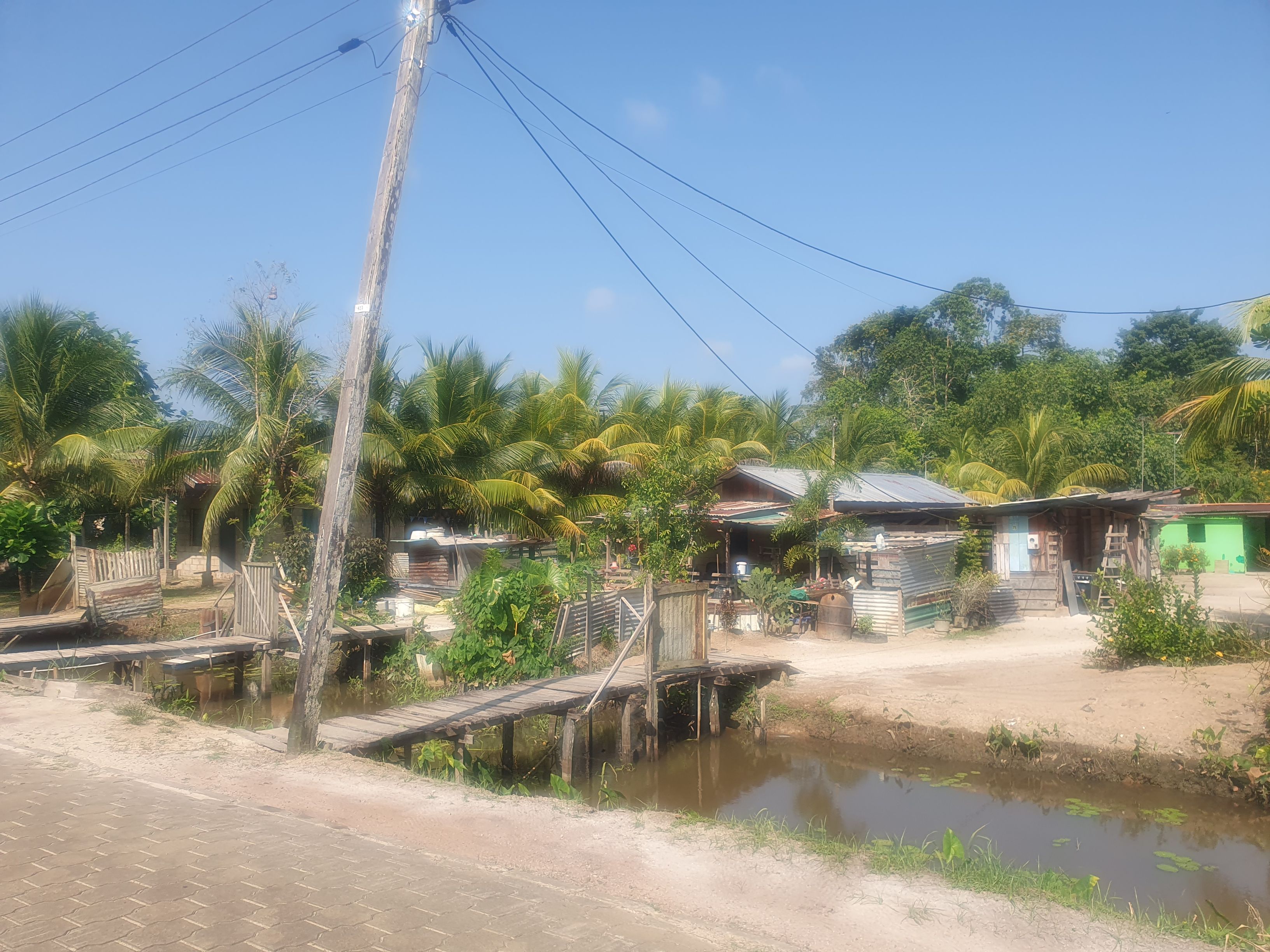
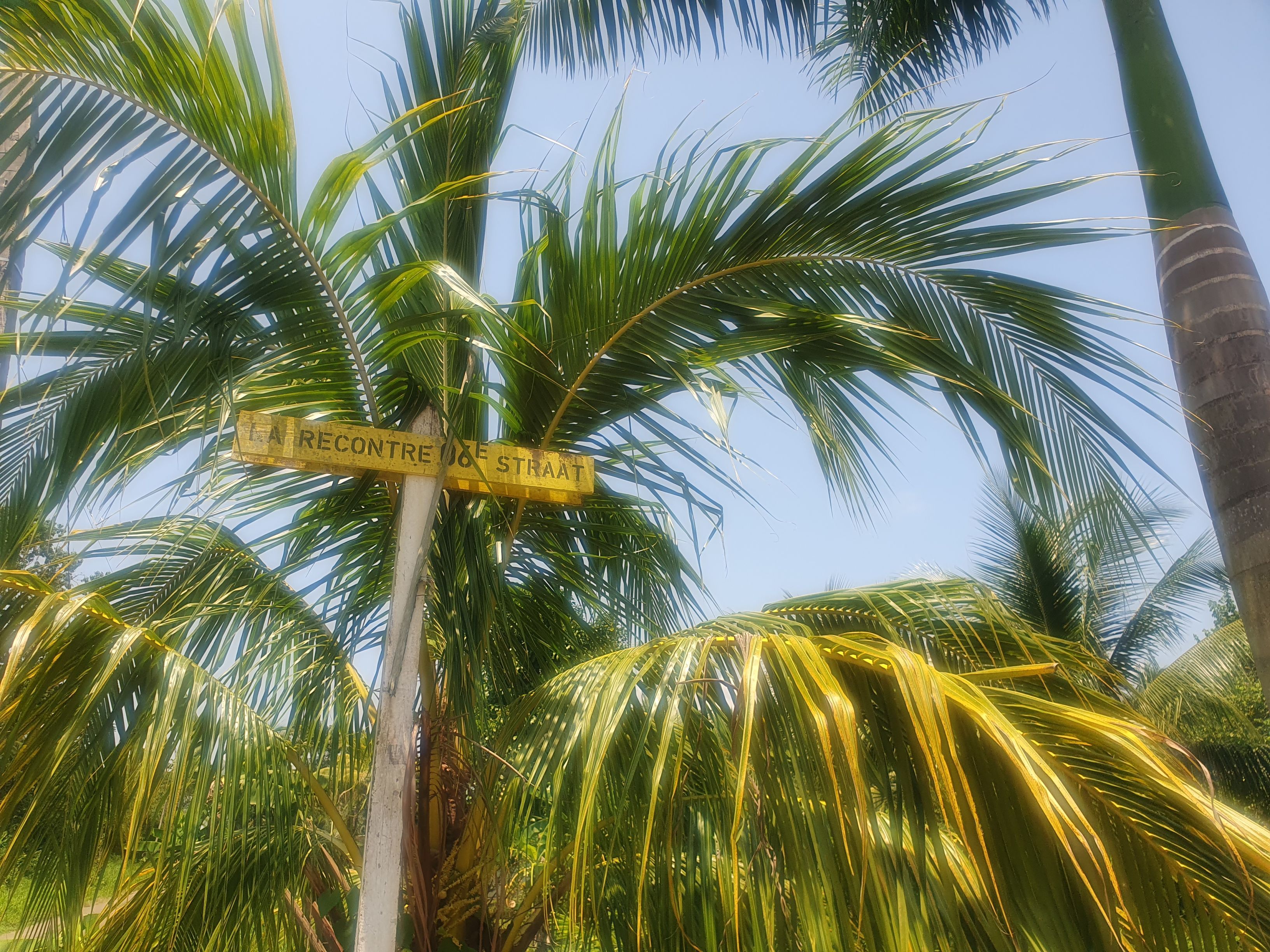

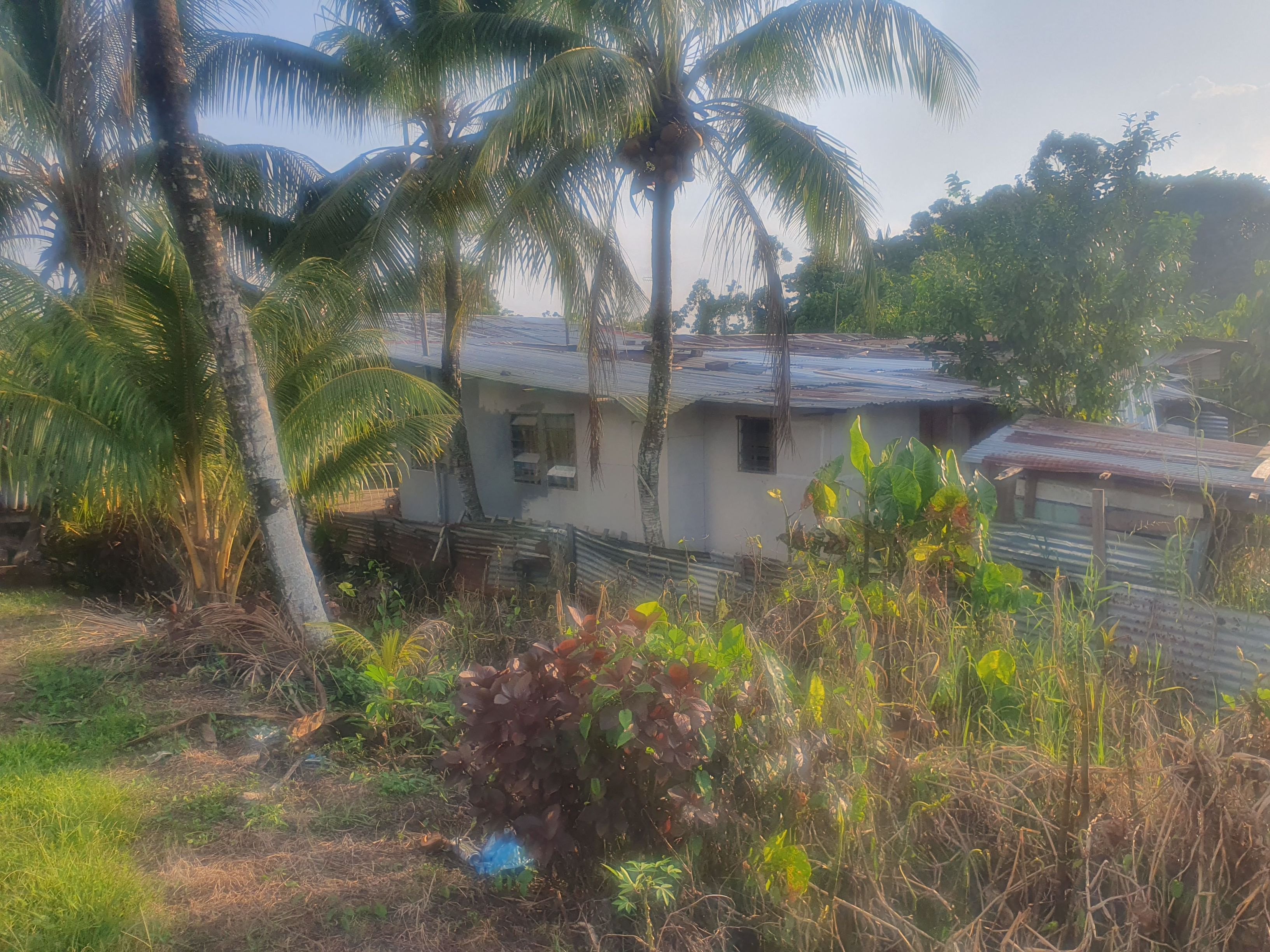
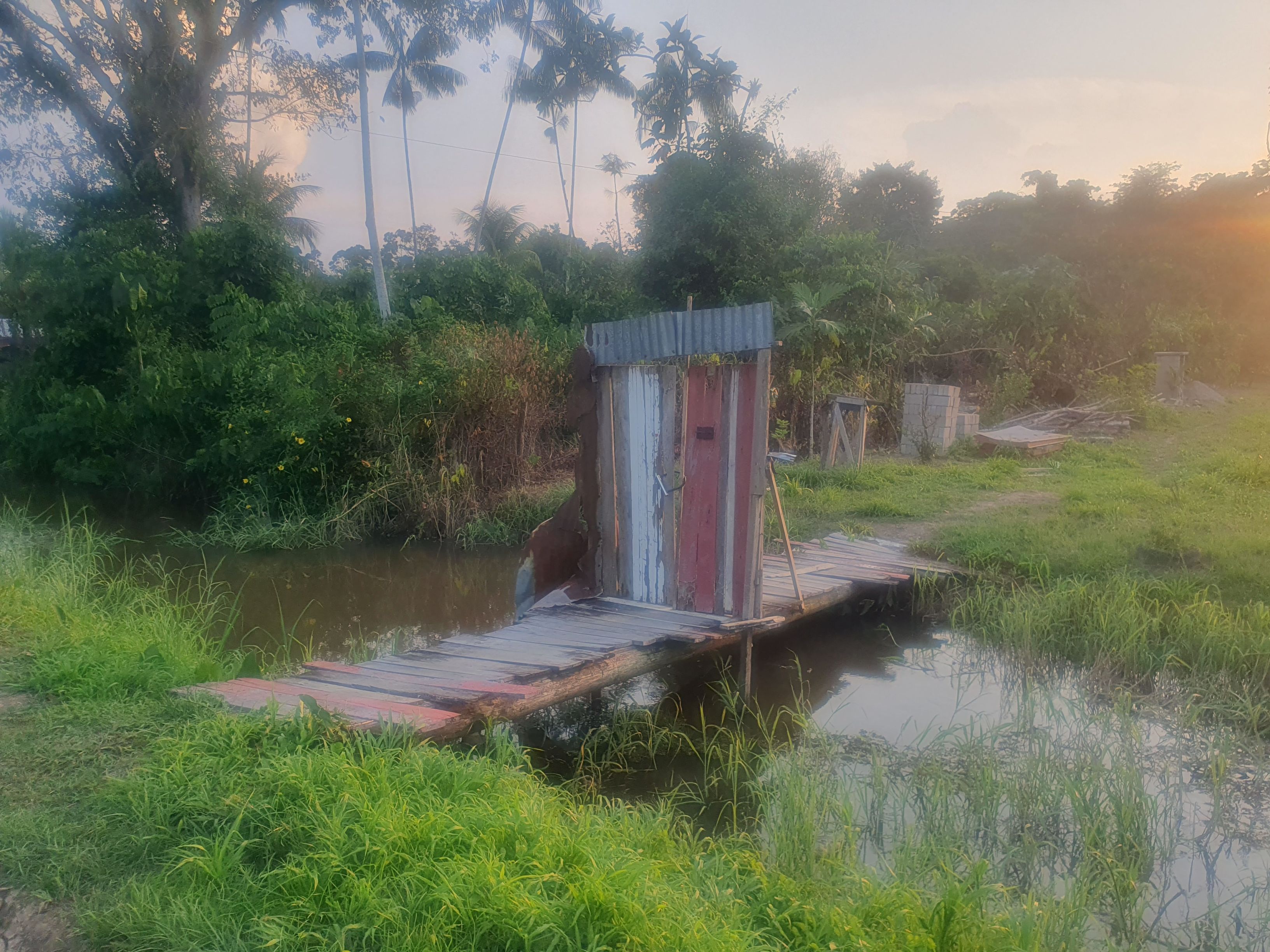
In the yards, familiarly-looking chickens and goats run around, but the cows look different - they are beige, slimmer, and have longer horns.
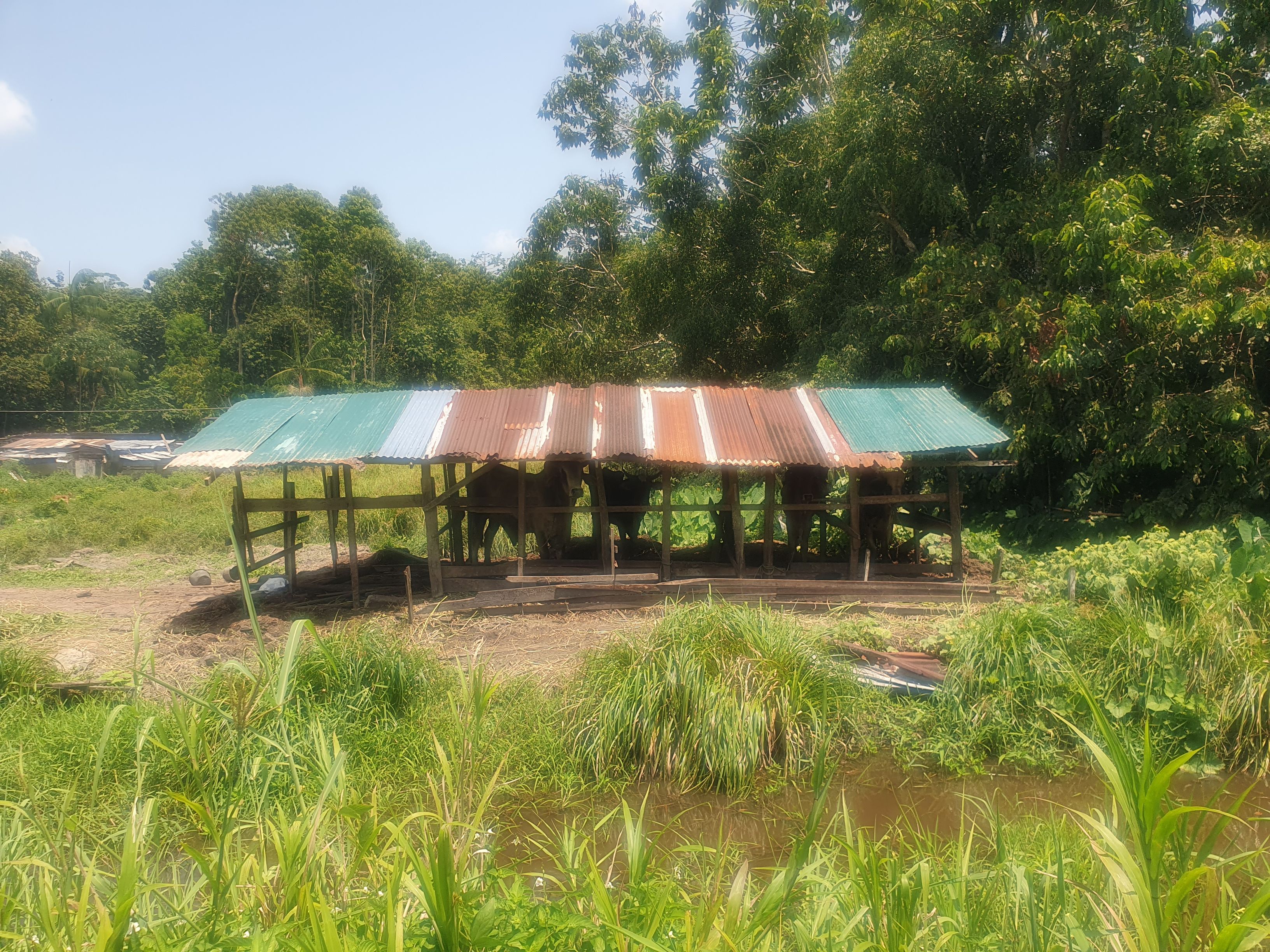
We also arrive at a cemetery and here is another surprise - the graves are covered with bathroom tiles - after the initial surprise, Zuza finds the solution appealing - cheap, effective, aesthetic, and strange only to our unaccustomed eyes.
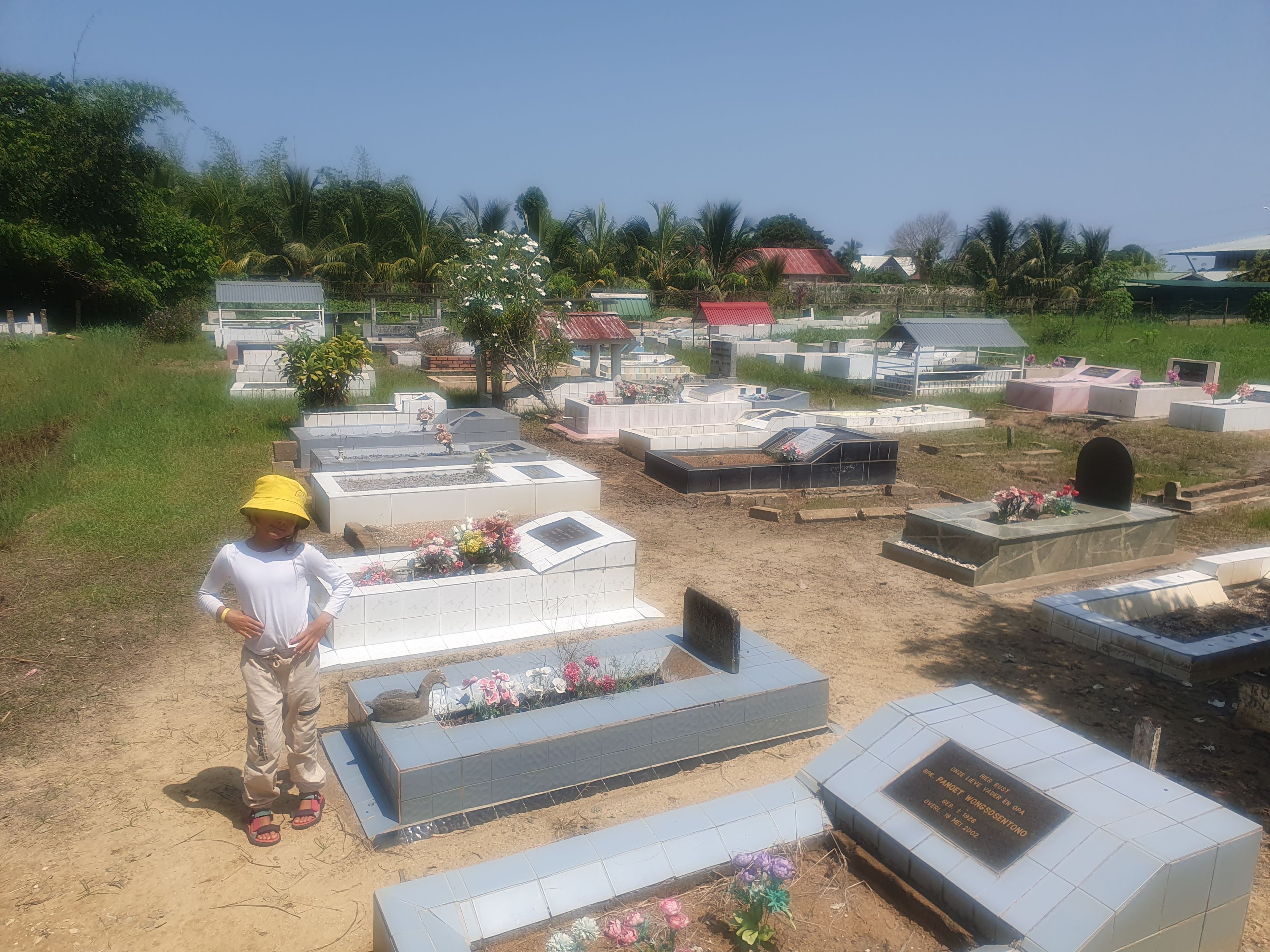
The local lush vegetation looks amazing. Coconuts, sugarcane, breadfruit trees, lotus flowers, bananas, papayas, and many others grow here.
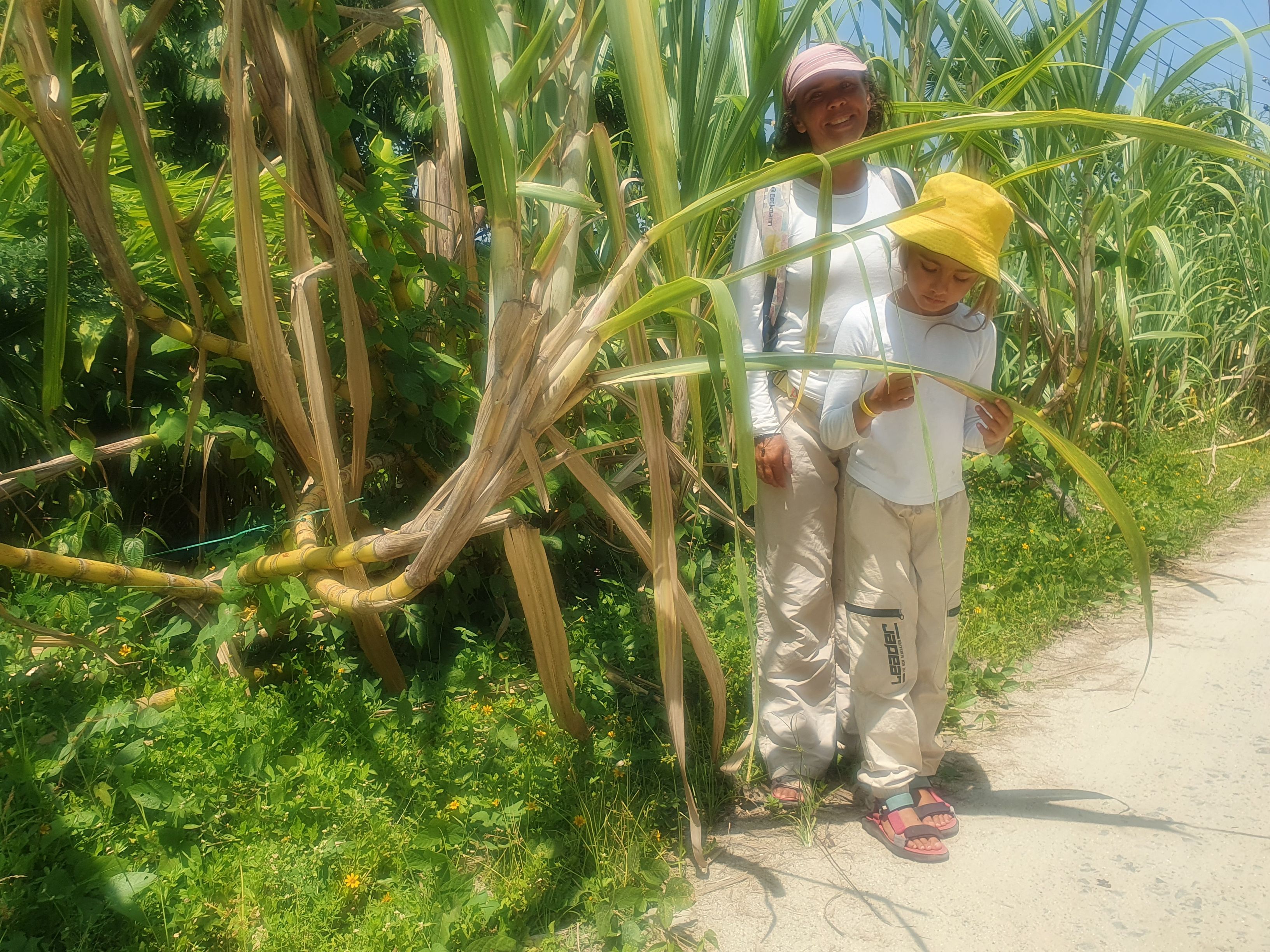
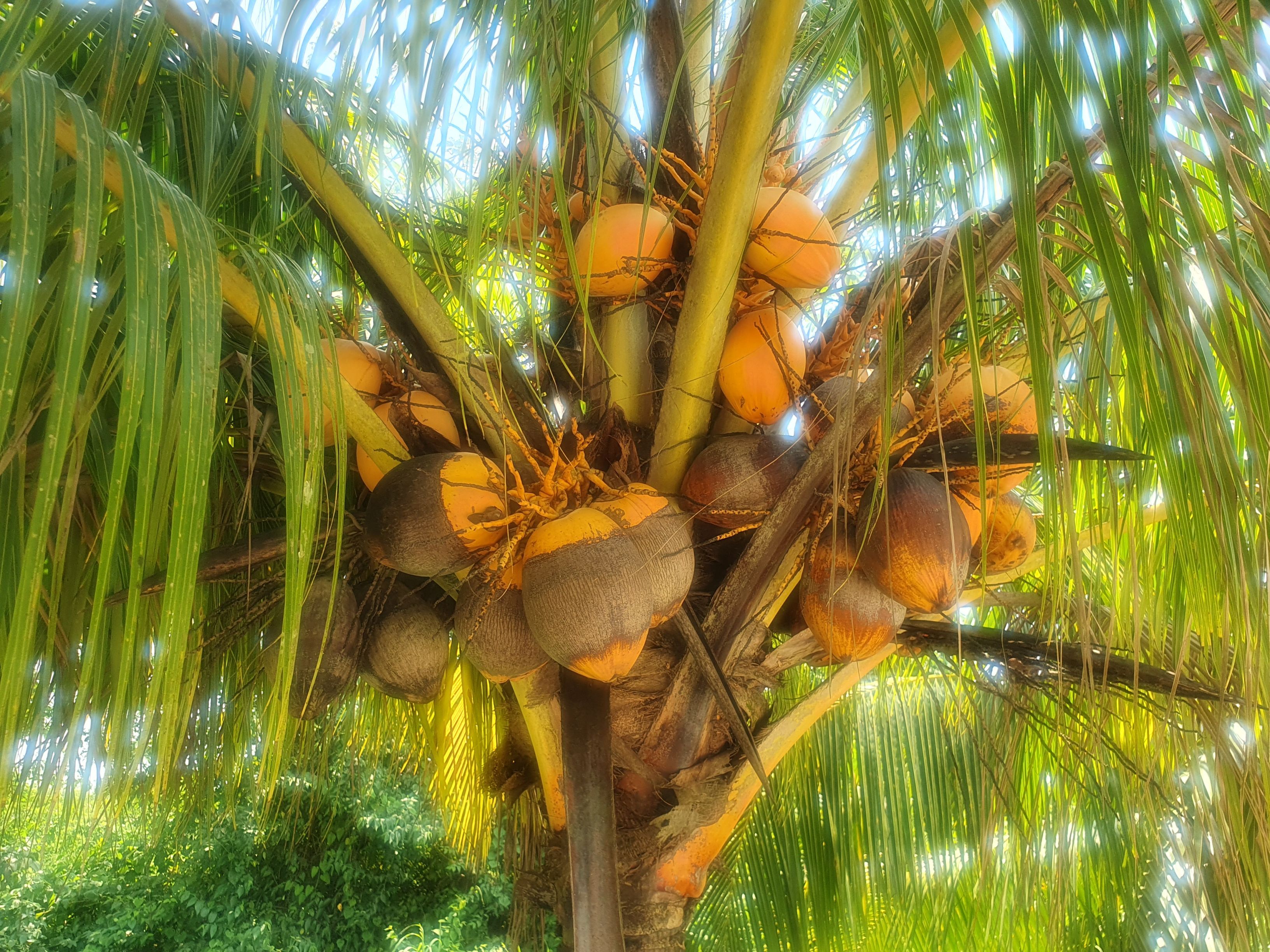

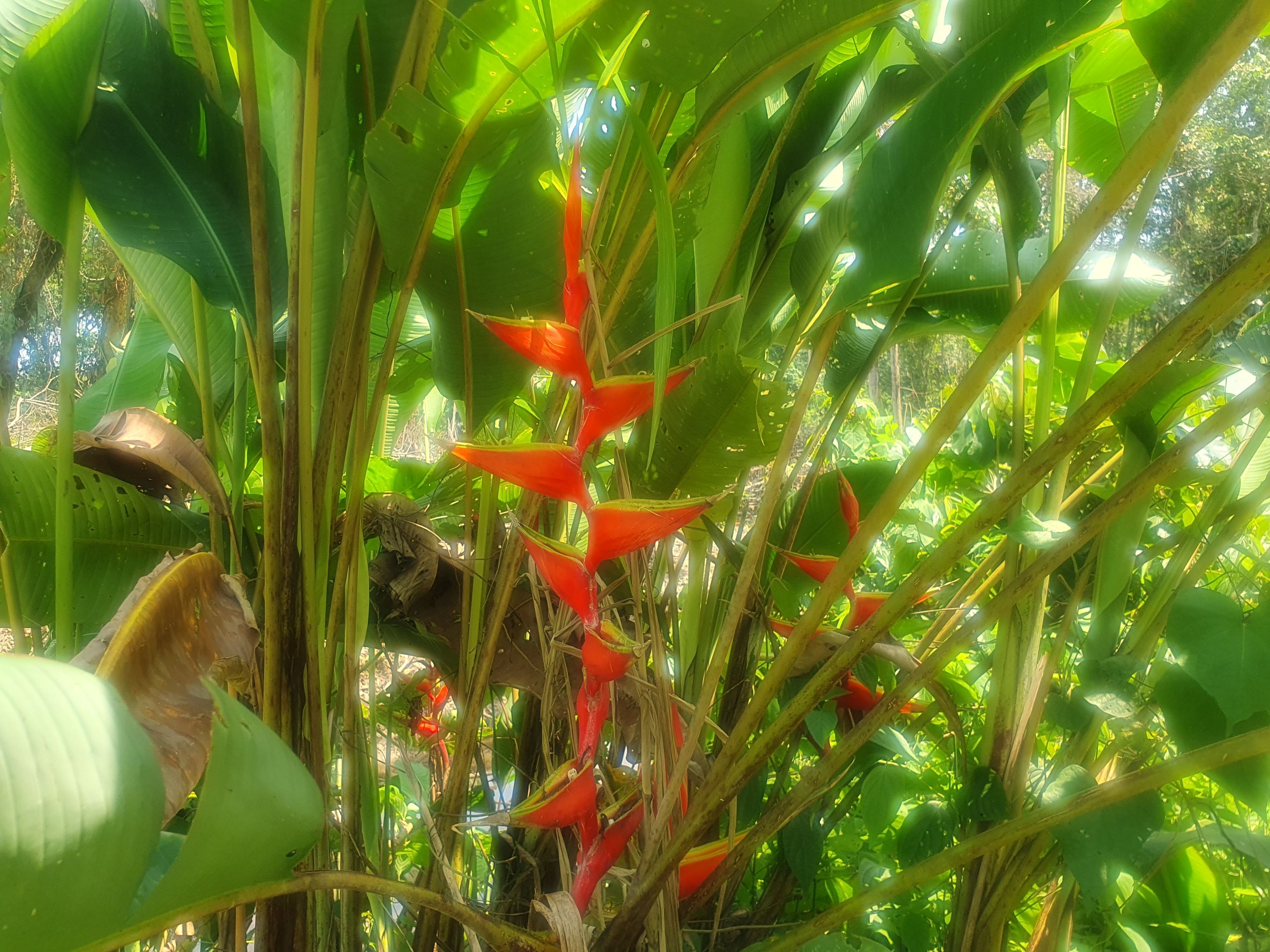
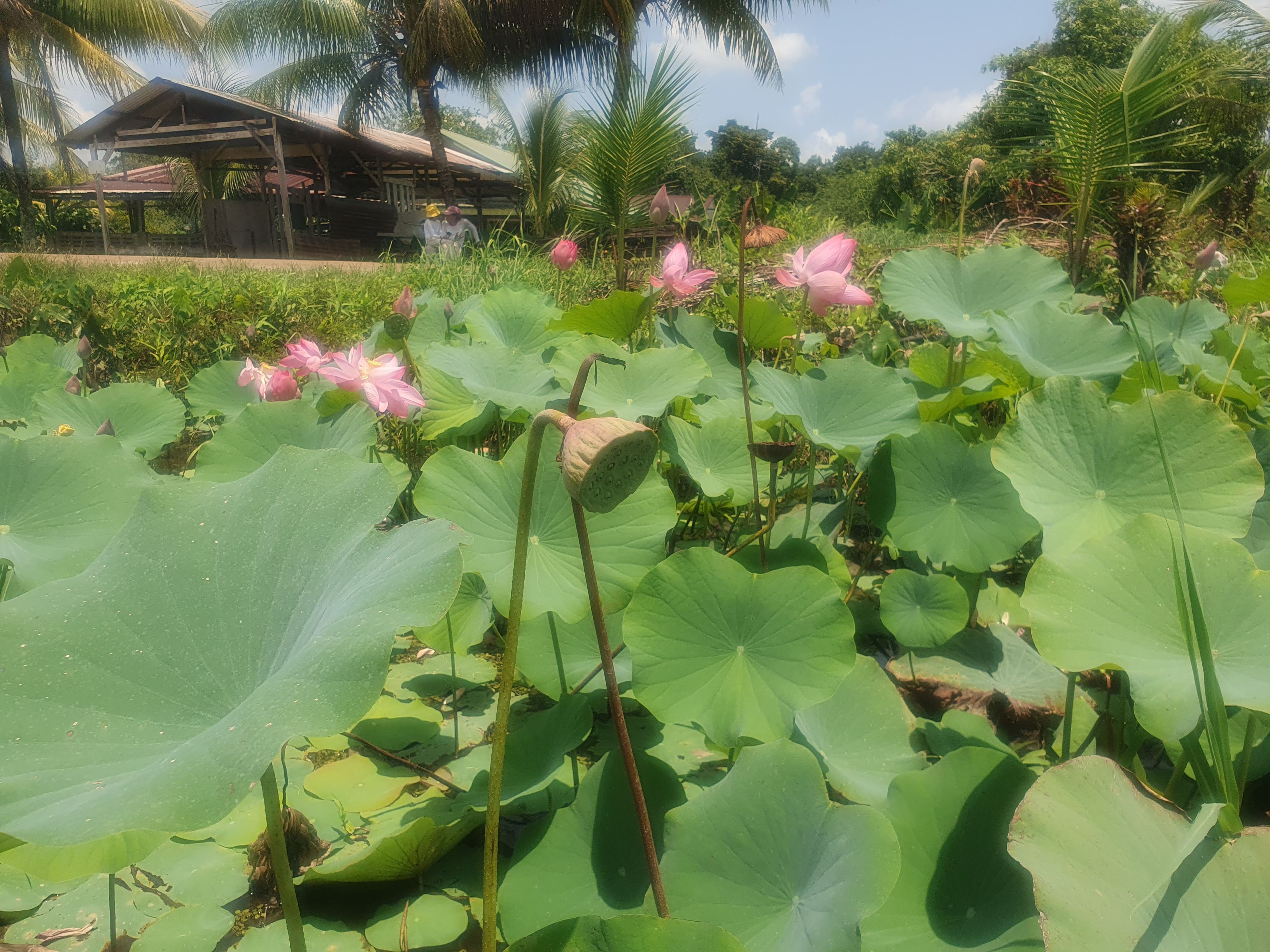
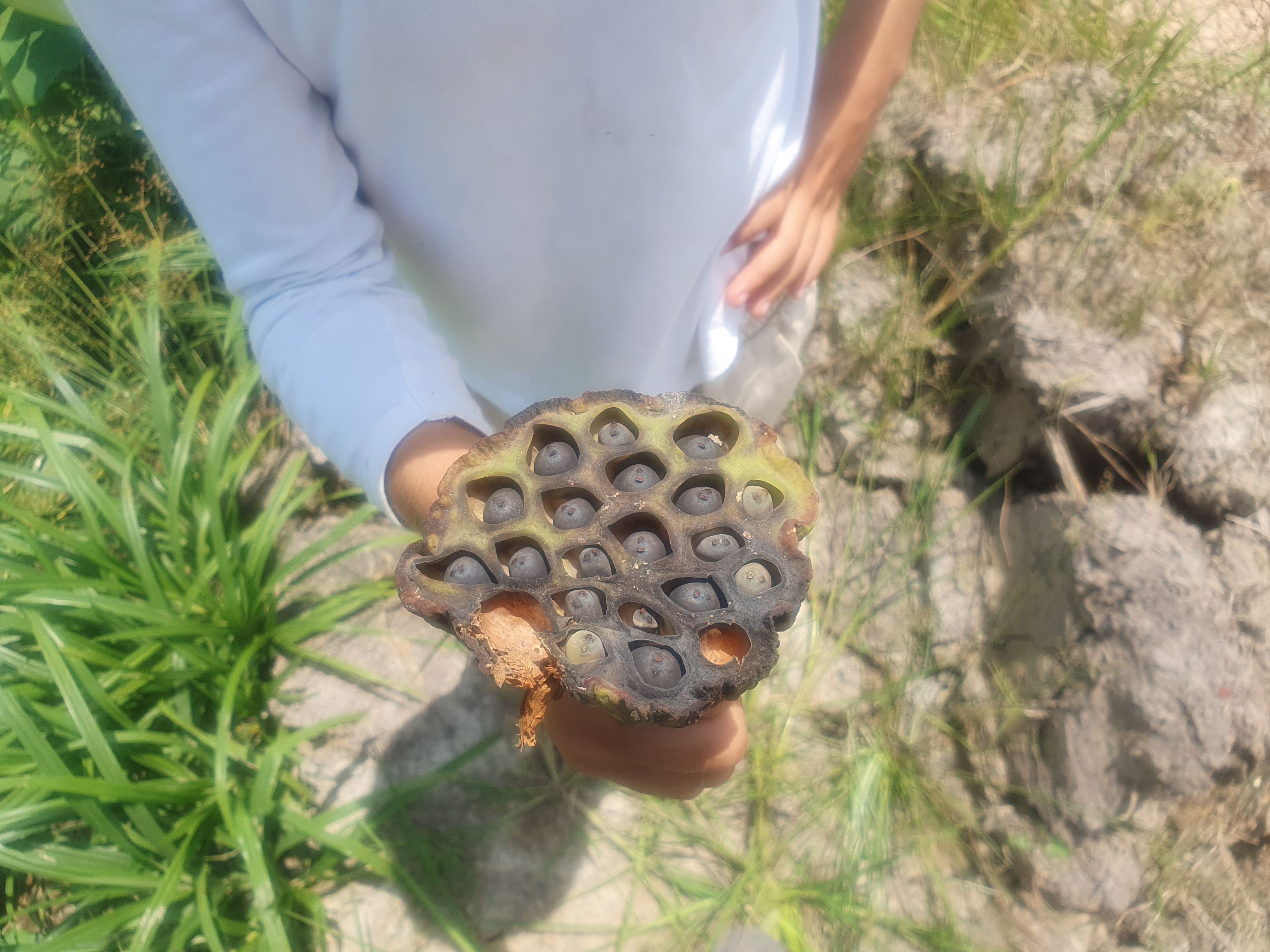
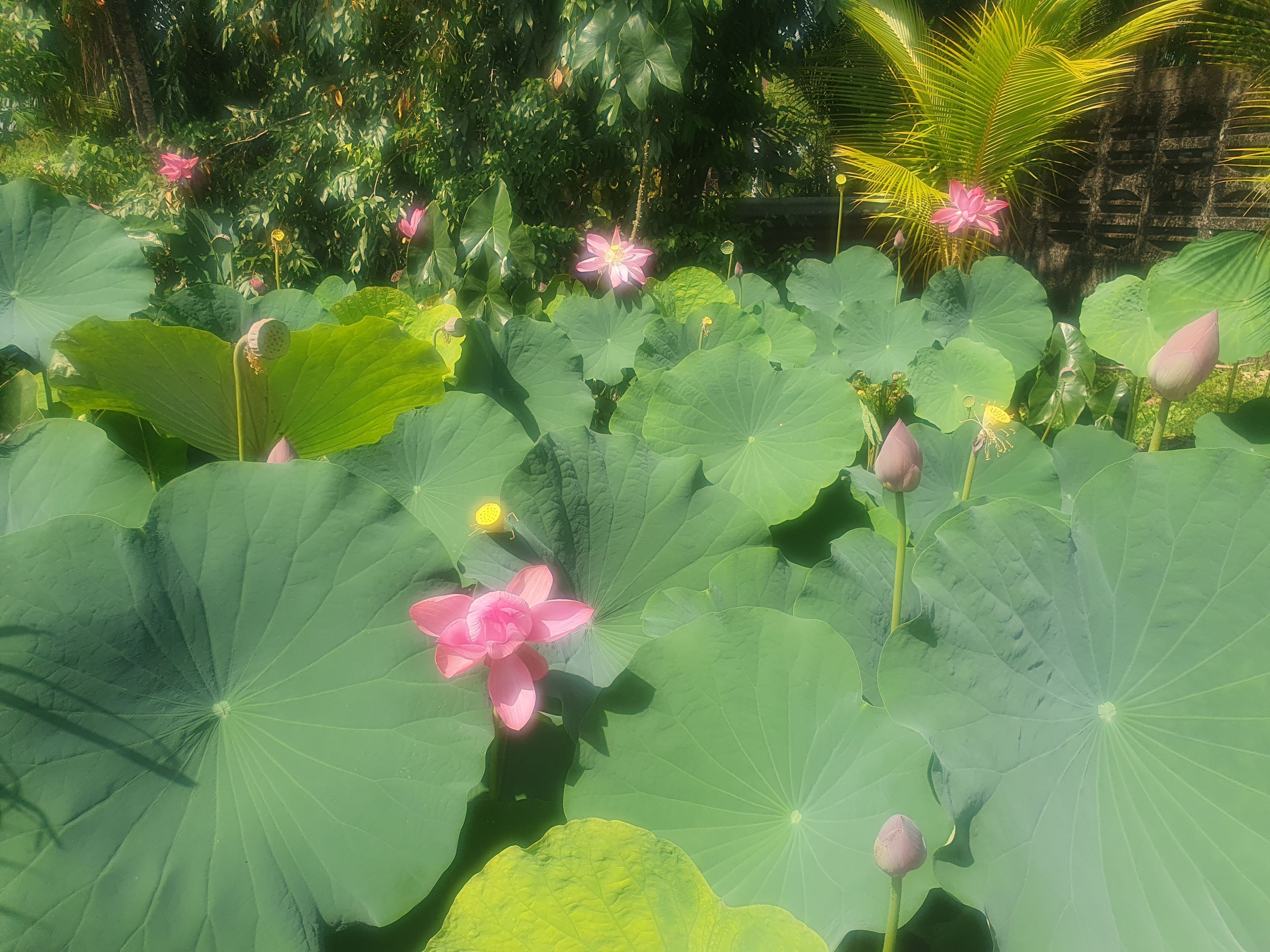
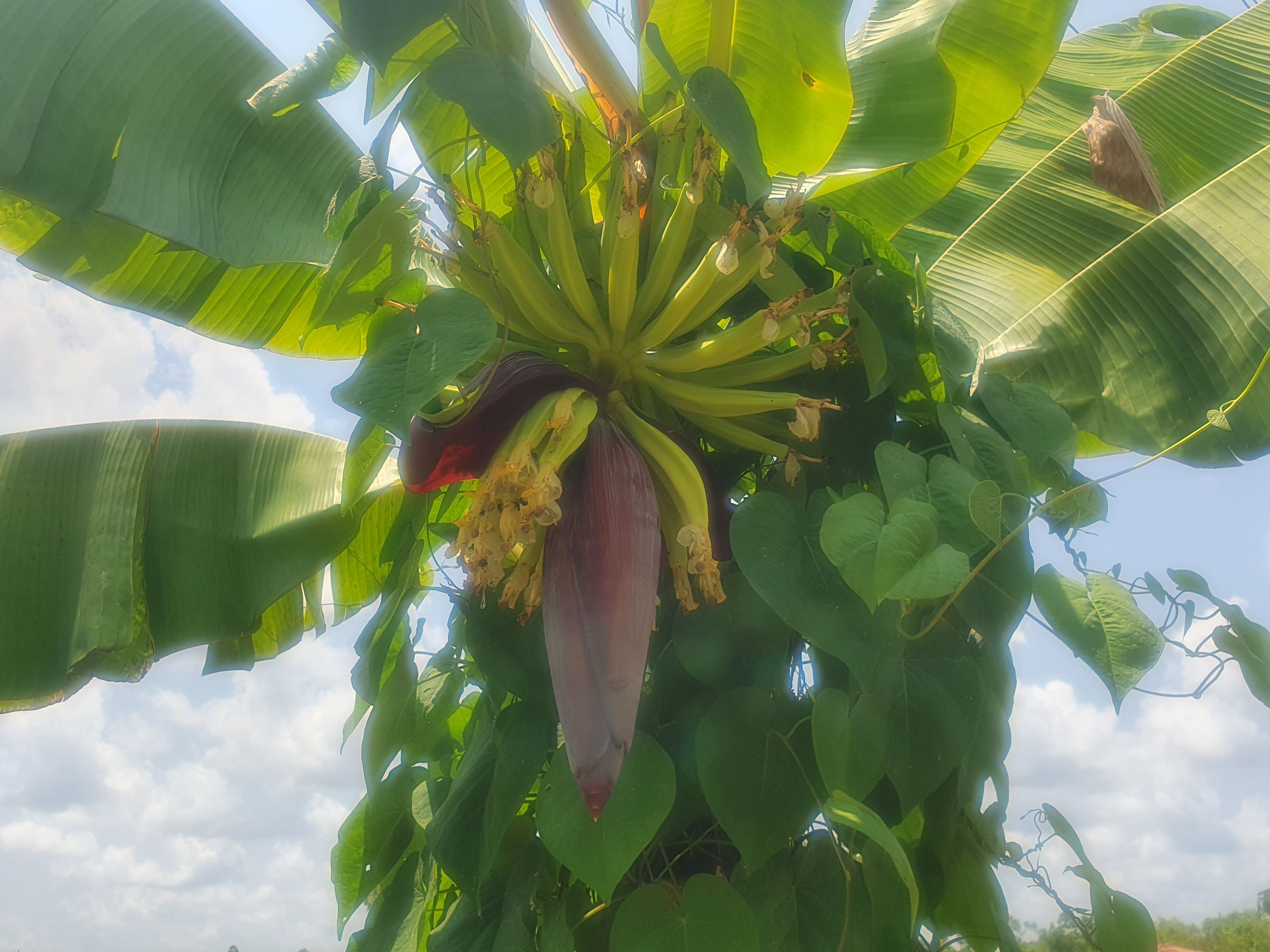


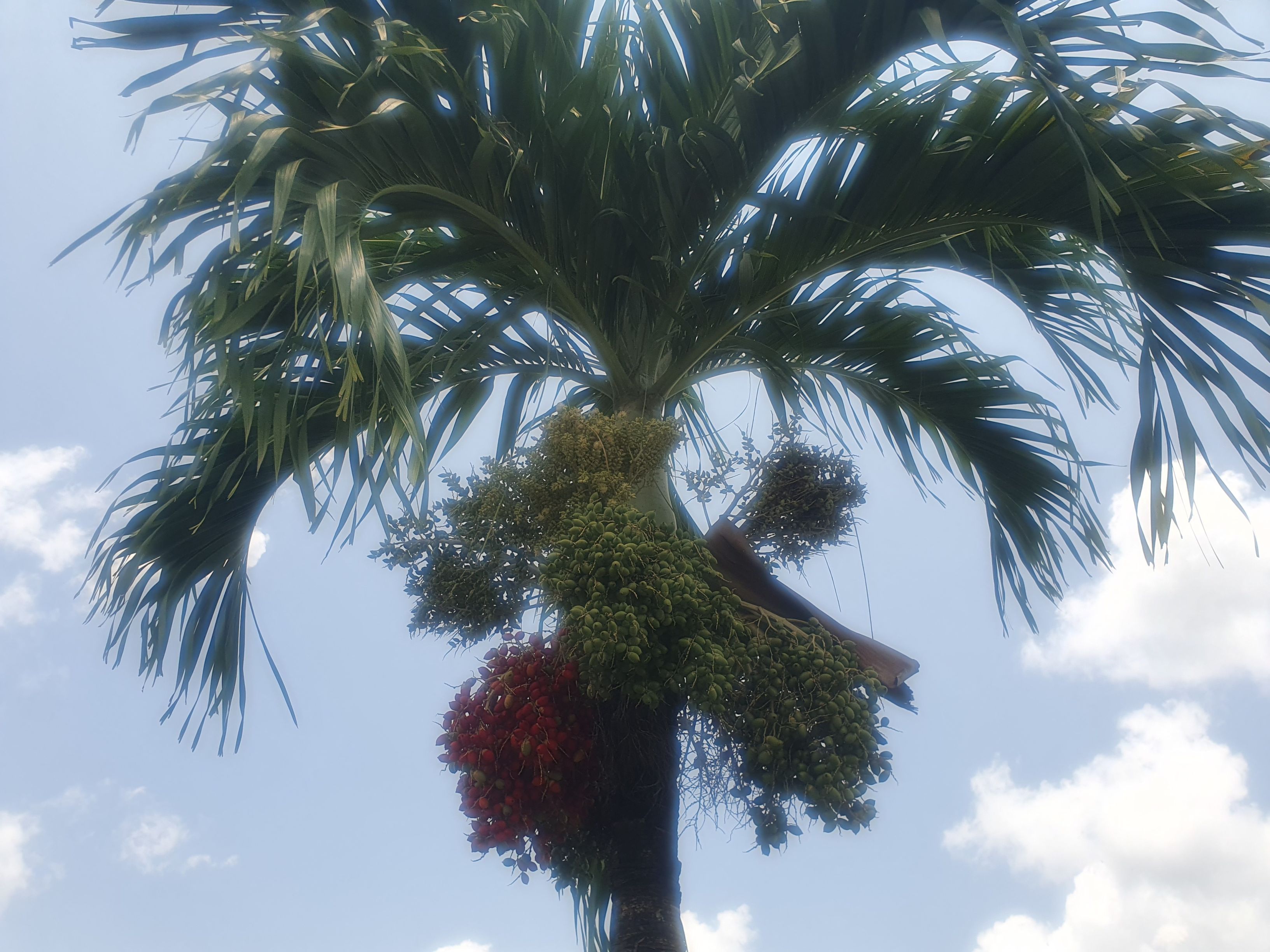

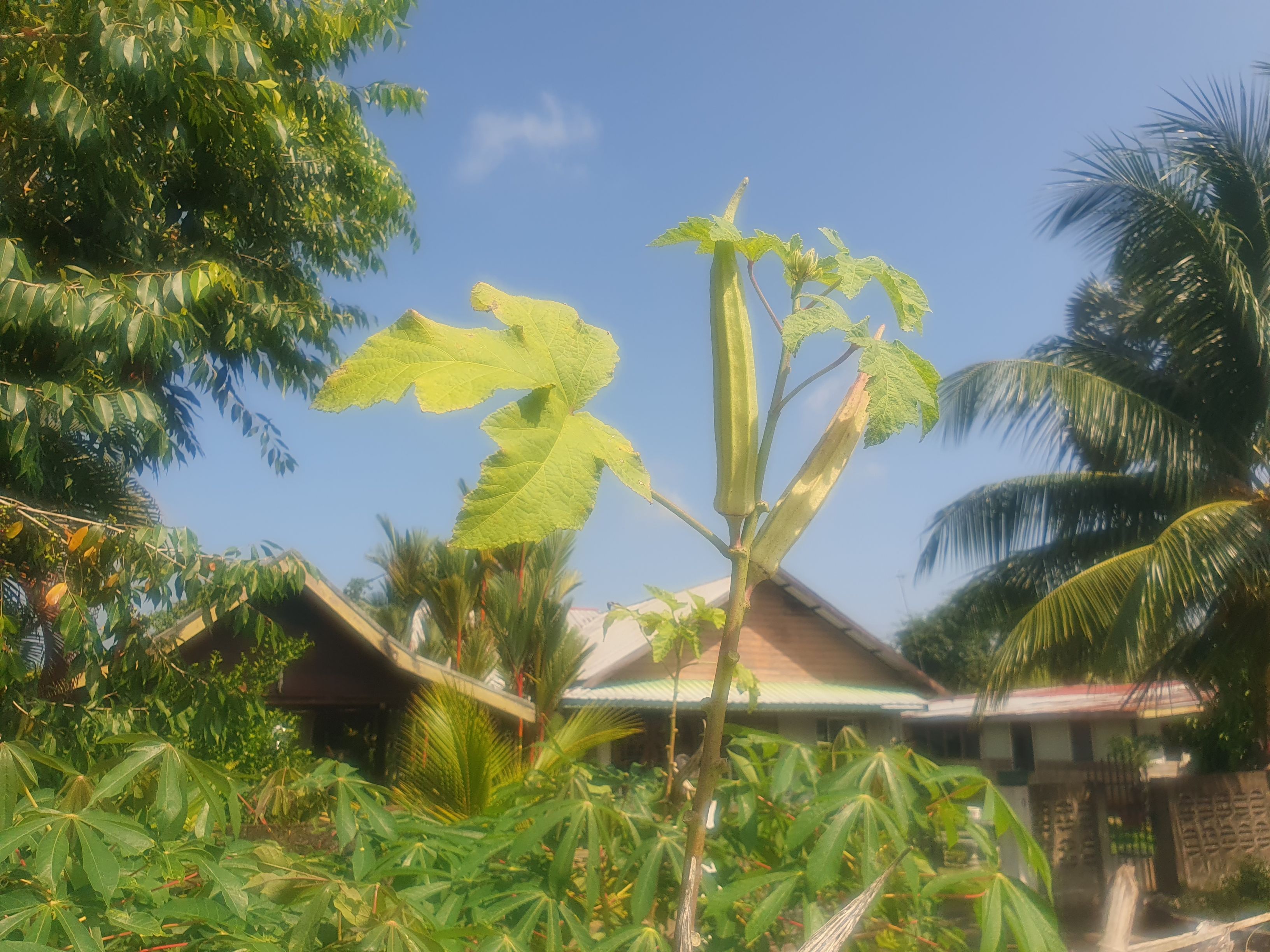

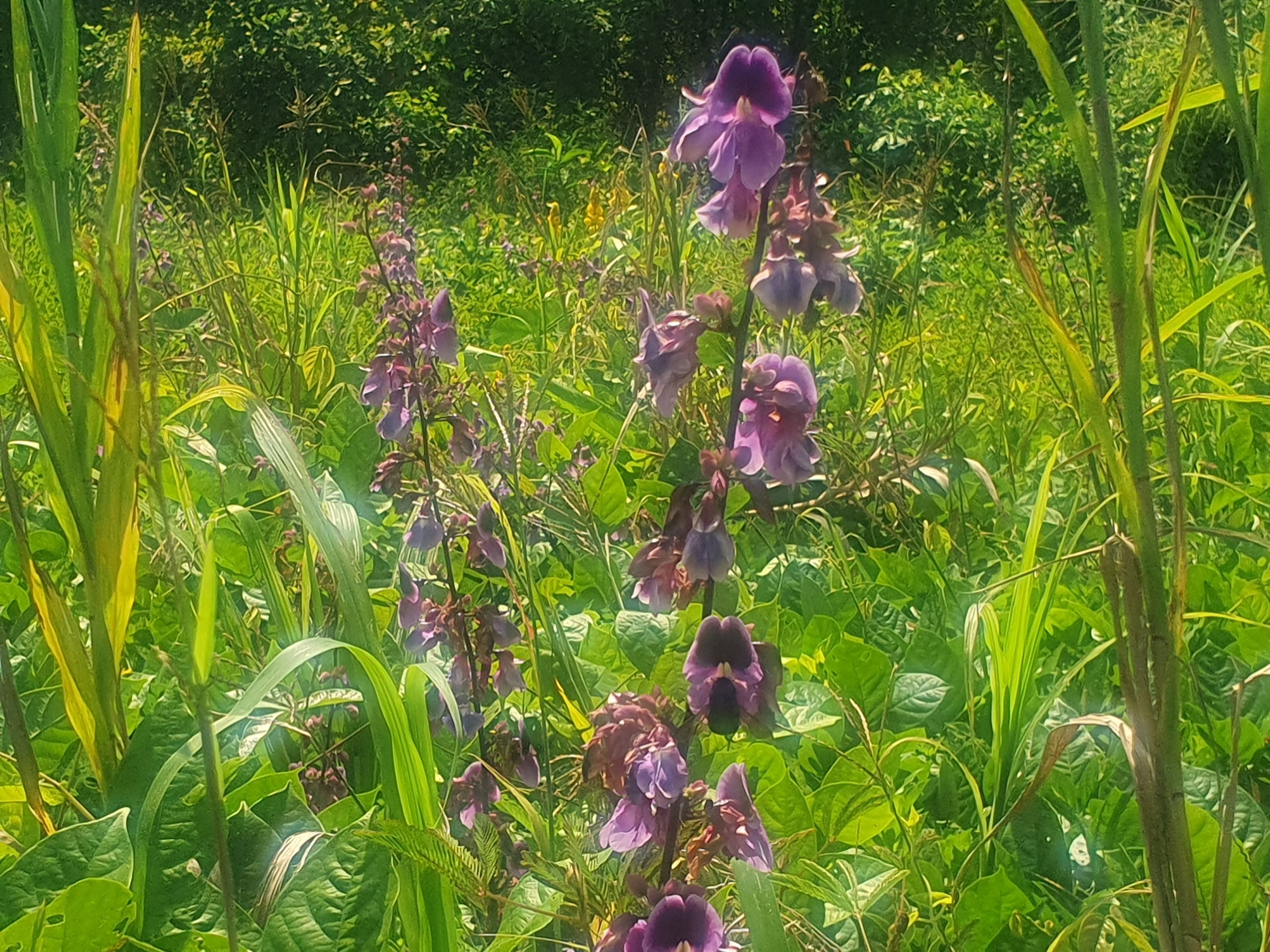
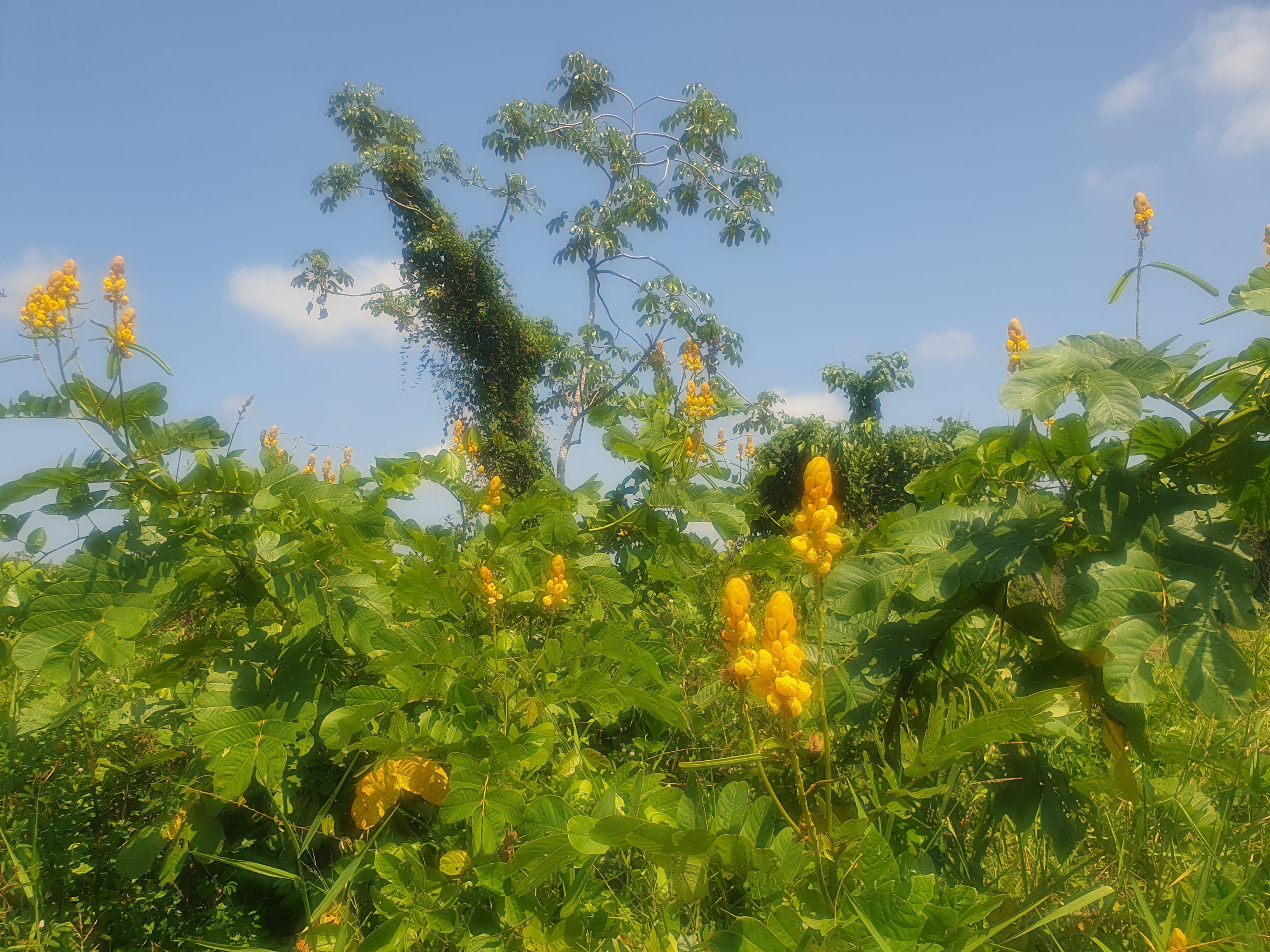


In many places, we encounter nests of insects stuck to trees, poles, and even buildings. Locals call the insects which make them termites but we do not know exactly which species is it.
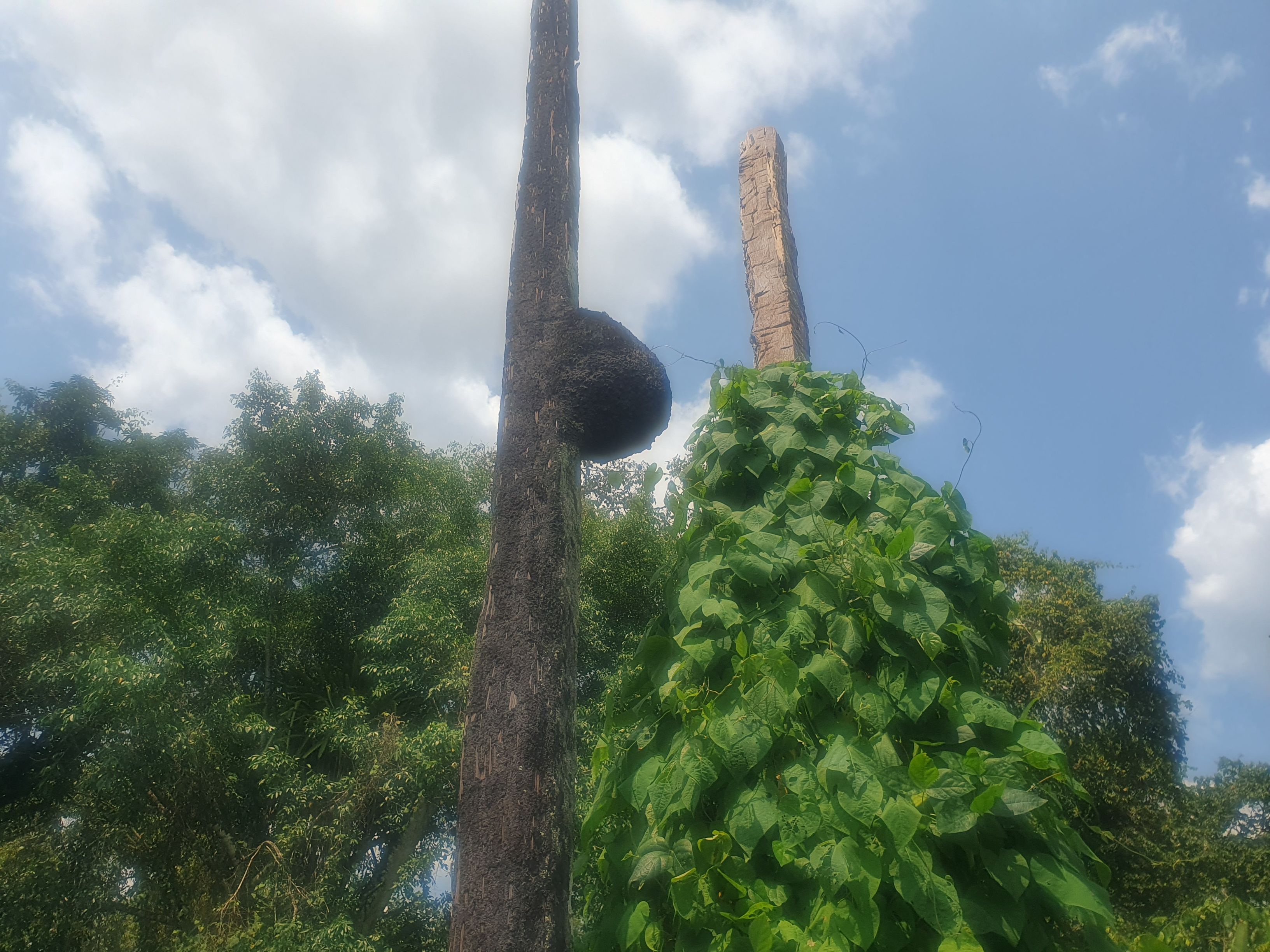
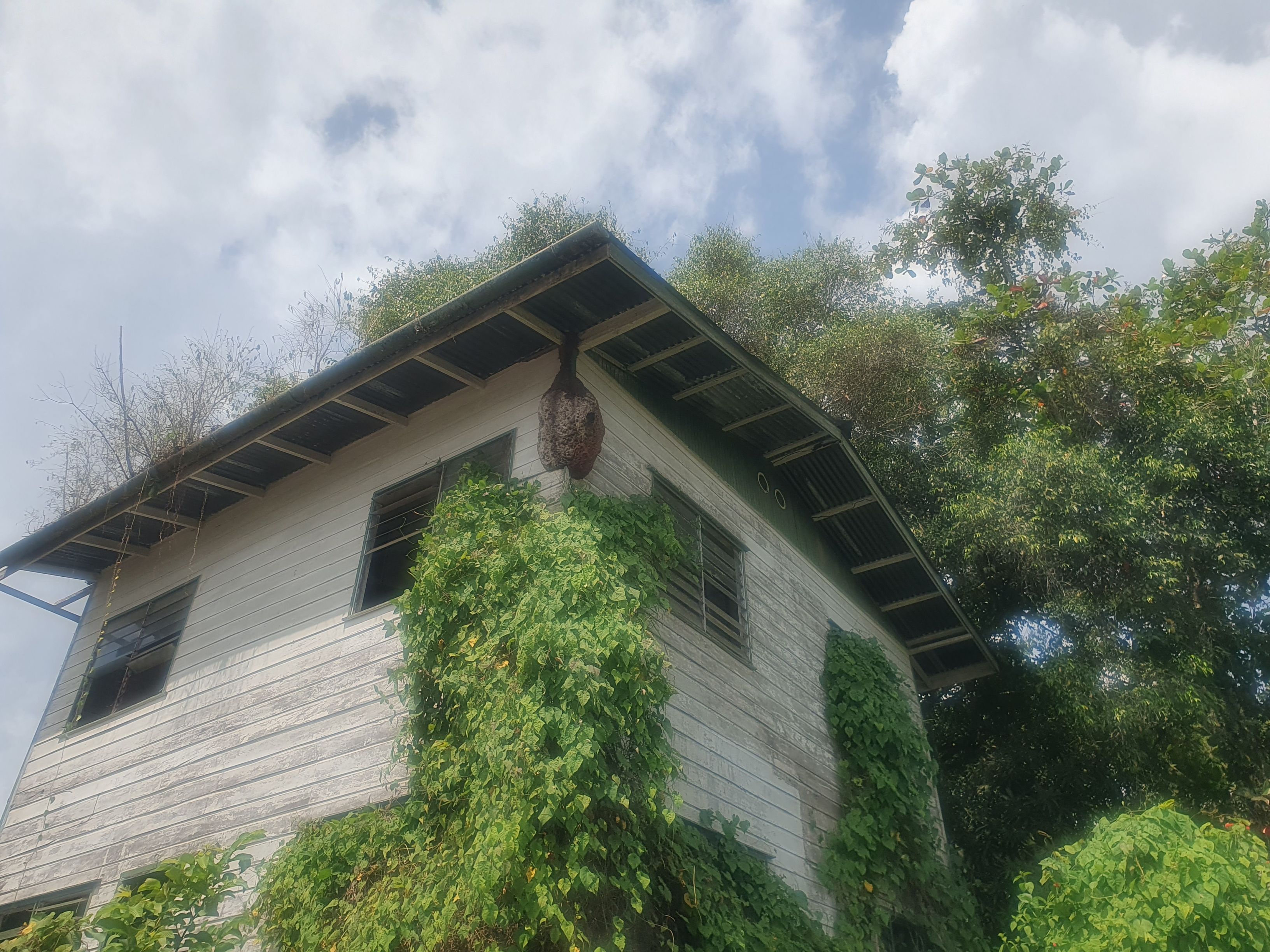
The mimosa made a big impression by folding its leaves at the touch.
In one word, a great day of hiking.
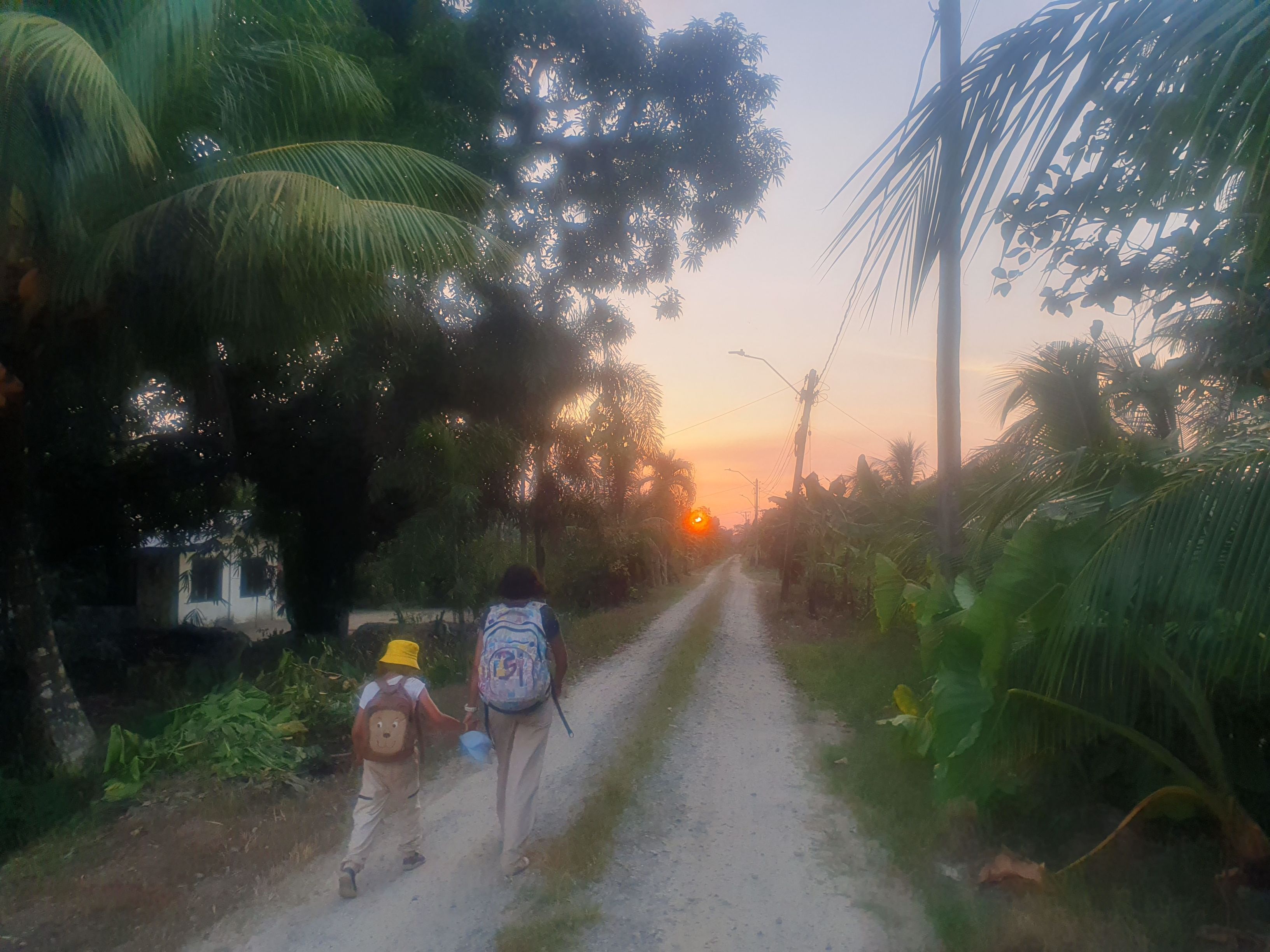
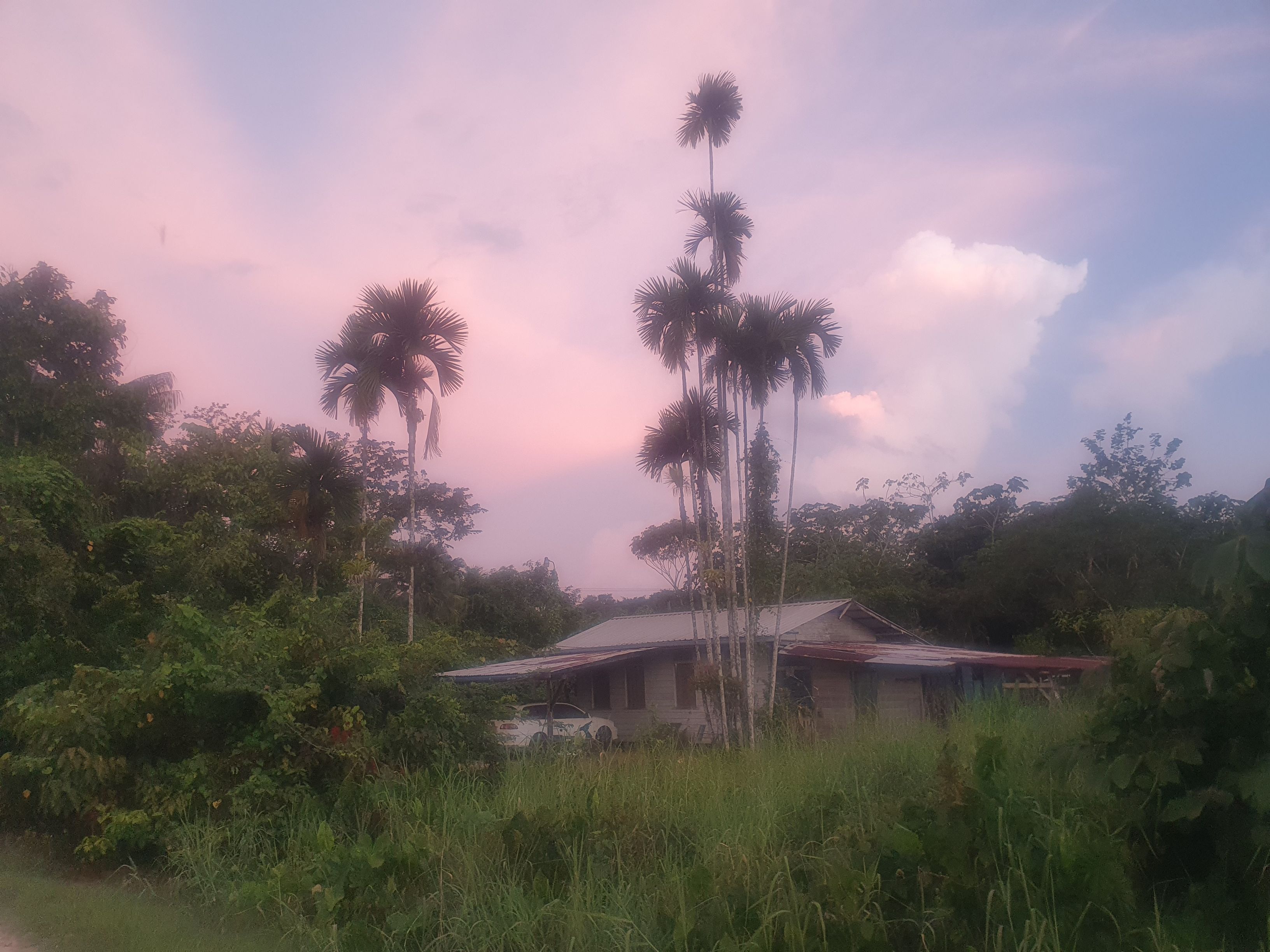
On Monday, we set off for Paramaribo to handle all the entry documents. Our guide is a taxi driver named Hari, aged 79. Not only does he know where to go, but he also knows everyone, making the process of getting stamps and making payments quick, as Hari's acquaintances and relatives serve us with a smile. It turns out that since we last checked, the visa prices have increased, and now they cost 50 USD per person, including Kama. Additionally, we will need to hire our taxi driver again to get the exit stamps. We had forgotten how it is to travel in non-EU countries—the amount of hassle and costs it generates.
The next day we go for a walking trip to a nearby marina, where we meet recently acquainted sailors Maria and Brandon with their son Orion. He is a cameraman, and she is a pediatrician. They share their adventures at sea - they met in Antarctica and then returned to this place on a yacht with their six-month-old son. Later, they bought a piece of land in Patagonia and lived there for some time. Since there was no pediatrician in the area, Maria was often asked for help, which gave her a business idea. Through the website www.pediatriaenelviento.com, she offers medical consultations. Her patients purchase a monthly subscription for a child or family, together they complete a first-aid kit with medications and tests, and then, if necessary, have video chat visits. Maria thought her clients would mainly be sailors, but it turned out that such a service is also needed, for example, in the Atacama Desert. For now, they have stopped in Suriname, but soon they will sail further south, as their daughter is expected to be born in January, and they would like to give birth in Argentina.
Now that we are fully legal, we go on a trip to Paramaribo. We start our sightseeing with the markets. First, we arrive at the witches' market, where various local medicaments are sold. We look at bunches of herbs, horns, turtle shells, and something resembling eggs made from dough, but unfortunately, we have no idea what they are used for.
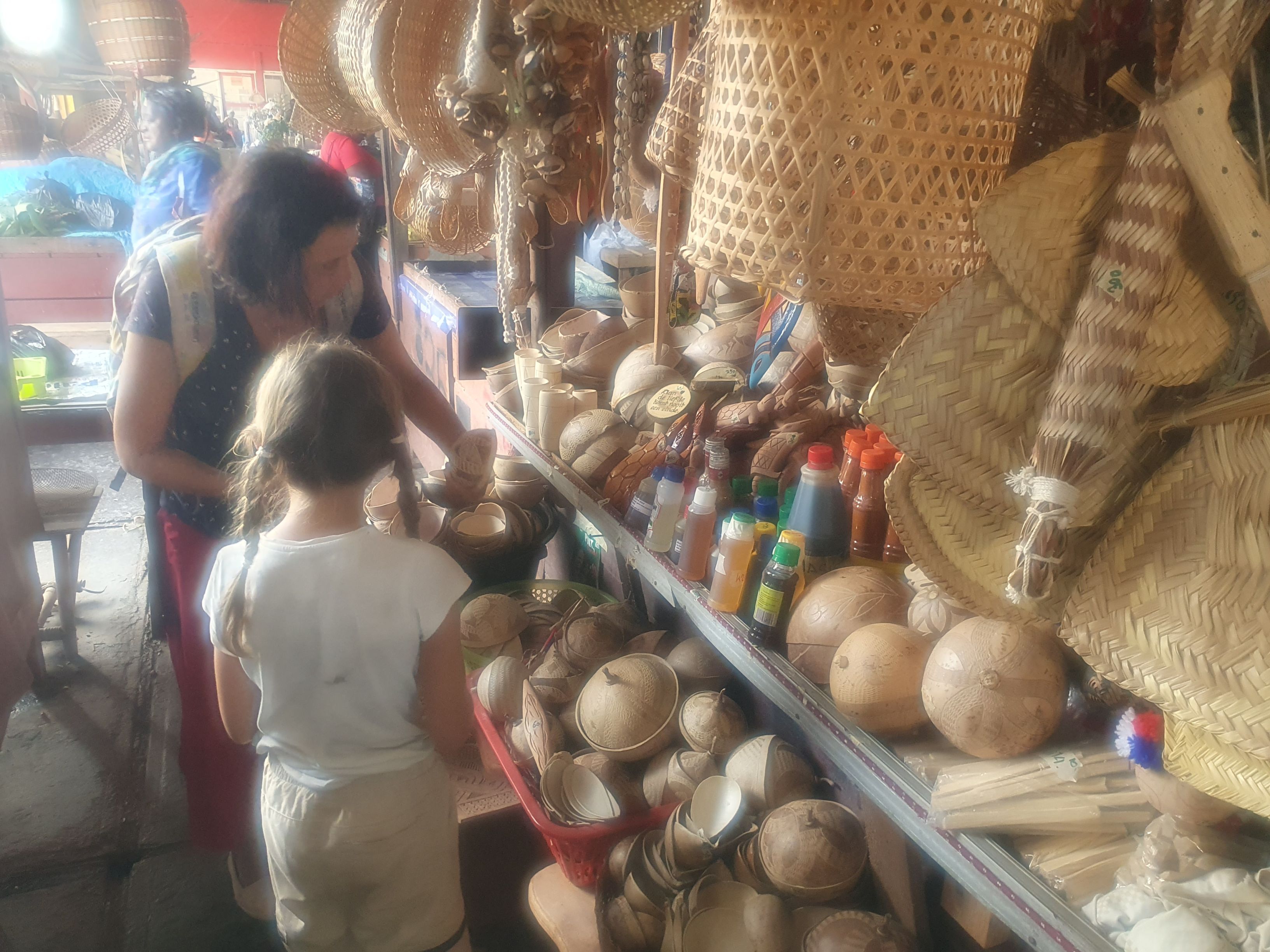
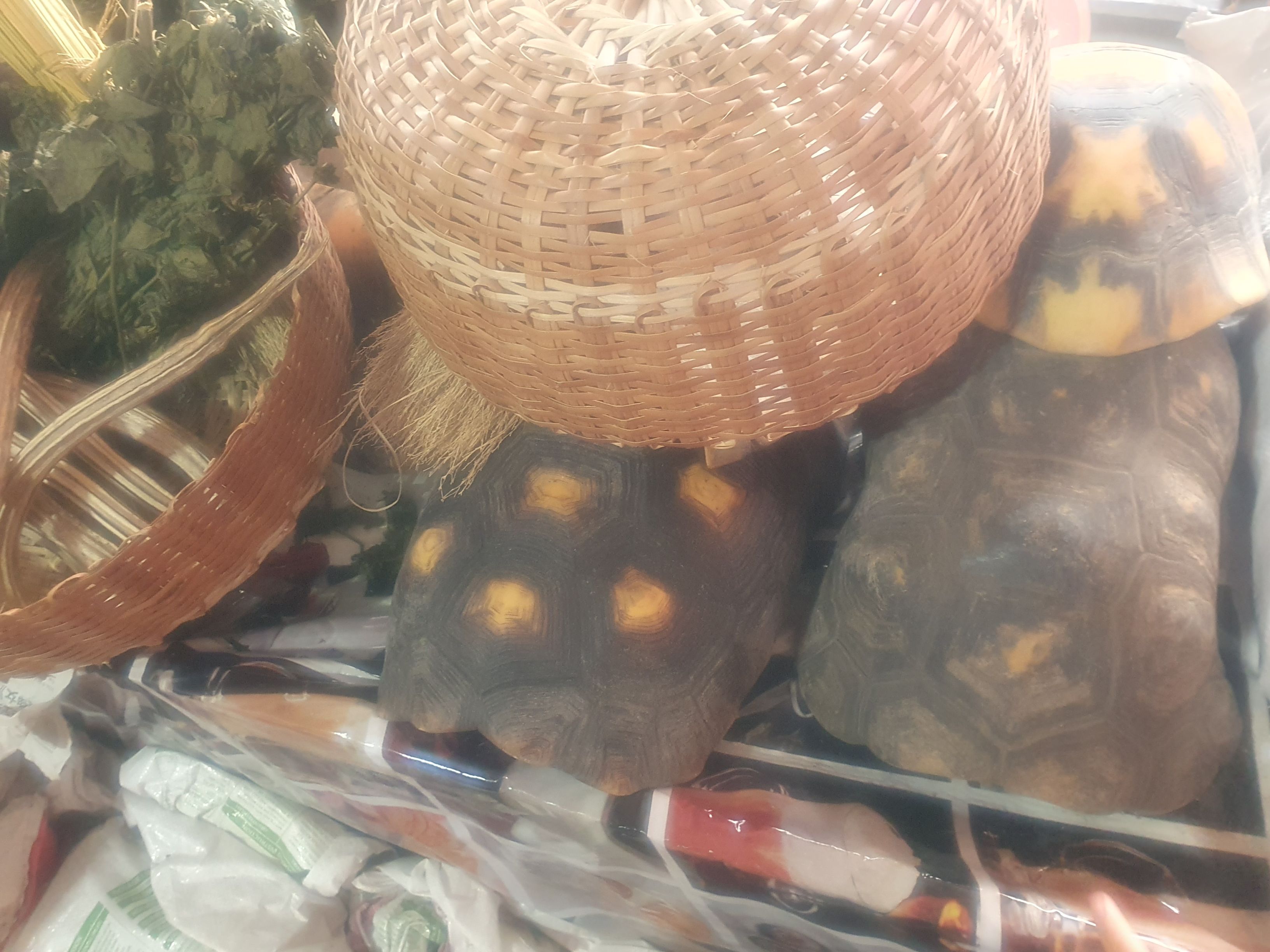

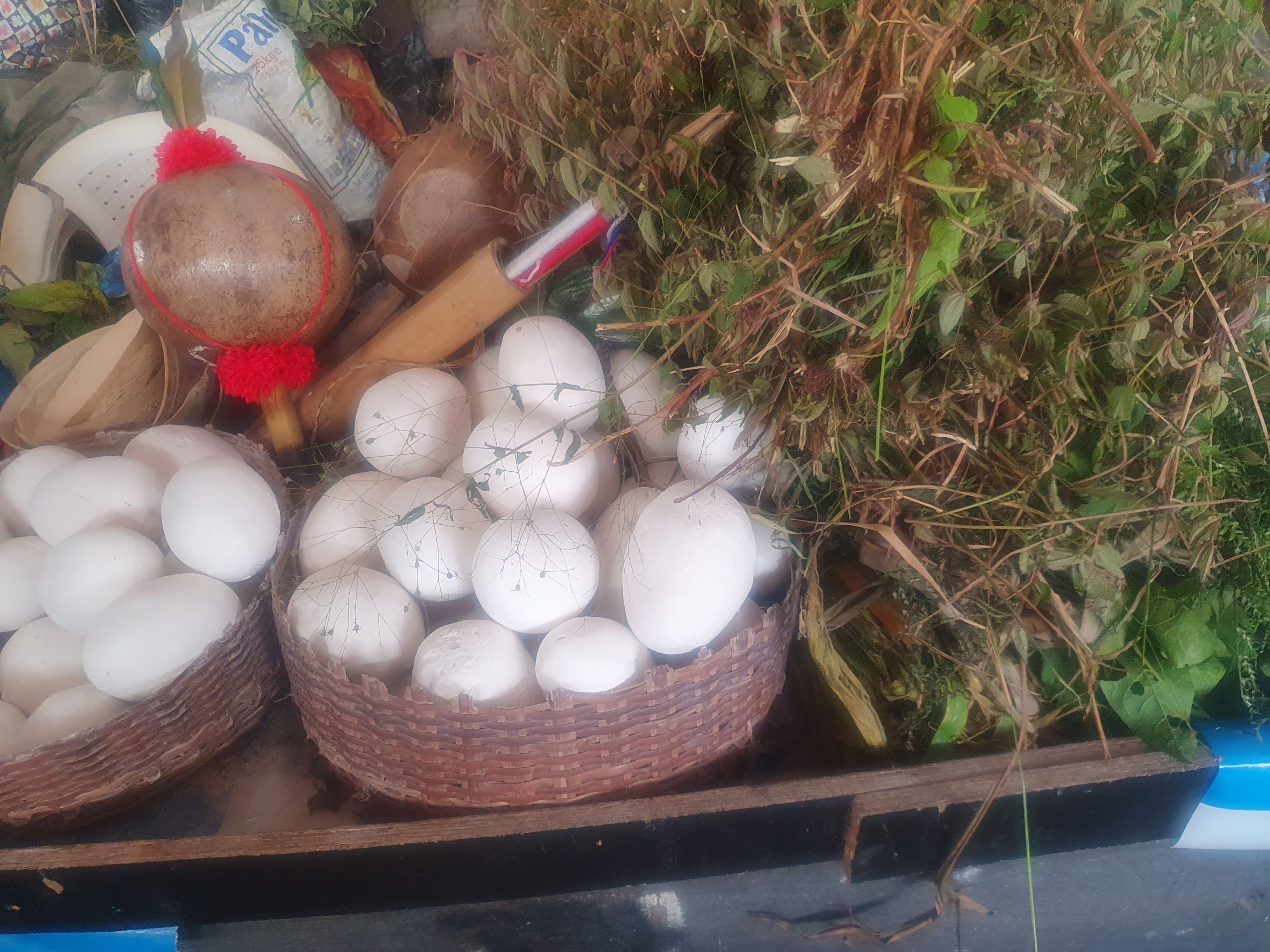
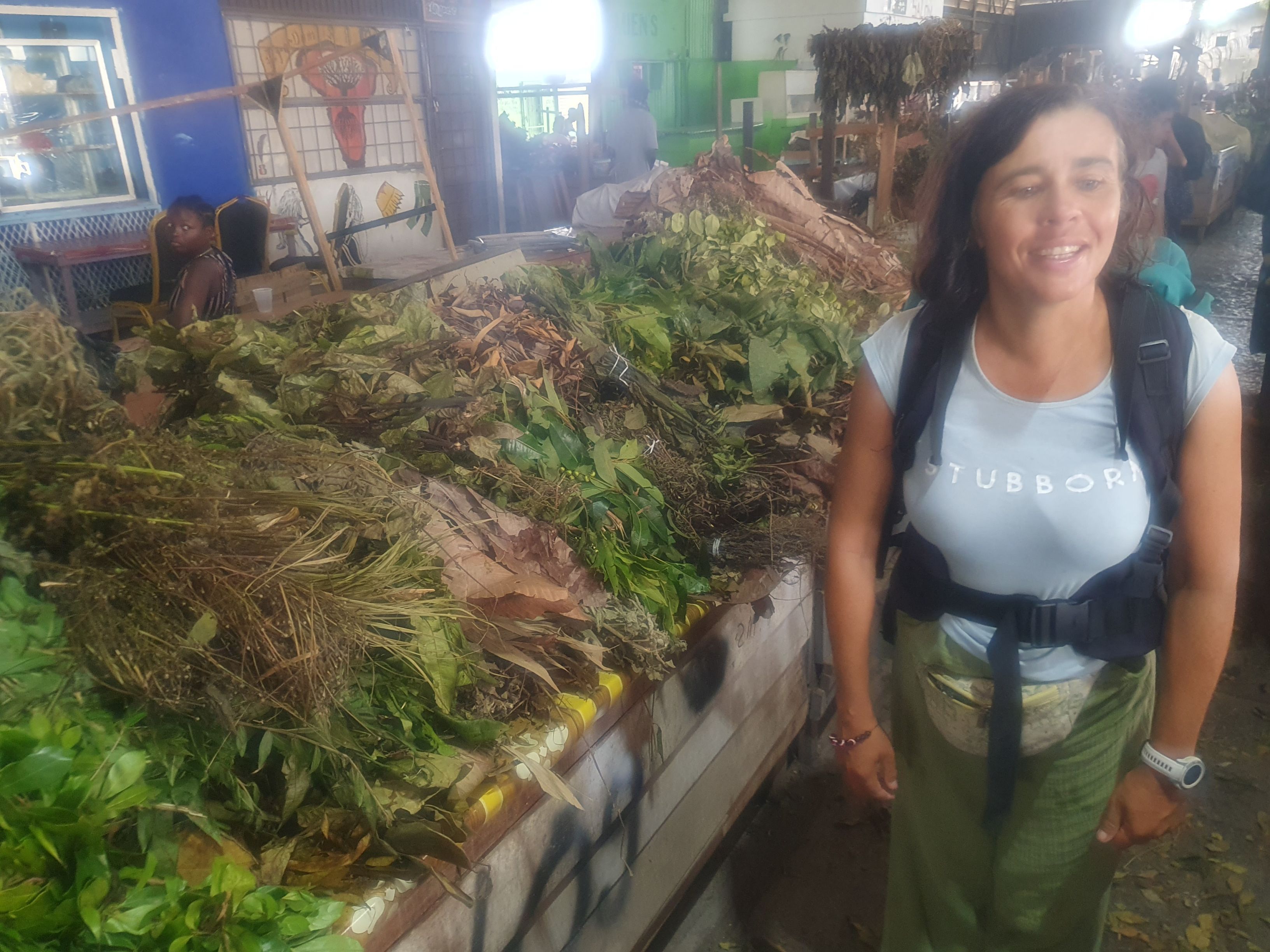
Next, we move to the fruit market. It is pomelo season now, but we also buy rambutans, guava, and brown balls the size of a small apple - they are sweet but not much more, so we collectively decide they won't become our delicacy. We liked the bazaar and visited it more often, so don't be surprised if we are wearing different clothes in the photos.
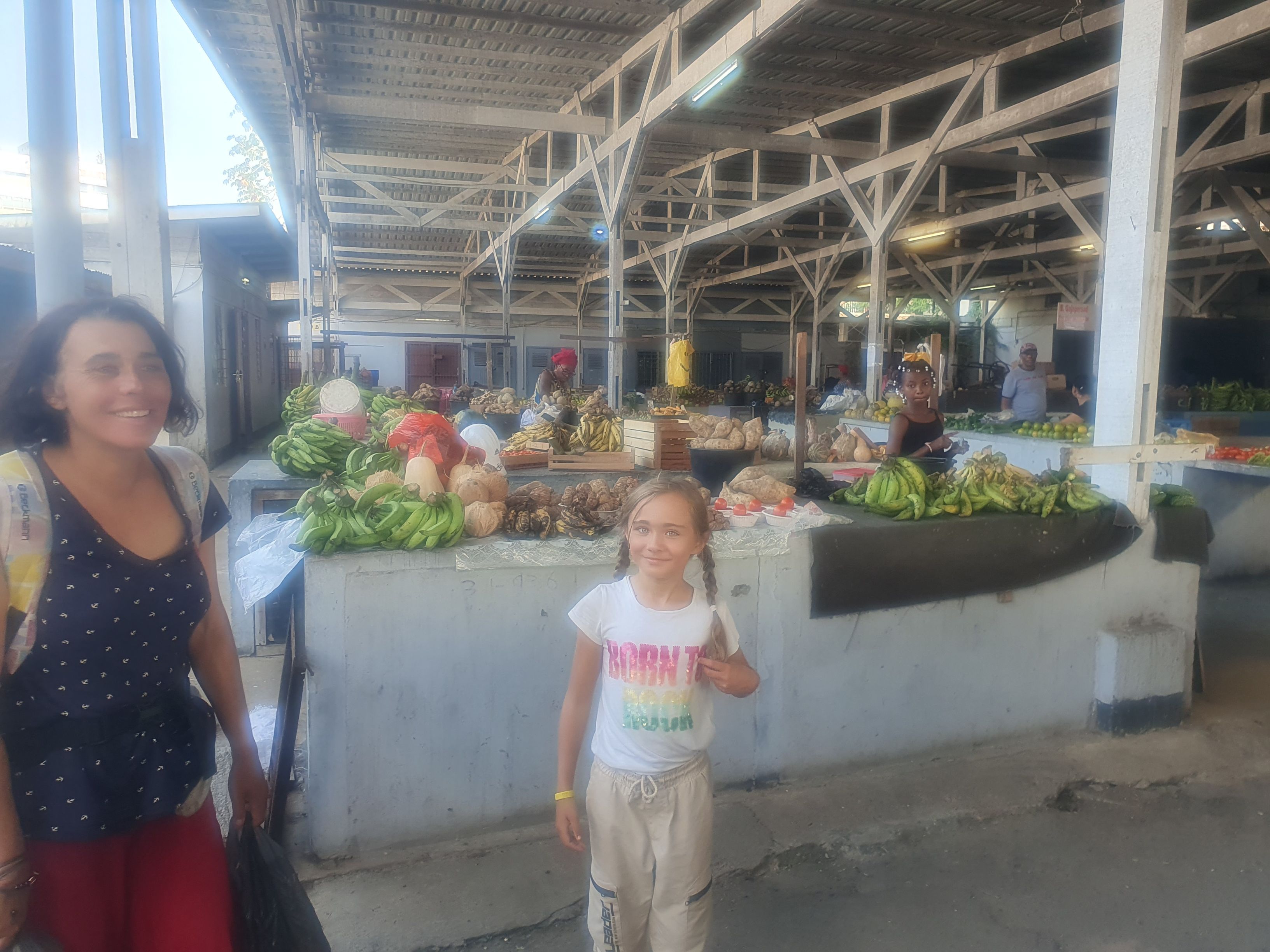
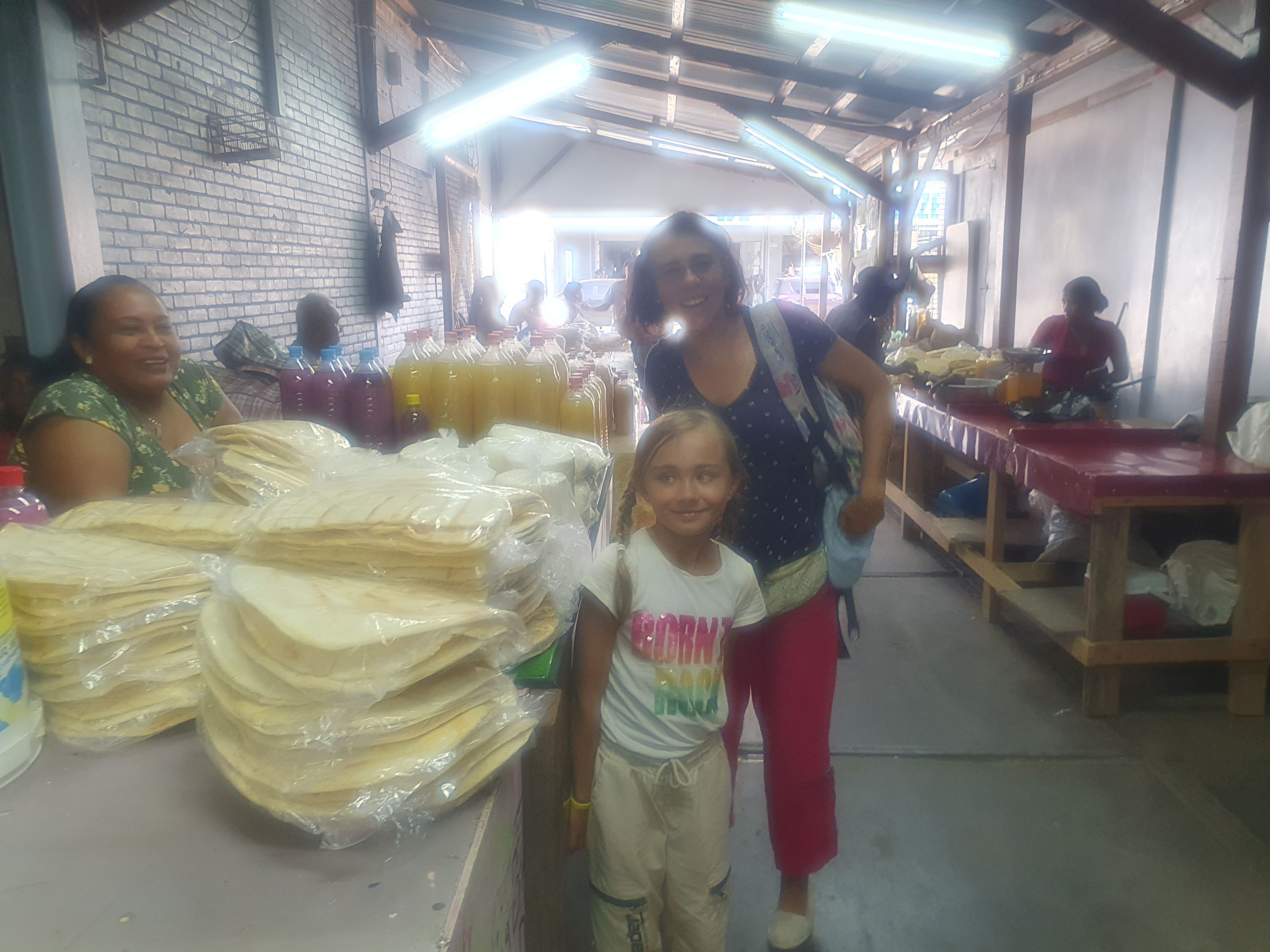
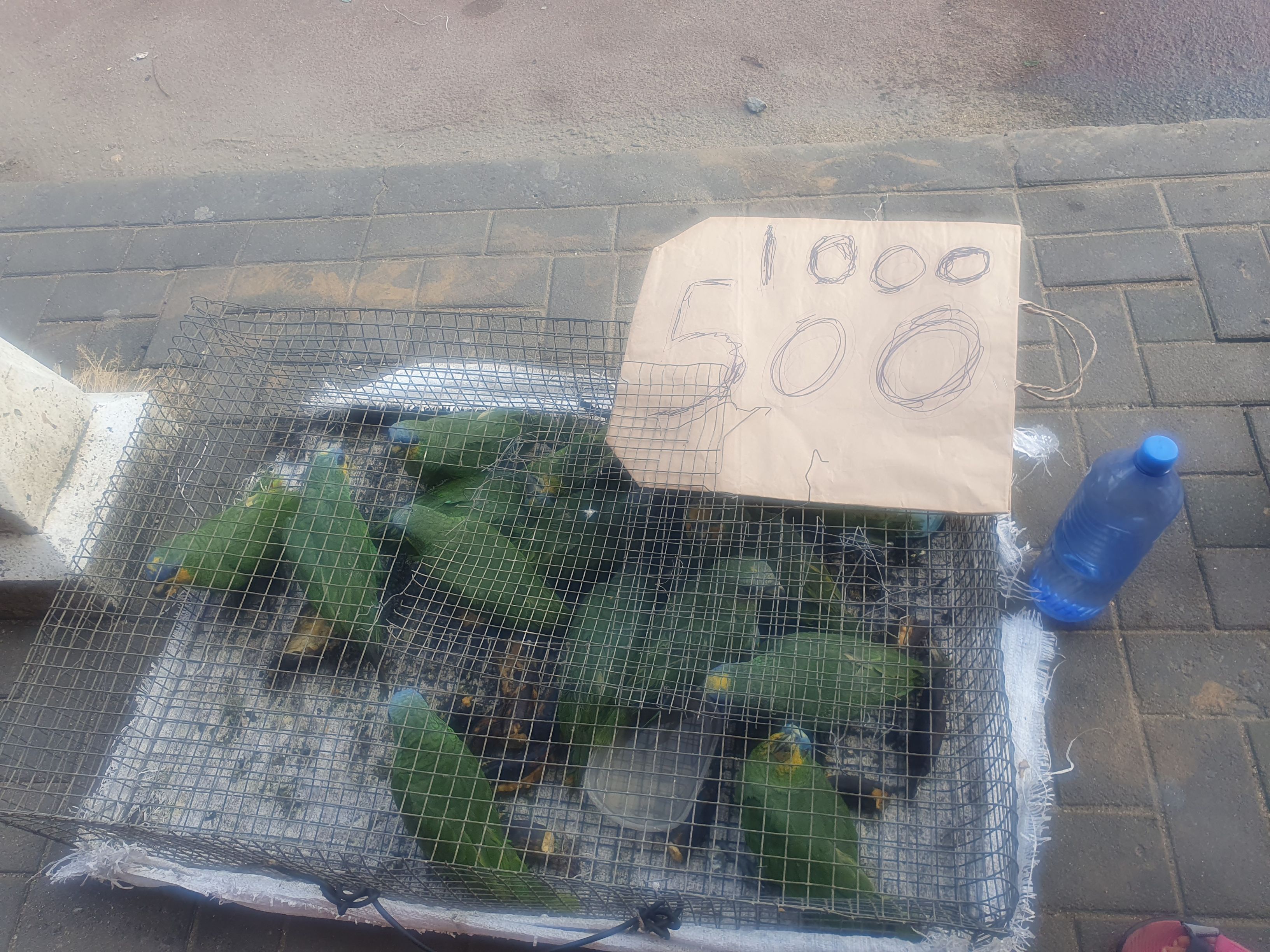
Today, armed with fruit, we set off to see the Basilica of St. Peter and St. Paul in Paramaribo - the largest wooden building in the Northern Hemisphere. Neo-Gothic in wood appears surprisingly to our eyes, but the overall impression is positive.
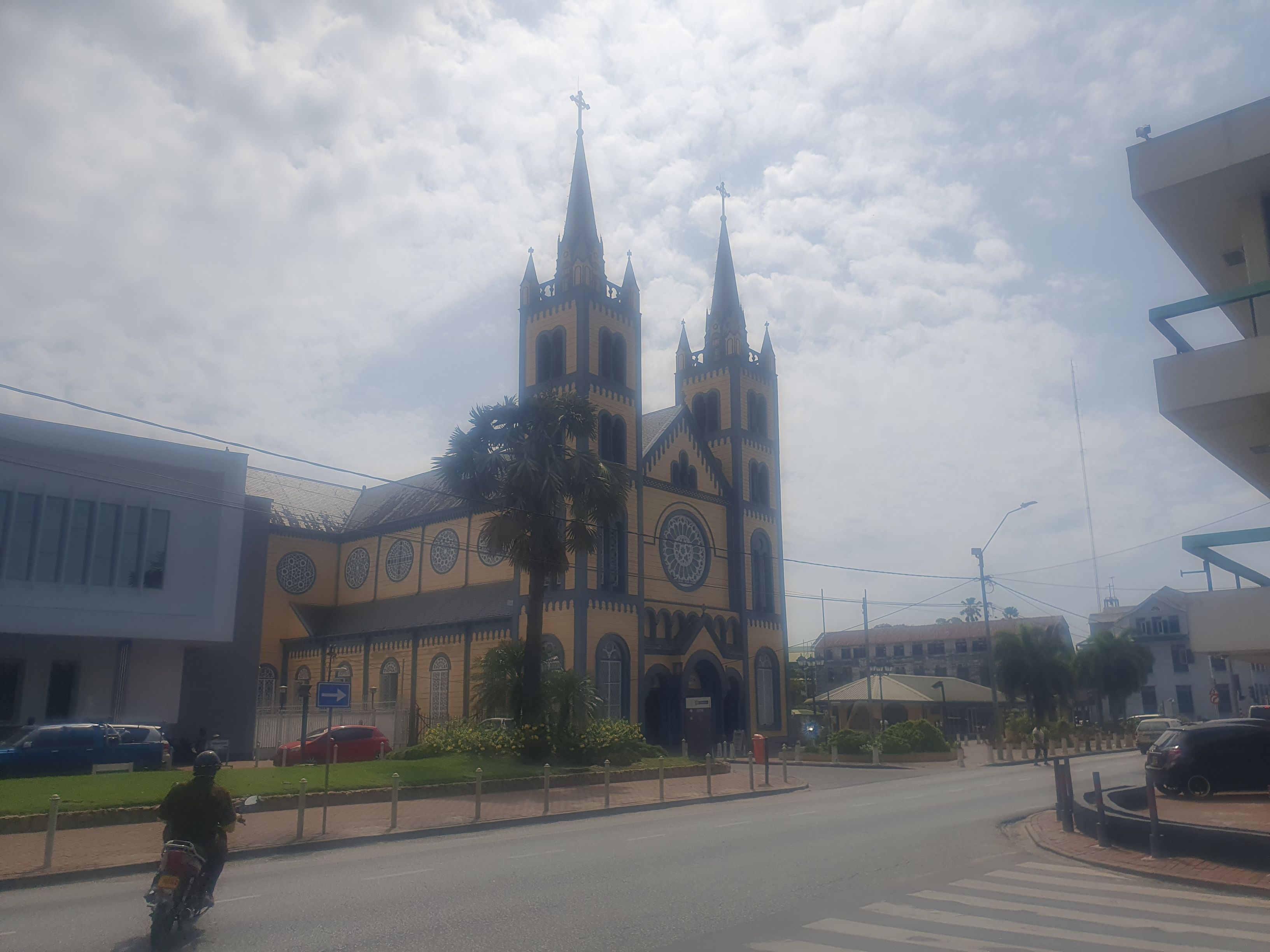

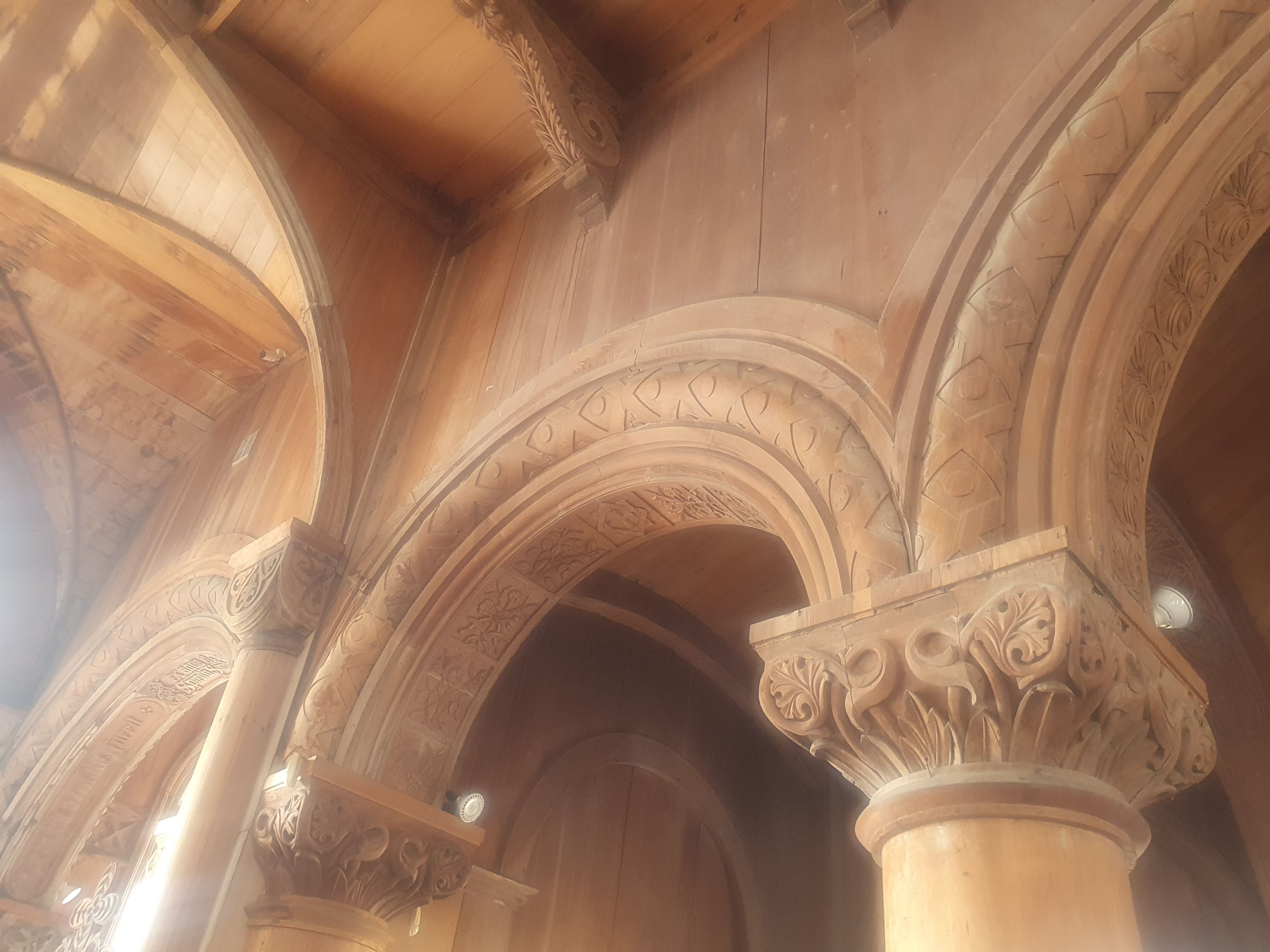

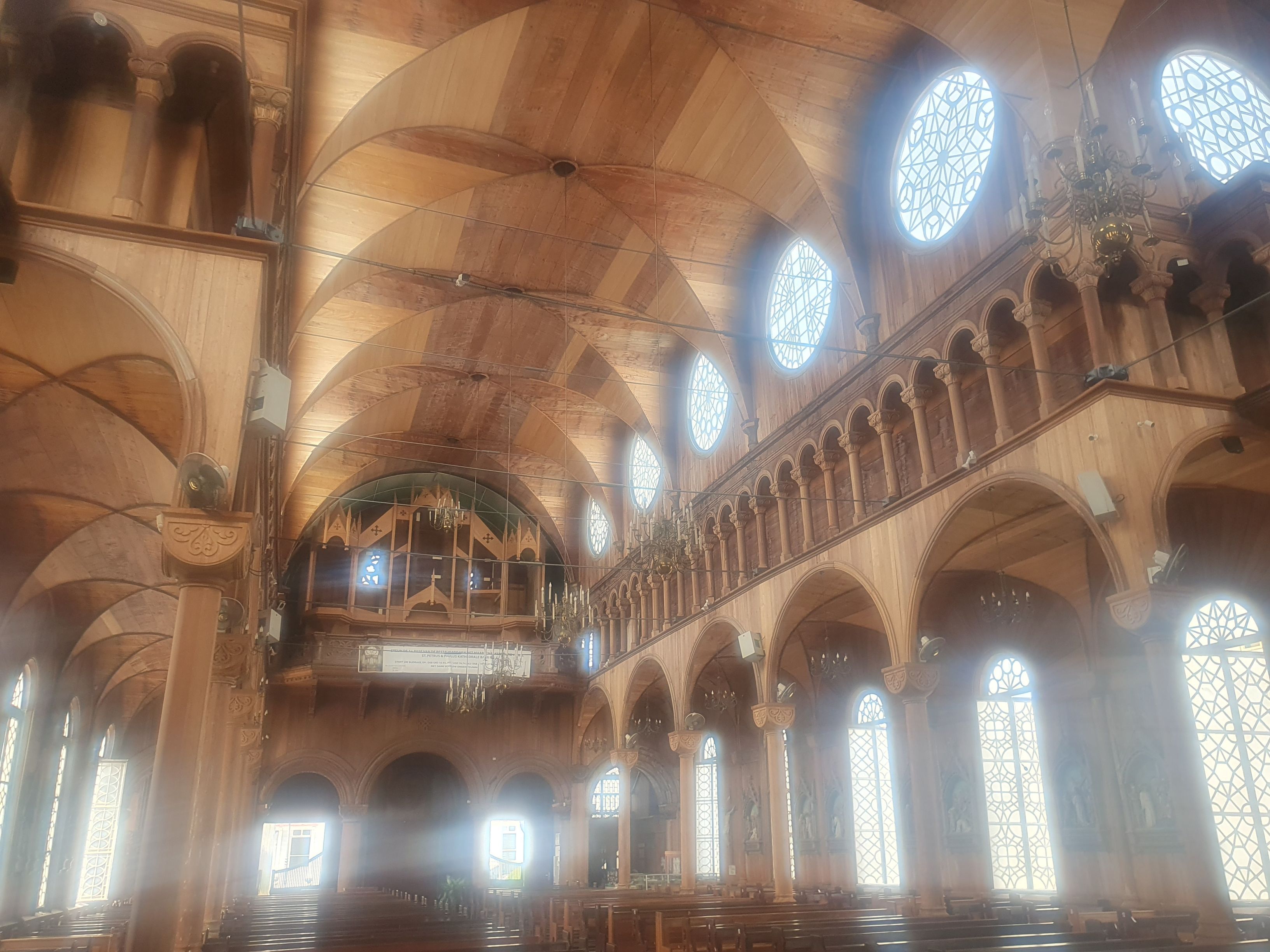

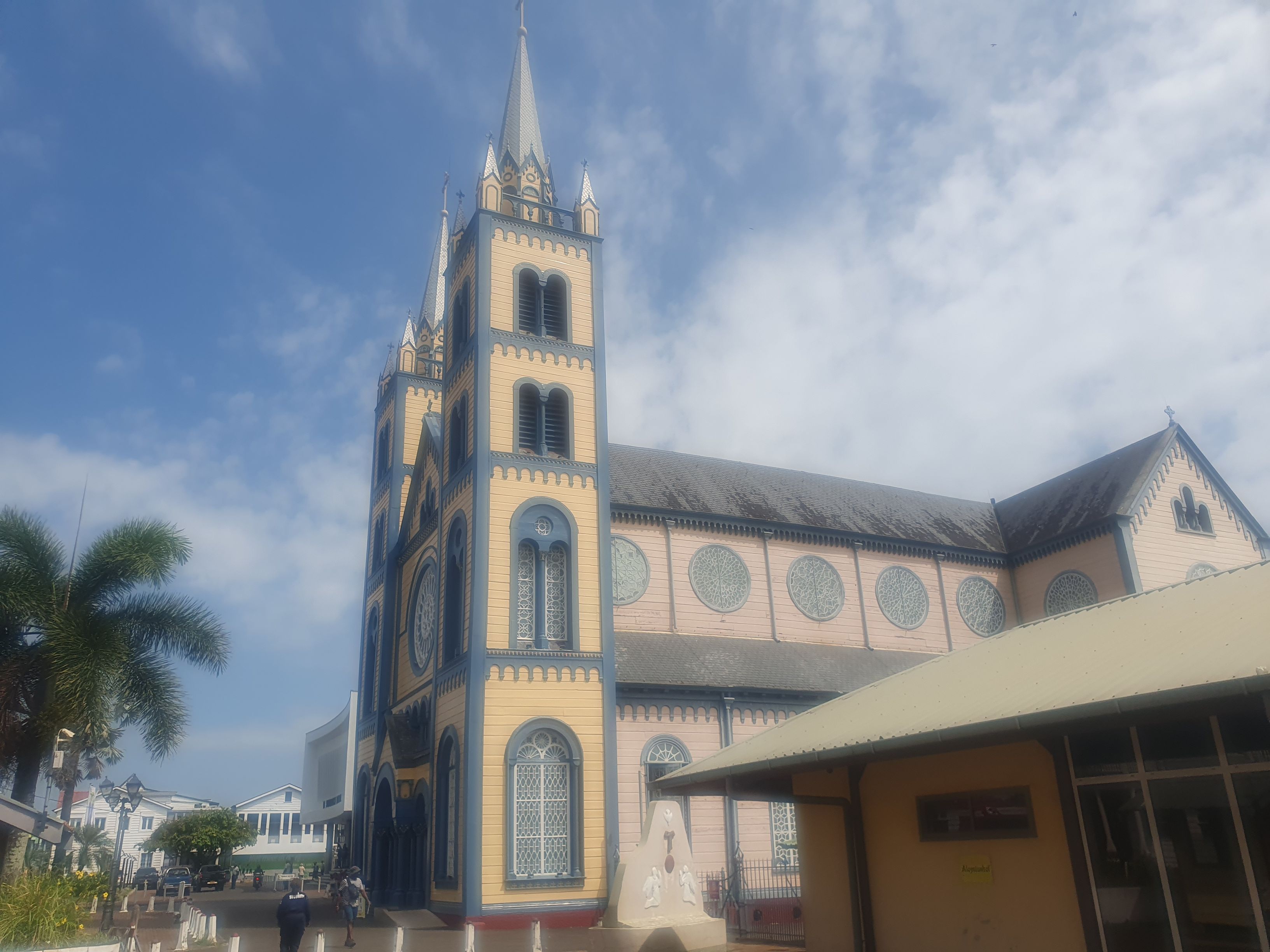
After a dose of culture, it's time for nature - we move on to the beautiful palm park. The place looks very well-maintained, but supposedly it's better not to wander here at night. Fortunately, it's the middle of the day, and the playground is occupied by normal families with children, so we join them. The charming cafes serve delicious coffee.
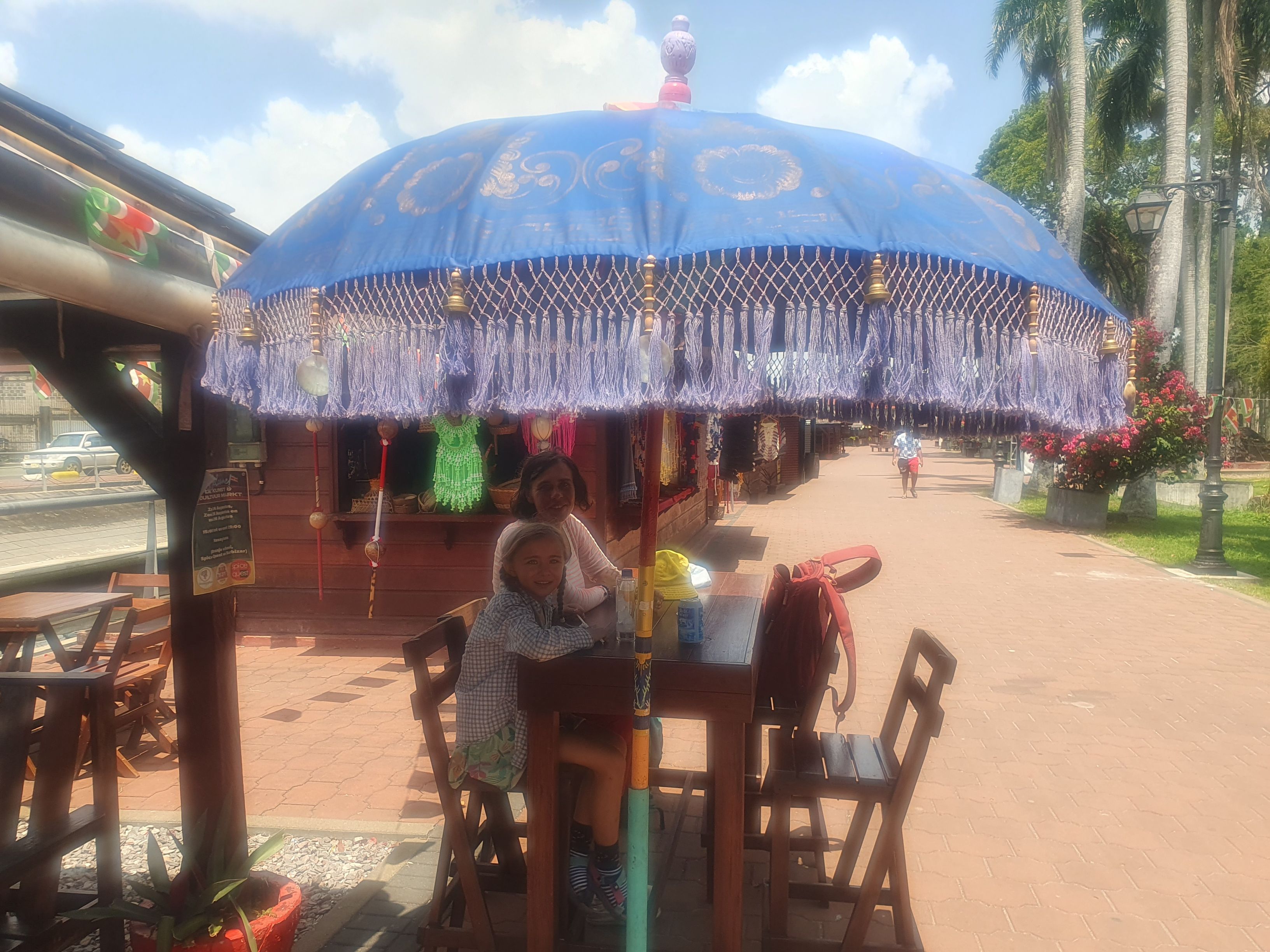
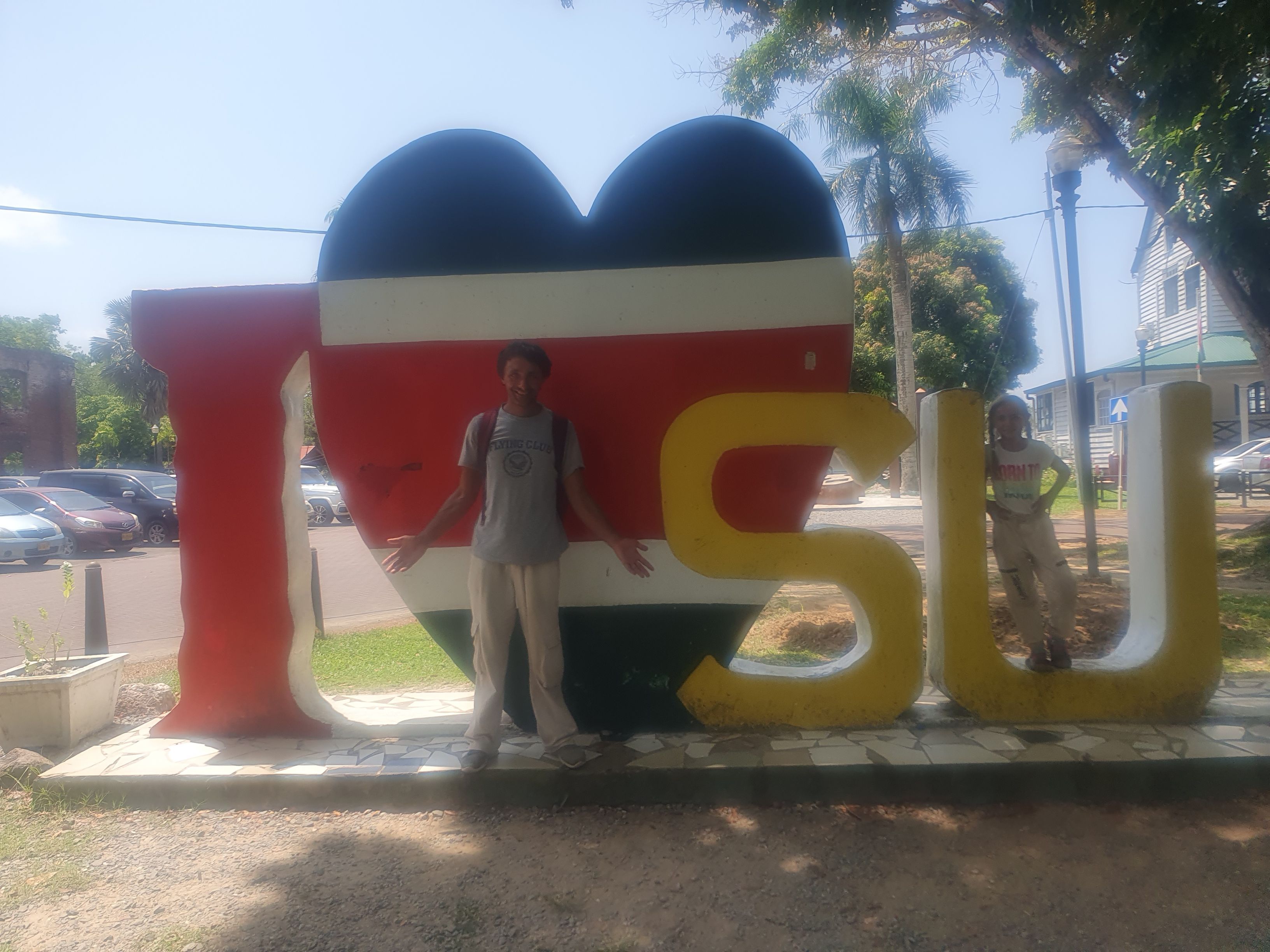
After half an hour, hunger drives us to a restaurant recommended by internet users - indeed, the selection of dishes is not large, but everything is delicious and inexpensive. We still want to visit Fort Zeelandia, but unfortunately, like many institutions in Suriname, the museum is only open until 14:00.
We return to Domburg the same way we came, by a local bus. State transport exists and operates, but there are fewer buses than passengers, so private initiative has room to flourish. More and less aged, fancifully stickered minibusses transport those interested for reasonable fees. Each bus has some motto written on it. Our favorite was "Don't bark if you can't bite," but we didn't catch a photo of it.

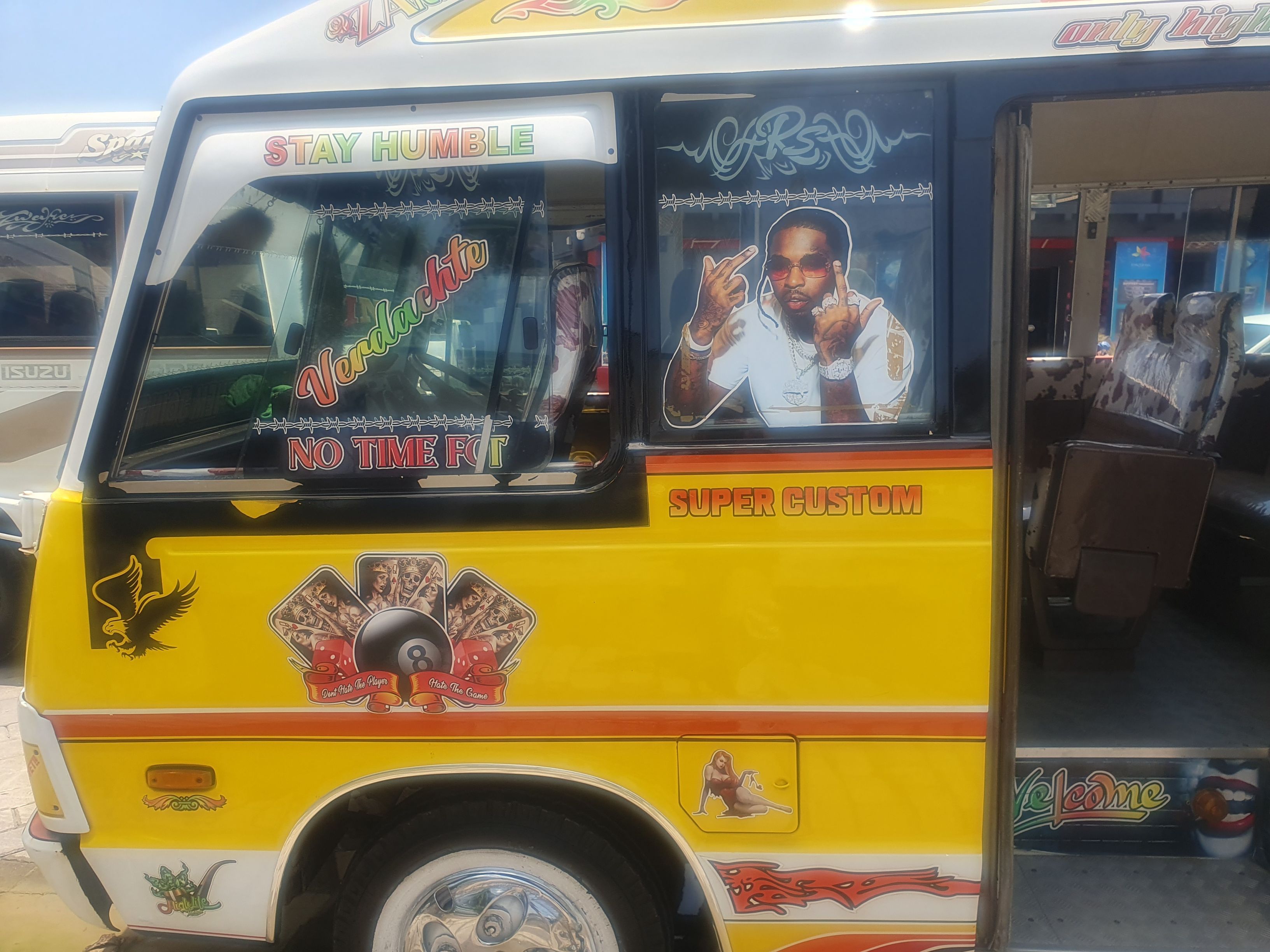



Officially, a bus should accommodate 26 or 30 passengers, but as many are packed in as possible. Usually, due to the heat, the windows and doors remain open the entire route, so it happens that a passenger stands right by the door when the bus is traveling at 60 km per hour. We wonder how often someone falls out, but probably not too often, as no one seems concerned about such a situation. Drivers make the journey more pleasant for themselves and others with loud music, honking, and sometimes even the opportunity to observe a pet - in one of the buses, a bird lives in a cage. We are pleasantly surprised by the honest treatment of foreigners - we hand the driver a bill right after boarding the bus. We should get about 10 PLN change, but nothing. We are a bit upset but realize that we acted against custom; locals pay when getting off, so it's fine, a small loss. At the final station, we get a pleasant surprise - the driver absolutely remembered he had already received the money and has the change waiting for us.
State buses have some schedule, though we manage to find only part of it at the station in the capital. We find out from a friend what time we can expect the morning bus in Domburg, as it's posted nowhere. Besides, there's no point in sticking to the schedule, as if the bus is full, it departs earlier, even if there's still a quarter of an hour until the official departure. Private buses only depart when they are fully filled. Since Domburg is small, not much runs here, so when we find our bus, we sit politely inside and guard our seats. Locals are more relaxed - many people enter the bus, leave a bag on the seat, and leave. When the driver appears, everyone suddenly shows up in their place.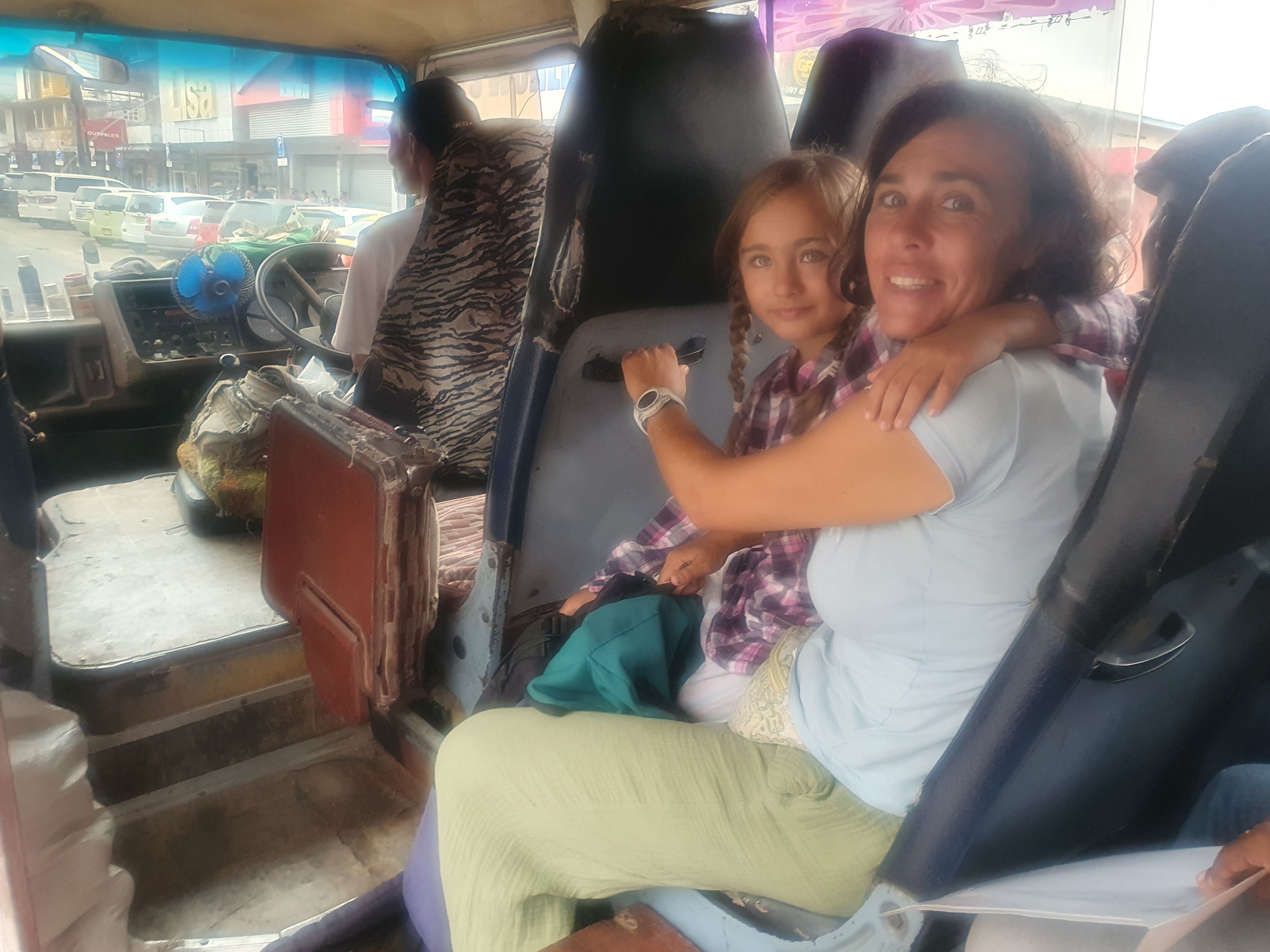
During the next visit to the capital, we visit the market again - this time we manage to hunt down jackfruit, which we already know and like. For some reason this one is less sticky than the previous one. We also buy star apples to try.
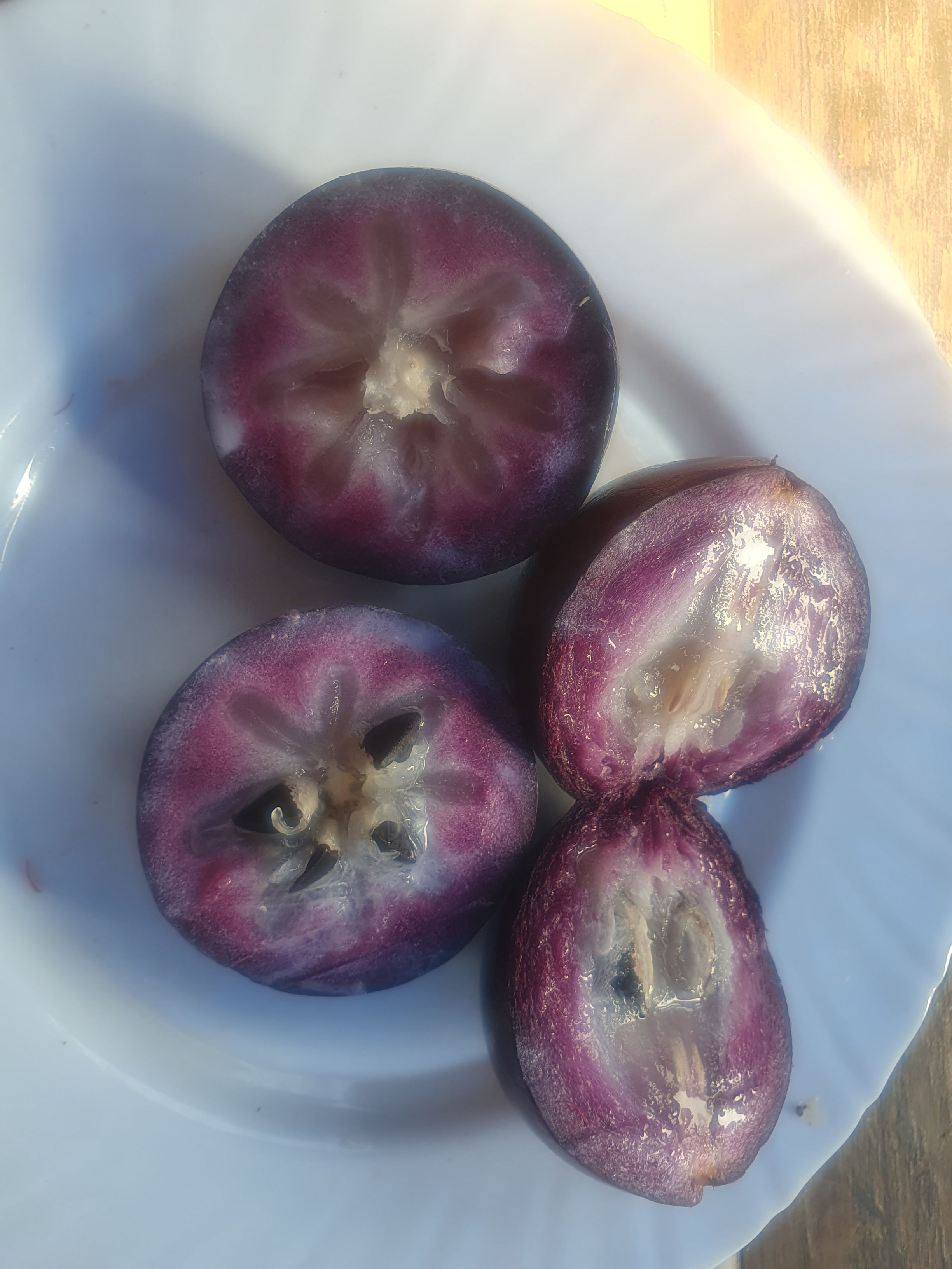
It's really nice that all the vendors we buy from speak English and are eager to explain how to eat fruits unknown to us. At the market, as well as other places in the capital, we only visited during the day and felt 100% safe. Once at the market, when a ragged person approached asking for money, all the vendors were agitated that he was scaring a tourist and shooed him away.
It's a bit surprising to see security guards with long guns at all gold buying points. There must be something going on in a country struggling with issues of illegal mining.

We also manage to reach Fort Zeelandia - the museum is small and described only in Dutch, but Kamie likes it a lot, so we are pleased as well.

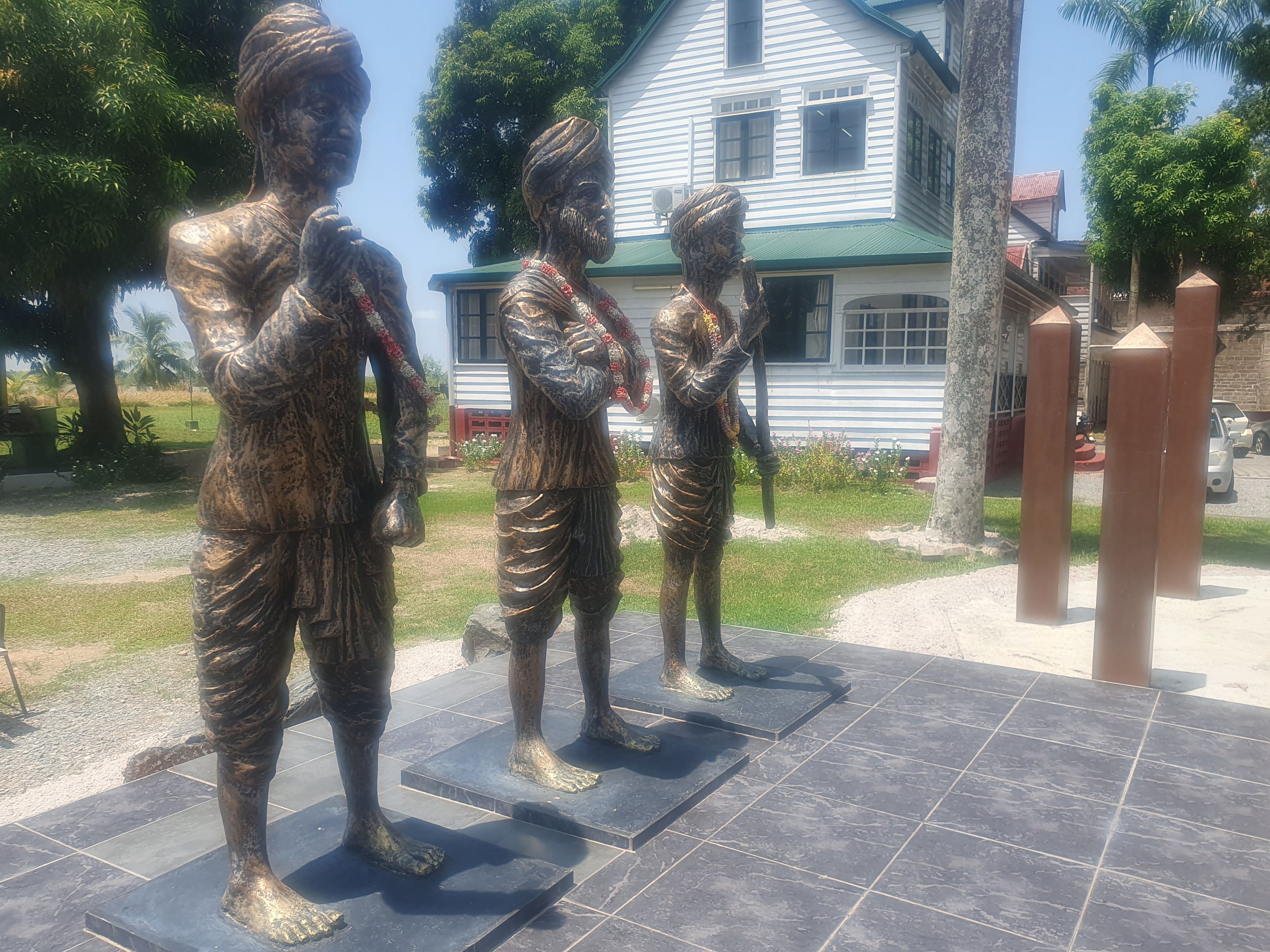

Suriname is very ethnically mixed - when slavery was abolished, Dutch planters began bringing in workers from Asia - mainly from their then-colony Java, as well as India and China. These newcomers settled in the new land, and it is difficult to even say they are minorities, as there are as many of them as there are Amerindians, Dutch, and descendants of African slaves. Different ethnic groups live alongside each other quite harmoniously, though separately - most have retained their religion and customs. Mixed marriages occur, but not as often as one might expect. As a result, there is a large number of small Hindu temples, mosques, and Christian churches of various denominations scattered throughout the area.

We take the opportunity to go on a trip to the largest Hindu center in Suriname - on the meadows by the ocean stands a temple and a place for cremation. Wilco, our neighbor from the boat, spoke to us about this place with enthusiasm. Indeed, there are many statues here, fabulously colorful and large. We do not stay for the open-air pyre cremation. The locals showed us the place (about a kilometer from the temple itself). Apparently, the cremation takes place almost every day except weekends at 2:00 PM, and it is a spiritual experience where various offerings are given to the deceased, but we do not want to make a spectacle of the funeral of someone we do not know (photos can be found on Google).


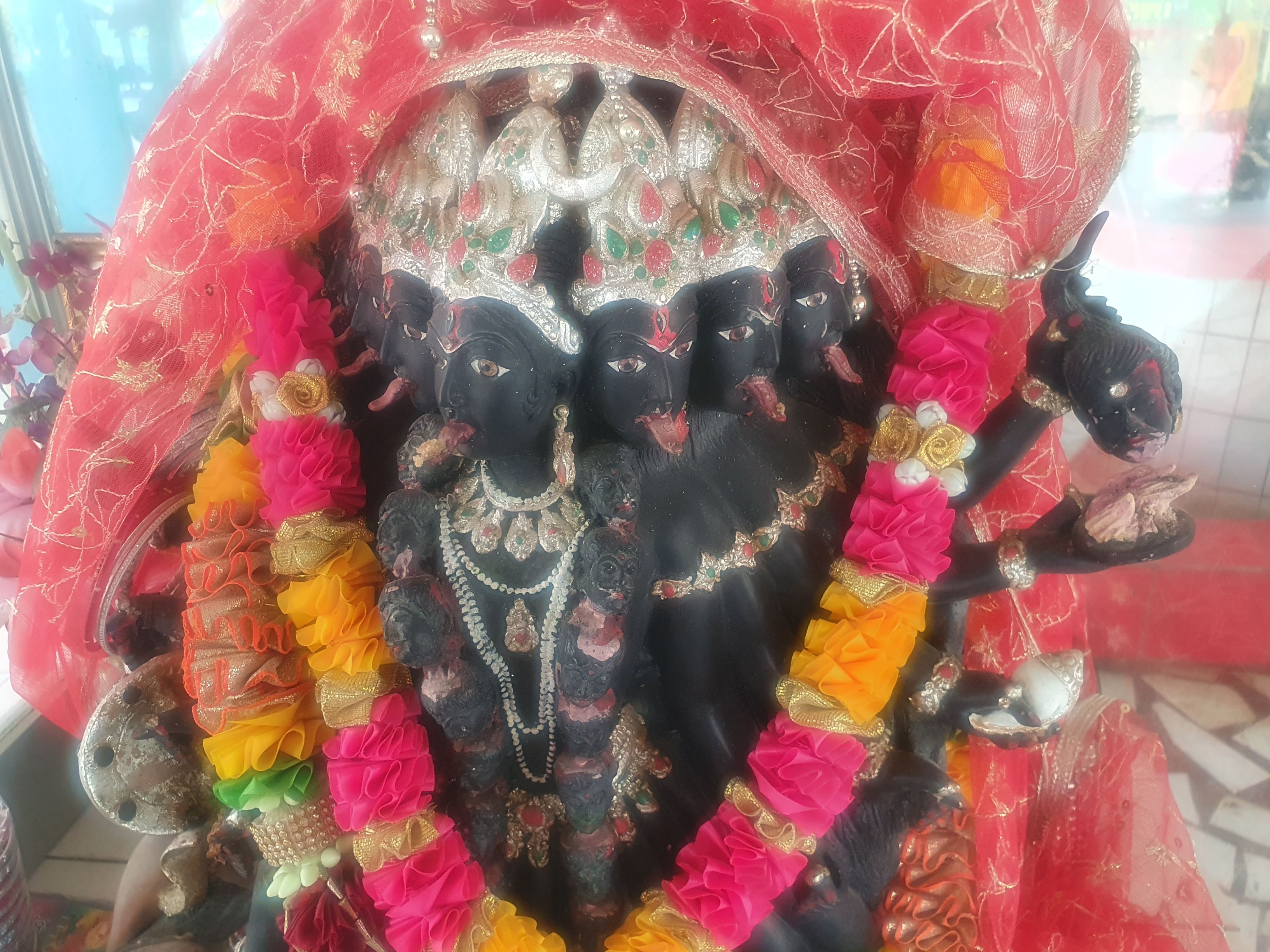
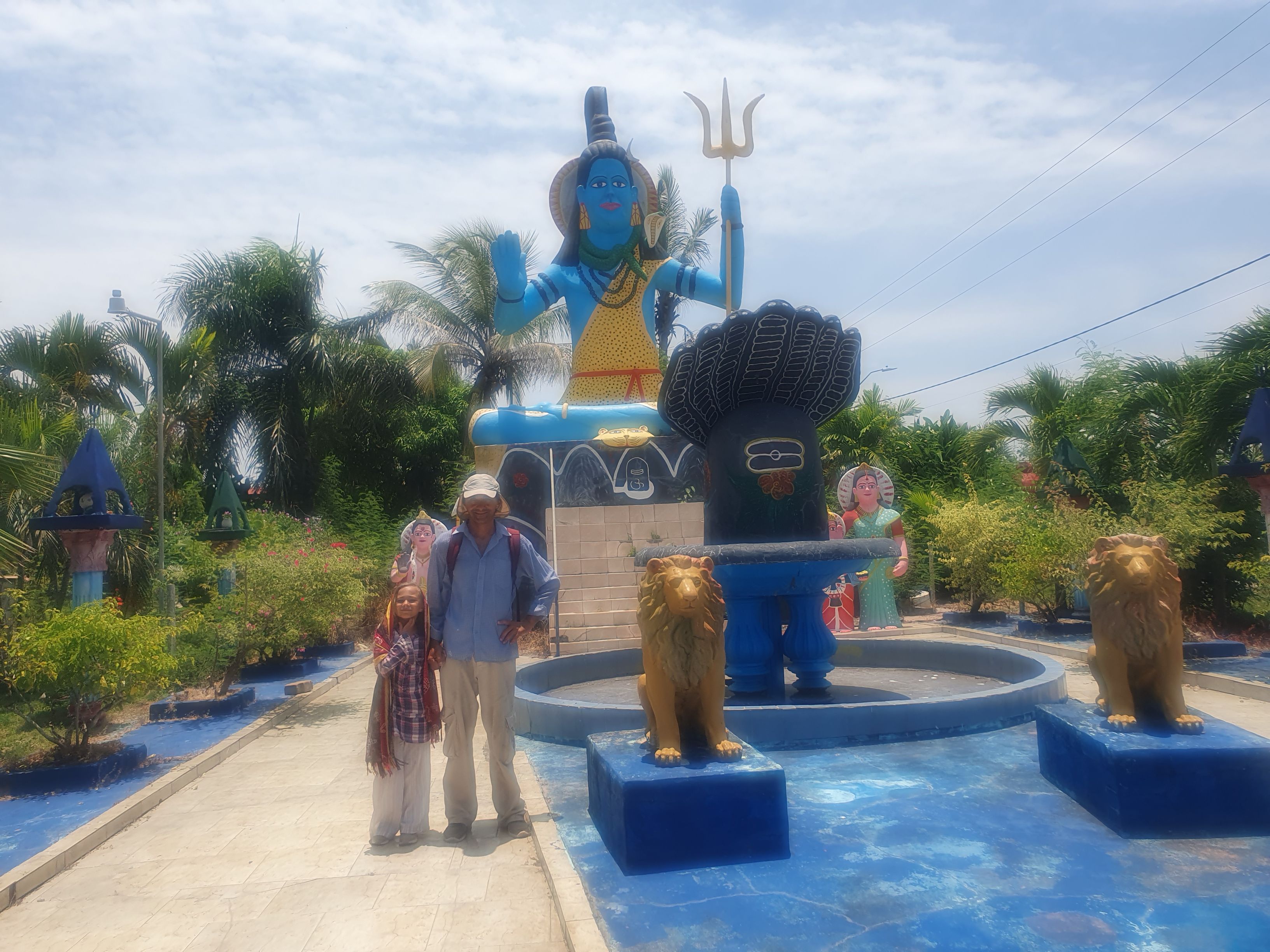

To return from the temple to the center of Paramaribo, we need to walk a few kilometers to the bus stop. Before we walk a few hundred meters, a guy stops and offers us a ride - as he emphasizes, for free. He was born here, then lived for many years in Egypt, where his father is from, but returned to Suriname as an adult. He conducts some lectures on Islam for one of the mosques and also works part-time as a taxi driver. He gives us a ride because charity is a Muslim's duty, and he's heading that way anyway. We are very grateful to him because he saved us from a long walk in the heat on a road without a shoulder.
One day, our acquaintance, the taxi driver Hari, informs us that there will be a car show in Domburg in the evening - we don't fully understand what it's about, but since the event is 5 minutes away from the marina, we decide to see what it’s about. It turns out that there are a few sports cars on display, but the highlight of the program is the sound systems installed in the cars. You can purchase impressively illuminated speakers that take up the entire trunk. Equipped with such a car, you park by the river, open the trunk, and let the whole area enjoy the music within a radius of many kilometers. What’s worse is that fans of loud sounds also arrive at adjacent parking lots, usually with a different taste in music and playing something else. The fun lies in seeing who can drown out whom. Luckily for us, these "musical battles" take place in Domburg at most once a week, but people from the entire area come to the show and watch the noise-making tools with interest.
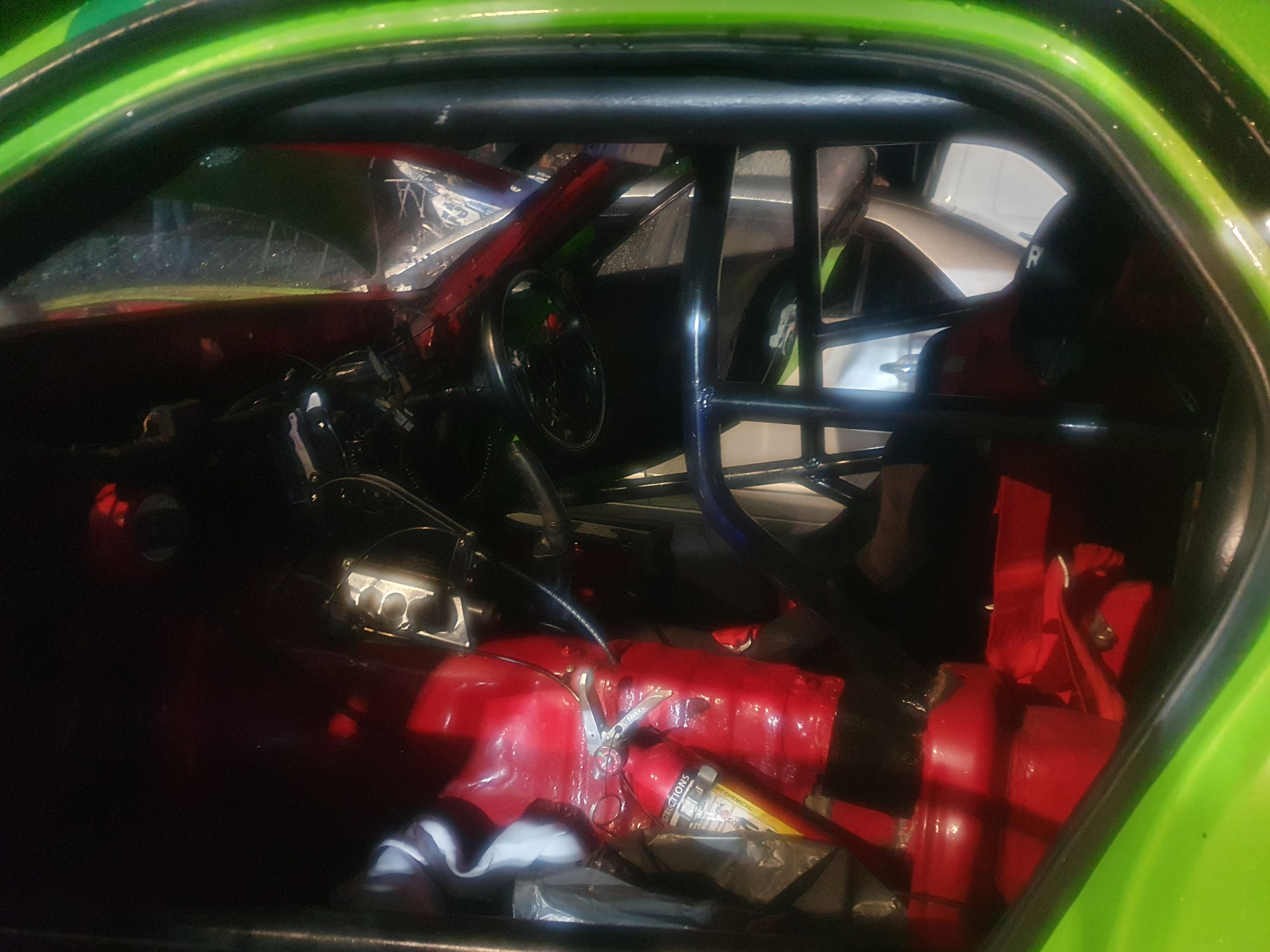



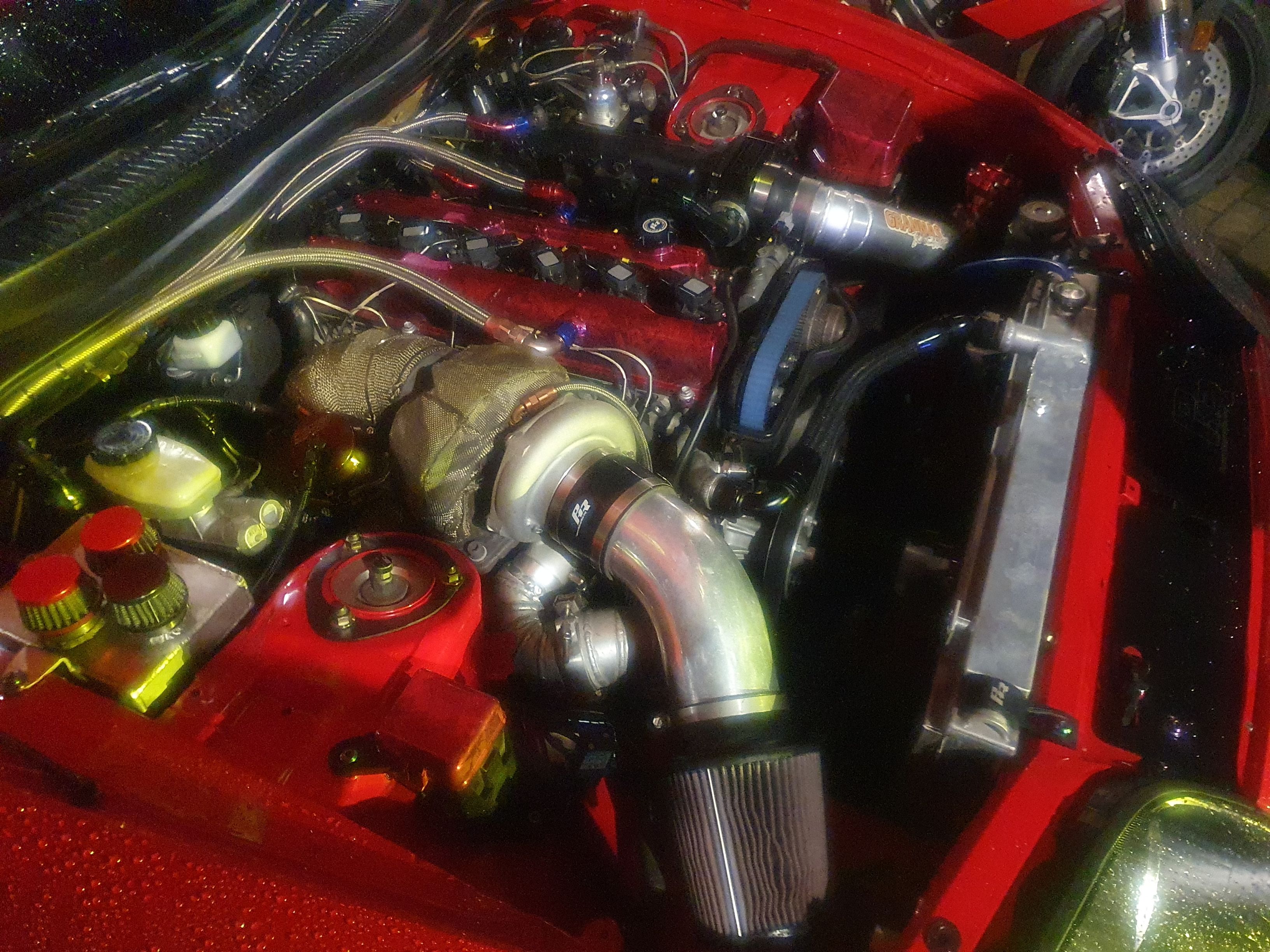
When we were preparing to sail through the jungle, we were warned that at night we'd hear sounds "as if the gates of hell had opened." However, there's no need to panic; it's just the howler monkeys. Zuza expected high-pitched squeals and screams, but as dusk fell, the jungle was filled with bass humming interrupted by shouts. Kamilka claims these sounds are exactly what the Dementors make in the Harry Potter films. Although the sounds carried many kilometers, we were unable to spot the screaming animals. We were very surprised when we checked online to see what the culprits looked like. It turned out that these monkeys are actually quite small - ranging from 40 to 70 cm.
Our stay is extended because at the end of August, plane tickets are twice as expensive. We are preparing the yacht for docking, taking some walks, and making more and more friends.
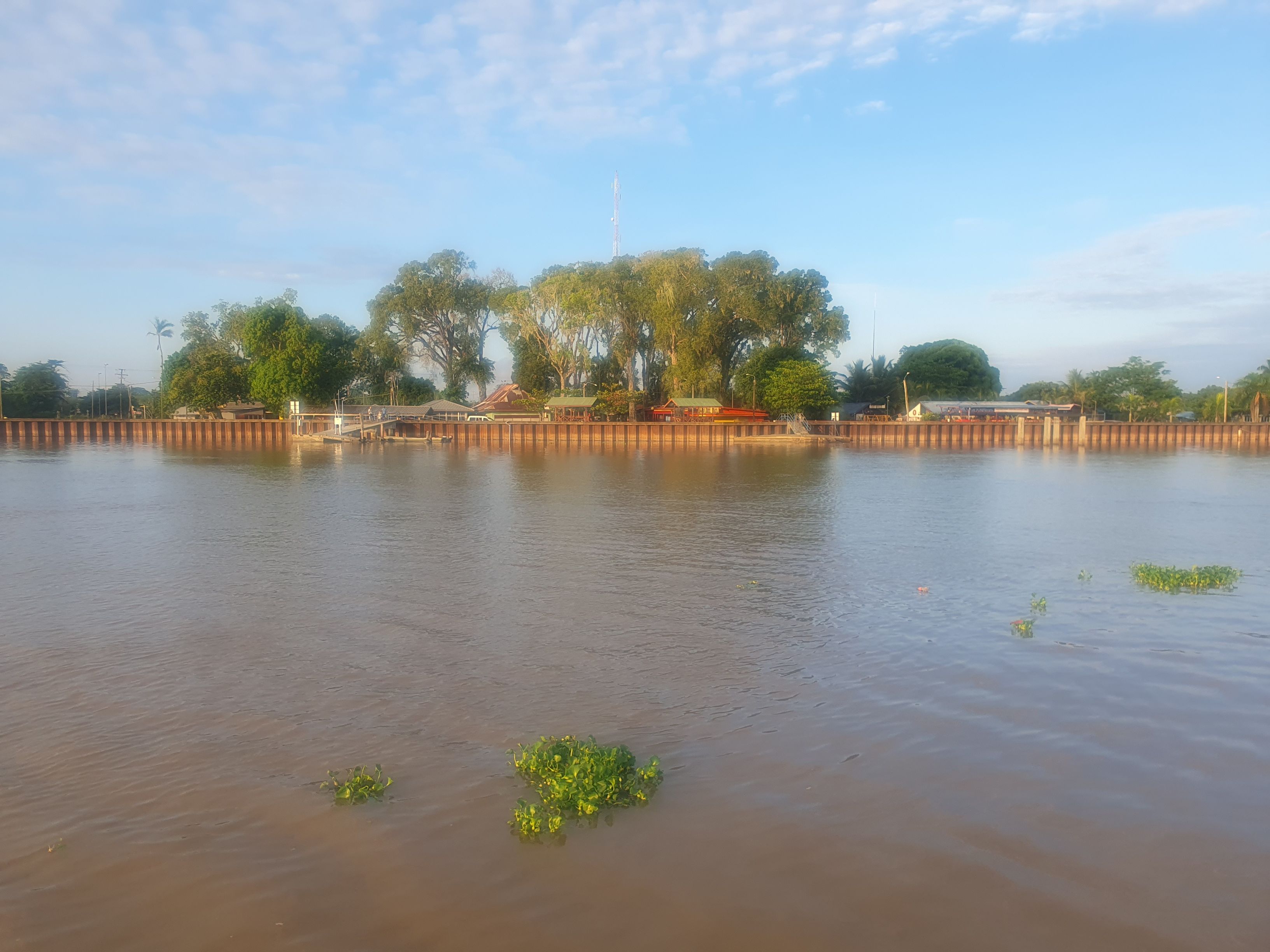
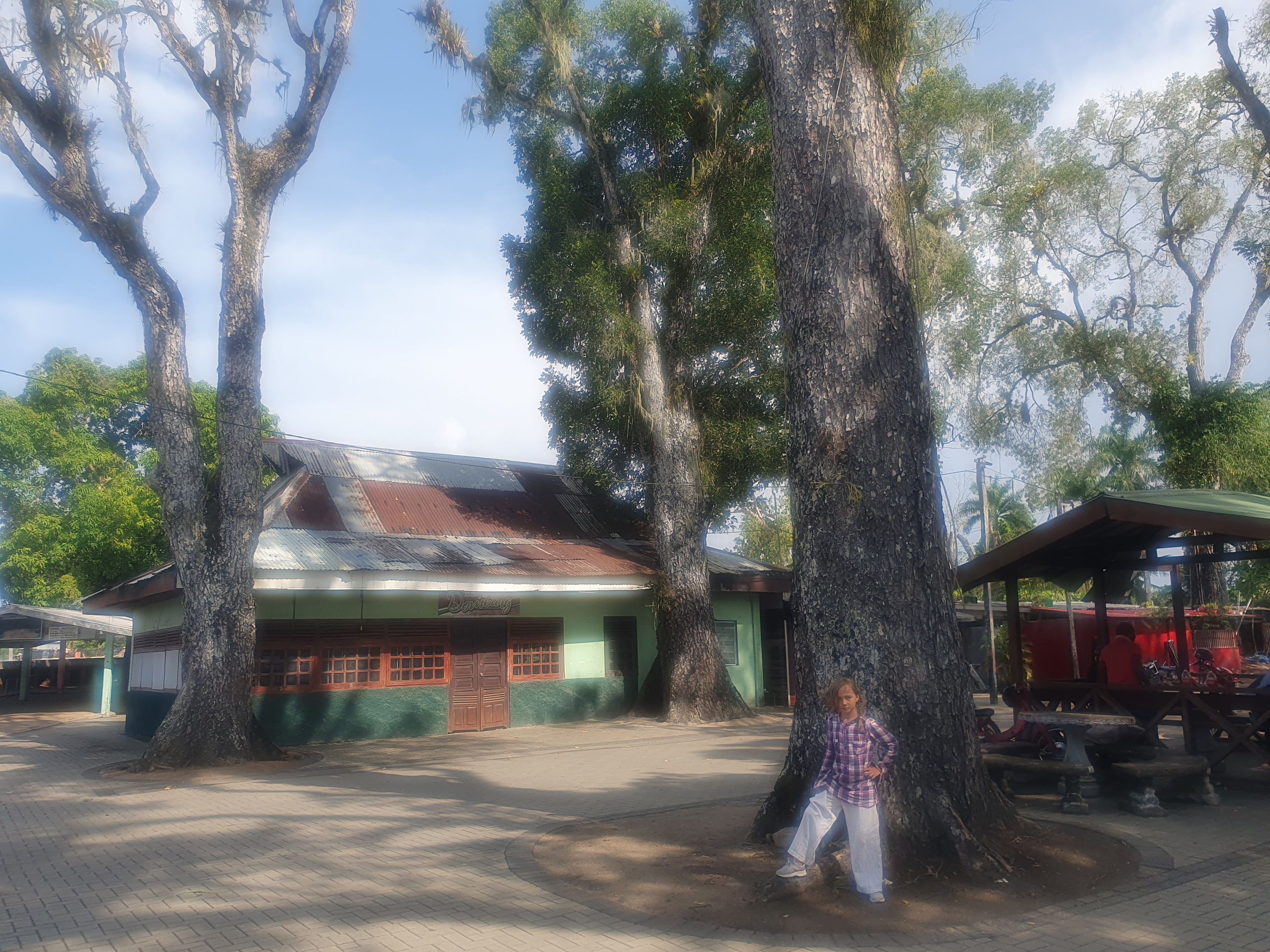
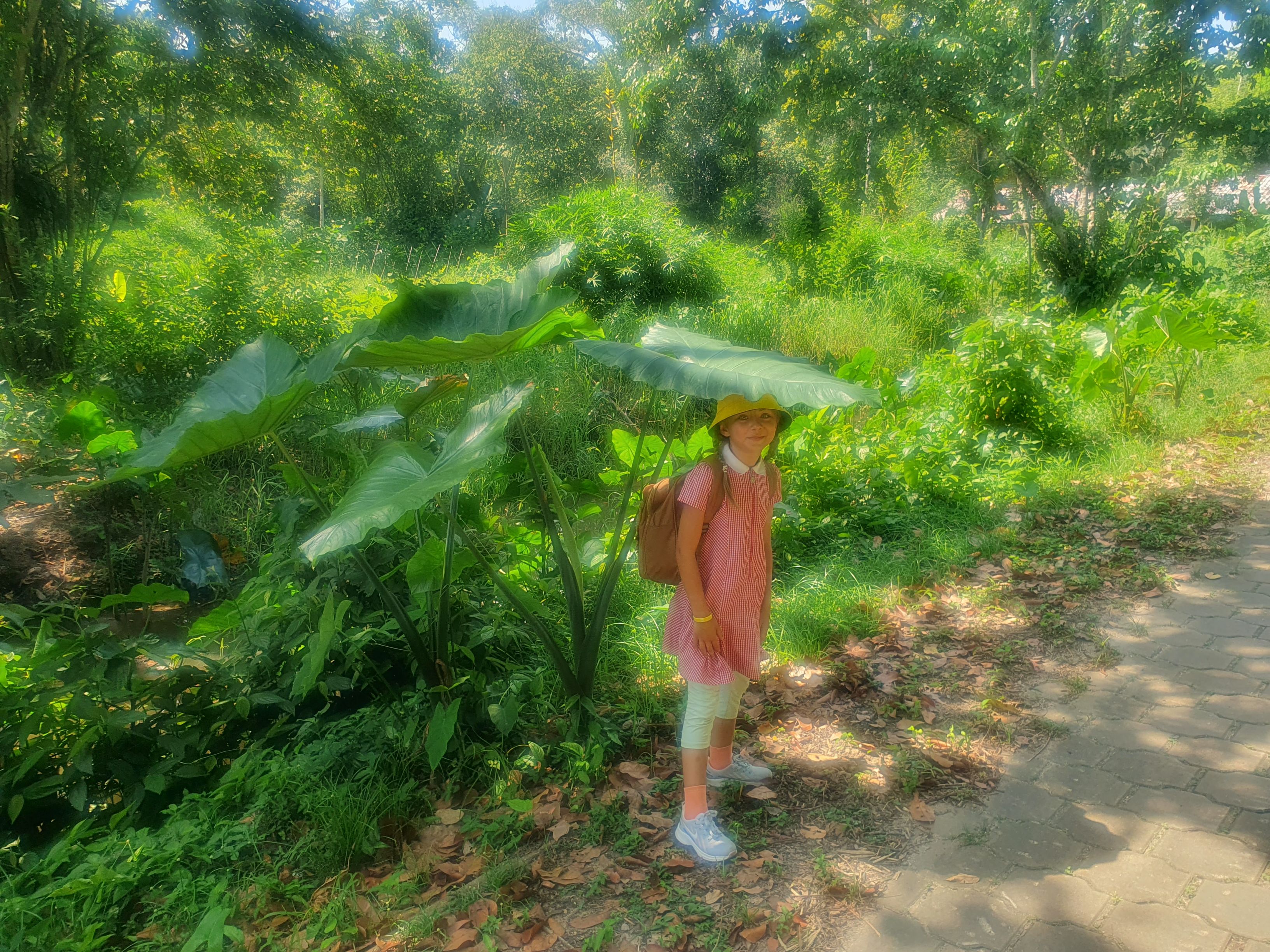
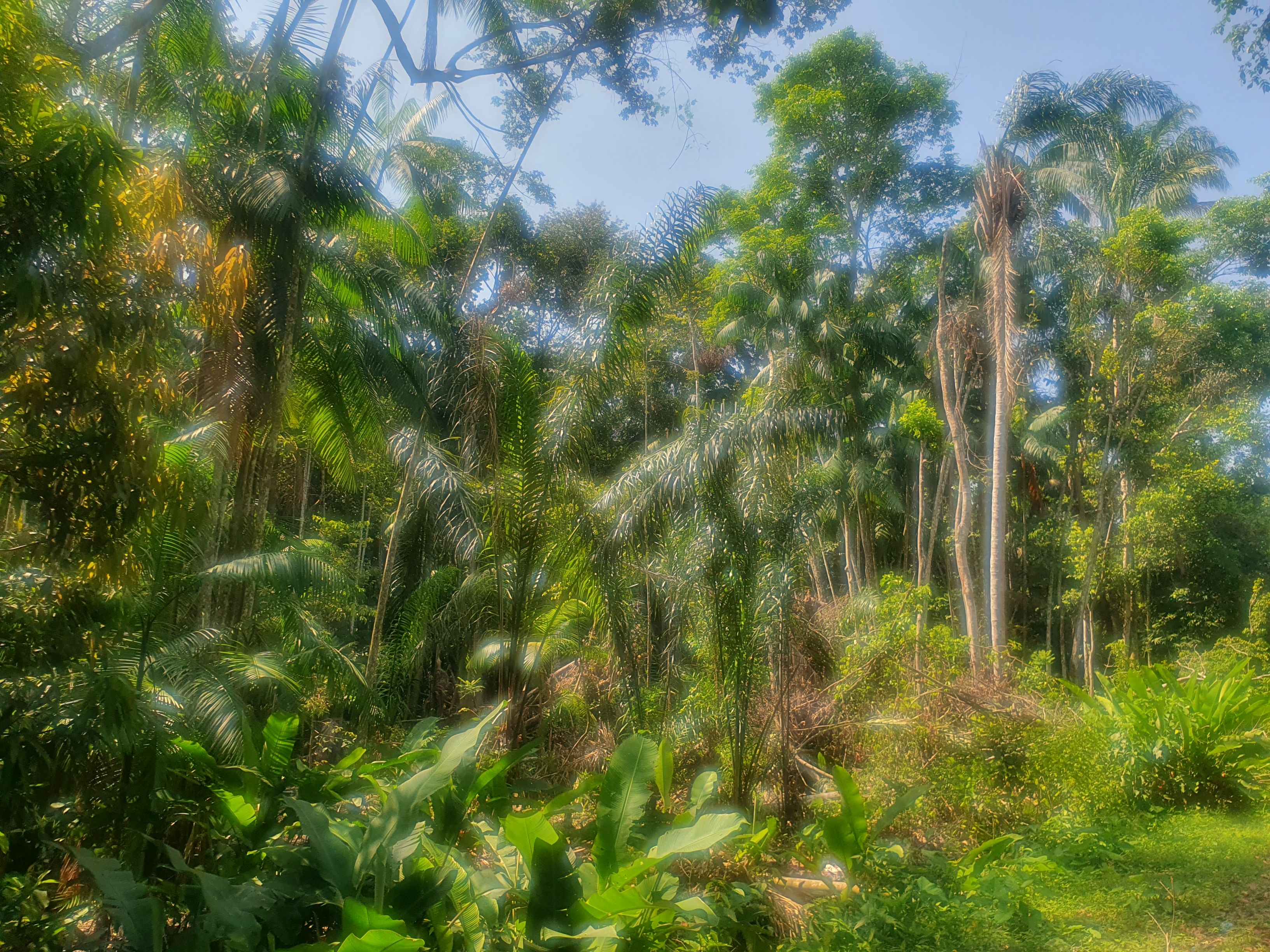
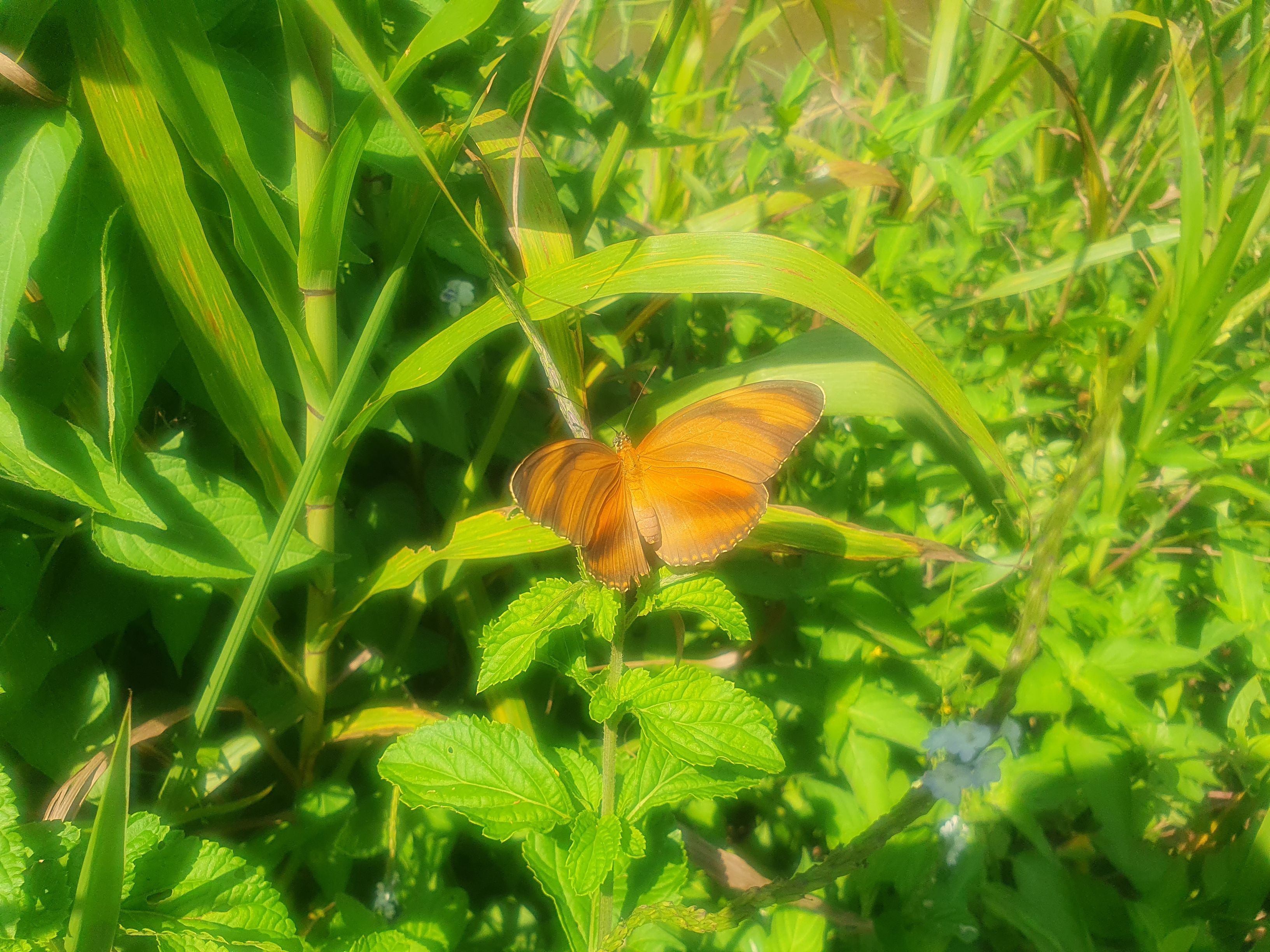

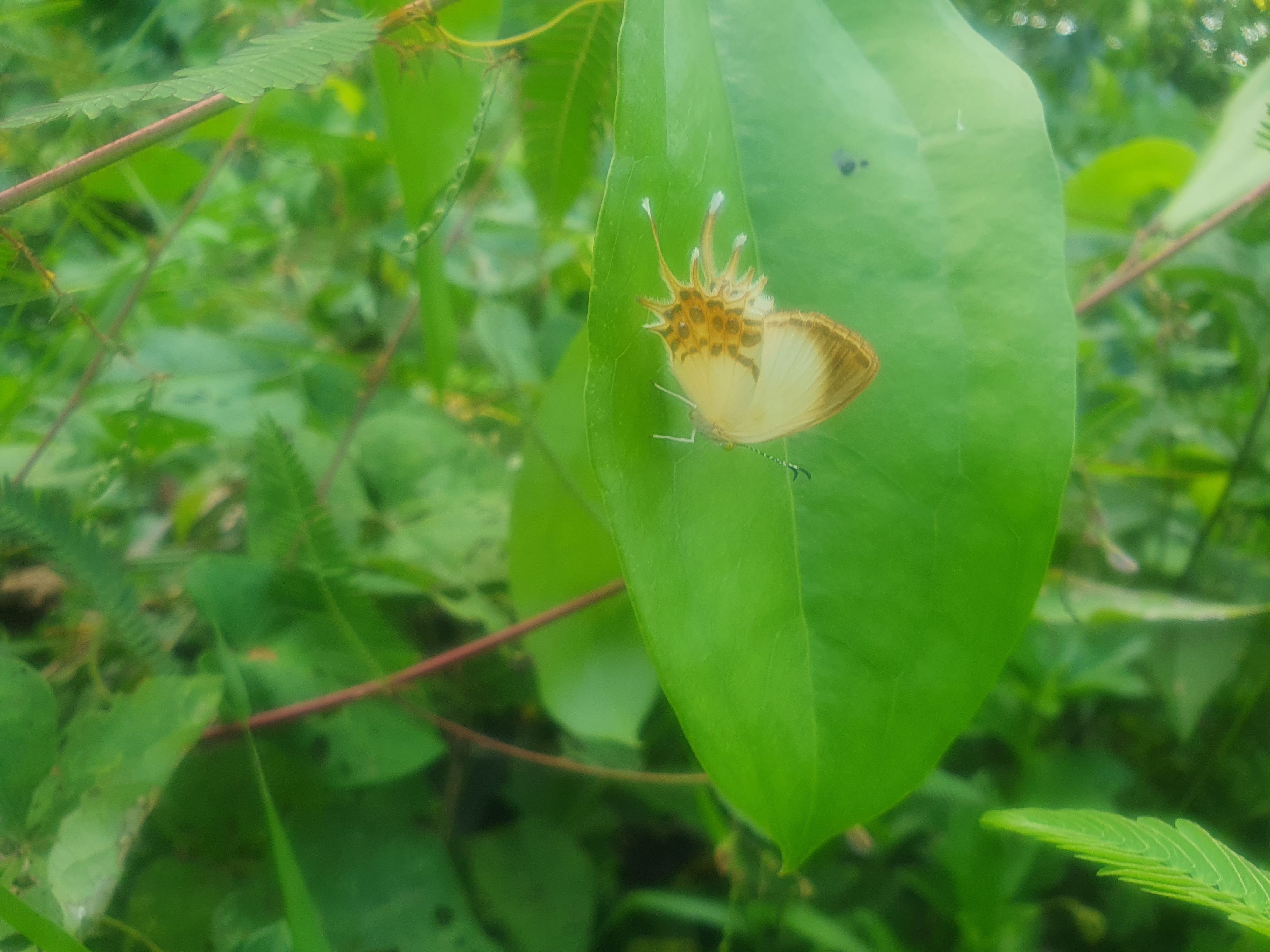
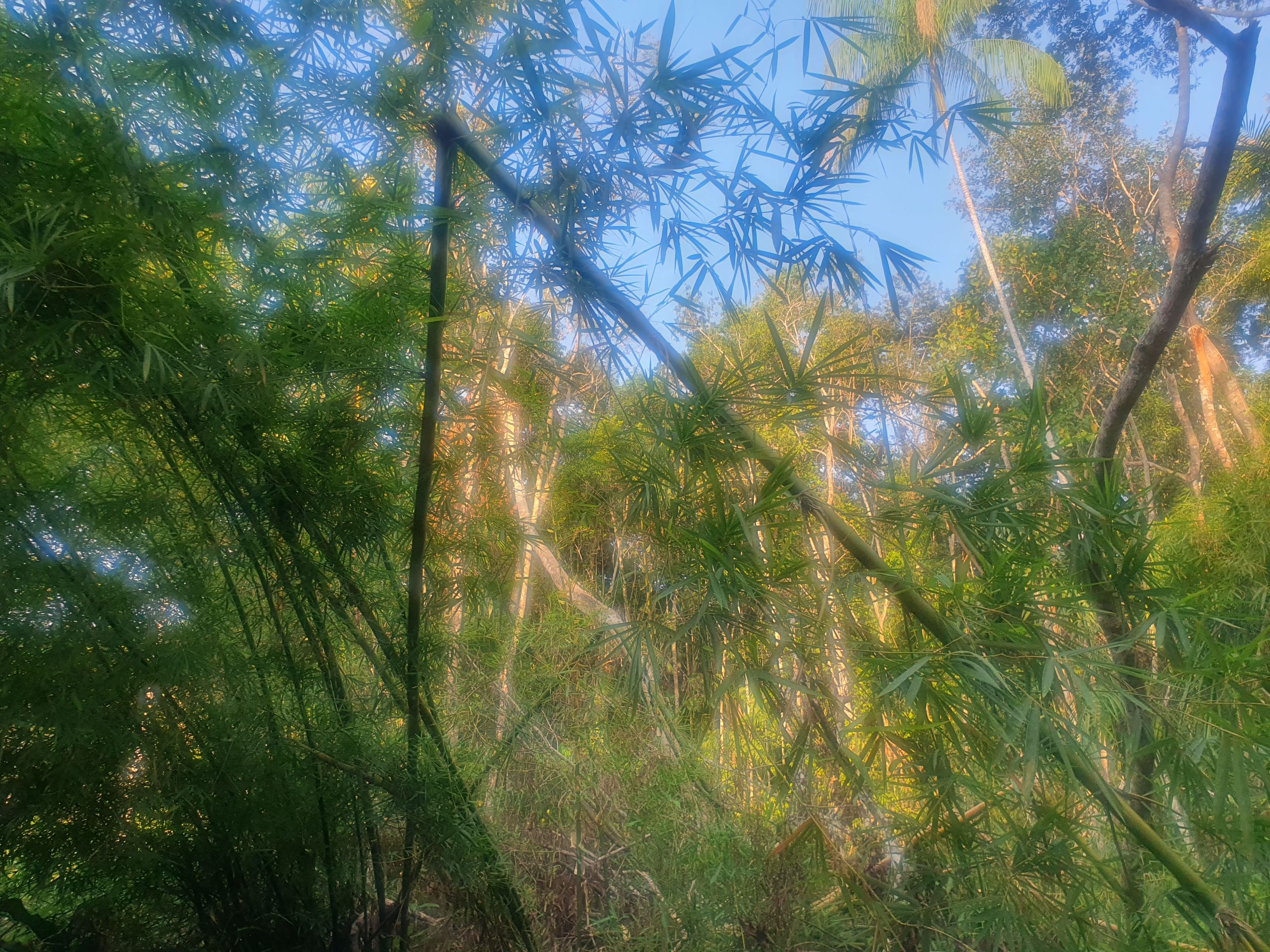
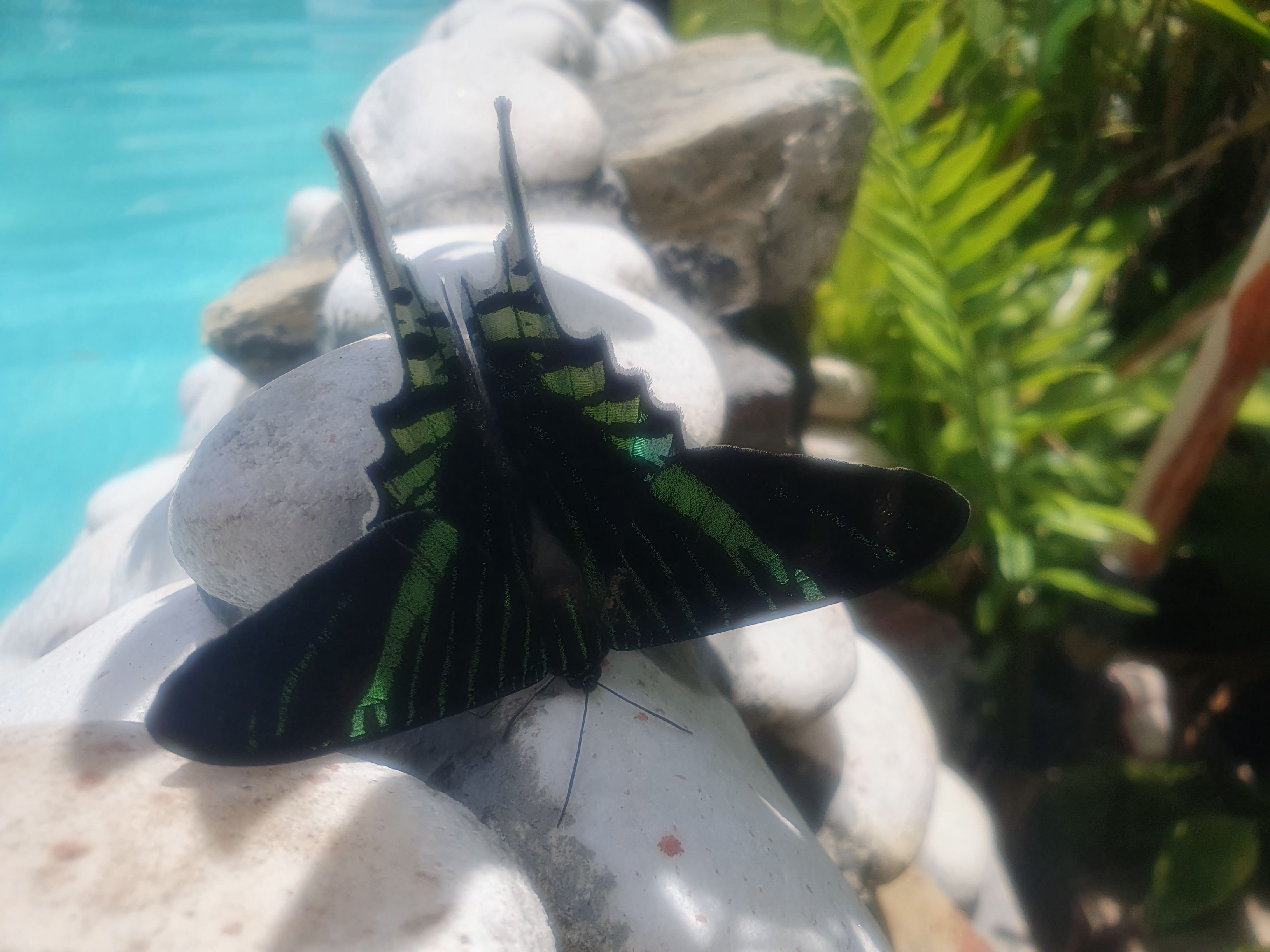
Recently, it has been raining more often, which we have quickly become accustomed to. This is also evident from the number of plants flowing from the canals into the river.


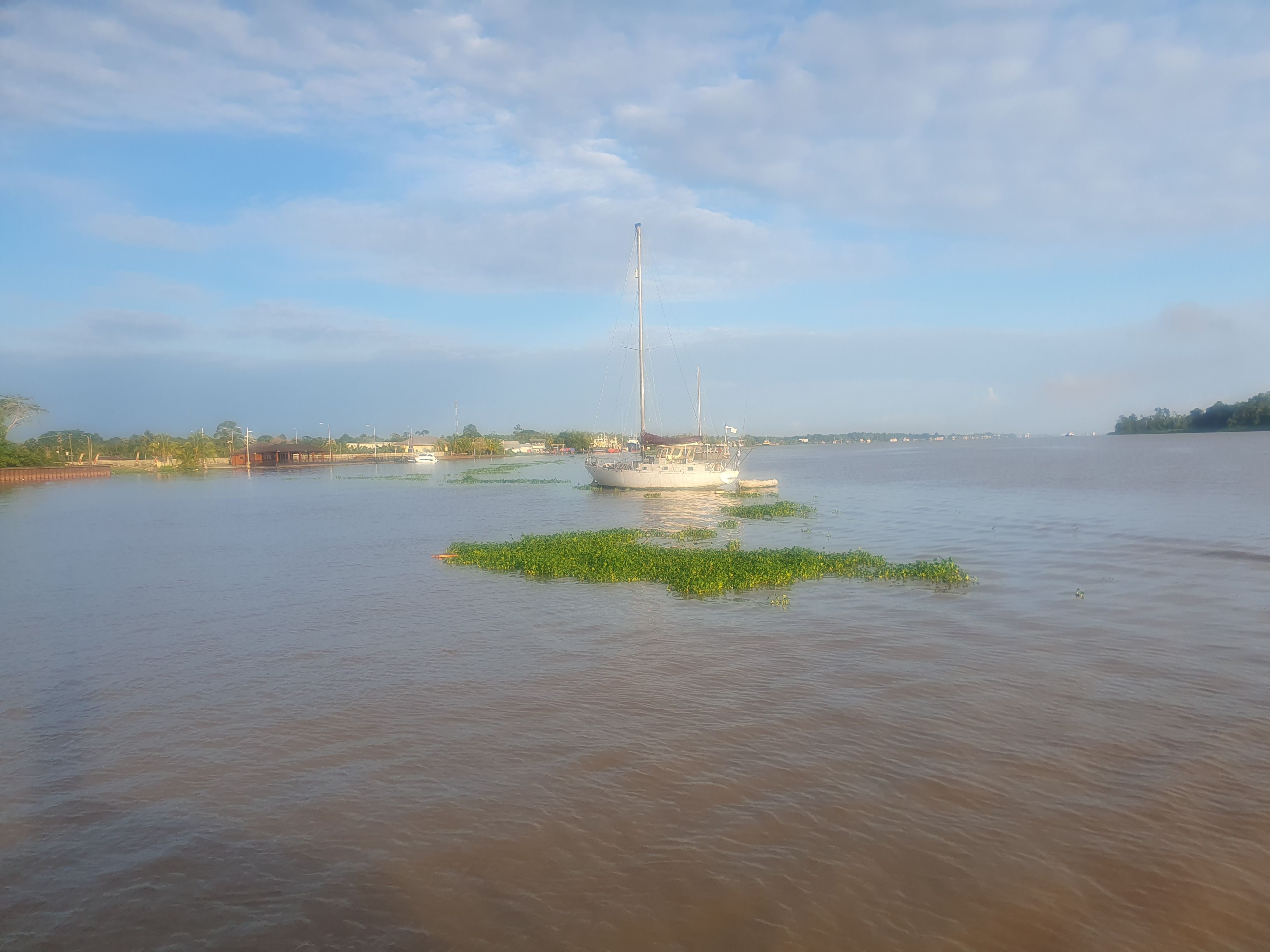

When we leave, our "second home" will be taken care of by Wilco, who permanently lives here on his boat. And in a few days, we will board a plane.


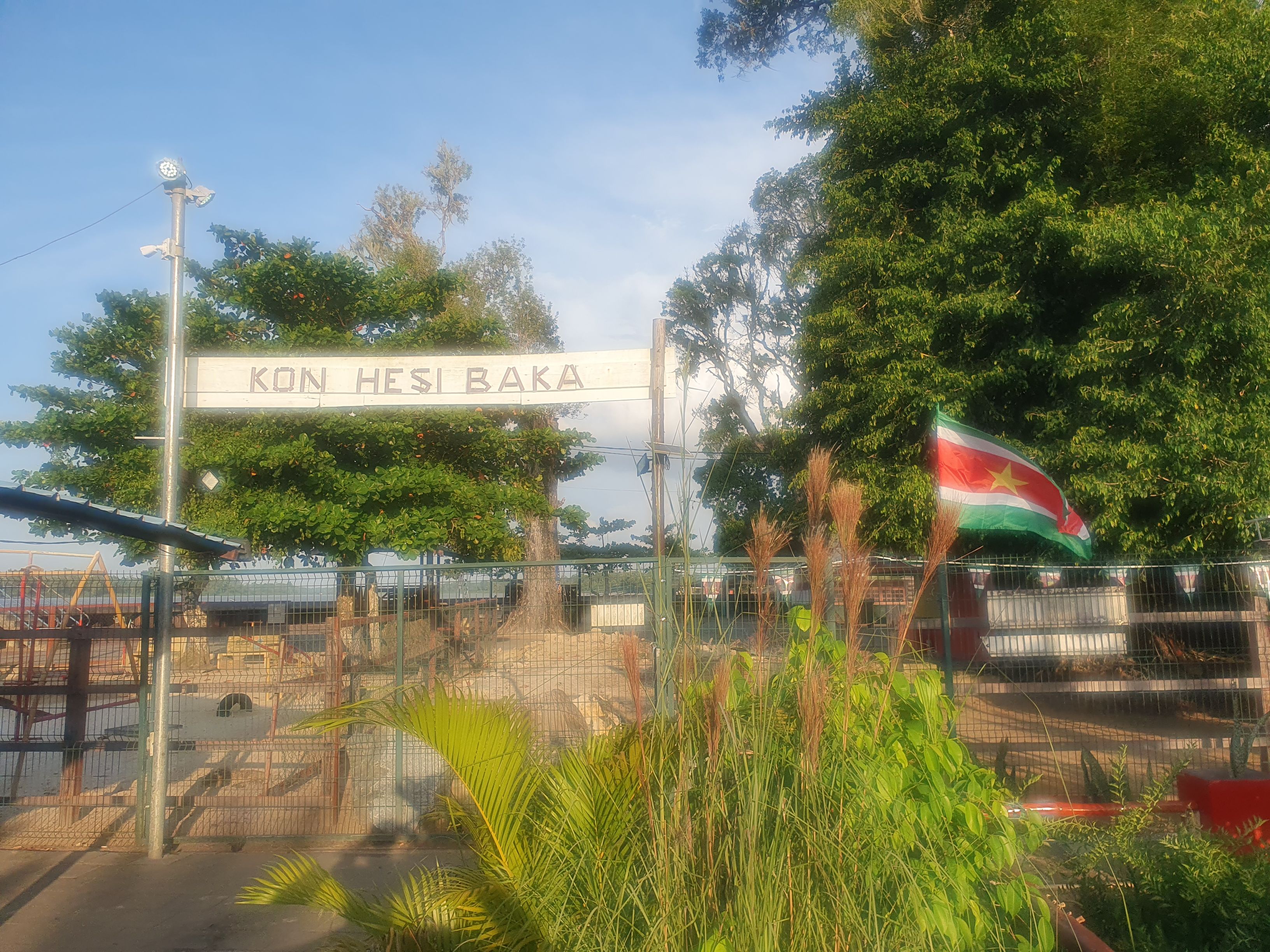
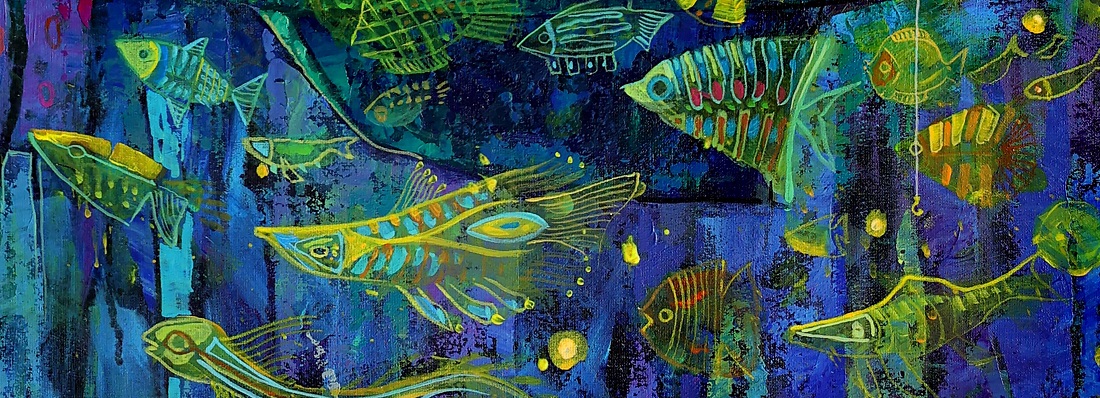
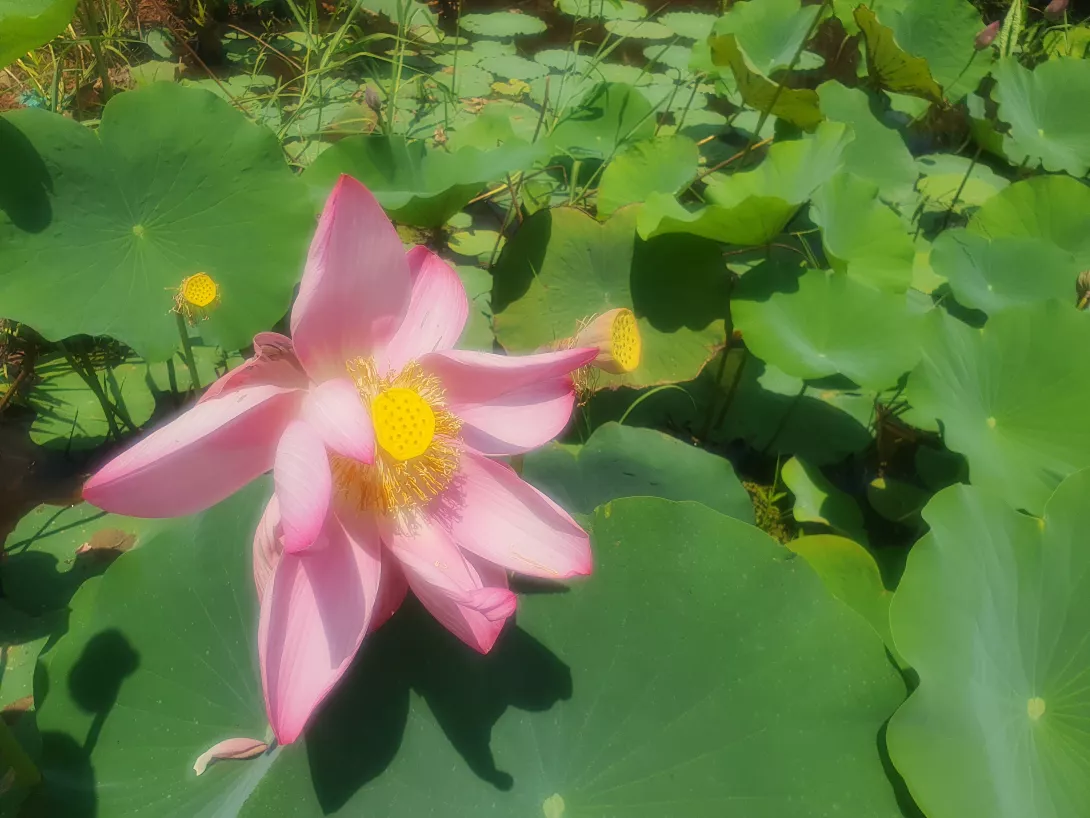
Comments